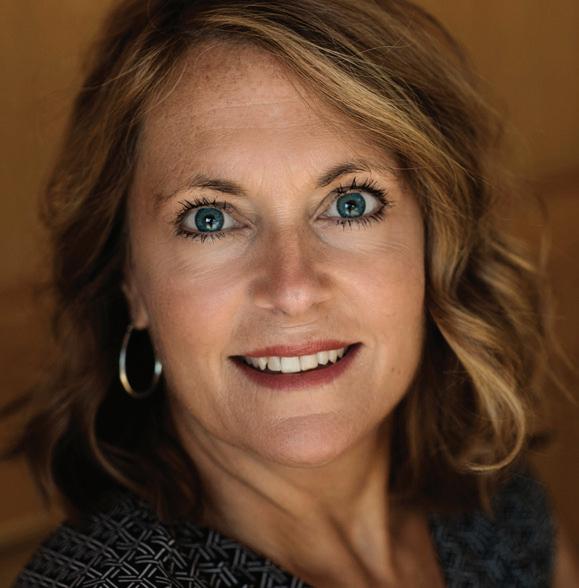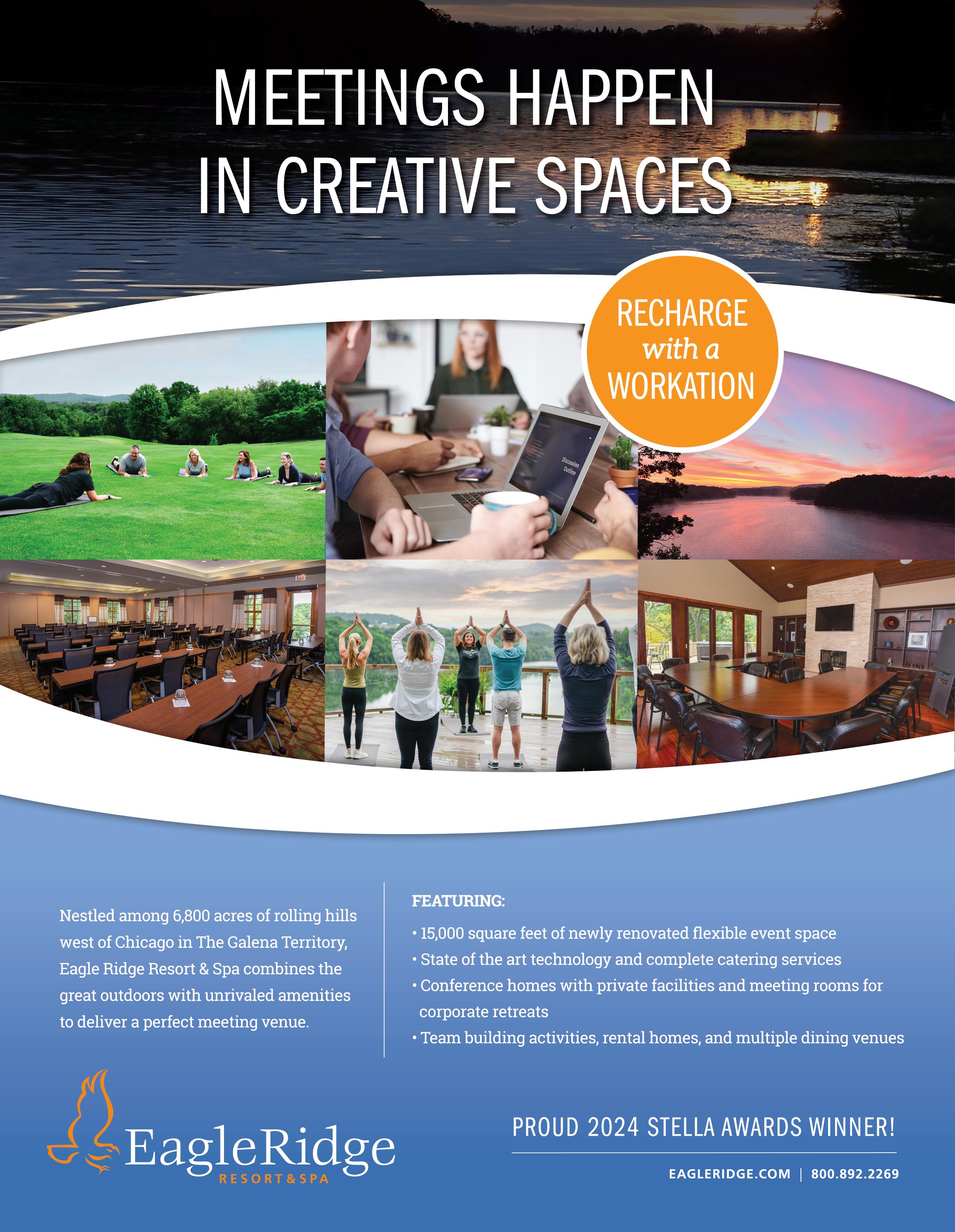CVBS AND PLANNERS: A MEETING OF THE MINDS

» CONNECTING EVENTS ACROSS THE COUNTRY
» BEYOND THE BOARDROOM: EXPERIENTIAL TEAM-BUILDING


» CONNECTING EVENTS ACROSS THE COUNTRY
» BEYOND THE BOARDROOM: EXPERIENTIAL TEAM-BUILDING

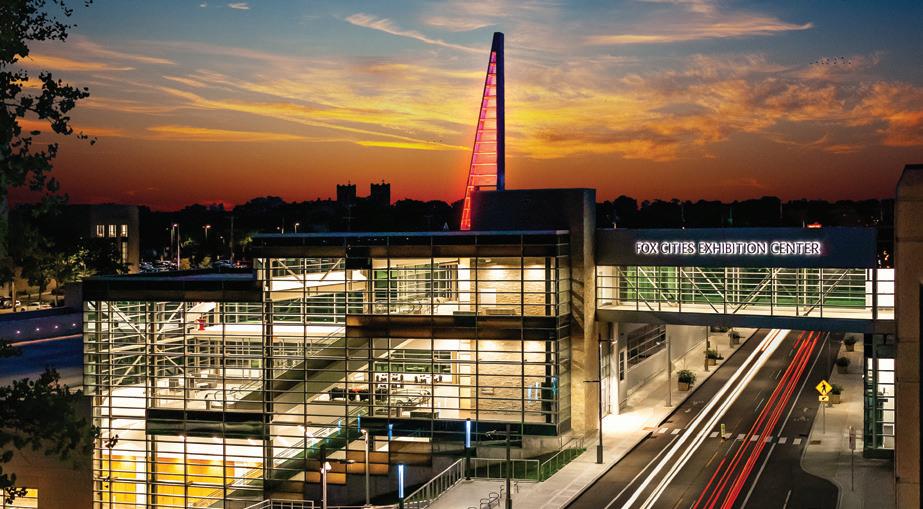
Start planning for your next meeting or event in the Fox Cities. With a wide variety of spaces and places, we have the perfect venue to inspire any group to get down to business.
Looking for a modern, state-of-the-art option with room for a crowd? Check out the Fox Cities Exhibition Center— 38,000 square feet of thoughtfully designed space built right into the hillside of Downtown Appleton.
We are pleased to offer incentives starting at $1,000 for group bookings made in 2025 and beyond.


Kick boring to the curb and host your team retreat, celebratory drinks, dinner and any other group activity at the Geronimo location of your choice. Our meetings are anything but business as usual.

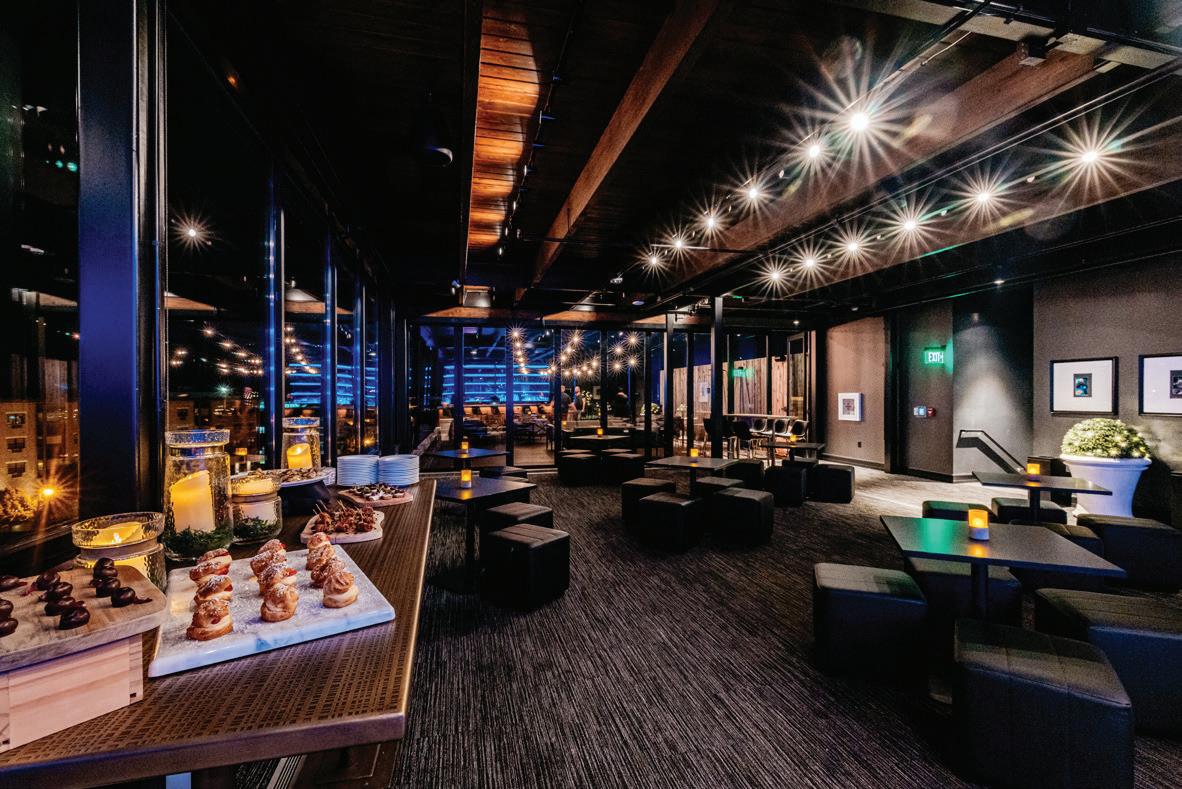
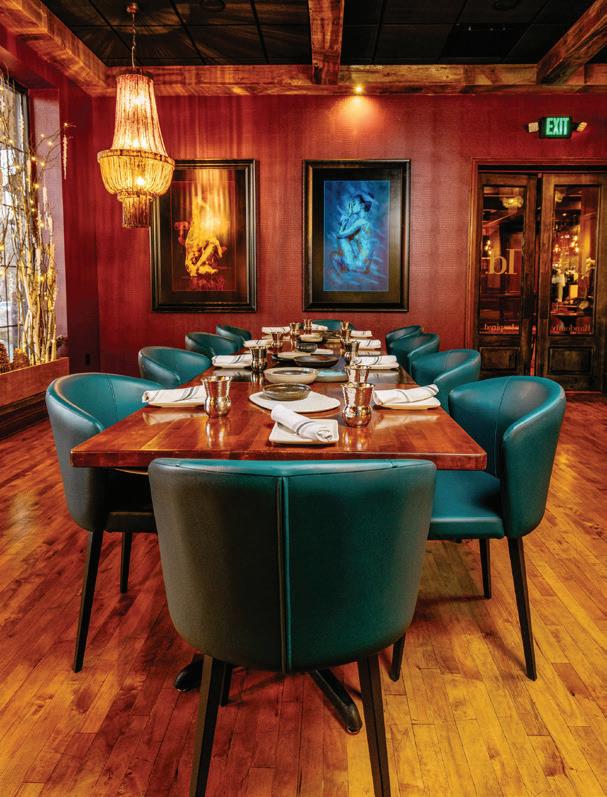


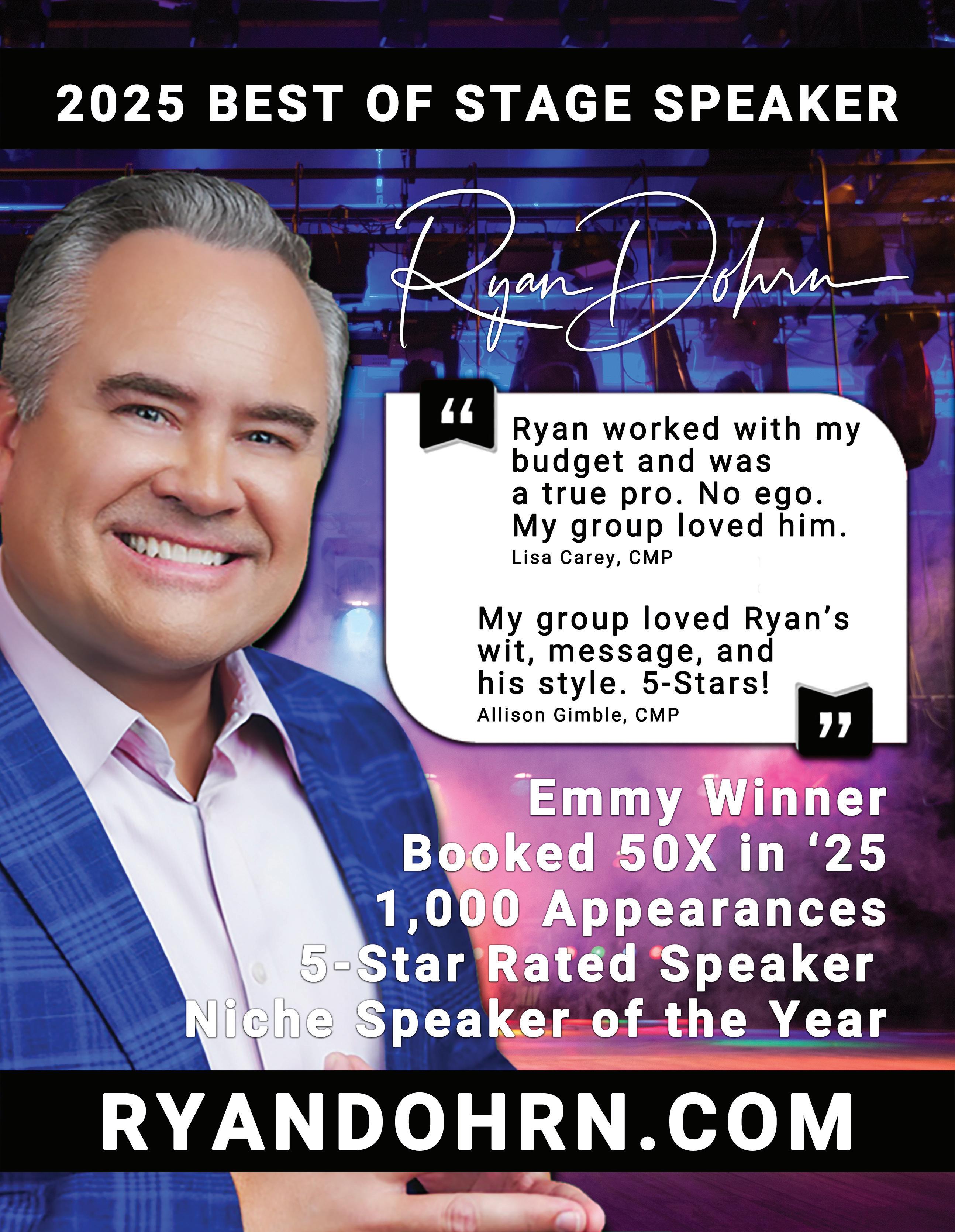

Brush
from destinations, suppliers and CVBs.
Upping the Ante
More planners are leveraging casinos for corporate meetings and events.
Attracting and Retaining Planners with Strategy Analytics can inform benefits strategies to counter planners’ staffing woes.
Meaningful Metrics
Get the most out of your data for both current and future events.
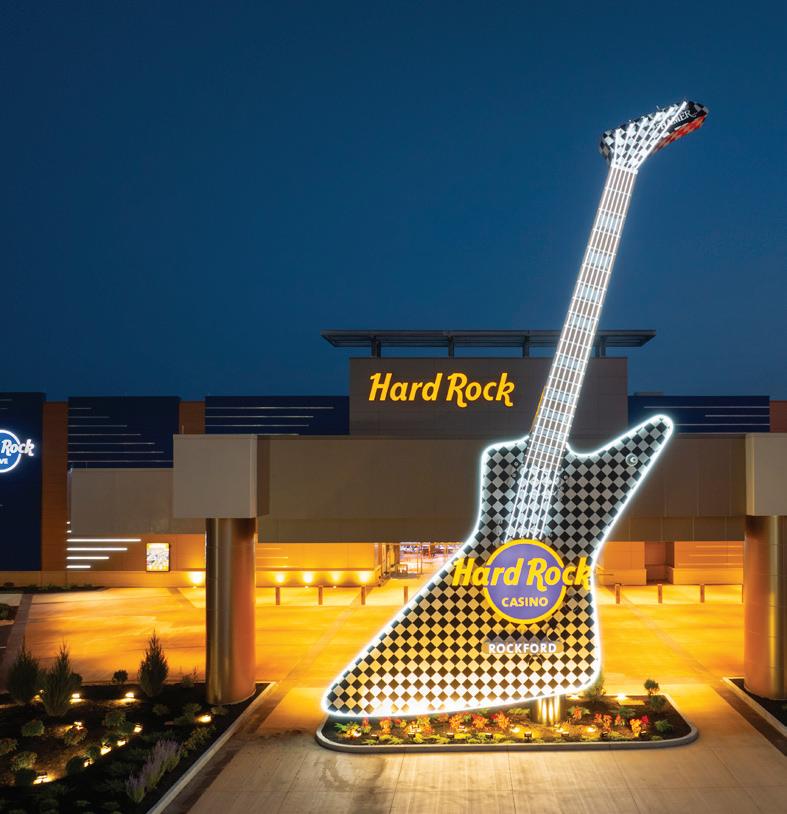

Here are some timeless tips to consider.
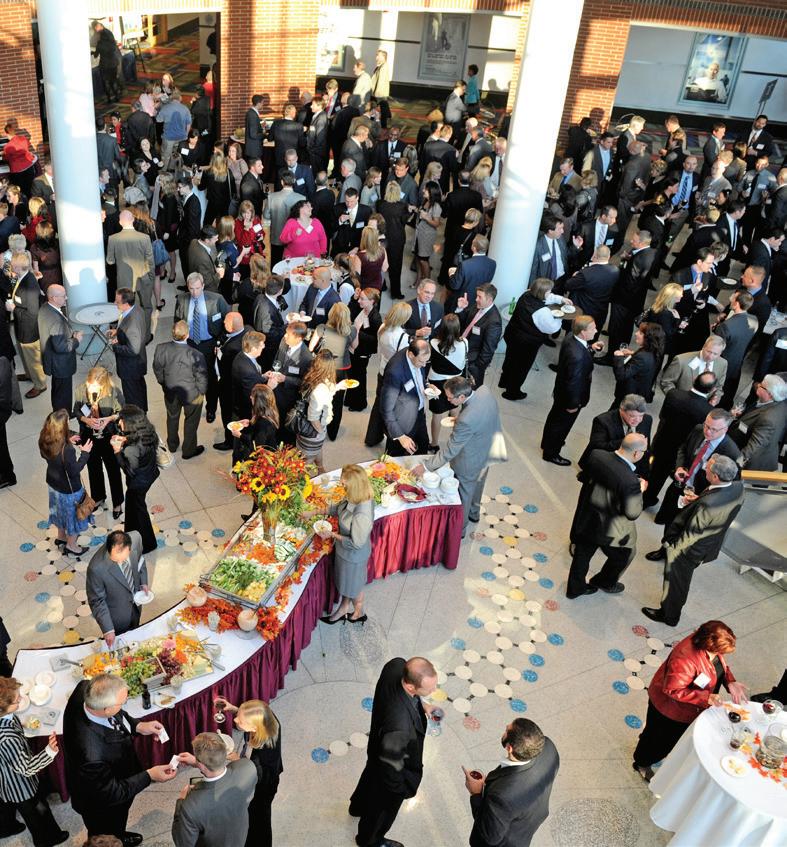

Crafting experiential team-building experiences brings groups together in novel ways.

Meeting and event planners are seeking more collaboration than ever from their CVBs, making them an extension of their team and more of a strategic partner in the process.
Find out how to assess whether your event requires an interpreter, then how to identify the right one.
More planners are hosting multi-city events, bringing people together across state lines and time zones.
The updated CMP exam equips planners with the skills they need to succeed in today’s evolving event landscape.
The destination rolled out the red carpet for chips manufacturers, AI researchers, students, and business owners and leaders.

Hello, readers,
As we cozy up to the crisp beauty of fall and, soon, the iridescence of winter in the Midwest, it’s the perfect time to reflect on how our industry continues to evolve — and thrive — here.
Despite the obstacles, our meeting and event professionals continue to prove that creativity, adaptability and collaboration are the cornerstones of success.
As a new year approaches, the meetings and events industry is entering a new era of confidence, according to the 15th Annual Global Meetings and Events Forecast by American Express Global Business Travel. The report reveals that optimism among professionals has reached its highest level in five years, with 85% expressing optimism about the year ahead, up from 74% in 2025.
In the Midwest, that optimism is easy to understand. Our region’s collaborative spirit, adaptability and strong sense of community make it the ideal place for connections to grow.
The report also concludes that improving attendee experience remains meeting professionals’ top priority for 2026 (33%), signaling a continued shift from focusing solely on return on investment to emphasizing a return on experience, and that today’s attendees crave more active participation, with 42% wanting interactive sessions like workshops and demonstrations.
The Midwest is uniquely positioned to meet these demands. Our destinations combine authentic experiences, exceptional hospitality, and spaces designed to inspire both engagement and collaboration.
Our features dive deeper into what makes meeting in the Midwest so special — the people. Whether it’s planners partnering more closely with their CVBs as strategic allies (Page 36) or teams coming together through creative, experiential activities that strengthen connections (Page 28), the Midwest approach to meetings is grounded in authenticity and shared success.
We’re also tackling the challenges planners face in a competitive environment. From leveraging analytics to build stronger benefits strategies that attract and retain talent (Page 18) to making smarter use of event data for future planning (Page 22), this issue is filled with ideas to help planners stay a step ahead.
And if your goal is to create more personalized, attendee-focused experiences, Page 24 offers simple yet impactful ways to make every event feel tailor-made.
The Midwest isn’t just keeping pace with the industry’s dizzying evolution — it’s helping lead it. Together, we’re proving that when innovation meets heart, extraordinary things can happen.
All the best,
MidwestMeetings.com Volume: 34 Issue: 3
Publisher Barb Krause bak@ntmediagroup.com
Editor Carrie Mantey cmantey@ntmediagroup.com
Graphic Design Jerriann Mullen jem@ntmediagroup.com
Advertising Coordinator Amy Jacobs ads@ntmediagroup.com
Advertising Sales Manager Steve Van Maanen steve@ntmediagroup.com
Advertising Sales Manager Cindy Smith csmith@ntmediagroup.com
Digital Director Kristen Rouse krouse@ntmediagroup.com
Accounting Nadine Seitz accounting@ntmediagroup.com
Printing by Sheridan
Midwest Meetings is a publication of Nei-Turner Media Group Inc. Gary E. Nei, Chairman; William Turner, President
Midwest Meetings is distributed via direct mail three times per year to professional meeting planners; corporate executives; social, military, educational, religious and fraternal organizations; corporate travel agents; sales and marketing executives; and association executives by Nei-Turner Media Group Inc., 400 Broad St., Unit D, Lake Geneva, WI 53147. Volume 34, Issue 3 is dated November 2025.
Nei-Turner Media Group Inc. publishes Chicago Style Weddings, At The Lake, Lakeshore Living, BRAVA and custom publications about Midwestern states.
©2025 Nei-Turner Media Group Inc. Except for purposes of review, material contained herein may not be reproduced without prior written consent. Printed in the USA.

Member of Meeting Professionals International TO RECEIVE COPIES: MidwestMeetings.com (262) 729-4471 nadine@ntmediagroup.com
Carrie Mantey Editor, Midwest Meetings cmantey@ntmediagroup.com
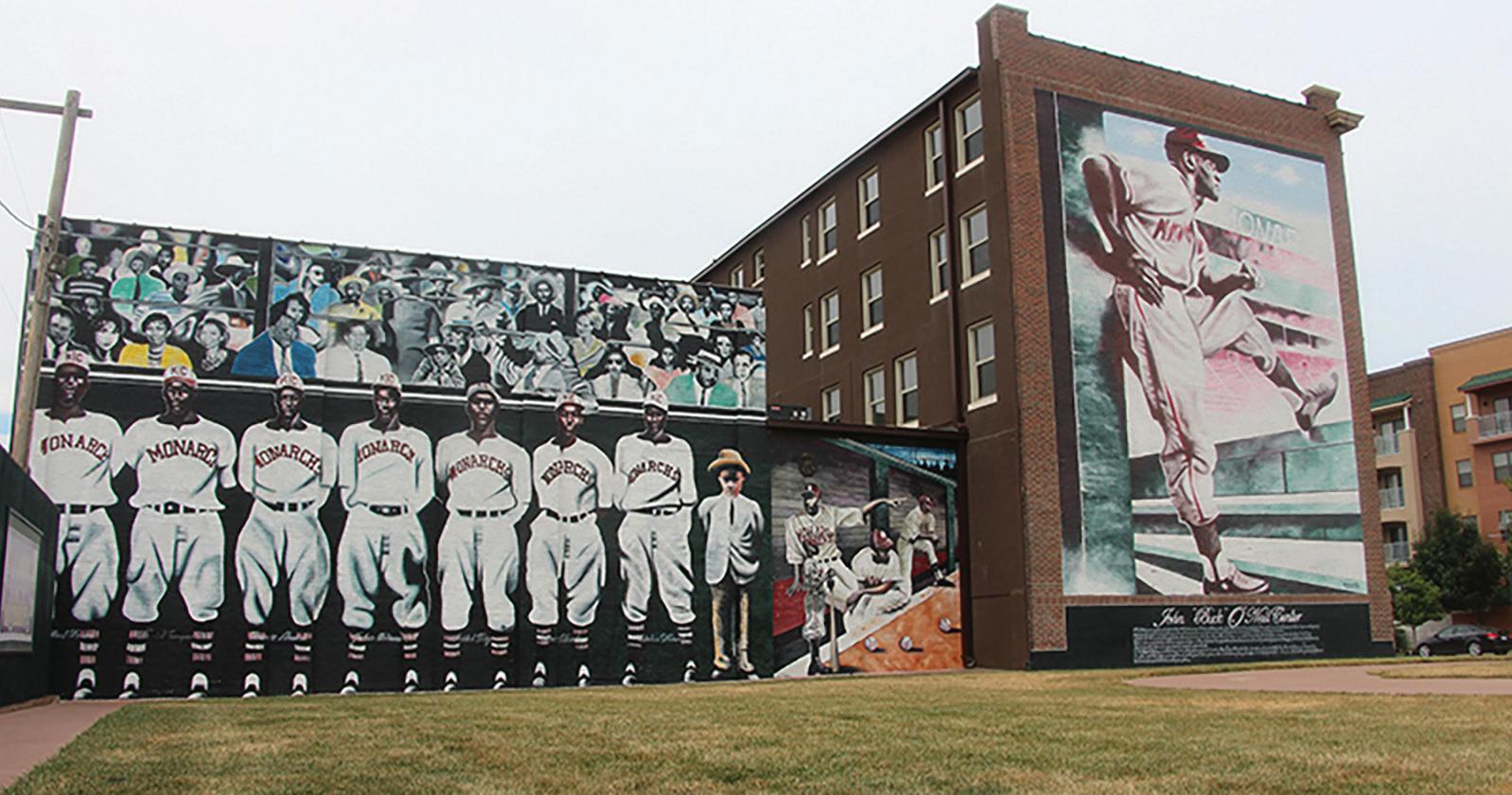
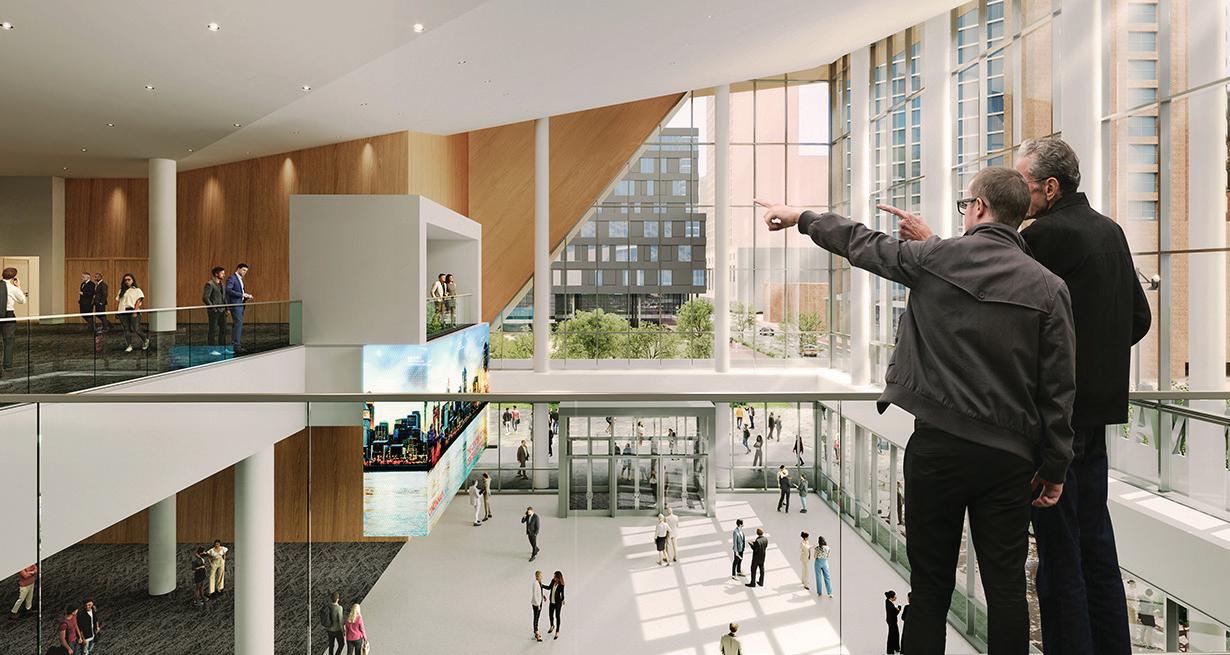
Geronimo Hospitality Group 4, 5
Walton County Tourism 20, 21
Eagle Ridge Resort & Spa 132
Effingham Convention & Visitors Bureau 72 Explore Elgin Area 70 Springfield Convention & Visitors Bureau 71 Visit Lake County Illinois 70
French Lick Resort 75
Grand Wayne Convention Center .. 80, 81
Greater Kokomo Visitors Bureau 78, 79
Hamilton County Tourism 76, 77
Harrison County Convention & Visitors Bureau 82
Indiana State Park Inns 83
Terre Haute Convention Center .............. 74
Meskwaki Bingo Casino Hotel 17
Okoboji Tourism 43
AHC Hospitality 88, 89
Choose Lansing ....................................... 97
Discover Holland Michigan 86, 87
Experience Grand Rapids 90, 91 Flint & Genesee Group ................... 94, 95
MotorCity Casino Hotel 92, 93
Visit Muskegon 85
Visit Southwest Michigan ....................... 96
Owatonna Area Chamber of Commerce & Tourism 41 Visit Greater St. Cloud 37 Visit Duluth ............................................... 45
Willmar Lakes Area Convention & Visitors Bureau 51
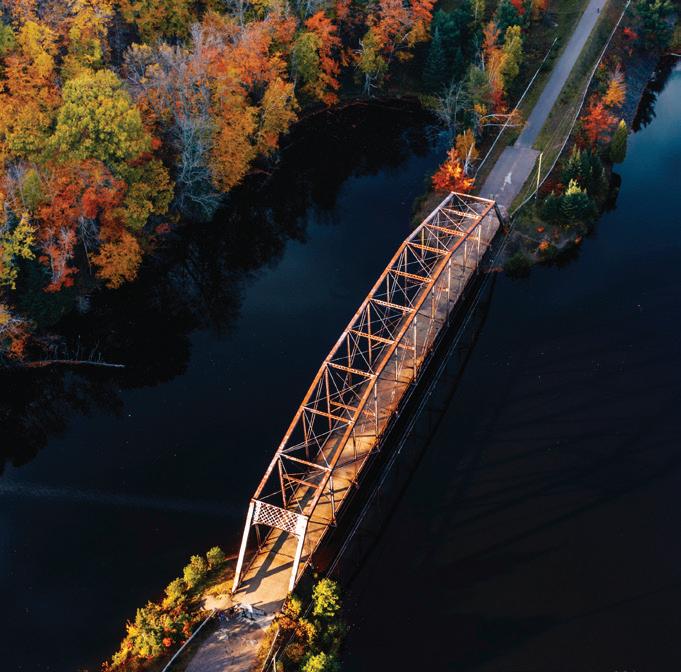
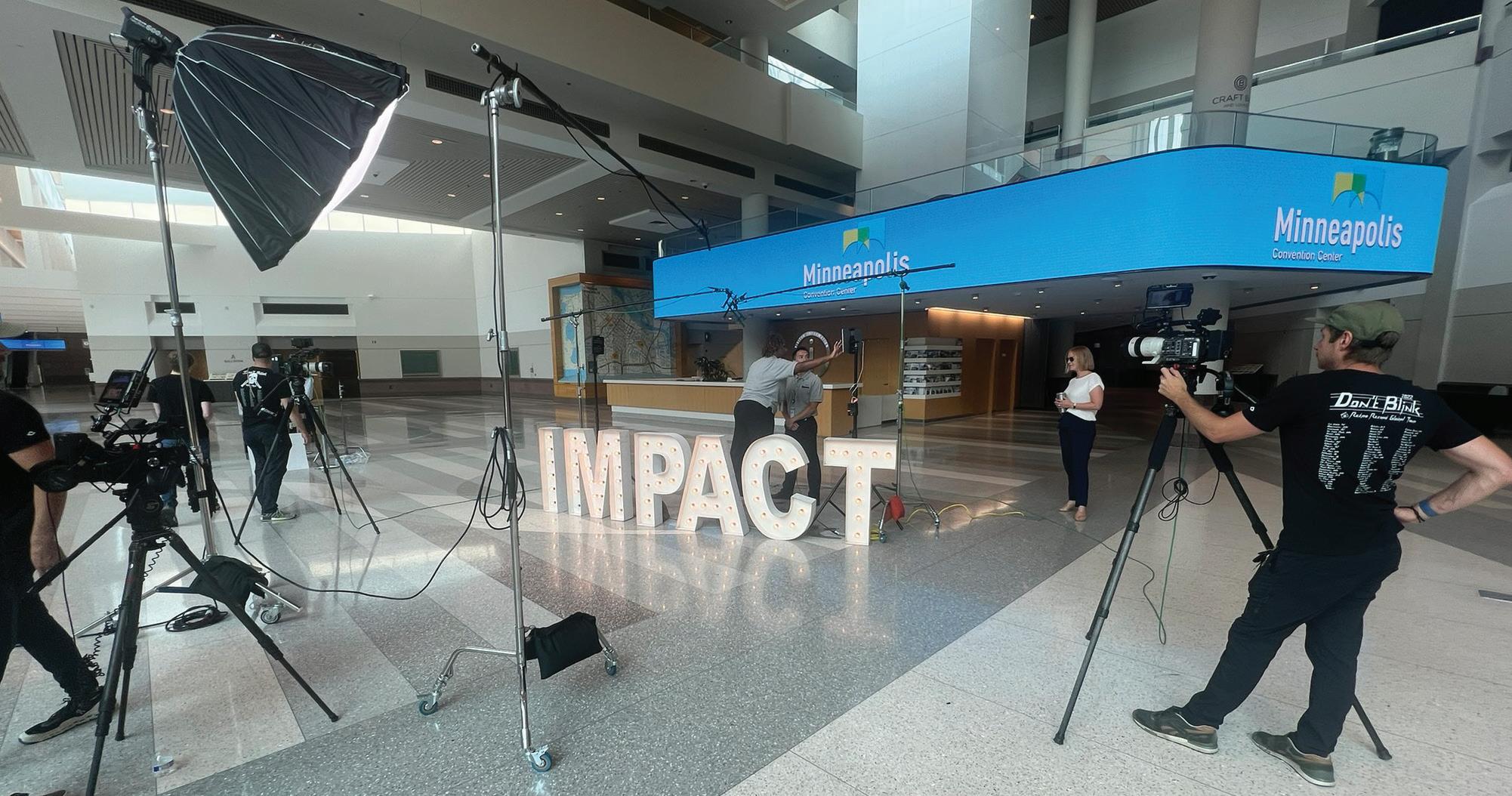

The Minneapolis Convention Center was recently recognized as one of North America’s best-managed venues, earning a 2025 Venue Excellence Award by the International Association of Venue Managers. The award recognizes the center’s achievements in operational excellence, safety and security, professional development and community service. The Minneapolis Convention Center is one of five venues to receive this year’s recognition.
In 2024, nearly 200 events at the Minneapolis Convention Center and more than 719,000 attendees helped sustain over 10,000 tourism and hospitality jobs in the community. In addition, the convention center generated an estimated economic activity of $523 million for Minneapolis.
The award submission highlighted several areas of the center’s success:
• Seamless event execution through cross-departmental collaboration, real-time client support and continuous process improvement, resulting in consistently strong client satisfaction.
• Zero Occupational Safety and Health Administration incidents across nearly 300,000 work hours in 2024. The staff was also supported by renewed law enforcement partnerships, real-
time emergency response tools and comprehensive staff training.
• Professional development through hands-on training, entry-level career pathways, long-running internship programs, cultural awareness education, equitable hiring practices and national certification opportunities.
• Community service via food recovery, rental grants, educational tours and philanthropy.
• Environmental stewardship by being 100% renewable energypowered, a 60% recycling rate and an 85% reduction of greenhouse gas emissions since 2008.
This marks the third time the center has received this award, previously winning in 2014 and 2018.
The meetings and events industry is entering a new era of confidence and digital transformation. Professional optimism has reached its highest level in five years, with 85% of respondents saying they are optimistic or very optimistic about the year ahead — up from 74% from 2025, according to the 15th Annual Global Meetings and Events Forecast by American Express Global Business Travel, the travel, expense, and meetings and events software and services company.
At the heart of this shift, artificial intelligence (AI) has moved from an
emerging technology to an essential tool for 2026, with 50% of industry professionals now integrating AI throughout event planning and execution. AI is already helping organizations unlock creativity, streamline operations and elevate attendee experiences. From generating content and themes to tracking engagement and sentiment, the technology can help meetings professionals optimize budgets and deliver measurable impact.
The most anticipated AI use cases for the year include:
• Connection, aiding with event communications (35%), and AI-powered matchmaking for attendees and sponsors (35%).
• Content, aiding with creative theme generation (34%) and content creation (31%).
• Measurement, aiding with engagement tracking (31%).
Improving the attendee experience remains meeting professionals’ top priority for 2026 (33%). Planners have long strived to measure return on investment, but that is giving way to the return on experience (ROE) as a metric. With much of the value of meetings and events tied to the impact they deliver, understanding ROE more accurately pinpoints how an event delivered against its objectives.
AI is essential for ROE, enabling event monitoring via badge scans and session check-ins, and transforming behavioral data into actionable insights. Adoption of AI is trending up with 28% of meeting professionals planning to use it for post-event evaluation in 2026.
To create truly memorable events, it’s crucial to encourage attendees to be active participants rather than spectators. Compared to five years ago, attendees today crave active engagement, with 42% wanting more interactive sessions, such as workshops or demos. This was closely followed by the desire for more social activities and networking opportunities (40%).
Groups360, a hotel booking and attendee management solutions provider, recently agreed to launch instant online booking capabilities for groups with Hyatt, with the addition of Hyatt properties to the GroupSync Marketplace, in early 2026. Through direct integration with Hyatt’s systems, organizers will gain real-time access to group room and meeting space rates and availability. This advancement streamlines booking, reduces reliance on traditional requests for proposal, and allows participating Hyatt properties to offer faster, more seamless service.
By deploying live inventory and group rates within GroupSync Marketplace, Hyatt will save planners time by allowing them to filter and search using real-time room rates and availability. Once a property is selected, planners may instantly book rooms, event space or both, as well as food and beverage needs and audiovisual equipment, all in a single transaction. For larger or more complex events, planners may still elect to send a traditional request for proposal through GroupSync’s proprietary streamlined process.
Planners can already access select Hyatt properties in GroupSync for streamlined request for proposal submissions. Starting in early 2026, participating Hyatt properties will also unlock instant online booking for planners to secure group rooms and meeting space in real time. With the addition of Hyatt, organizers will have more options for instant online booking on GroupSync across 32,000 cities.
Destination Cleveland recently announced the city’s selection as host of the 2028 National Coalition of Black Meeting Professionals Annual Conference, the largest annual gathering for Black meeting professionals. Among those who attend are planners and association leaders
charged with selecting destinations for their own meetings and events. The National Coalition of Black Meeting Professionals Conference will bring an estimated 550 attendees to Cleveland for educational seminars, networking events and special programming.
The city’s selection as the National Coalition of Black Meeting Professionals’ 2028 host underscores its growing appeal as a meeting and convention host. In 2025, Destination Cleveland will have welcomed over 300 meetings and conventions; its sales team is currently booking as far as 2031.
Meet Chicago Northwest, the official convention and visitors bureau for the Northwest suburbs of Chicago, recently welcomed Jenny O’Brien as its new partnership and service manager. Her past experience as both a tourism professional and a business owner gives her valuable perspective on partner relations and community development. Meet Chicago Northwest serves Itasca, Arlington Heights, Elk Grove Village, Rolling Meadows, Roselle, Schaumburg, Streamwood and Wood Dale.
Travel Marquette recently launched a series of 360-degree accessibility videos, expanding its online accessibility guide, and offering an interactive way to explore local hotels, restaurants, businesses and outdoor recreation sites. The guide, available on mobile devices, provides detailed information on how Marquette County businesses accommodate visitors with wheelchairs and other mobility needs. The videos permit planners to interact with businesses virtually, preview spaces in detail and better anticipate potential accessibility barriers.
Chicago has once again been crowned the Best Big City in the U.S. in the

Condé Nast Traveler Readers’ Choice Awards, the ninth consecutive year the metro has claimed the title. Events are a key component of its visitor economy, generating over $3 billion in economic activity last year and introducing hundreds of thousands of new visitors to the city. Chicago’s meetings and conventions infrastructure remain key to its appeal. From McCormick Place to Navy Pier to theaters, banquet halls, sports arenas and easily accessible airports, the city’s capacity to host events of all sizes and profiles continues to lure leisure and business guests.
Visit Milwaukee is introducing what it believes to be the first AI-powered augmented-reality sales representative on a trade show floor. The immersive experience, Ask LeRoy, debuted at Connect Marketplace in Miami Beach. Visitors scan a QR code and see Pro Football Hall of Famer LeRoy Butler appear as a lifelike 3D avatar. Once he “arrives,” he greets guests, shares meeting capabilities, answers venue questions, and recommends local dining and attractions. These responses are AI-generated based on data from Visit Milwaukee.
The Ask LeRoy experience will accompany Visit Milwaukee to trade shows and appear in key locations in the greater area. Butler starred as a safety for the Green Bay Packers, played in Super Bowl XXXI and was inducted into the Pro Football Hall of Fame in 2022. Today, he is a proud Milwaukeean, making him the ideal ambassador.
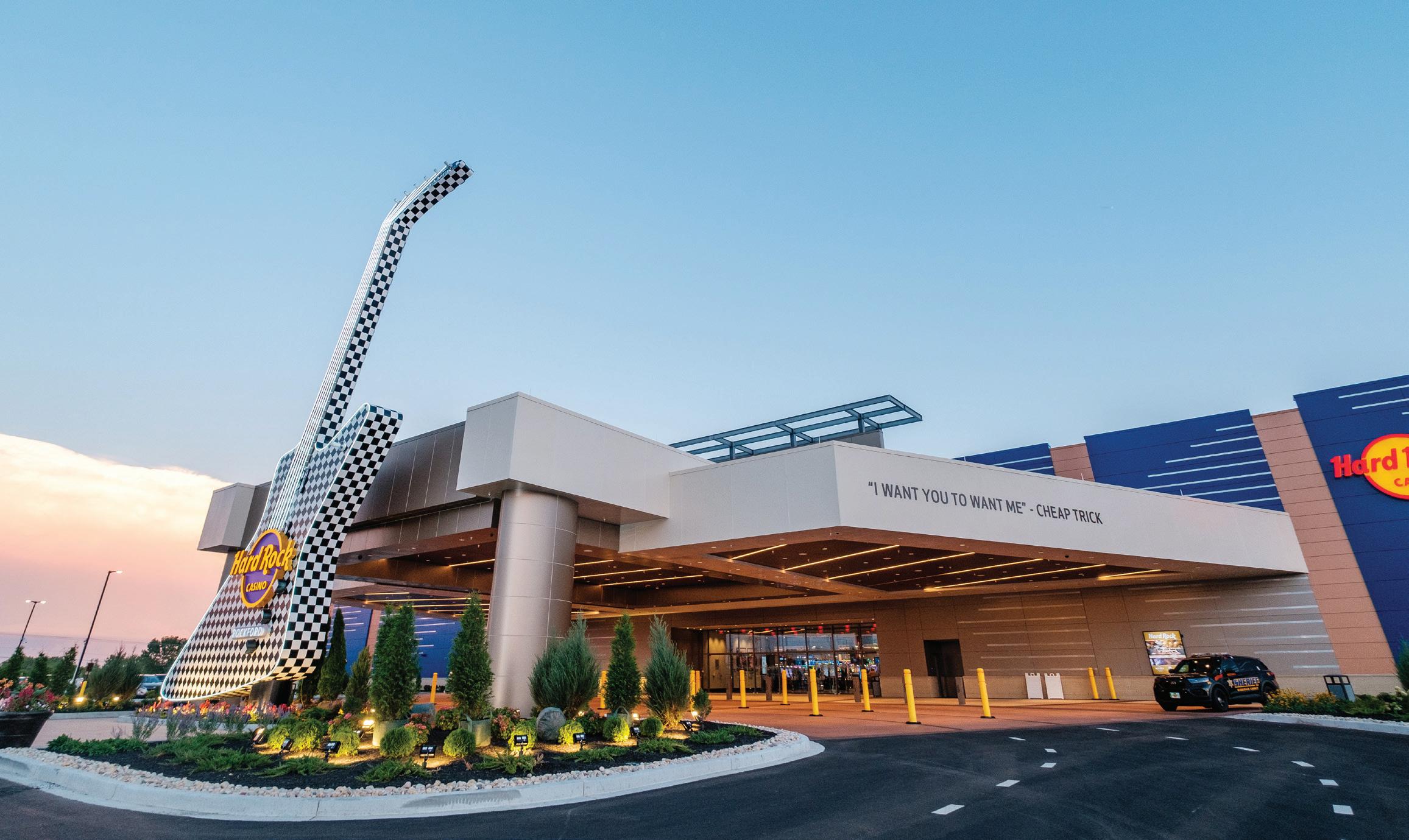
More planners are leveraging casinos for corporate meetings and events.
BY CATHERINE MCCOY
Colder weather is upon us, and meeting and event planners across the Midwest are looking for the right indoor space for both small- and largescale events. Year over year, casinos continue to be a great option for corporate and non-corporate gatherings, given the opportunity to scale and customize to create a personal escape.
While planning a casino event in Las Vegas may be tempting amid frigid Midwest winters, there are numerous, highly regarded casinos here that provide the personalization and hospitality to plan a great event. With a warm and vibrant environment, Midwest casinos are continuing to evolve into full resort destinations, providing versatile event spaces, immersive experiences and amenities that rival larger city venues, all while remaining accessible and affordable for regional groups.
As Tammy Gray, the marketing manager of Q Casino + Resort, explains, “Casinos thrive on creating energy year-round. At Q Casino + Resort, we keep
the atmosphere engaging with live entertainment, special promotions, gaming and seasonal events. Guests can transition seamlessly from a business meeting to dinner, a live show or gaming on the casino floor.”
There are numerous casino venues, flexible enough to meet planners’ unique needs and practical enough to streamline logistics planning, at your disposal. Because of their adaptability and scale, there are numerous benefits to using these destinations to make an engagement memorable.
Perhaps one of the most beneficial parts of meeting and event planning at a casino is the seamless integration of all the event components.
With everything on site, from lodging and catering to entertainment and gathering spaces, coordinating logistics is not only simplified, but even facilitated by on-site staff ready and available to assist. It’s especially advantageous for regional attendees
Casinos thrive on creating energy year-round.
At Q Casino + Resort, we keep the atmosphere engaging with live entertainment, special promotions, gaming and seasonal events. Guests can transition seamlessly from a business meeting to dinner, a live show or gaming on the casino floor.
— TAMMY GRAY, Q CASINO + RESORT
who do not want to deal with the hassle of extensive travel.
The amenities at casinos can range from casual to upscale, featuring gaming, private party rooms, dining outlets and more. On-site entertainment and gaming make casinos fun for each guest, giving them something unique to remember during their stay.
Casinos also often come with a large footprint, which can be daunting for event planners looking to host a space for groups to connect. However, this scale can also work to planners’ advantage, as the conference space can be adapted to be as large or as intimate as needed. For example, Q Casino + Resort’s newly updated event space,

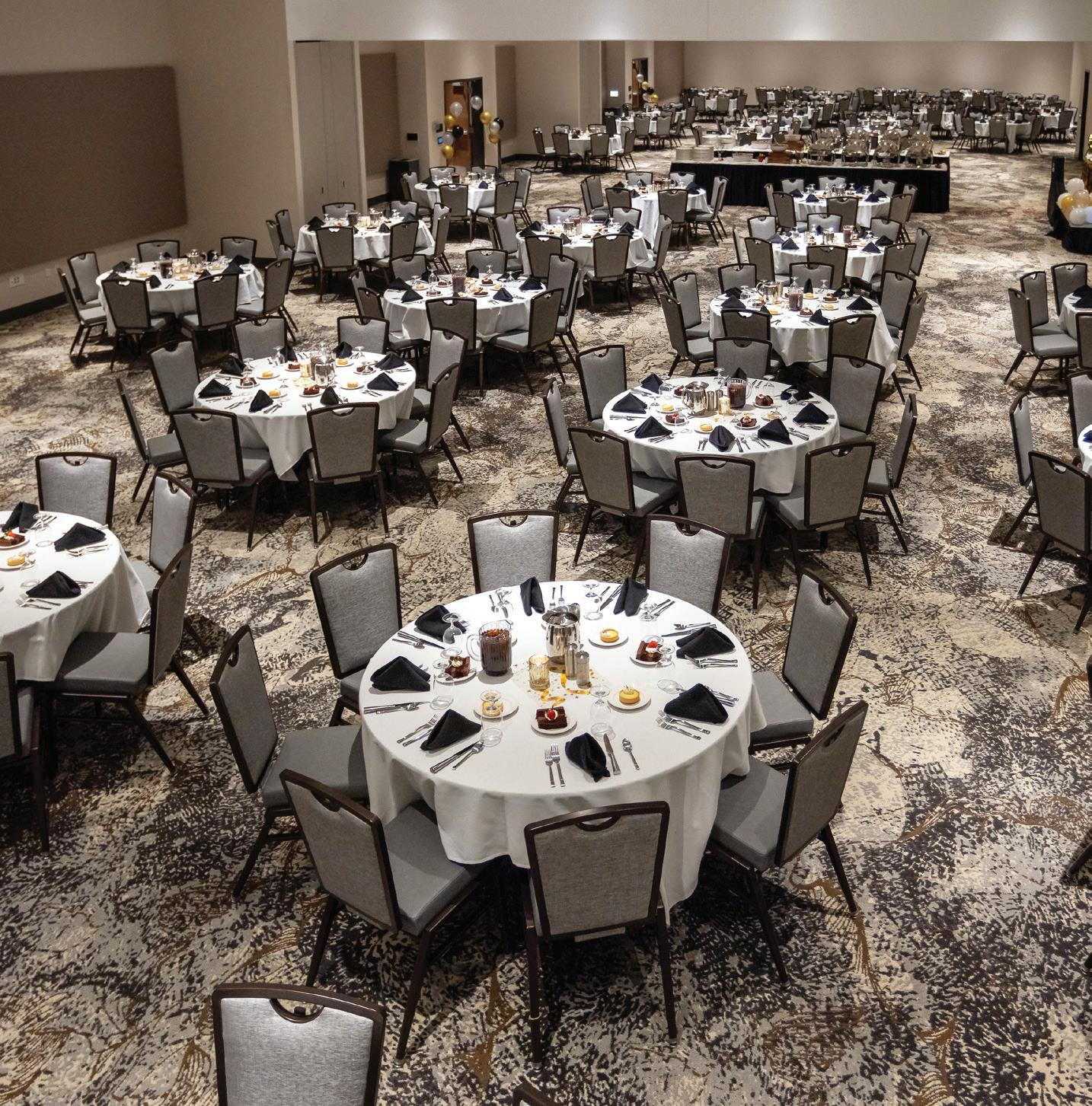

Thinking that a casino may be the ideal spot for your next corporate or large-group event this winter? Here are a few best practices to consider when booking with one of the various casinos across the Midwest.
Is the event a fundraising gala that would be best finished with elegant décor and custom catering? Is it a company retreat where it is important to have access to gaming and live entertainment? Meeting planners should get a firm grasp of the type of event guests want to experience and then leverage the team of experts at their disposal. Casinos’ wide array of amenities is available for a reason, helping the team bring the event beyond a conference ballroom.
How many guests will be traveling in for the event and how many will need to stay the night? Work with the on-site team to discuss booking rooms, coordinating group rates and managing any other accommodations needed. The earlier you begin to coordinate, the more likely you’ll be able to take advantage of customizable packages and branded offerings.
Ultimately, the goal is to execute the event that the group set out to achieve, so do what is needed to keep guests dialed in during the meeting. Provide a robust agenda, coordinate interactive sessions and keep the organization’s personal touch threaded through all of the event components. When it is time for a break, clearly communicate how attendees can use the gaming and entertainment offerings as a chance to connect with one another and build team camaraderie.
called Reflections, features over 6,600 square feet of elegant, flexible space that can be adapted when necessary.
In offices across the country, modern employees and teams are looking for more opportunities to combine work and play, integrating work experiences with team building and work-life balance. Corporate events are no exception: With an increased demand for multi-experience spaces, wellness and personalization are becoming bigger priorities for planners, too.
Casinos are ideal to meet this demand, as most are equipped with the on-site resources (spa, anyone?) and variety to create a fun, curated atmosphere. Personalization examples include customizing menus, personalizing lighting, or coordinating team tournaments or arcade challenges, though this only scratches the surface.
“Our professional guests want more than just a meeting space,” says Lorie Moran, the director of banquets and entertainment at Hard Rock Casino Rockford. “Hard Rock Casino Rockford offers gaming within its conference space, a unique casino offering. We’re able to set up the room to expertly combine business and pleasure, saving time, and helping plan and control the experience for our corporate clients.”
Factoring location, pricing, amenities and on-site entertainment, the following regional casinos may be the right fit for your event this fall or winter.
With a brand recognized around the world, Hard Rock Casinos can be found across the country, with five in the Midwest alone. Hard Rock Casino Rockford is one of the newest, located immediately off the I-90 State Street exit in Rockford. It boasts more than 175,000 square feet of gaming, entertainment and hospitality space. Rockford has a deep appreciation for music, arts and community, making it an ideal location for this new, lively venue.
“Rockford was a natural fit for Hard Rock’s expansion, thanks to its rich cultural heritage, strong regional identity and growing economic momentum,” explains Moran. “The city’s location is strategically positioned between Chicago, Madison and Milwaukee, which makes it a regional hub with easy access for visitors across the Midwest and beyond.”
Opened in August 2024, this newly built casino has multiple flexible event spaces that can accommodate groups from 20 to 700 guests, making it a suitable setting for everything from intimate employee gatherings to large-scale corporate celebrations. The venue has hosted a variety of events since its grand opening, such as a liquor industry trade show, a four-day conference for a worldwide manufacturer and even a large-scale fundraising gala for an NBA star.
A key element of Hard Rock Casino Rockford’s event space is the flexibility to transition from meeting areas to celebration hour. “Our casino property perfectly flows to allow event attendees to get the job done before kicking back to relax together,
building camaraderie and memories of a great event,” notes Moran.
As the next phase in the evolution of this recently opened casino, Hard Rock Casino Rockford is in the early planning stages of developing an on-site hotel, providing greater opportunity for guests to enjoy all that Hard Rock Casino Rockford has to offer. While the casino plans for this expansion, planners can book lodging with several partnering hotels within close proximity.
Hard Rock Casino Rockford has already hit the ground running since its opening, and scaling its accommodations will only allow it to increase its offerings and bolster the guest experience.
Dubuque offers a unique backdrop for Q Casino + Resort, blending historic charm with modern amenities, cultural attractions and easy regional access. Nestled just feet from the Mississippi
River, the casino offers a full range of event options, coordinating events that run the gamut in terms of size, sophistication and industry sector. The property stands out with its versatile event spaces, two on-site hotels, remodeled casino floor and Island Social restaurant for unique group outings.
Q Casino + Resort is located 15 minutes from Dubuque Regional Airport and within a two-hour drive from Dane County Regional Airport, providing visiting guests with convenient regional access. Guests also have access to onsite lodging, dining and entertainment, while you have access to an on-site planning team.
Q Casino + Resort is a great example of how gaming properties continue to offer warm, inviting spaces even through the Midwestern winter. Different spaces, like Reflections, can host elegant and formal events for corporate meetings or galas, while its Island Social space offers a more casual and playful setting. Island Social has more than 75 arcade games,
Our casino property perfectly flows to allow event attendees to get the job done before kicking back to relax together, building camaraderie and memories of a great event.
—LORIE MORAN, HARD
ROCK CASINO ROCKFORD
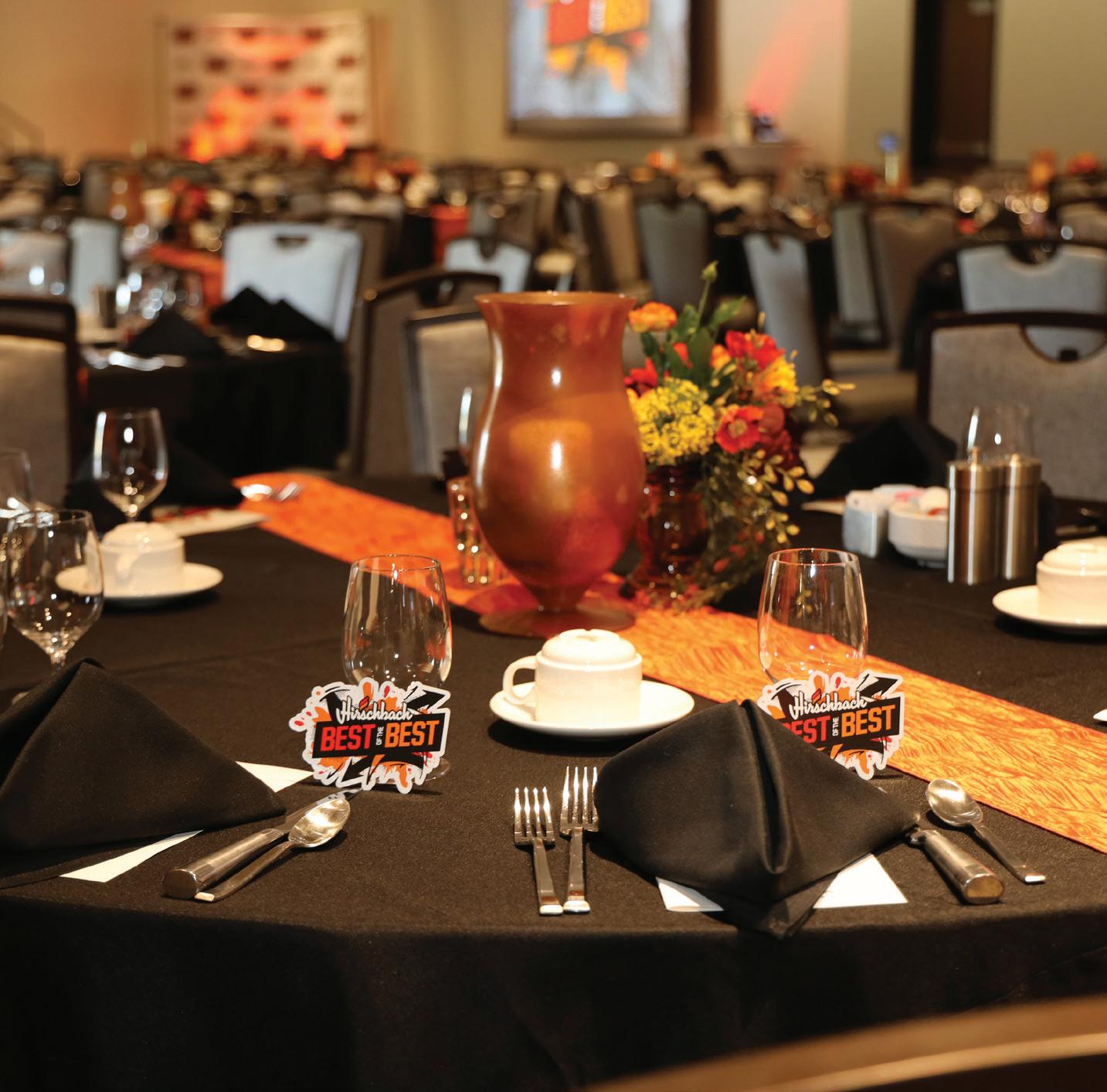

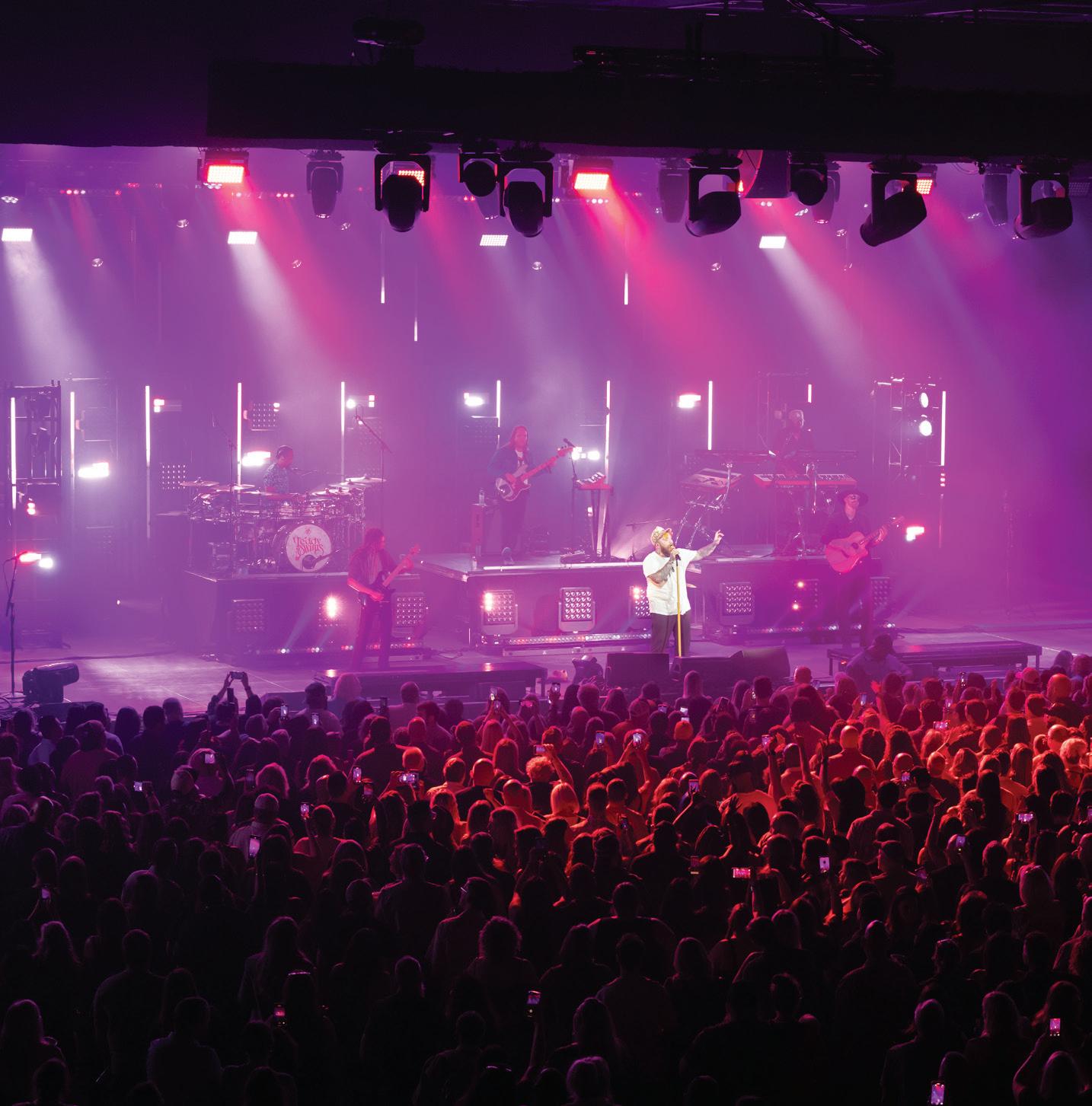
duckpin bowling, axe throwing and private party rooms.
Paired with two hotels, gaming, several dining outlets and full-service catering, Q Casino + Resort checks all of the boxes, making it a strong destination for any type of meeting or event.
Prairie Band Casino & Resort provides a staycation-like atmosphere for meeting or event guests, offering anywhere from 300 to 11,000 square feet of meeting space matched with versatile, highquality amenities. The casino has five on-site restaurants, a hotel equipped with over 360 rooms, live entertainment twice a month, a new indoor and outdoor pool, updated workout facilities, a full-service spa and more.
During the warmer weather months, guests can enjoy Firekeeper, a Par72 golf course regarded as the state’s number one public course. Tipping out at nearly 7,700 yards, the course has an engaging, challenging layout for golfers at all skill levels.
Until the winter thaws, Midwestern event planners can additionally enjoy Prairie Band’s Topgolf Swing Suite. The lounge has three bays and is located directly across the hall from Prairie Band’s meeting spaces, providing event attendees the “live, work, play” experience they hope to gain at a Midwestern meeting or event.
For planners seeking venues that balance versatility and convenience, Midwest casinos offer a winning hand. Consider partnering with some of these regional casinos to deliver the right event that meets your organization’s goals, while leveraging elevated, customizable experiences.
Catherine McCoy is a Milwaukeebased writer specializing in businessto-business and consumer content. She has contributed to a range of industry and lifestyle publications, covering topics from agriculture and business to design and community.
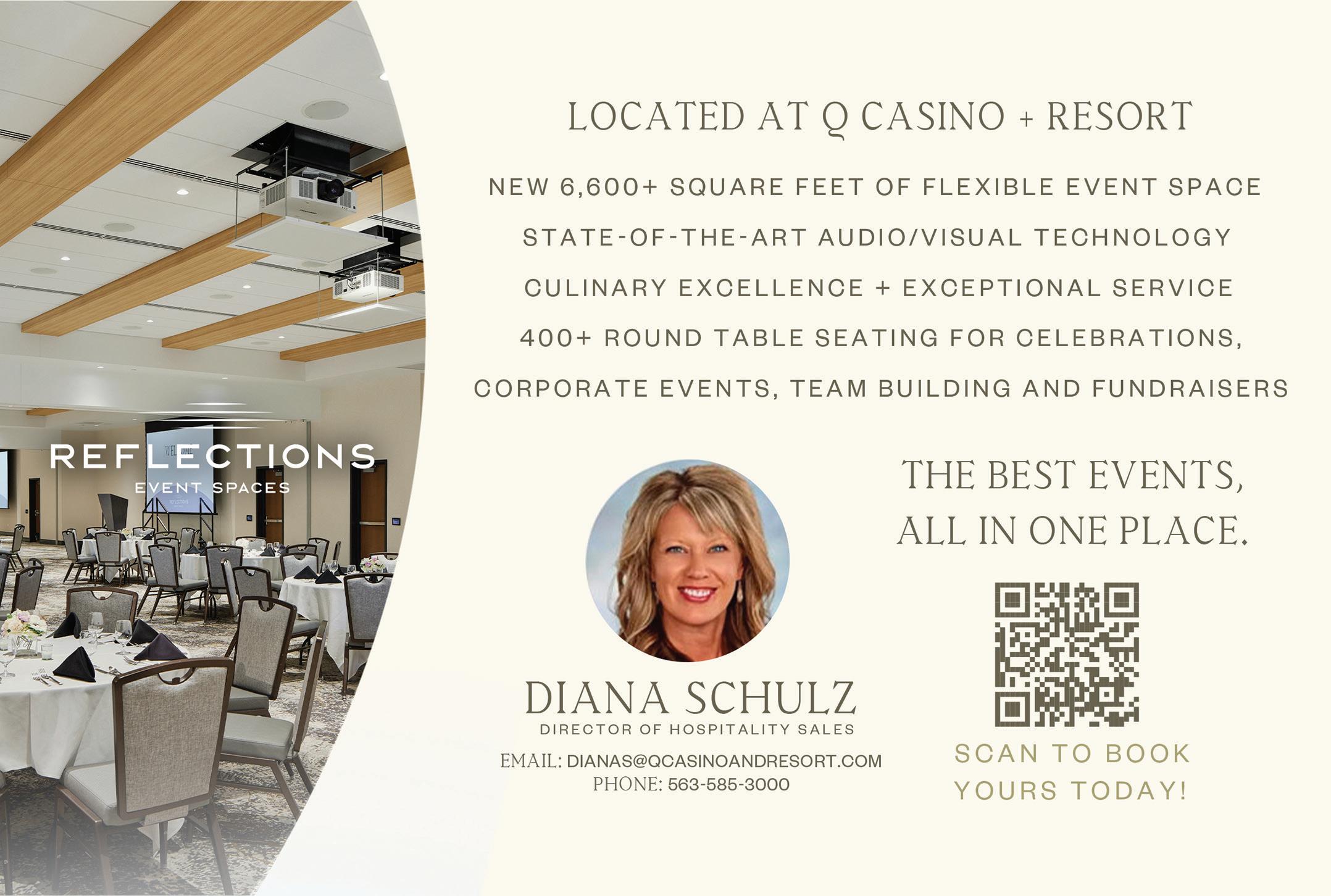
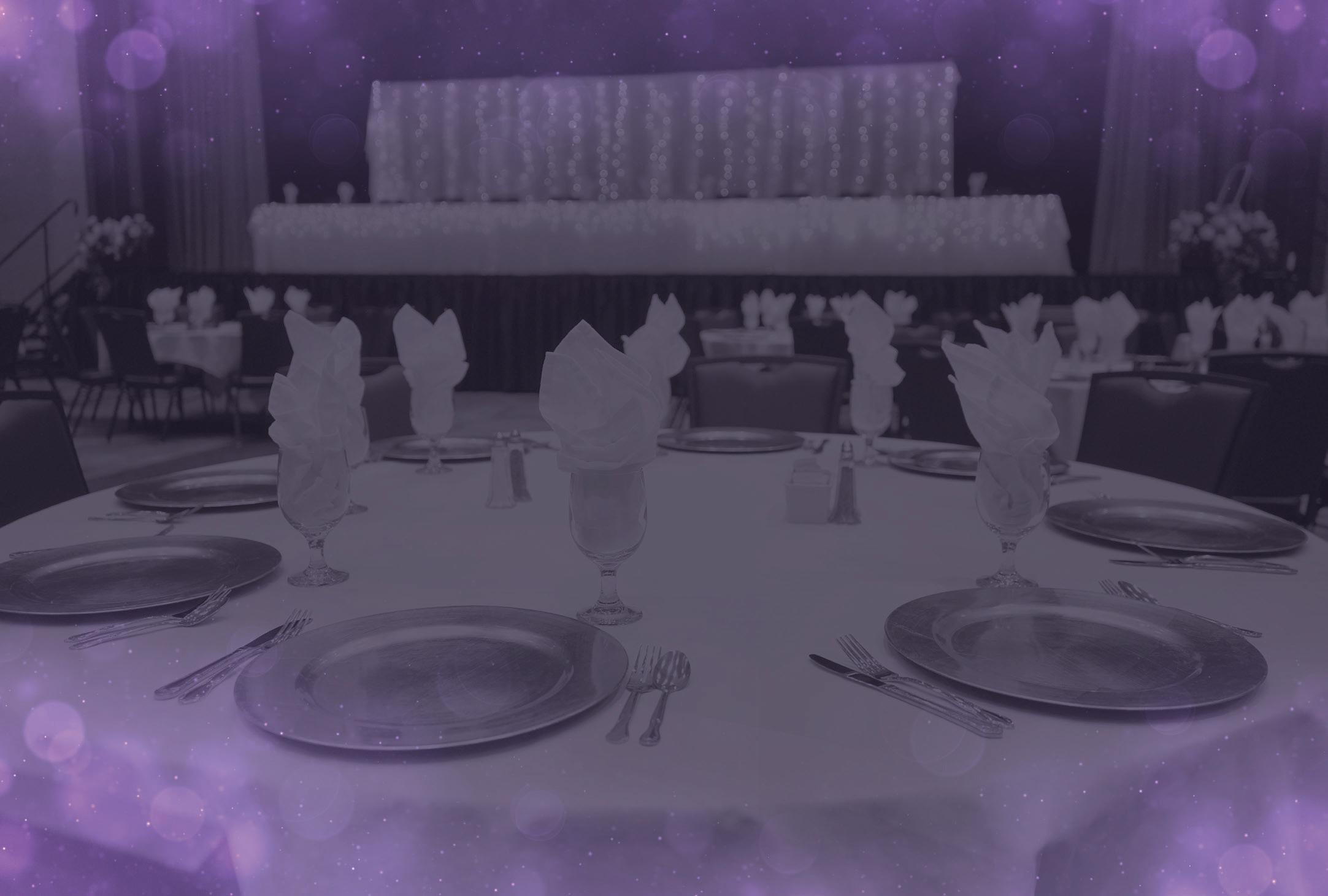
Discover the perfect setting for your next meeting, banquet, or special event.
Our experienced catering and event team ensures every detail is seamless, from setup to service. Whether it’s a sales meeting, corporate training, banquet, or trade show, your guests will be impressed.
What our partners say:
“Meskwaki is one of the best and most valued partners. We have multiple sales meetings there every year and the service with each is nothing short of outstanding. Meals are excellent and the setup is always on point to our requirements.
In addition, our annual Food Show is held at Meskwaki. It is down to the point it runs so smoothly that I am able to concentrate on other things the show needs. When there is the slightest issue, they are on the spot and it is resolved immediately.
I could not recommend anymore than this. They are a dependable and valuable partner with Performance Foodservice Cedar Rapids.”

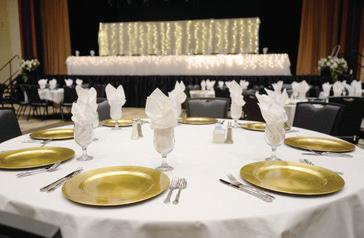


Analytics can inform benefits strategies to counter planners’ staffing woes.
BY GABE VANDERJAGT
It’s a best of times/worst of times environment for planning professionals and firms, and it will likely will remain so beyond 2025. Budgets are growing as every type of event — conventions, conferences and trade shows included — continue to recover from the pandemic. In-person events are in vogue again and 86.4% of organizers are jumping back on the bandwagon. It’s driving strong growth in the U.S. planning market overall, which is on track to hit $1,346.92 billion this year.
But underlying the growth in demand for events is a shortage of qualified, reliable professionals to do the work. Over 60% of event planners overall say the growing difficulty of finding, training and retaining staff stands to hold them back.
There is no single — or immediate — solution to the problem. But one way to help with long-term employment sustainability can be found within your employee benefits strategy, particularly with voluntary benefits that allow employers to create highly personalized offerings that meet current and prospective employees where they are.
These are critical differentiators for attracting and keeping top talent. What propels this strategy is the application of a data lens to employee groups, and how they view and access benefits. Given the explosion in both benefits products and vendors, benefits analytics offer the best clarity for honing in on which will best meet each employee’s individual needs.
Here are four critical components of a data-driven benefits program.
1. Gaining valuable insights with persona analysis. An important starting point is using employee data as the basis for detailed profiles, or personas, of the various segments in the workforce.
This goes further than typical generational segmentation. It’s a deeper dive into employee groups, asking specific questions, like how long employees have been working, generally and for your company, how they view and engage benefits, and what they expect from them.
Looking into each part of your population helps you see the various paths on each individual employee’s journey. How does this layered perspective suggest different ways to make benefits a personalized experience for everyone?
How can you use analytics to guide the decisions that matter the most to your employees? What will have the most impact on engagement, on productivity and on retention? How does the collective of thousands of individualized positive experiences impact your business?
Over 60% of event planners overall say the growing difficulty of finding, training and retaining staff stands to hold them back.
—GABE VANDERJAGT, HUB INTERNATIONAL
Persona analysis is a way to take the pulse of the workforce, then apply the learnings to guide better engagement and nurture healthy employee cultures. This better informs benefits design, improves job performance and reduces employee churn.
2. Using benchmarking to uncover benefits opportunities and gaps. Most people think of benchmarking, when it comes to employee benefits, as a competitive thing: How well do your benefits stand up against the competition or even similarly sized employers, for example? But that is only part of the puzzle. You can benchmark based on U.S. population trends, on geography, on industries and on benefits offered, too.
Benchmarking is a great way to identify opportunities and gaps in your offerings.
Looking at your employee population against U.S. Census data for, New York City, for instance, you may find that a worrisome percentage of your workers there are spending a disproportionate percentage of their pay on rent, while many additionally live in food deserts. The implications of that — being financial stress and even physical health issues — can give you a direction for voluntary benefit offers.
3. Applying analytics to benefits usage (or other data sets) to enrich your understanding of options. The opportunities are pretty open-ended.
Looking at claims trends can help you identify areas of financial waste (by employees and you), flag areas where education is needed, such as in health care services, and also point to gaps in major medical coverage that voluntary benefits like hospital indemnity and accident insurance could address.
4. Using analytics to improve your benefits communications. Everyone knows the generalities about different generations and how they prefer to engage. But doing the groundwork can help you better understand what’s working, what’s not and what could improve.
The basics still apply. Keep your messaging short, sweet and visual, and use the right channels. But workforce personas will enable you to focus on what really counts. Take, for example, the new-to-the-workforce 20-something, with next to no experience with benefits, but who is primed to learn. By emphasizing the value of benefits and the pain points they address, such as aiding in managing college debt, you are forming the start of strong ties early in the individual’s occupational career.
The environment for employees and employers alike these days continues to be in flux. Strengthening the social contact between them has never been more important. A well-designed benefits strategy, highly personalized and informed by solid analytics, is one way to put them on solid ground.
Gabe VanderJagt is an employee benefits strategist at HUB International, a global insurance brokerage.

With 16 unique beach neighborhoods along 26 miles of sugar-white sand and turquoise water, South Walton is the ultimate event destination. Luxurious amenities meet small-town charm for getaways that feel like coming home, no ma er where you’re from. With convenient airport access and easy driving from Atlanta, Birmingham, and New Orleans, you’ll spend less time en route and more time in good company.
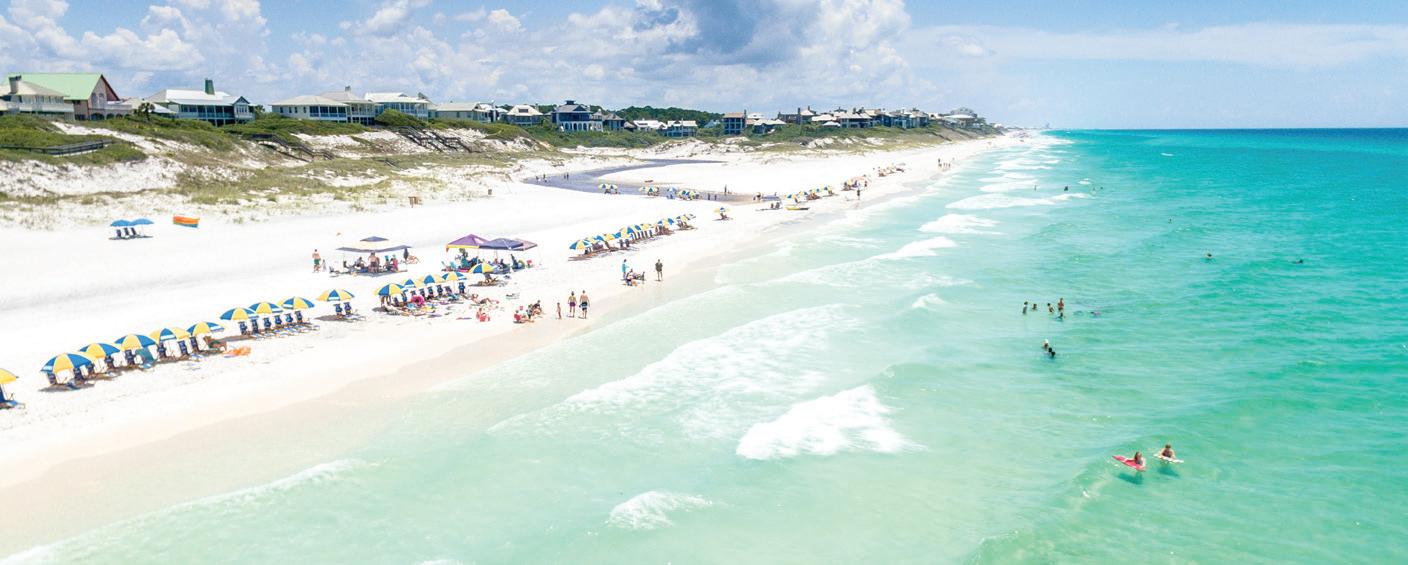
From resorts to boutique hotels, South Walton is home to unique architecture, breathtaking views and accommodations to suit any style.
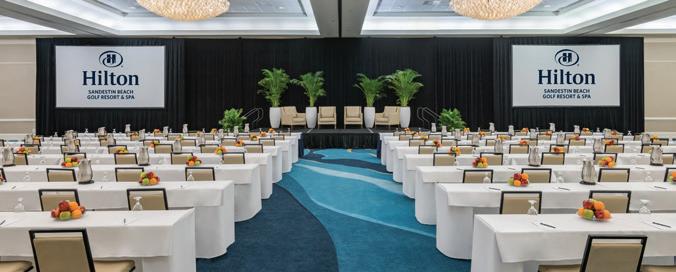
Hilton Sandestin Beach Golf Resort & Spa is Northwest Florida’s largest beachfront resort! With over square feet of indoor/outdoor meeting and event space, Hilton Sandestin Beach can accommodate groups of every size.
HiltonBeachMeetings.com •
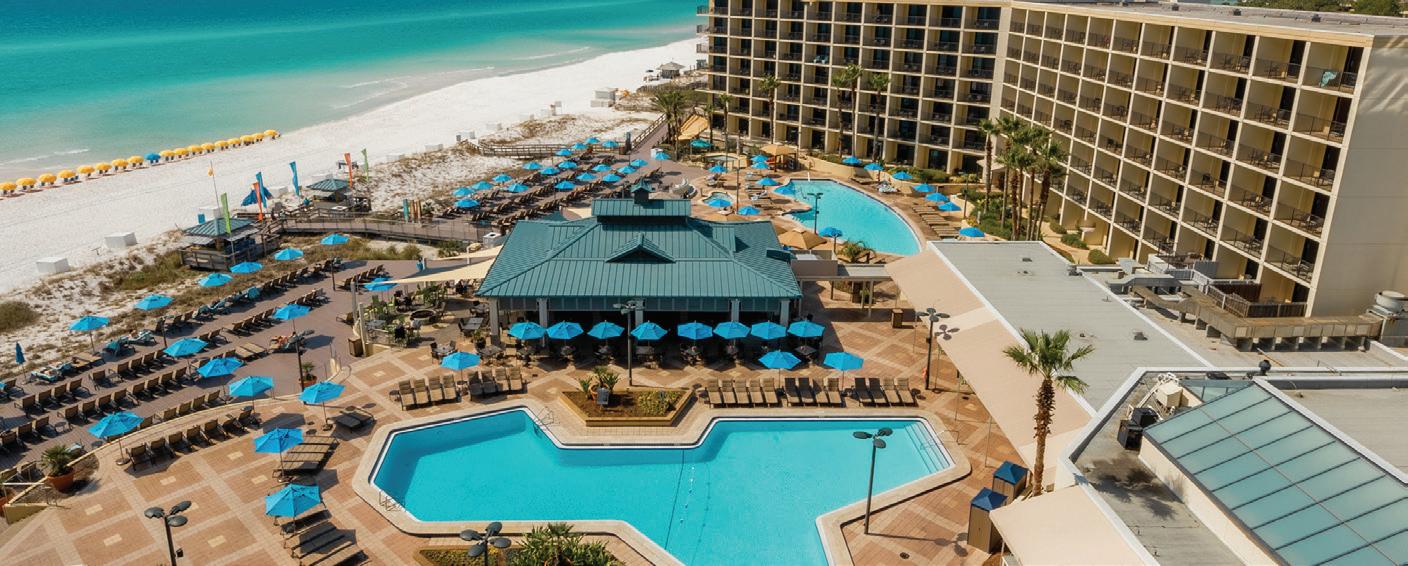
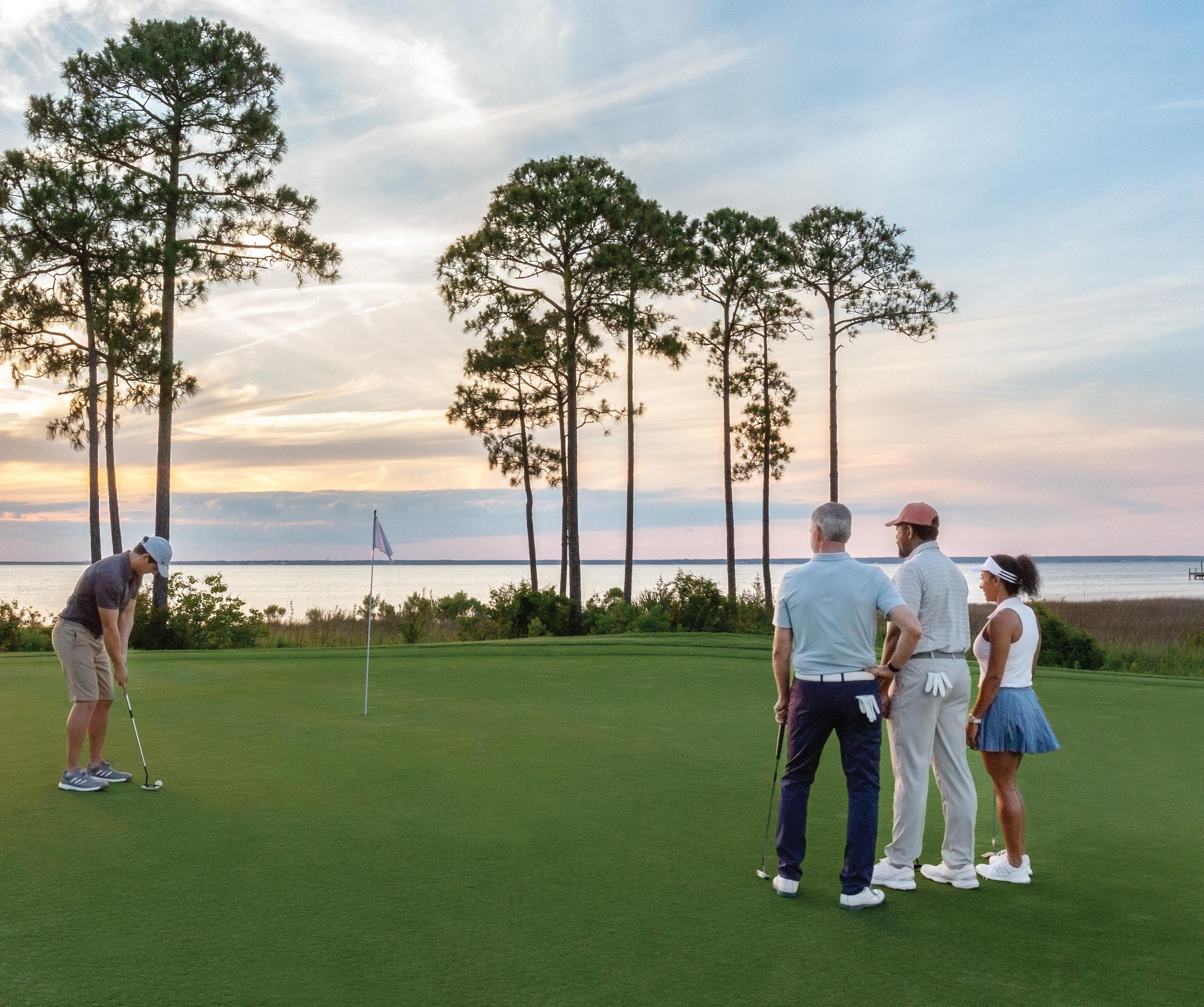

South Walton’s endless activities and breathtaking backdrops create opportunities for truly meaningful team building. Unique venues and accommodations blend with incredible dining and nightlife to personalize every experience. Start planning at MeetInSouthWalton.com.

Get the most out of your data for both current and future events.
BY AMANDA WEGNER
Data is everywhere, and the meeting and event industry is no exception. However, the modern industry demands more than simply tracking attendance or whether a digital participant has logged into a session. The real challenge lies in identifying meaningful metrics, leveraging the right tools and opportunities, and understanding what planning peers are measuring to truly personalize and enhance current and future event experiences, especially in the ever-evolving landscape of digital and hybrid formats.
“All information coming in is potential data that can be leveraged,” says Naomi Tucker, the founder and success coach of Planners on Purpose, which offers coaching and consulting that supports busy event professionals. “The key is to figure out what will be most useful for you.”
Jessica Duarte, product marketing manager at Swapcard, says data is most meaningful when it provides a complete picture of what happened at an event. “While at the National Association of Music Merchants (NAMM), we compared the number of pre-show registrations or bookmarks of sessions to the number of people who attended the sessions in person, and then looked at the data for those
who watched on demand at a later date,” she explains. “This data told the whole story of the session, from the level of interest in the topic and speakers to whether attendees were more likely to go in person or watch after. All were key points in deciding future education programming.”
Swapcard is an AI-powered event engagement platform for associations, trade shows and conference organizers. Duarte implemented Swapcard for virtual, hybrid and in-person events at her prior employer, NAMM, an association that serves the music products industry.
“Be realistic in what you’re actually going to be able to [collect], and make every piece of data matter for you and your future,” urges Tucker. “Think through what you want to get from the data and design from there.”
Planners should be wary of data that looks impressive, but offers little substantive insight, called vanity metrics. These surface-level data points may look like success, but don’t correlate with meaningful event outcomes or attendee value. For instance, while a high number of social media impressions or website visits might seem encouraging, they don’t reflect engagement quality or whether those interactions translate into registrations. Focusing on vanity metrics can distract from the deeper analysis needed to understand event impact and drive future improvements.
Tucker suggests starting with the end in mind. “Consider the type of experience you want a person attending your event to have. Then, what key metrics will help you ensure you meet
By using historical data and industry standards, you can achieve consistent year-over-year tracking to clearly identify what is working and what needs improvement.
—JESSICA DUARTE, SWAPCARD
that end goal?” she asks. “What kind of metrics do you want to track to pull out their satisfaction?”
Duarte agrees, stating it’s essential to identify clear objectives before pursuing data collection — whether you want to boost attendee engagement, increase sponsor return on investment or raise session attendance.
“Once these goals are defined, align your metrics accordingly,” says Duarte. “For instance, if your focus is on lead generation, emphasize the number and quality of connections made, while educational events should prioritize tracking session attendance and interaction levels.”
Additionally, tailor your key performance indicators based on the event type, audience and client goals.
“By using historical data and industry standards, you can achieve consistent year-over-year tracking to clearly identify what is working and what needs improvement,” says Duarte. Swapcard, she adds, offers industry reports and benchmarks so organizers can compare their event performance against similar
events, uncovering further growth and optimization opportunities.
While post-event surveys or email metrics reviews are great places to start, data-savvy planners are stepping up their game with new opportunities, especially AI.
Planners are adopting AI-driven sentiment analysis tools to mine social media chatter and post-event surveys for emotional trends, such as the speakers that attendees enjoyed most or which topics caused confusion.
Even without sentiment analysis tools, readily available AI tools allow planners to gather deeper insights from openended questions. “AI can take those responses and give a summary of what is being said, within seconds, without going through every line of data,” says Tucker. “That makes our jobs easier and is a simple way for planners to start with qualitative data analysis. We need to let technology be our friend.”
If you have an event management platform, leverage its real-time dashboards. Putting the most meaningful data into one place enables planners to monitor engagement as the event unfolds, make decisions on site and monitor how participants interact through the event journey, says Duarte.
A key feature of Swapcard and other platforms, AI-driven matchmaking uses advanced algorithms to dynamically suggest relevant connections and sessions during the event based on user interactions. “This is key to helping exhibitors and attendees make the best connections available and make the most of their time,” says Duarte.
For many, events are just one piece of the marketing mix. To make the most of your data, invest in systems and tools that seamlessly integrate
with one another. For example, your event management system could feed into your marketing automation tool and/or your customer relationship management platform, which will enrich your data, better align teams, and provide new levels of personalization and engagement for members, clients and future participants.
Integrating data also means combining offline and online metrics for planners executing hybrid events. While this can get tricky, and requires more training and human input for the in-person portion, combining all this data paints a fuller picture of the value you’re providing to attendees and receiving from your event investment.
While the data you collect tells a singular story, it also sets the stage for the future. “Planners can use data to improve all aspects of events — floor planning based on traffic numbers, building sponsor packages based on previous sales, session programming built on actual attendance and improving marketing efforts — are all effective ways to use data,” says Duarte.
Additionally, don’t stop at the reporting phase. Results are important, but data-driven decision-making is key. Organizers should use all feedback to refine strategy and content throughout the event cycle and beyond.
Furthermore, there’s value for everyone involved, so be sure to share all your data with the broader team, while gathering their insights. “Data tells a unique story that sometimes your words can’t explain for people,” says Tucker. “It provides insights you might not otherwise see and can validate some things you’re already feeling. You can start to have deeper conversations with data in a way that will help guide planning and give you another perspective that you can use to plan your next event.”
Amanda Wegner is a freelance writer, web designer and communications consultant based in McFarland, Wisconsin.
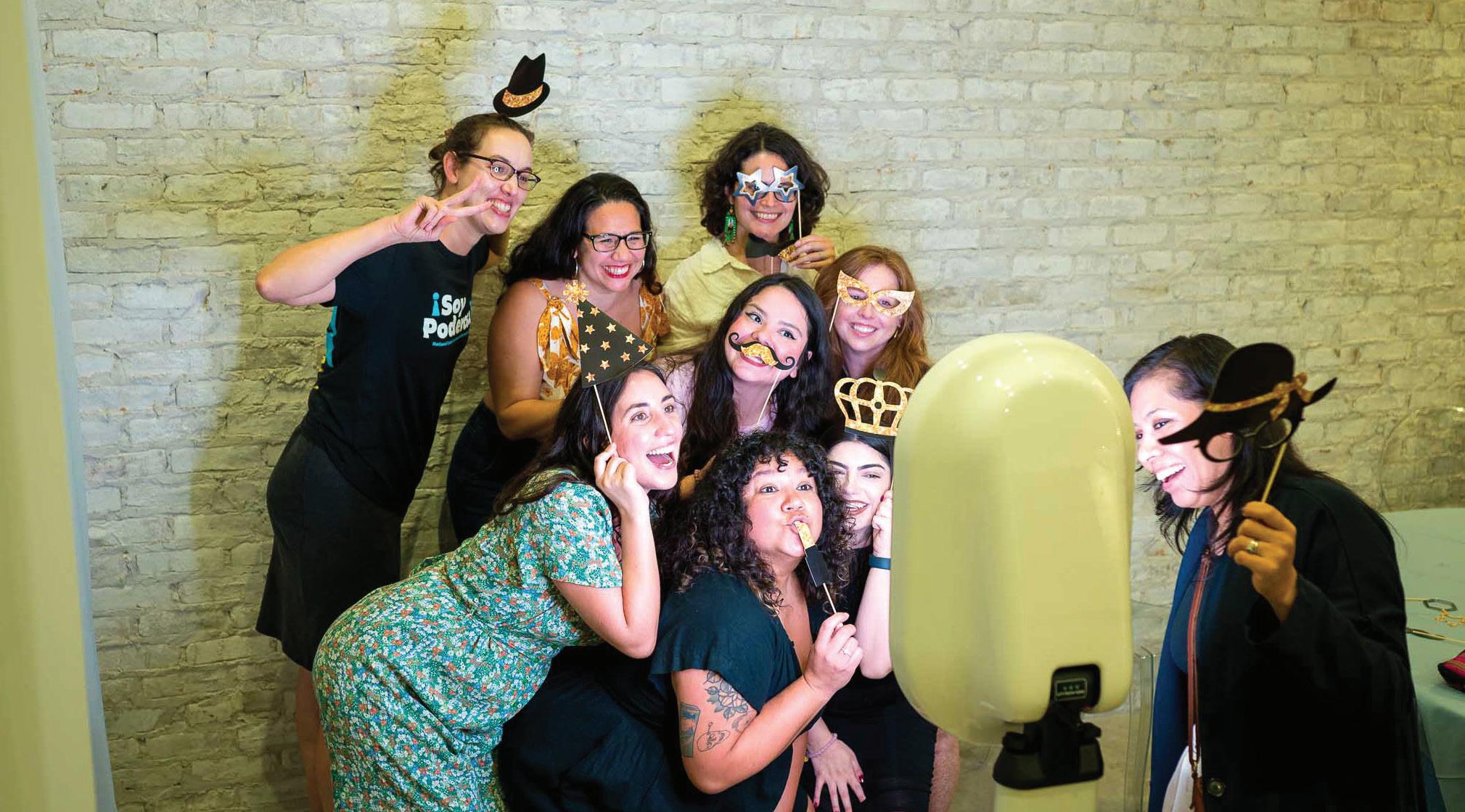
Here are some timeless tips to consider.
BY CLAIRE HANNUM
No matter how many events you’ve planned, each one is its own. Even repeat events at the same venue for the same organization offer their own special glimmer each time they’re held — and that’s why they are well worth personalizing. Not only is personalization an easy way to get creative planning ideas flowing, but it can also help increase client loyalty and, of course, create an even better experience for attendees.
You can direct your personalization in several different ways depending on your goals. You may opt to personalize the event toward the interests and needs of the host, the organization or the industry your event serves, but most importantly, it’s the attendees that need attention.
You can create curated event schedules, meals, speaker opportunities or even decor that calls out to each group’s unique needs and priorities.
While thoughtful in-person, tangible personalization always impresses, today’s landscape demands personalization for both the in-person side of events and the digital side. While face-to-face meetings are still a firmly rooted component of events, guests rely more on technology than ever before for networking and information.
If you’re looking to step up personalization at your next event, here are four tips to consider.
Some thoughtful details go beyond just knowing your audience and appeal to our most basic human connections. Consider what matters most to the community at the heart of your event and meet that community where they are.
Lucretia Williams, president and CEO of Distinct Event Planning LLC in Ohio, which specializes in culturally
I’ve been in this business for 26 years, but I don’t plan the way I did 20 years ago or the way I did 15 years ago. I'm always open to learning how to do business better, how to streamline the process and how to make the customer experience even better.
inclusive corporate and nonprofit events, recalls helping with an event for the National Latina Institute for Reproductive Justice.
This destination event was the first time in several years that the organization had gotten together, and the majority of the guests were from a Latina or Hispanic cultural background. So Williams and her team got a bilingual travel agent on board, and ensured that interpreting apps were available and translation devices were accessible at the event.
“We were also hands on with curating a meal that was catered to the Latina culture,” Williams says. Distinct Event Planning brought in a woman-owned restaurant to help with food. “[The owner] came in and we gave her free range to create a fresh menu of Latina foods and beverages. And I can tell you, the guests were just in awe …

[The chef] is from Mexico and she brought in recipes where some of the guests felt like, ‘I remember when my grandmother made this when I was growing up ...’
"We had them in mind when we were planning the event. We made sure it wasn’t just your normal protein of chicken and a side. We were very intentional about that menu,” according to Williams.
As this example demonstrates, when events are more inclusive and catered to organizations’ individual backgrounds, the attendee experience feels tailormade.
If you’re not sure what would make attendees feel valued, don’t be afraid to ask — and the way you ask can be an interesting initiative in itself.
Last year, event juggernaut Freeman hosted its inaugural Inside Live at AIA24 event, designed, in part, to explore this topic. When attendees registered for the event, Freeman asked them about their preferences, pain points and passions.
“Then,” says Mickey Wilson, Freeman’s chief marketing officer, “[we] tailored the experience based on their answers.” Those responses shaped the event and inspired some of the sessions offered.
“We learned that attendees are interested in leveraging the experience of experts in a more conversational way,” Wilson says. “So we developed Mentor Think Tanks — small trending topic discussion groups organized by attendee interests and demographics, and led by subject matter experts.”
This made for more meaningful and relevant conversations that offered more value for attendees’ priorities. Feedback is a powerful tool: Don’t be afraid to use it.
A little technology can go a long way in customizing event experiences and AI is making it that much more impactful. Freeman is working on creative ways to use AI to make events better than ever.
“Last year, we announced two AI-centric partnerships, including with Zenus, to introduce ethical AI-based attendee behavior mapping for trade show and conference organizers,” Wilson explains. This enables Freeman to offer customers anonymized data around attendees’ dwell time, activation and more so that events can be even more customized in the future.
Many planning companies, including Freeman, are also implementing AI chatbots. Freeman’s AI feature enables
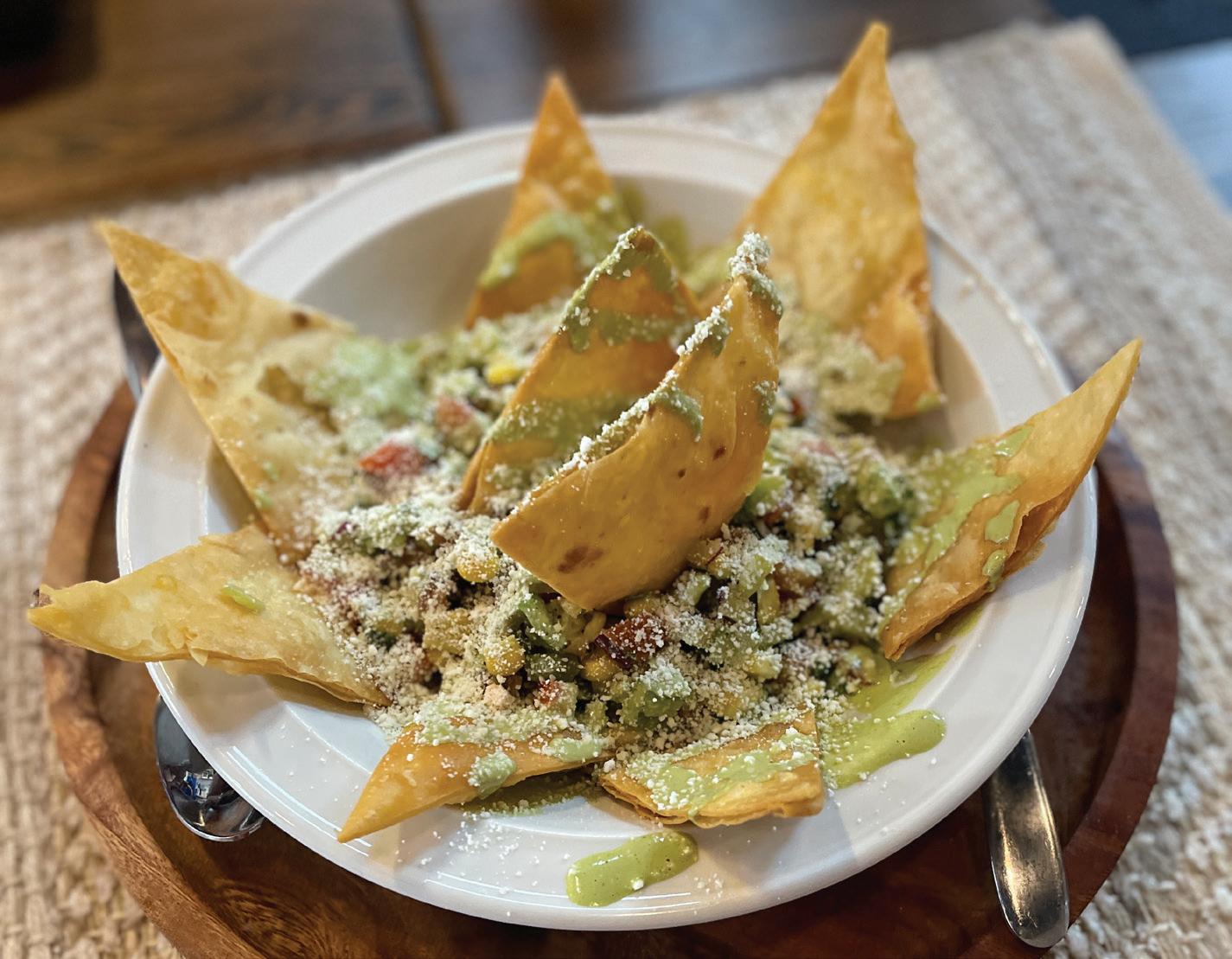

clients to offer attendees web and text chatbots before, during and after events to answers questions in real time.
Williams is also implementing AI in her work. Distinct Event Planning uses an event management app that uses AI to help attendees connect.
“It allows attendees to network and provide content prior to the conference,” she says. “When they upload their profile, the profile in the app actually starts matchmaking immediately. So while you’re using the
app, it lets you know, for instance, that John is also from Ohio and you both grew up in the Cleveland area, and you have this type of job in common with Mary Sue, and it’s related to a job that you had in previous years.”
Williams finds these questions well worth the investment of the app, because she finds benefit in beginning the attendee matchmaking before guests arrive at the event. “You’re already having conversations and you’re already doing some pre-networking,” she explains. “So now, when you get to the event, it doesn’t
feel uncomfortable to network. It feels like you’ve already met so many people through the AI app and like you’ve already been engaging with them. It’s as if you already know them personally.”
By the time the event begins, guests are excited to finally meet in person because their connections have been growing over time. They already feel a strong connection to the event and to fellow attendees.
AI is just one example of an everchanging technology in a world that is always evolving. And as capabilities grow, the ability to personalize events and offer clients the very best only grows. But planners will only be able to use those new developments if they remain open to new frontiers, even if they seem intimidating at first.
“Always be open to learning a better way of doing what you’ve already been doing,” Williams advises. “I’ve been in this business for 26 years, but I don’t plan the way I did 20 years ago or the way I did 15 years ago. I’m always open to learning how to do business better, how to streamline the process and how to make the customer experience even better.”
Learning can mean attending conferences, joining networks and absorbing whatever knowledge you can to stay on the cutting edge of trends.
“I don’t allow myself to get stuck in knowing what I know today. I want to learn something new tomorrow,” emphasizes Williams. “Build a network of meeting and event professionals where you can all share ideas, but also be in those rooms where you’re having these conversations” in real time.
When you’re on the forefront of what’s new, you can be sure you’re delivering clients and guests the most personalized event you can, with the very best features you can offer.
Claire Hannum is a New York-based freelance writer who covers travel, events and wellness.
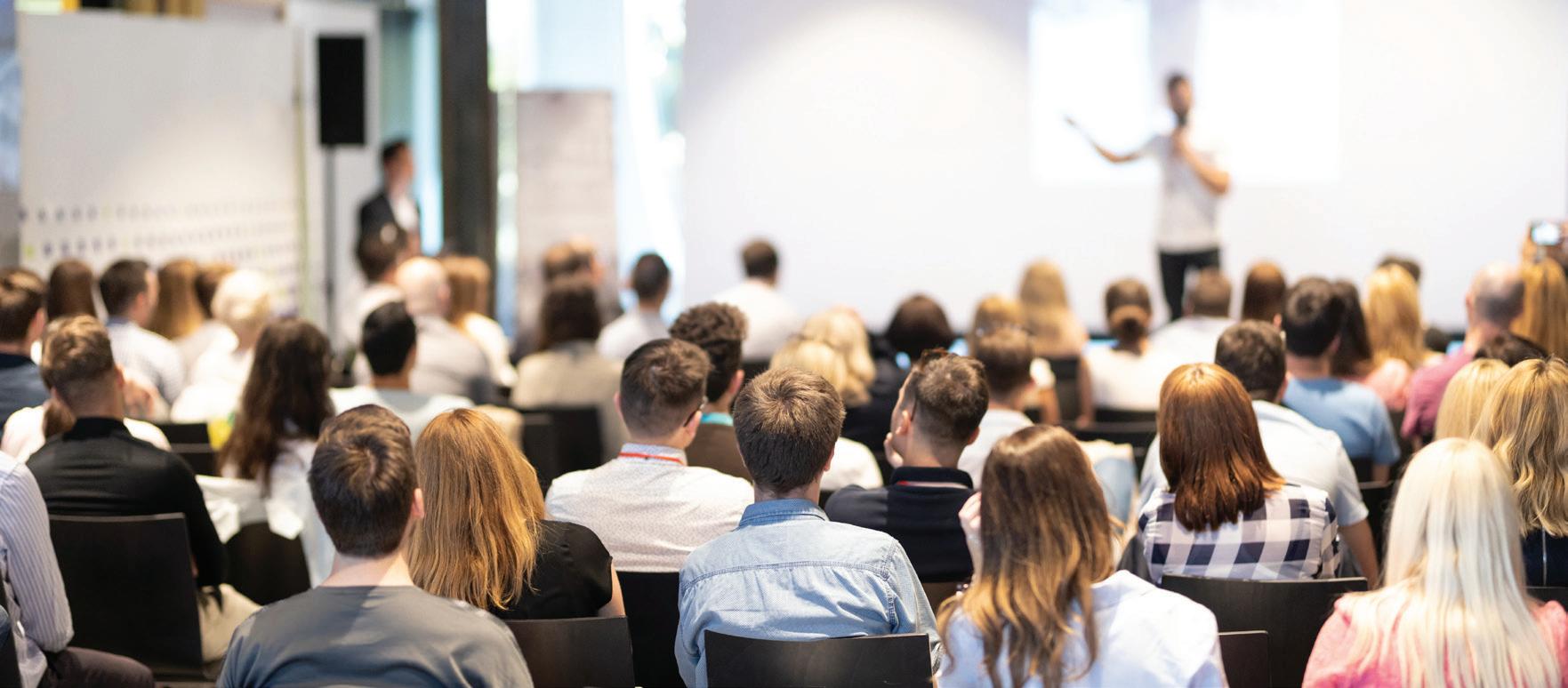
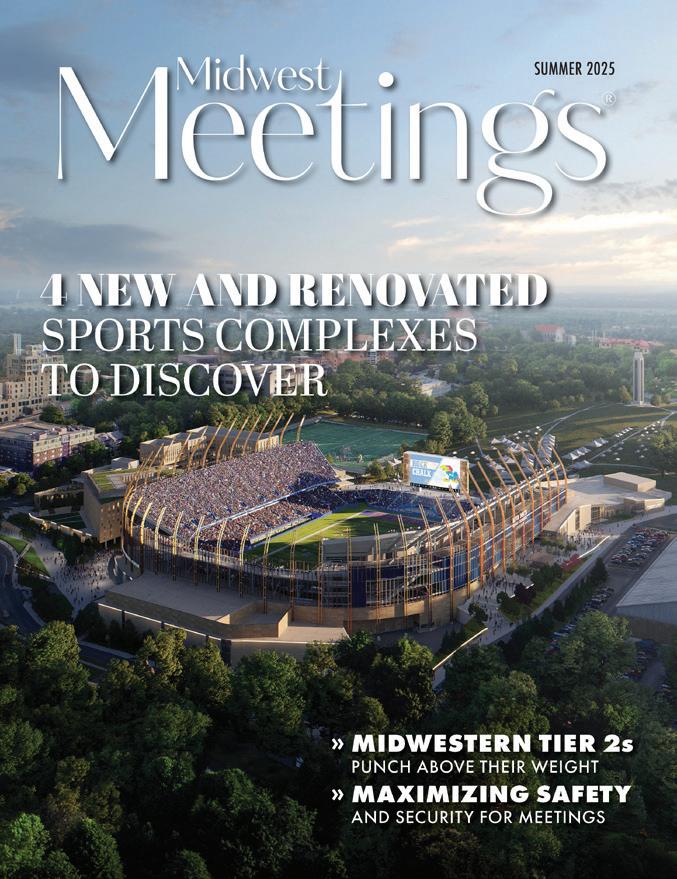
While international travel is currently fraught with uncertainty, the lull is giving planners an opportunity to explore other destinations closer to home. That’s why the trend of hosting smaller, smarter gatherings in Tier 2 cities throughout the Midwest is growing, and our destinations are stepping into the spotlight with style and serious value.
Midwest Meetings will help you stay up to date on these latest trends and on destinations, venues and more to guide your ever-changing planning needs.
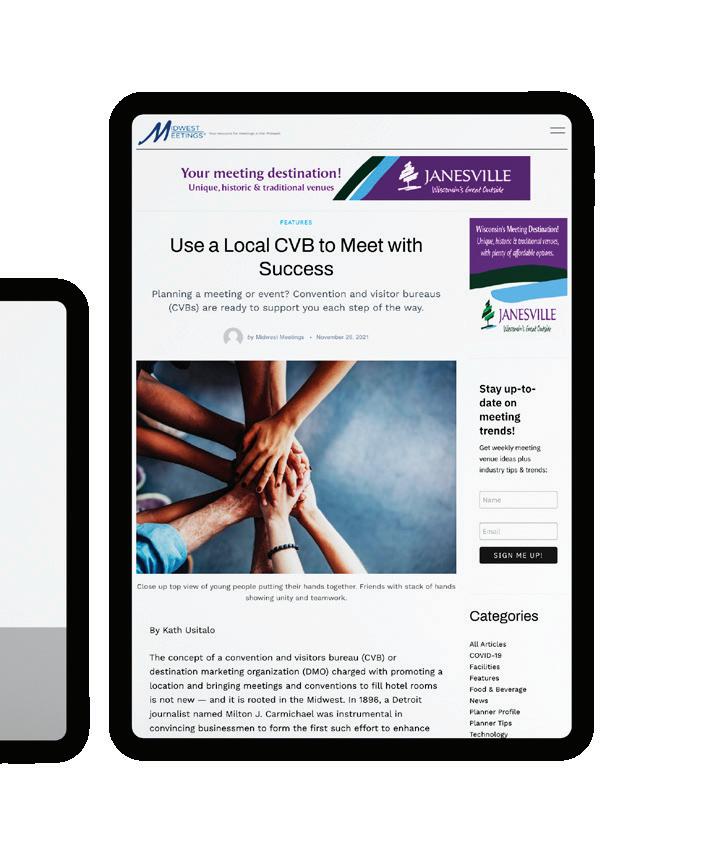



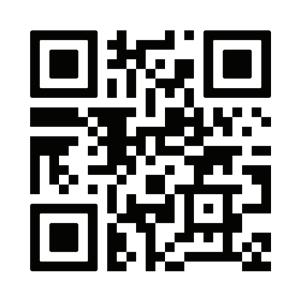

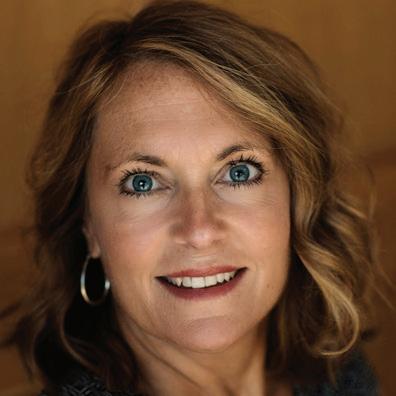

Crafting experiential team-building experiences brings groups together in novel ways.
By Ronnie Wendt
The bleat of a goat, the clatter of pots and pans, or the quiet rustle of leaves in a sunlit orchard ... These are the sounds of today’s team building in action.
Experiential team-building outings are rapidly replacing traditional icebreakers and trust falls, offering organizations immersive opportunities to connect, collaborate and create memories outside the boardroom.
Take Faulkner’s Ranch in Kansas City, Missouri, for example. At a recent corporate retreat, participants wrangled baby goats, dressed them in costumes and raced to complete the task first. The laughter was contagious, but the takeaways went beyond barnyard fun. The exercise shattered communication barriers, encouraged creative problem solving and left everyone with a shared memory.
“It’s one of those activities people never forget,” says Carina Foose, an event coordinator at the ranch, which
has done team-building events for more than 30 years. “When you get people laughing and collaborating on something completely outside their comfort zone, it opens the door for genuine connection.”
That, she says, is the real goal of experiential team building — to put participants into a shared handson experience where soft skills, like communication, creativity and problem solving, can shine.
“These activities help people see their coworkers in a new light and get to know them a little better, so that in the office they have something in common to talk about,” Foose says.
For these novel experiences to work as intended, companies or organizers must start with a goal. Planners should consider what they want to accomplish and articulate that to their event coordinator or volunteers. “You have to start with the ‘why,’” confirms Foose.
Maybe the why is to improve collaboration between departments,
boost morale after a tough quarter or get new leaders working together. Once the goal is understood, you can design the right experience around it.
Kimberly Osterhout, director of sales at Arbor Day Farm, which offers teambuilding opportunities in Nebraska City, Nebraska, says to build the experience with intention by asking: What do we want our team to walk away with?
“Whether it’s deeper trust, better communication, renewed energy or simply a shared moment of joy, clarity on the goal helps shape everything that follows,” she says.
The best goals are specific. For instance:
• Maybe the goal is leadership development, problem solving, or to reward a team with some space to relax and unwind.
• One company might want to keep members of a specific department together during team-building events to encourage collaboration and unity.
It’s amazing what happens when a leader steps back from directing and leans into the experience, whether that’s joining a wellness session, laughing through a challenge or simply being present. When leaders model authenticity, it gives others permission to do the same.
• A company has 10 departments and, most days, they operate independently, but it wants to create teams with representation from all departments to encourage interaction between them.
These things all influence the activity that is chosen.
Sometimes, goals follow specific trends. For example, bringing remote employees together is a growing priority.
Foose explains that, since the pandemic, employees working from home may only see their coworkers on Zoom calls. “They have never met in person,” she says. “Increasingly, companies’ goals are to get everyone together for a team builder once a quarter or once a year.”
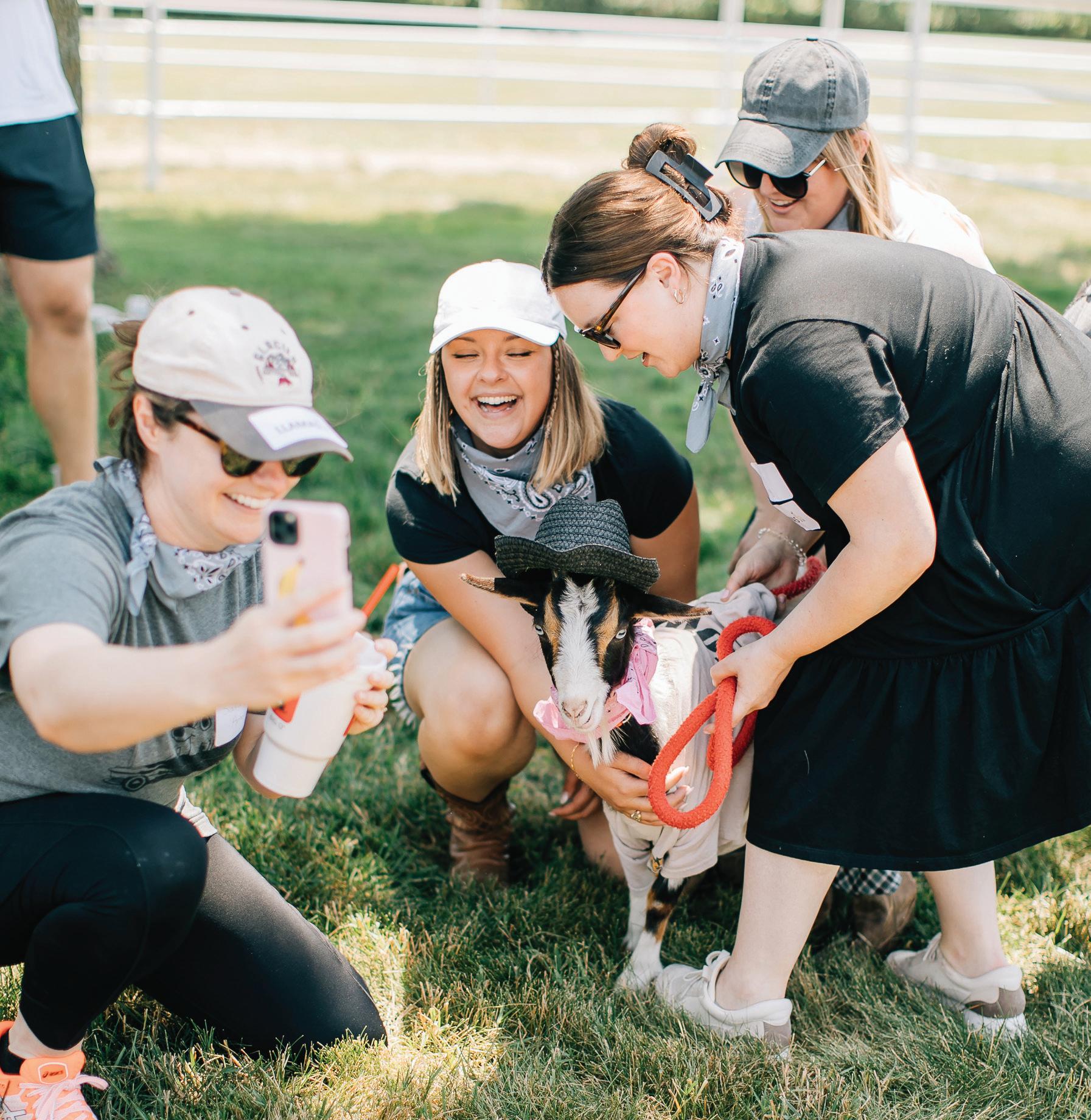
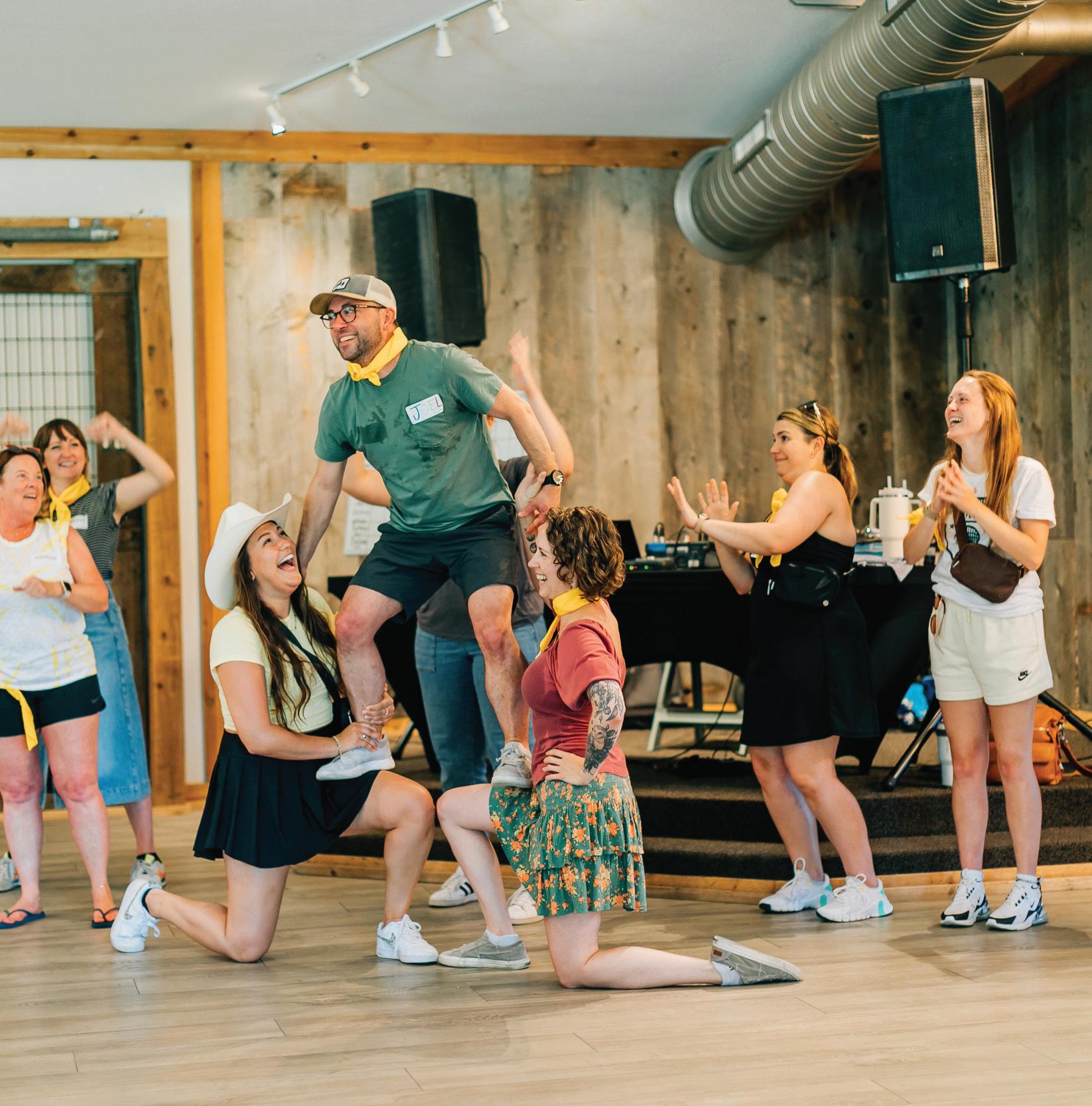
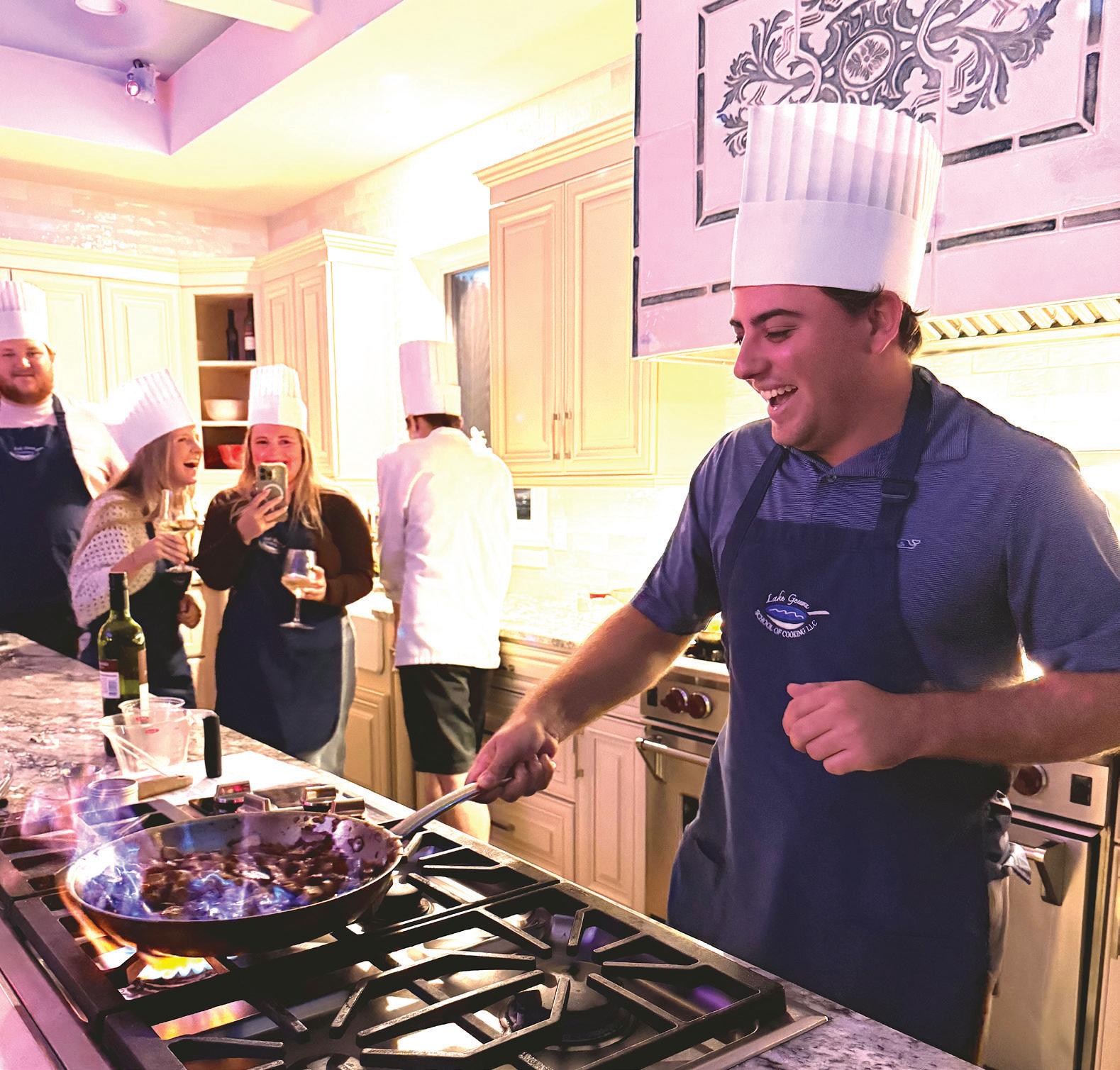

Organizations and attendees are also increasingly mindful of their carbon footprint and prioritize sustainability. They might be seeking team-building experiences that are focused on environmental stewardship.
“It is proven that nature has a quiet, transformative power that brings people together,” according to Osterhout.
“When teams immerse themselves in environments rich with trees, fresh air and natural sunlight, they experience a calming effect that fosters genuine connection. Being surrounded by greenery helps individuals feel centered and present. This sense of presence nurtures openness, empathy and creativity, the essential ingredients for meaningful collaboration.”
Chef John Bogan of the Lake Geneva School of Cooking in Lake Geneva, Wisconsin, stresses that, once planners define the why of the event, they can select activities that match the team’s personalities and goals.
There are an abundance of creative options across the Midwest for experiential team-building outings. Popular options include:
• Farm Challenges , including goat dressing, cheese making or beekeeping, which are unique to the Midwest’s agricultural heritage.
• Outdoor Adventures like ropes courses, kayaking or guided nature hikes that foster trust and resilience.
• Culinary Competitions , such as “Chopped”-style cooking events that encourage skills like time management and teamwork.
• Escape Rooms that help teams develop strategy, communication and leadership under pressure.
• Volunteer Projects like Habitat for Humanity construction or even community cleanups that blend purpose with teamwork.
Whatever the activity, it should balance fun with function. “The
Balance is key. Too much high-pressure competition can create stress, while too much downtime can feel aimless. The right mix fosters growth without fatigue.
—CHEF JOHN BOGAN, LAKE GENEVA SCHOOL OF COOKING
best experiences match your team’s personality and the outcomes you want to see,” Foose says.
Careful planning also considers the event schedule and pace. Timing is everything, according to Foose. She explains that an evening event might not be popular with attendees. However, most employees enjoy a workday activity that takes them out of the office for a change of pace.
Consider the rhythm of the event as well. After a morning of meetings or presentations, attendees appreciate activities that get them moving, laughing or decompressing.
“Teams collaborate best when they feel relaxed and have fun. Balance is key,” Bogan says. “Too much high-pressure competition can create stress, while too much downtime can feel aimless. The right mix fosters growth without fatigue.”
A well-paced agenda includes time to reflect, recharge and connect, alongside moments of fun and play. “This creates space for real transformation,” Osterhout says. “And offering a mix
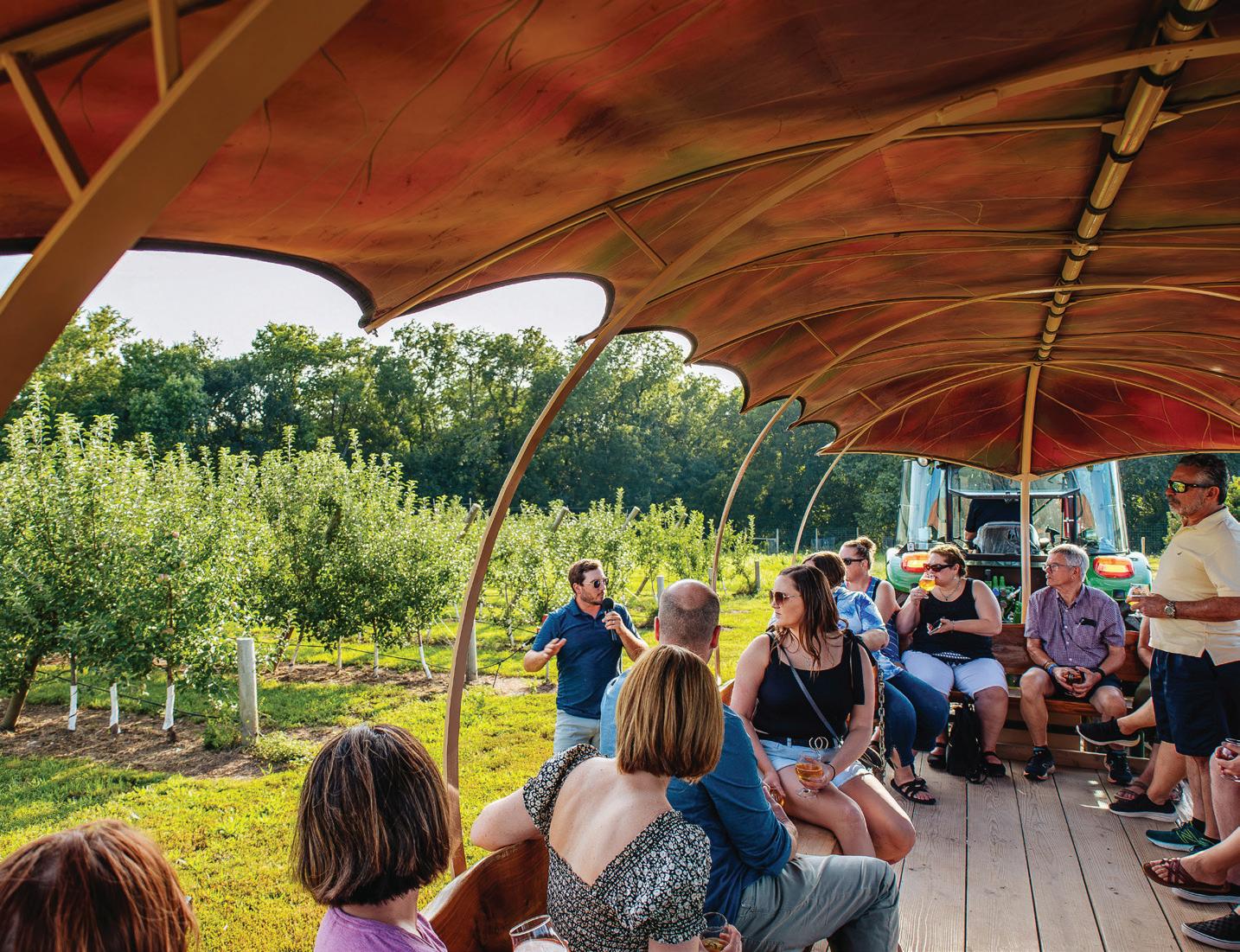

of activities that speak to different personalities ensures everyone feels seen and included.”
Osterhout gives an example. At Arbor Day Farm, planners may mix highenergy activities like running and climbing in Tree Adventures with quieter moments like sound bowl sessions to keep people engaged without burning them out.
Consider the people who will attend the event. What are their personalities and preferences? That will help shape the event you plan, suggests Osterhout. “Some attendees thrive in social interactive settings,
while others prefer low-pressure, nature-based experiences,” she says. “Offering a variety of activities ensures everyone finds something that resonates and often the most unexpected experiences become the most memorable.”
Foose stresses making sure the activity fits the group by considering physical ability, comfort level and inclusivity. “No one should feel left out,” she says.
In every team-building exercise, there’s a mix of eager and reluctant participants. The event should be lighthearted and fun to draw in even the most hesitant.

To ensure this, Faulkner’s Ranch includes a DJ at every event. The DJ sets the pace and amps up the enthusiasm for each team-building activity. “He might notice that not everyone is cheering for their team,” Foose says. “So, he will announce extra points are available to the team that cheers the loudest.”
Chef Bogan likes to use music to set the tone, too. He plays lively music and makes a dance party part of the cooking activity. “When I say, ‘Dance party time,’ they need to shake it out,” he says. “That lightens everyone up.”
Each cooking school team also has a chef mate who is assigned to help with recipes and who selects a leader from the team to help oversee the activities. These individuals are present to keep the group focused and get everyone
Looking to energize your team and create lasting memories? You’re in the right place. Build your team with an environmental experience, a Western adventure or a friendly competition in the kitchen.
Arbor Day Farm aligns meetings and retreats with the Arbor Day Foundation’s mission of reforestation, tree planting and environmental education, letting participants give back while connecting with nature.
The farm provides a mix of quiet, active and playful events that foster teamwork. Forest bathing and sound bowl sessions help teams slow down and reconnect, while tree identification walks and orchard tours spark curiosity and conversation.
Fun experiences like salsa-making competitions, margarita classes and wine tastings inject laughter and energy into events, and celebrate sustainability with locally sourced ingredients.
Interactive challenges, like the Mystery at the Mansion, allow participants to step into roles, solve puzzles and collaborate in a playful, low-pressure setting. Kimberly Osterhout, director of sales, says, “It’s amazing to watch personalities come alive with this activity. Quiet members become witty detectives, detail-oriented thinkers thrive and connection happens naturally.”
Collaboration across horticulture, wellness, culinary and hospitality teams helps Arbor Day Farm craft team-building experiences that resonate long after the retreat ends. Attendees will return to the workplace with improved communication, trust and a shared purpose. arbordayfarm.org/meetings-retreats/team-building
For groups seeking a mix of fun, camaraderie and memorable experiences, Faulkner’s Ranch outside Kansas City, Missouri, delivers a modern twist on classic Western hospitality.
“We’ve been running our ranch-style team-building program for 30 years,” says Carina Foose, event coordinator. “Our goal is to get people out of their everyday work life and into a playful, engaging environment where teamwork comes naturally.”
In the ranch’s signature Ranch Chores program, teams compete in hands-on activities, from cow milking and goat dressing to pedal-cart races and water balloon challenges. Every activity encourages collaboration and creativity. Participants quickly discover hidden talents in themselves and others, from cheering skills to precision in competition, all while building connections.
Faulkner’s Ranch is a full-service venue, handling everything from indoor meetings for up to 200 guests to
When you get people laughing and collaborating on something completely outside their comfort zone, it opens the door for genuine connection.
—CARINA FOOSE, FAULKNER’S RANCH
involved in preparing the dish within the time limit.
Planning for leadership participation is another critical factor. Bogan has seen firsthand how including C-suite members or team leaders as active participants shifts the energy of a group. “When leaders step into the experience authentically, it sets the tone,” he says. “It gives everyone permission to engage fully, take risks and be vulnerable.”
Leaders are less guarded and more open with employees in a casual setting. Osterhout shares that, during a recent salsa-making competition, she saw a C-Suite member doing a salsa dance during the event.
“Think about how that changes the vibe of the event,” she says. “When leaders
catered meals and themed entertainment. Event menus range from casual hot dogs and slushies to upscale brisket-carving stations, all prepared on site with an emphasis on hospitality and family-style fun.
Transportation, nearby hotel coordination and Westernthemed touches throughout help set the tone before guests even arrive. Foose notes, “You gather the guests; we take care of the rest. People arrive excited, and leave with memories and a stronger sense of teamwork.”
Whether for corporate retreats, holiday parties or multioffice gatherings, Faulkner’s Ranch combines Western heritage, interactive activities and thoughtful planning to create team-building experiences that stick with participants long after the sun sets. faulknersranch.com/team-building
At the Lake Geneva School of Cooking in Lake Geneva, Wisconsin, team-building events take a hands-on approach into the kitchen.
Groups begin with a relaxed reception, featuring sparkling apple cider or champagne, allowing participants to settle in and socialize. Then, guests are introduced to the dishes they’ll prepare, with visual cookbooks and photos to guide them. From there, teams
show up as themselves, share openly and allow space for vulnerability, it sets the tone for the entire group. It’s amazing what happens when a leader steps back from directing and leans into the experience, whether that’s joining a wellness session, laughing through a challenge or simply being present. When leaders model authenticity, it gives others permission to do the same.”
The secret to team-building magic is intentionality, inclusivity and fun. Throw in some friendly competition, a killer playlist and leaders who lead by example, and suddenly coworkers become collaborators, problem solvers and each other’s biggest cheerleaders.
Ronnie Wendt is a professional freelance writer who is based in Minocqua, Wisconsin.
might collaborate on a four-course meal or dive into the more competitive Iron Chef challenge, which adds a mystery ingredient for each group to incorporate.
Chef John Bogan and his experienced team guide participants through the cooking process, ensuring everyone on the team plays a role that fits their strengths. Whether it’s grilling, risotto-making or plating desserts, team members must communicate, delegate and problem solve together. Each island has a chef mate to keep teams on track, making sure no one dominates while encouraging participation from quieter members.
Participants bond over culinary skills in a dynamic, high-energy setting. Music, dancing and an interactive environment help participants relax and engage fully with the experience. Once the dishes are complete, teams present their creations, often incorporating fun competitive elements like scoring and team captain announcements, for instance.
The Lake Geneva School of Cooking can accommodate groups of 12 to more than 40, with options for plated dinners or social reception-style buffets. Every participant leaves with a signed cookbook, sometimes additional keepsakes and lasting memories cultivated through shared culinary achievement. lakegenevacookingschool.com/ team-building-events
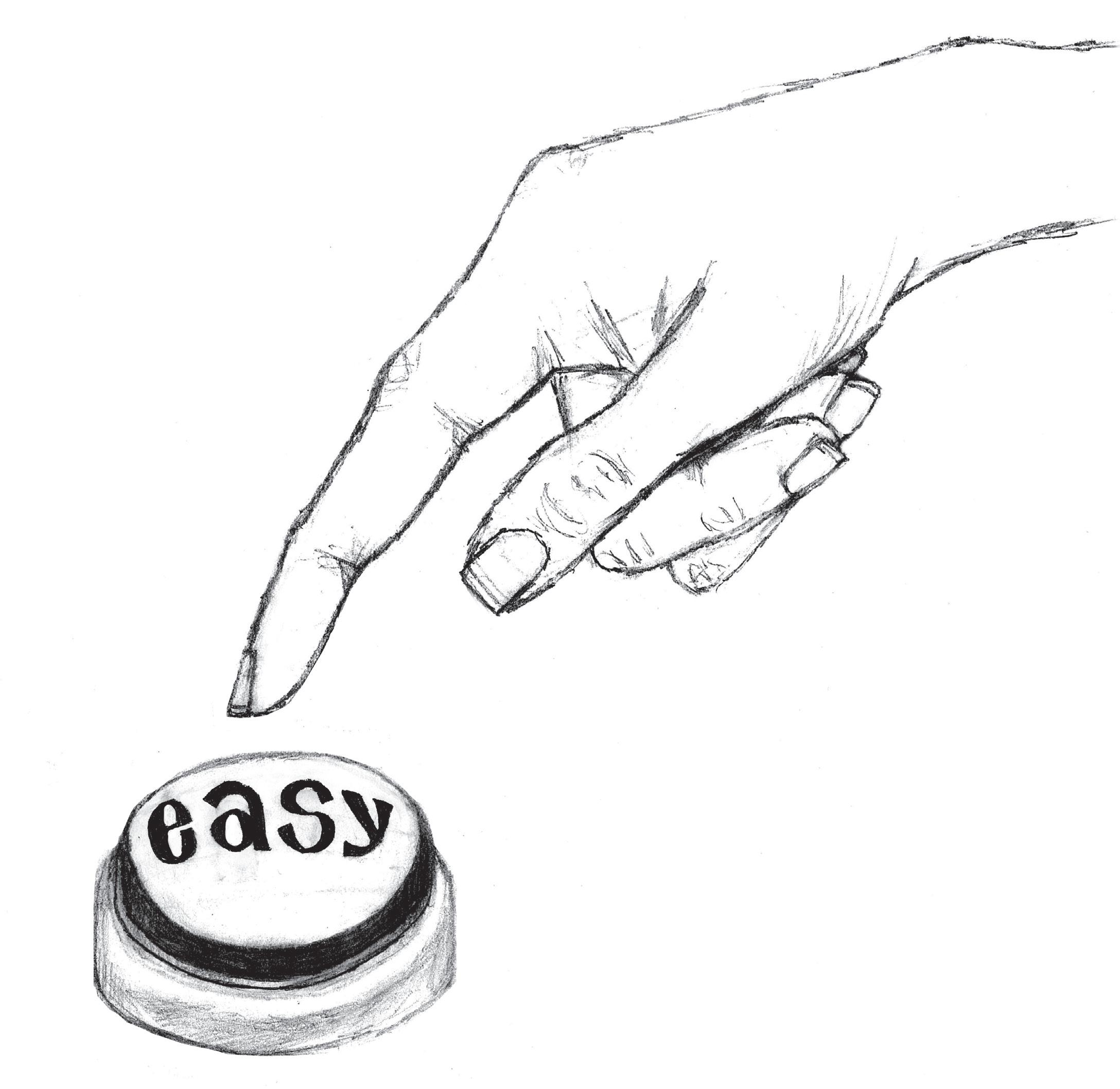
Why stress over event planning? In Kearney, it’s a breeze for planners & attendees alike. With superior facilities, top-notch event & catering staff, affordability, & convenience, come together to make Kearney an exceptional (& exceptionally easy) place for conferences of all types!
Why stress over event planning? In Kearney, it’s a breeze for planners & attendees alike. Superior facilities, top-notch event & catering staff, affordability, & convenience come together to make Kearney an exceptional (& exceptionally easy) place for conferences of all types!
Why? Because Kearney has the best facilities between Denver and Omaha, and experienced staff that make sure every event is a win!
If you’re looking for a host city for your next event, make sure you look at Kearney, Nebraska.
If you’re looking for a host city for your next event, make sure you look at Kearney, Nebraska.
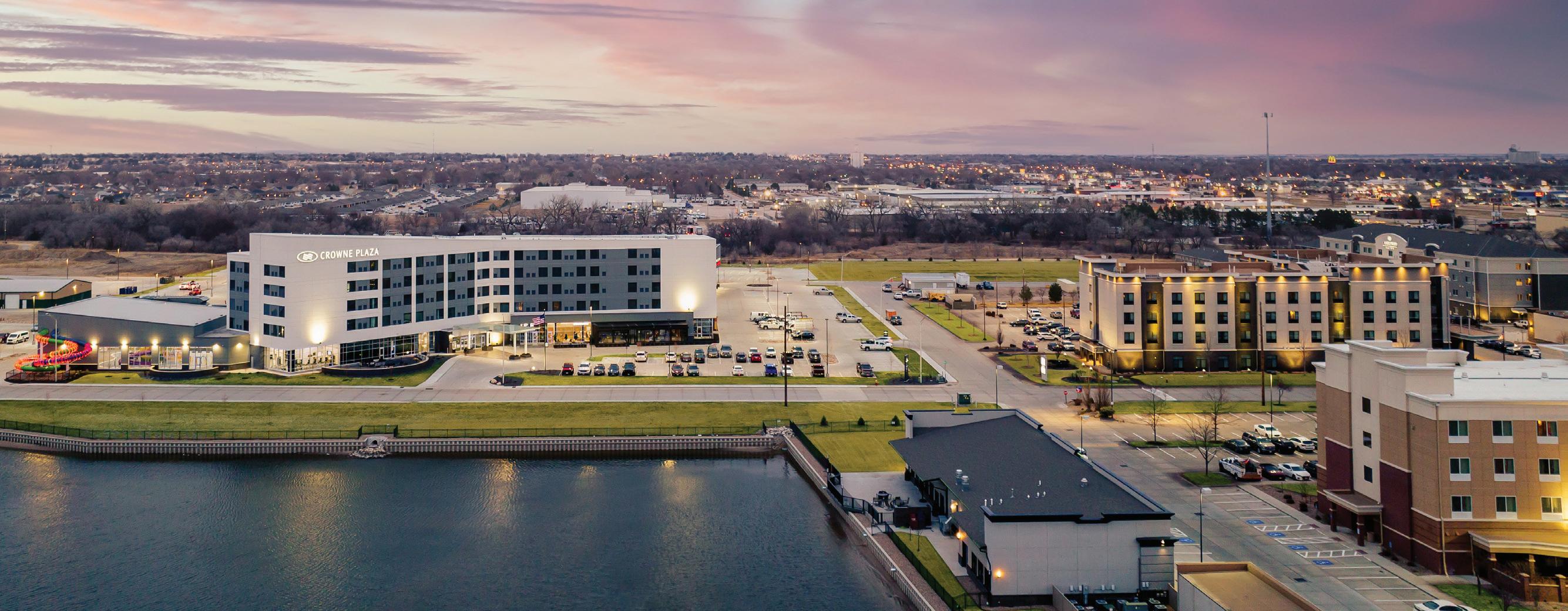


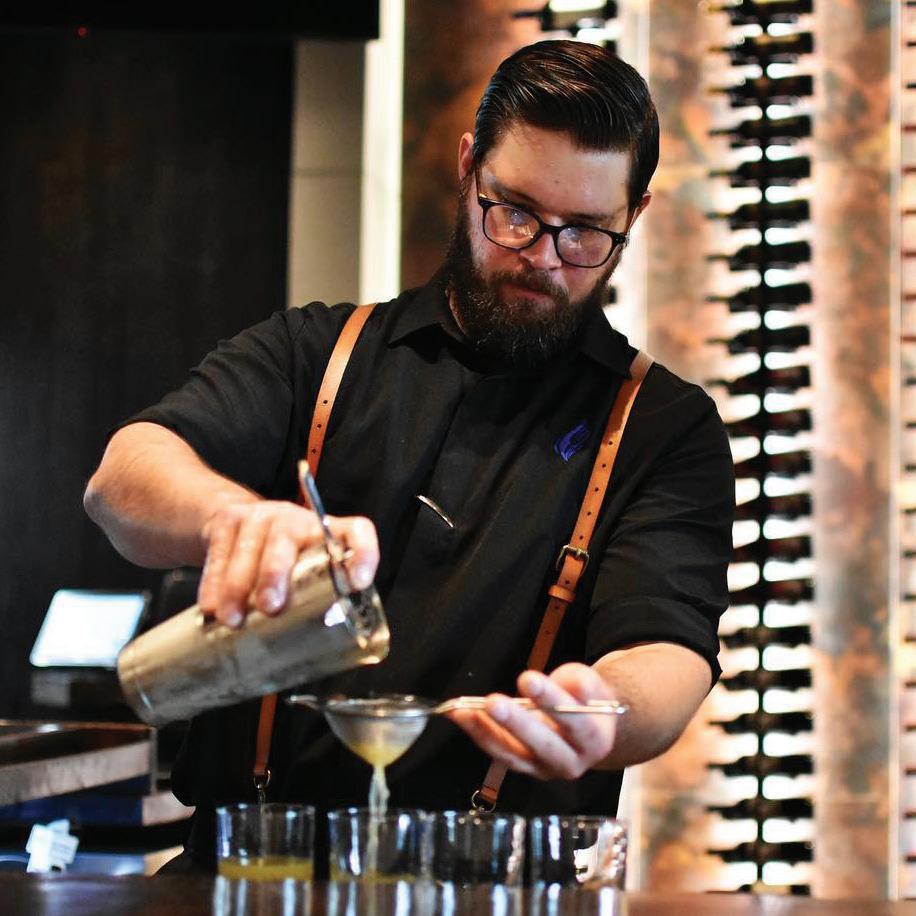
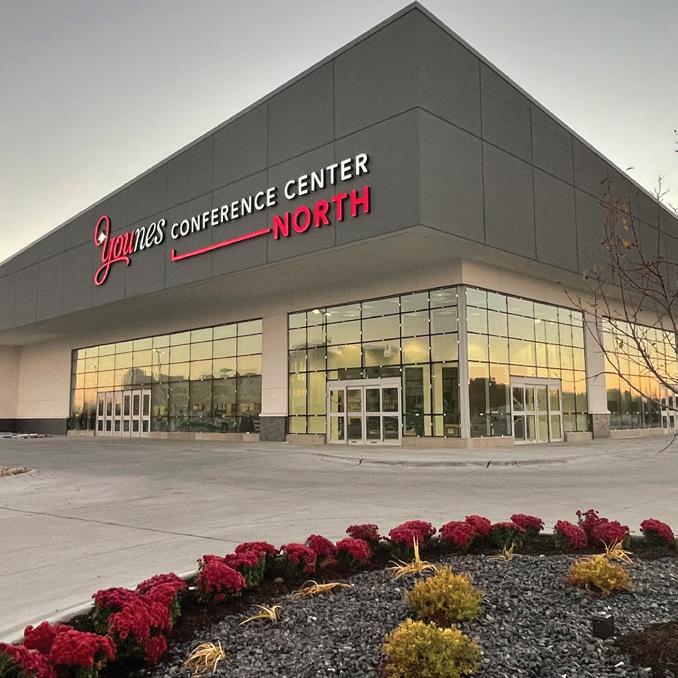

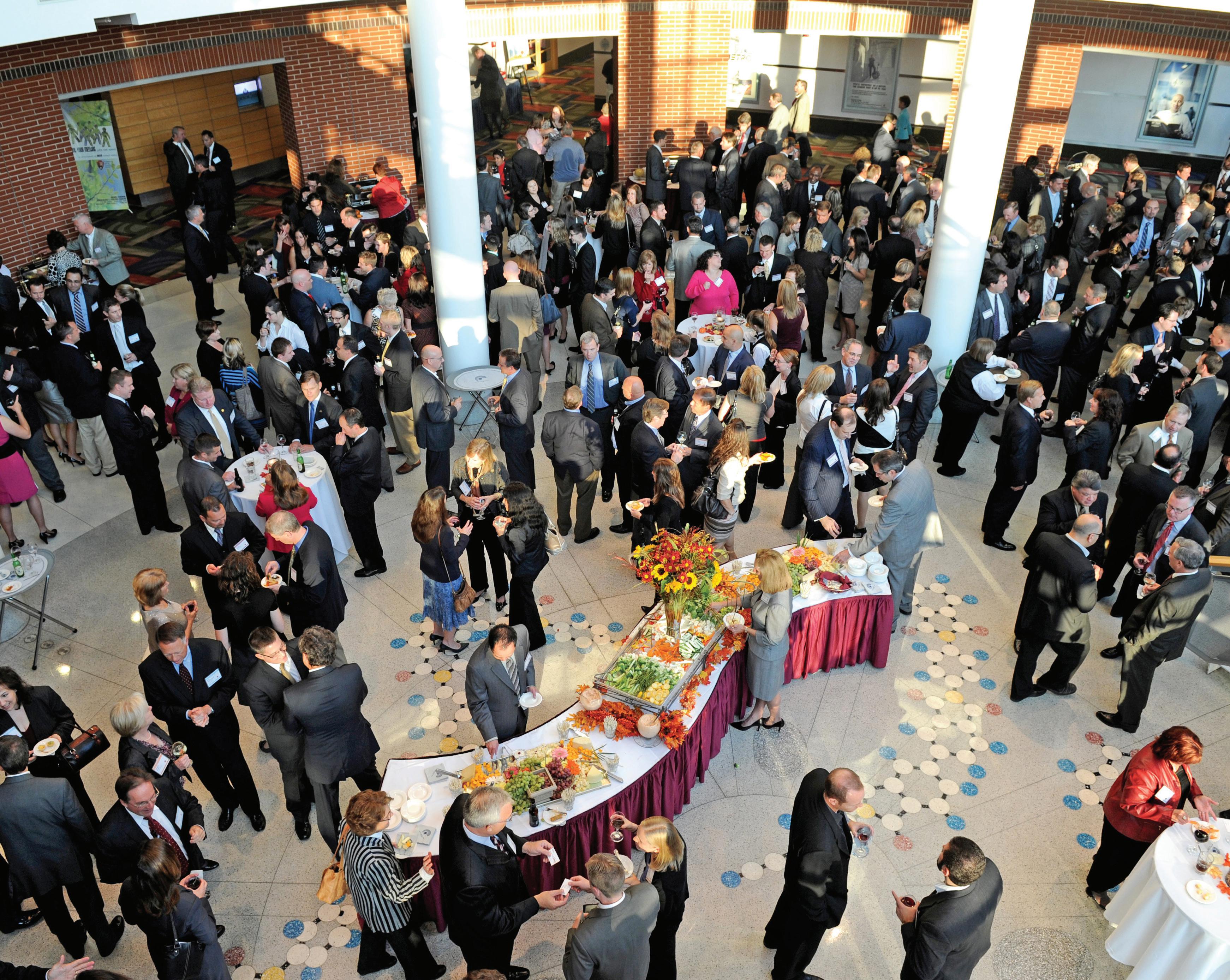
Meeting and event planners are seeking more collaboration than ever from their CVBs, making them an extension of their team and more of a strategic partner in the process.
By Maura Keller
Today’s convention and visitor bureaus (CVBs) have their proverbial finger on the pulse of the communities in which they reside — resulting in expert insights of local venues, regulations and potential conflicts with other major events in the region. CVBs also boast trusted vendor networks that planners can tap into, removing the guesswork and streamlining the overall planning process.
Nikki Gustafson, the director of sales at Visit Greater St. Cloud in Minnesota, says the CVB is intentional about relationship building. “Our sales team is active in not only attending industry events throughout the year, but also volunteering on committees within the industry associations we belong to,” she says. “Networking is invaluable and, by being involved, planners have become familiar with the team on an individual basis, which adds to the trust and partnership when bidding on events comes into play.”
The organization not only offers several complimentary services, but also prioritizes communicating what a CVB is and how, specifically, it can help make planning easier.
“Our content marketing — and our marketing in general — is engaging. From blogs to newsletters, our marketing sets us apart from other destinations,” according to Gustafson. “We work to stay on top of industry trends and share our knowledge.
Our sales team takes pride in the unique prospecting and relationshipbuilding initiatives we’ve coordinated, including familiarization tours, appreciation events as well as curated destination gift items in a box to our top prospects. We spend time brainstorming on things we’ve seen and what we want to do differently to set ourselves apart.”
She points out that planners have the difficult task of organizing an event that not only delivers content,

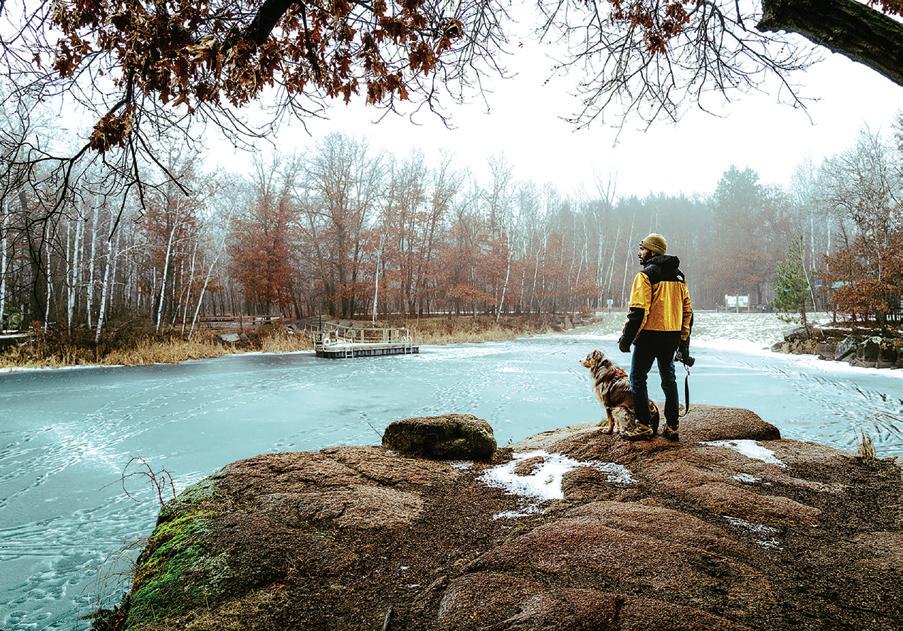

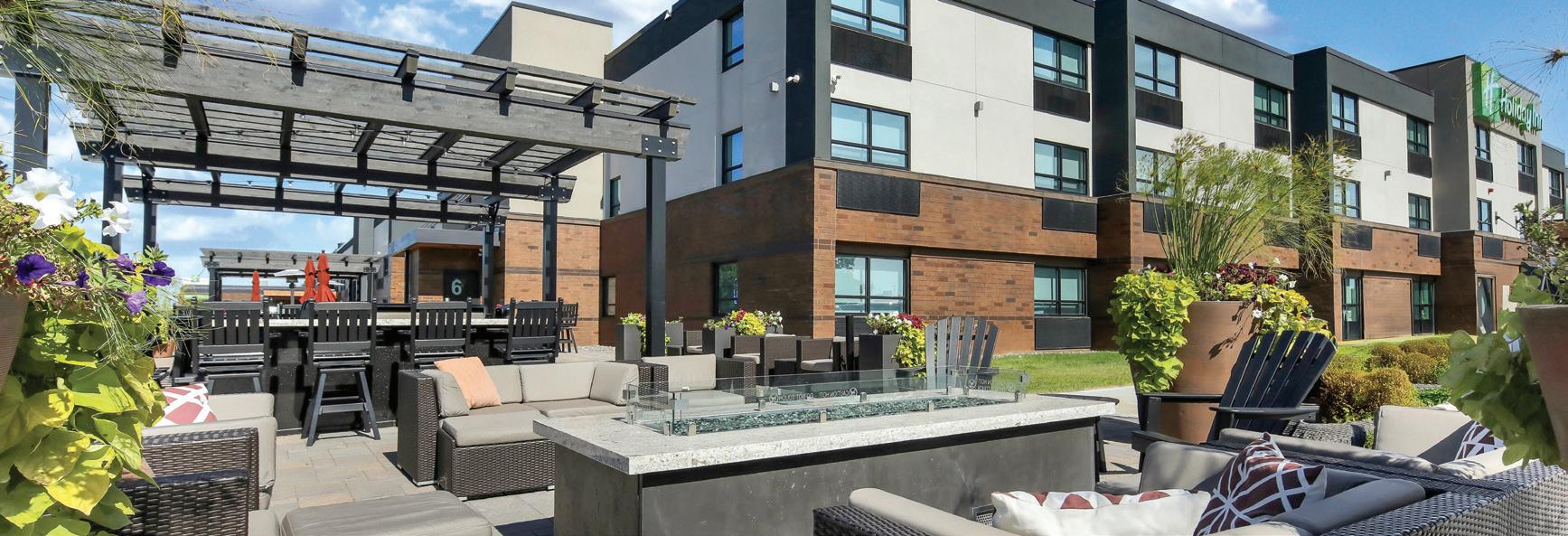
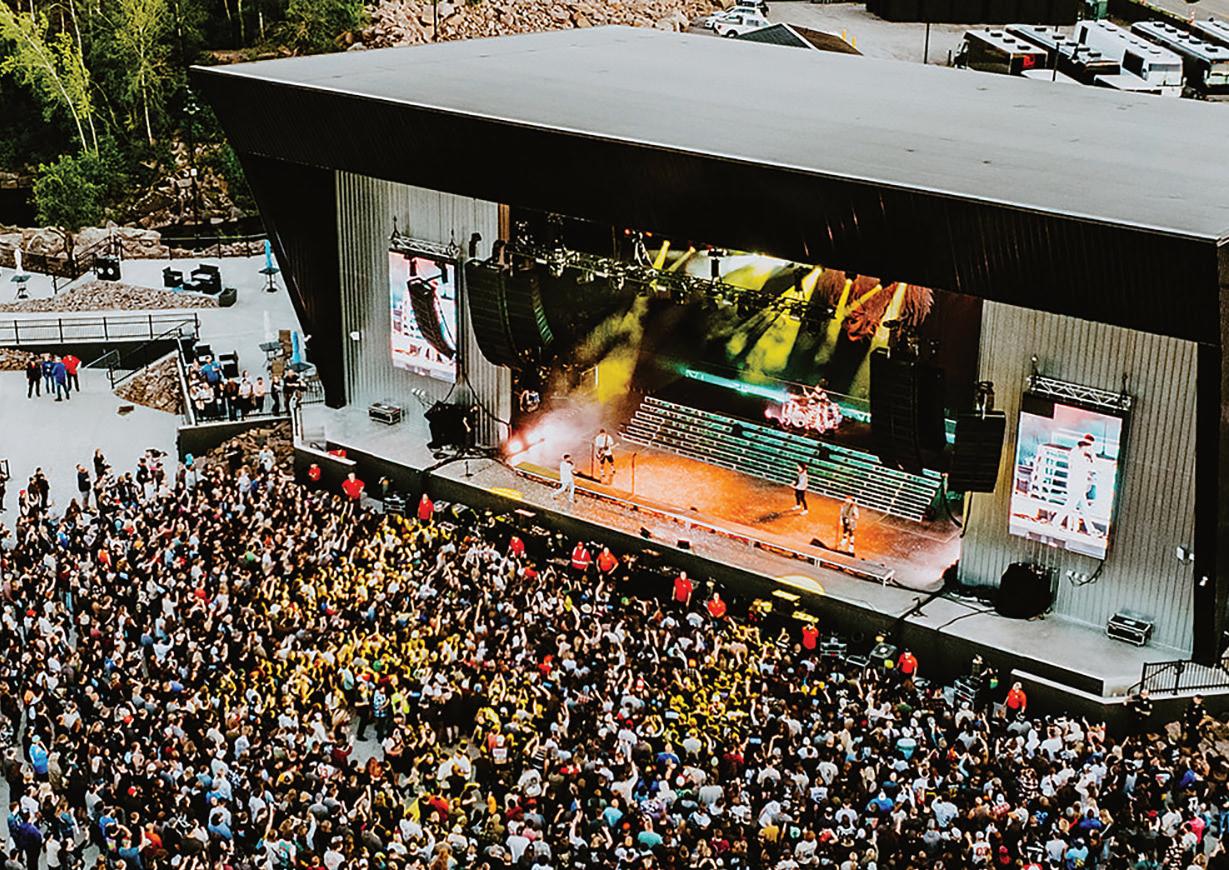
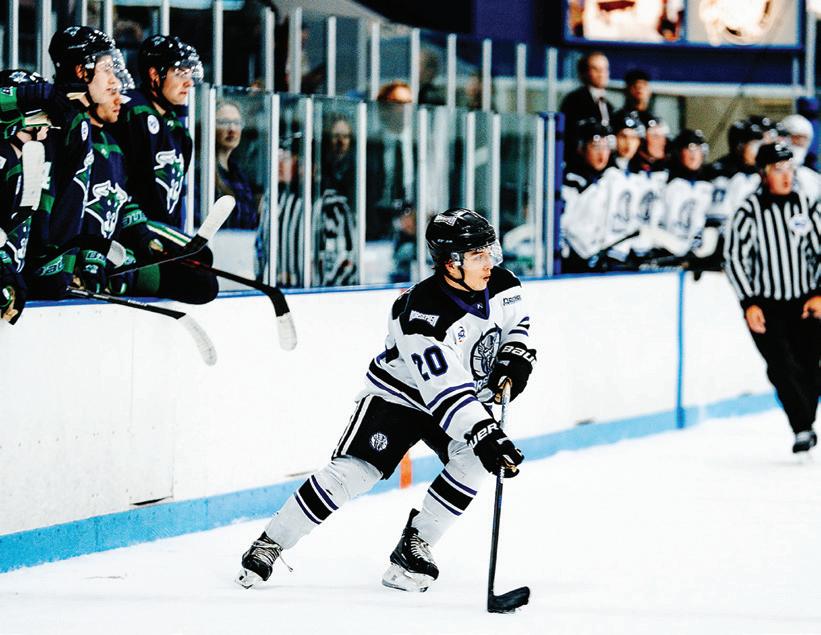
DISCOVER A NEW FRONTIER FOR YOUR NEXT EVENT IN GREATER ST CLOUD. OUR VIBRANT AREA OFFERS A UNIQUE BLEND OF URBAN ENERGY AND NATURAL BEAUTY, MAKING IT THE PERFECT BACKDROP FOR A MEMORABLE EXPERIENCE!
YOUR EVENT, OUR FREE SUPPORT
•1,500+ HOTEL ROOMS
•2 CONVENTION CENTERS WITH 1 THAT HAS 150,000 SQ. FT OF MEETING SPACE
•FLEXIBLE AND UNIQUE MEETING SPACES
•CENTRAL MINNESOTA’S LIVE ENTERTAINMENT HOTSPOT
•EVENT ASSISTANCE PROGRAM
•COMPLIMENTARY HIGH CLASS SERVICES



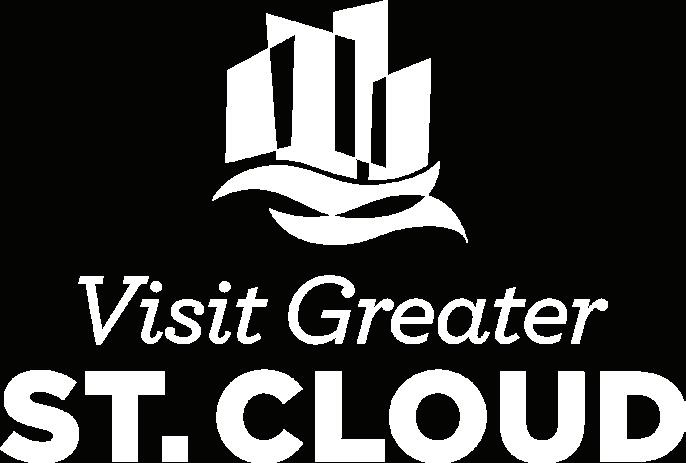
but is also an experience attendees remember so they attend again. The experience from start to finish is important, and this includes how easily attendees can travel to the destination and the interactions they have while they are there.
“CVBs shouldn’t just be responding to requests for proposal. Being that they are the experts of their destination, they should make sure to provide solutions,” Gustafson insists. “CVBs should anticipate potential issues like communicating upcoming construction that could affect traffic, dates that might be impacted by major area events, and venues that have tricky loading docks and how to navigate them, to name a few.”
Indeed, it is the CVB’s job to recommend hidden gems and offer ideas on local partners who are a perfect fit for event goals. They can coordinate special discounts for attendees at area shops, restaurants and nightlife establishments to help welcome everyone, or even offer highquality photos that can be used to promote your event at the destination.
The Akron/Summit CVB in Ohio focuses on building visibility with
A strong CVB relationship is a longterm investment. By fostering a partnership, planners can ensure the success of their current event planning and build an advocate for all future events in that destination.
planners by being intentional and proactive. They attend trade shows and conferences, scheduling appointments in advance to maximize connections.
“Locally, we stay actively engaged in the community and host networking events to strengthen relationships,” says Cindy Coontz, director of sales at the Akron/ Summit CVB. “By aligning our sales and marketing strategies, we ensure consistent messaging, and we leverage digital marketing both to attract new events and to re-engage groups that haven’t been here for a while.” She stresses that CVBs and destination sales managers must be experts on
everything within their destination. It’s no longer just about locating hotels and venues; it’s about helping plan the entire experience.
“From recommending restaurants and coordinating off-site activities to leveraging existing special events and unique local opportunities, today’s destination sales manager is a trusted partner in crafting a complete and memorable event,” Coontz says.
At Heritage Corridor Destinations — the Joliet, Illinois-based CVB that is also the home of The First Hundred
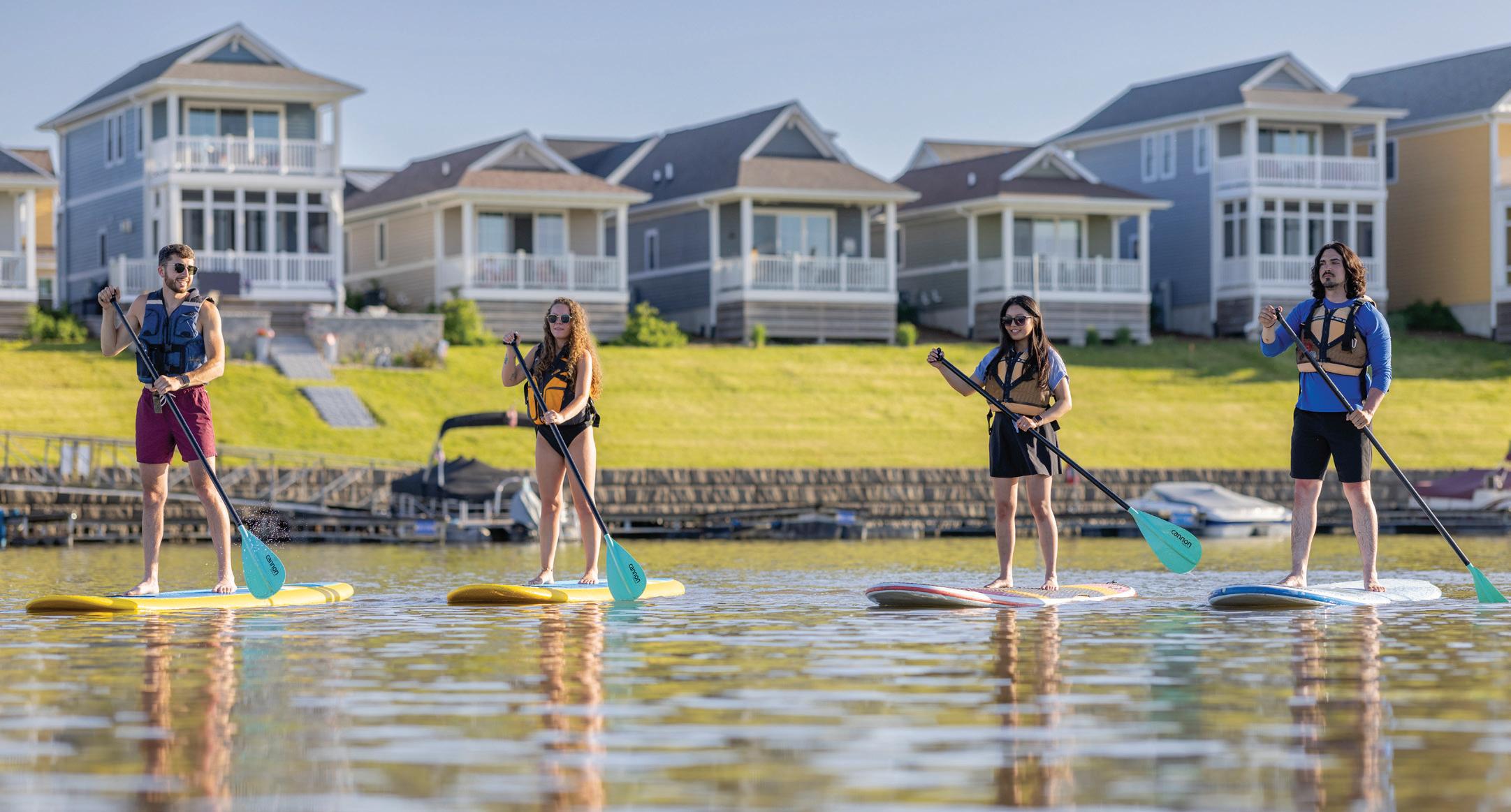
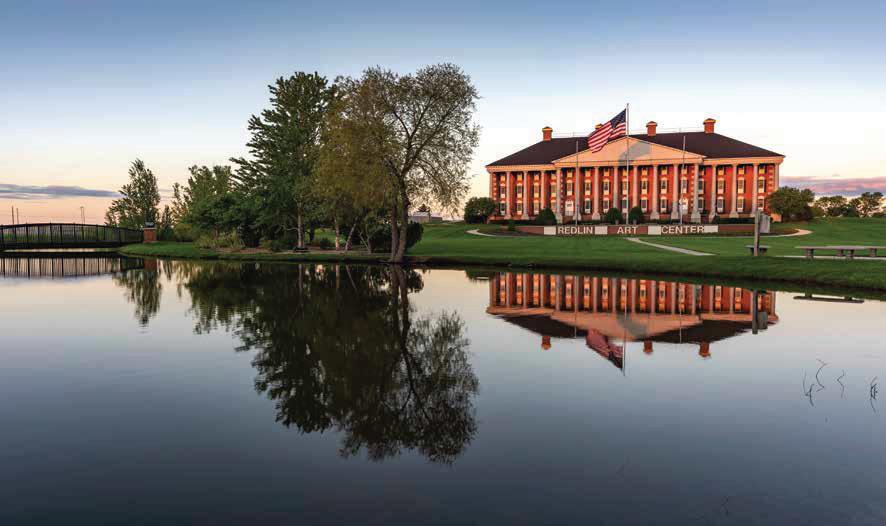
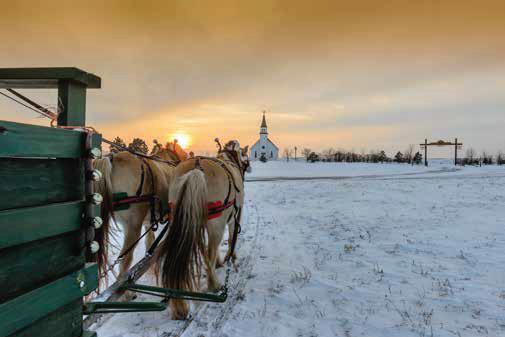
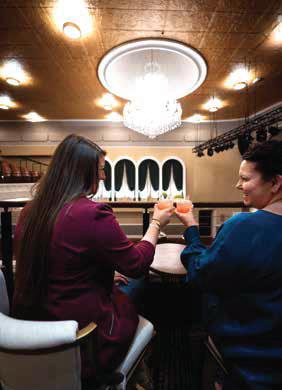
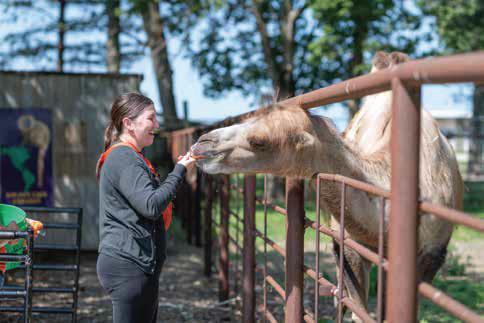
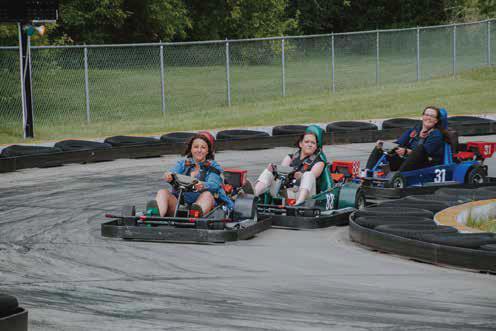

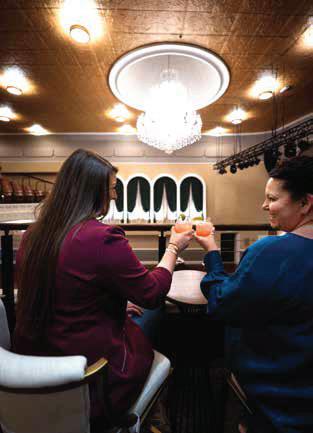
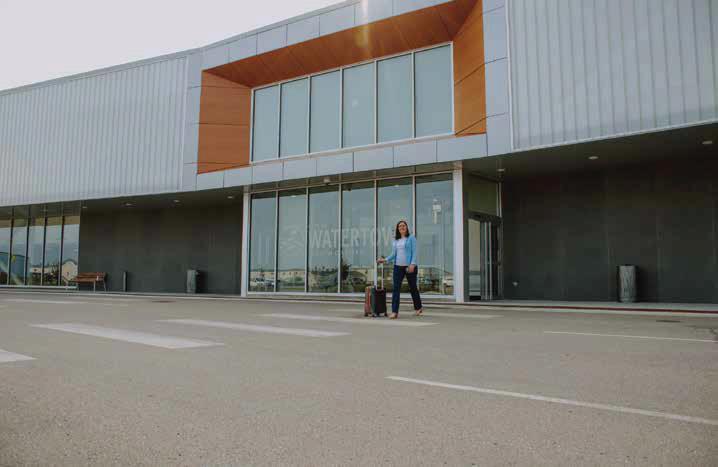
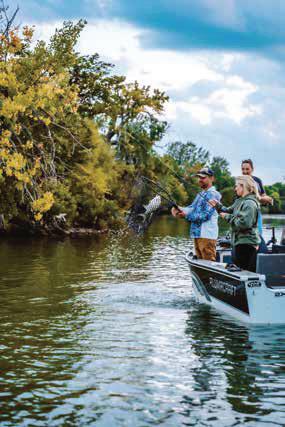
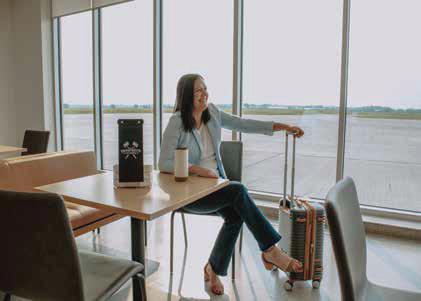
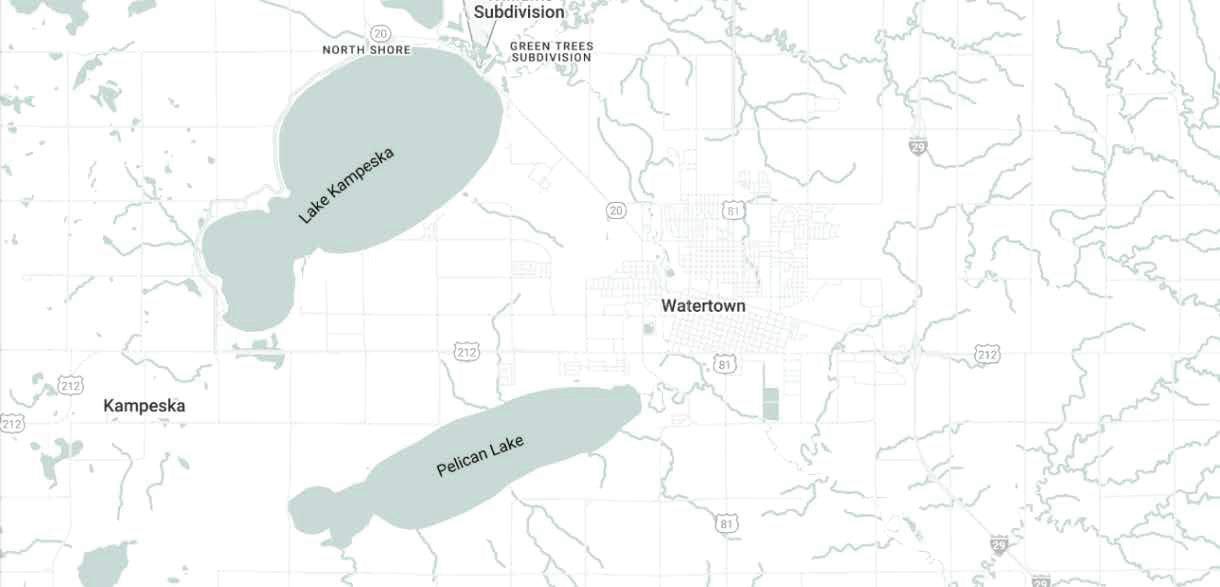
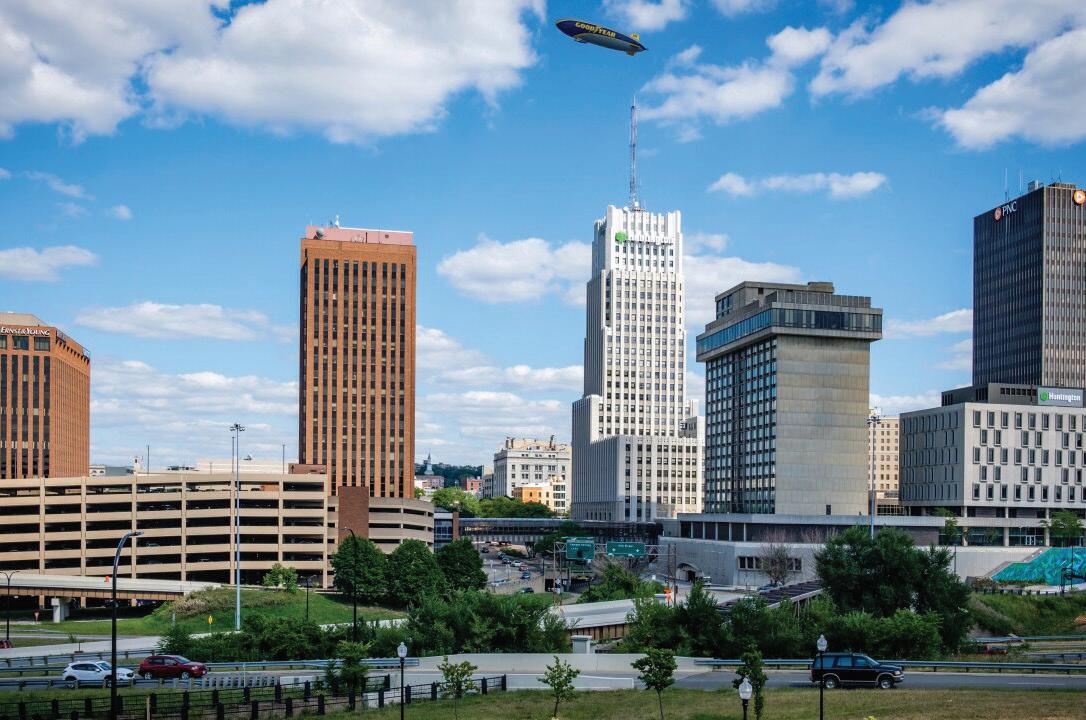
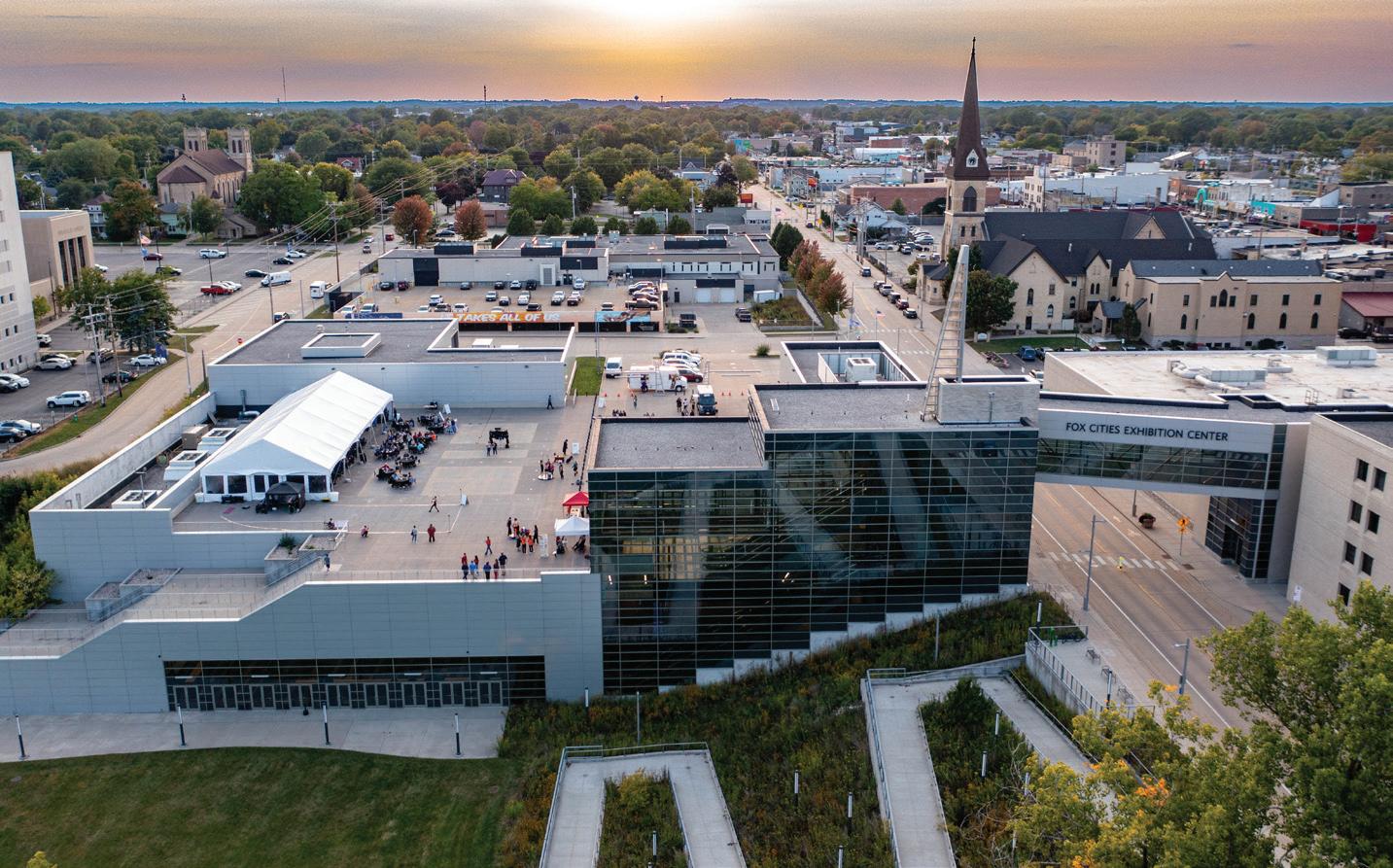
Miles of Route 66, the Illinois & Michigan (I&M) Canal Towns and Starved Rock Country — they focus on building relationships with planners before they ever start talking logistics.
“Planners have a thousand options, so we make it easy for them to see what makes our region unique, whether it’s our historic venues, scenic riverfronts, access to Chicago or relaxed atmosphere,” says Bob Navarro, president and CEO of the Heritage Corridor CVB.
“We attend key industry trade shows, host familiarization tours, and work closely with regional and state tourism partners to ensure planners see the value we bring to the table. It’s about
being present and approachable, and offering solutions before they even realize they need them.”
Navarro recognizes that planners already have a lot on their plates. Therefore, a CVB can be their boots on the ground, connecting them with local vendors, venues and even experiences they wouldn’t find online.
“Going above and beyond means anticipating needs, like arranging transportation, securing permits or even organizing entertainment,” he says. “When planners see that we’re just as invested in the success of their event as they are, it builds trust. That trust leads to long-term partnerships rather than one-time transactions.”
The relationship between CVBs and planners continues to evolve as planners look for more collaboration than ever. They want CVBs that understand the full scope of their event, not just hotel blocks and meeting space.
“Planners want partners who can help them tell a story about the destination, engage attendees and bring new ideas to the table,” Navarro says.
“The relationship has shifted from transactional to strategic and I think that’s a great thing for our industry.”
CVB experts agree that the CVB/event planner relationship continues to evolve thanks, in part, to changes in technology, travel preferences on the part of attendees and the structure of the events themselves.
“What may have started out as planners using a CVB to source venues or gather basic information, has transformed into a deeper collaboration,” Gustafson says. “They want CVBs to be true partners in achieving the overall objective of their meeting or event.”
Relationship building has helped the St. Cloud CVB sales team establish trust with meeting planners. It is important for CVBs to show planners they have their best interests in mind, especially with rising costs and other issues that can affect destination selection, as Gustafson explains.
As such, the key to having a successful relationship with a destination and partner is trust, communication and mutual understanding. Gustafson recommends planners engage with a CVB early in the planning process to receive more strategic and tailored responses. Also, don’t forget the importance of having a postevent meeting to evaluate missed opportunities and future plans.
“While sometimes it can be hard to fit [a post-event meeting] into a busy schedule, simply sharing the conference’s positives and negatives helps the CVB better understand the
At the crossroads of 1-35 & US Hwy 14, Owatonna is conveniently located in Southern Minnesota. Start planning today!
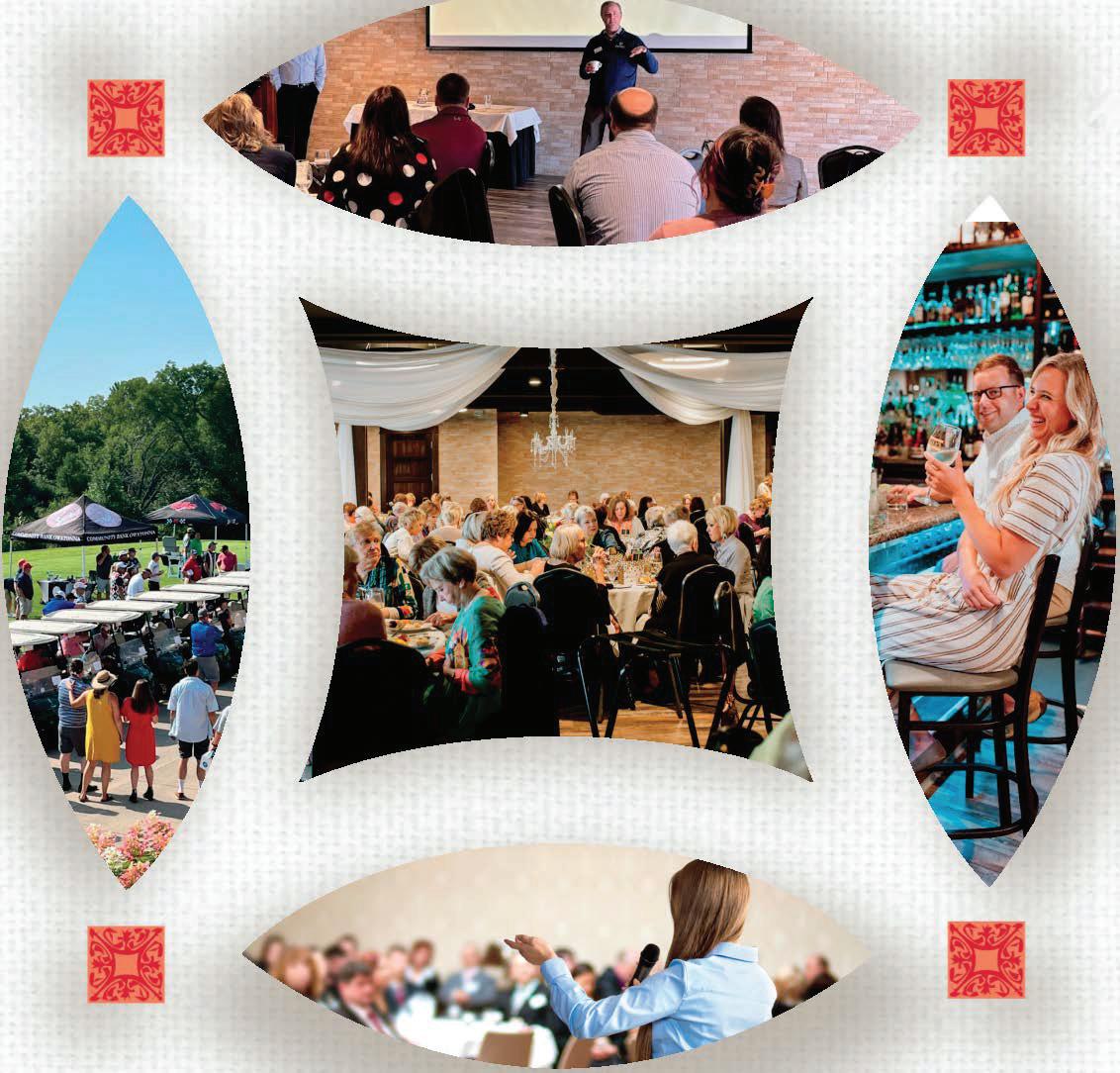

Affordable

Owatonna: Affordable, convenient and stress-free planning for your next meeting
Strategically located on the 1-35 corridor, Owatonna offers meeting planners an affordable alternative to large metropolitan areas. With its blend of small-town charm and robust infrastructure, a stress-free and cohesive experience is ensured for your attendees.
Owatonna's capacity for events is highly flexible. For corporate gatherings, the Historic Downtown area provides unique meeting venues like Torey's Restaurant & Bar, the Zamboni Event Center, or the Owatonna Eagles Club, placing attendees near unique local shops, entertainment and dining. With the CourtyardMarriott offering 106 rooms in the heart of it all, downtown is a venue in and of itself.
For prestigious or high-end functions, the Owatonna Country Club offers a beautiful, exclusive setting with exceptional hospitality. Several hotels are within a five-minute drive from the club, including Home2 Suites, Country Inn & Suites, Baymont by Wyndham, and Quality Inn, offering a variety of lodging options.
T he Four Seasons Centre, with over 50,000 sq. ft. is perfect for trade shows and other large-scale needs. Unparalleled indoor/outdoor space is accommodated by the Steele County Fairgrounds, a proven event hub all year long, and home to the Steele County Free Fair.
Lodging is never a concern, with 11 hotels and over 700 rooms within 10 minutes of anywhere in Owatonna. Anchoring this capacity is the newly renovated DoubleTree Hotel and Conference Center, offering premium rooms and state-of-the-art meeting and banquet facilities with overflow options at the Comfort Inn & Suites, right next door, and Super 8 just down the road.
Choose Owatonna to prioritize efficiency, budget control, and authentic community hospitality for your next meeting. Owatonna is committed to delivering a memorable experience!
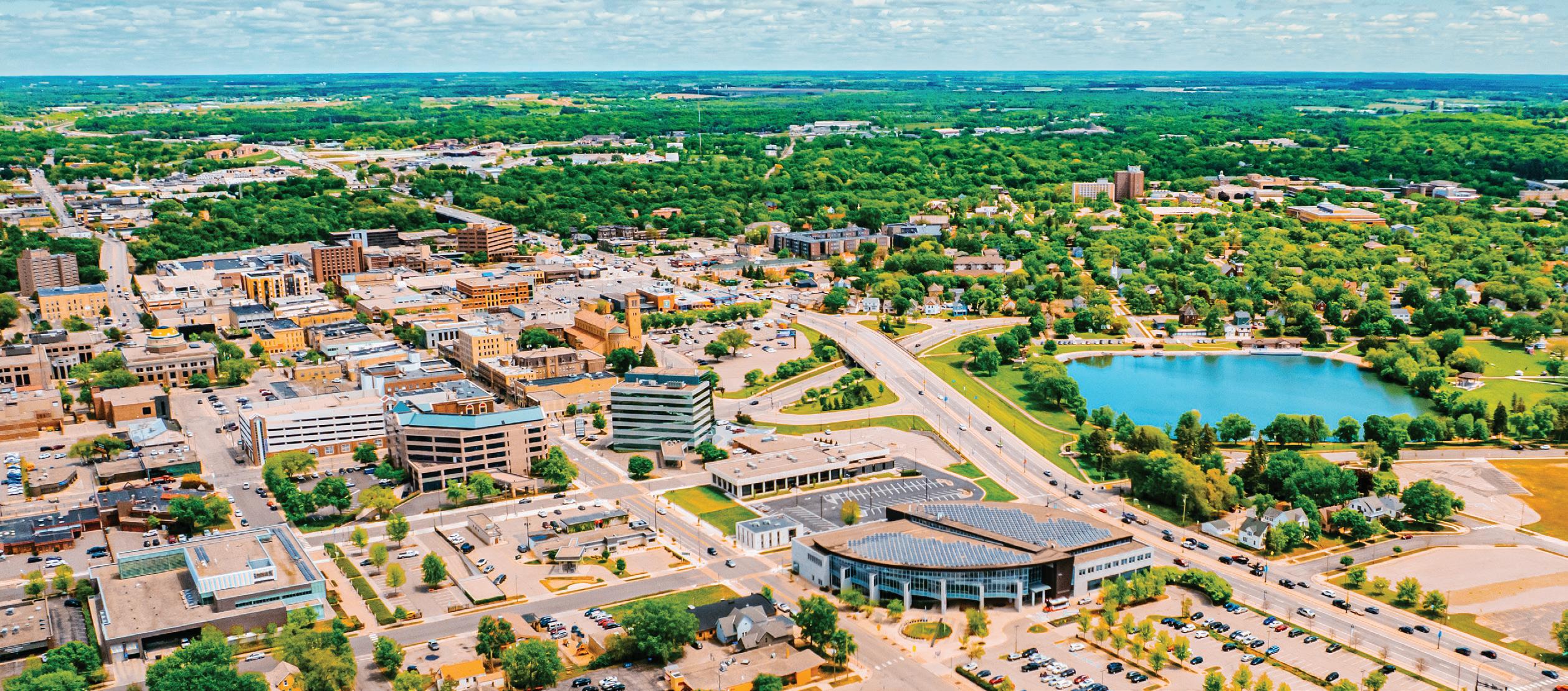
event, and what improvements (and celebrations) can be made with the area venues,” emphasizes Gustafson. “A strong CVB relationship is a longterm investment. By fostering a partnership, planners can ensure the success of their current event planning and build an advocate for all future events in that destination.”
By adapting, innovating and offering a full spectrum of destination expertise, CVBs and destination sales managers foster trust and create experiences that bring planners and attendees back. “The key to a successful relationship with a destination and
its partner CVB is collaboration built on trust, transparency and shared goals,” Coontz shares. “Event planners should view the CVB as an extension of their own team, leveraging their in-depth local knowledge, community connections and resources. Open communication, consistent followthrough and a commitment to creating value for all stakeholders turn a transactional interaction into a long-term partnership that drives successful, repeat events.”
For planners looking to take a more collaborative approach with CVBs to strategize and execute their events,
Gustafson stresses that it comes down to involving the CVB early within planning. This could be as early as the initial research and brainstorming phase in order to share the vision of the event when it comes to “musthaves” and “nice-to haves.”
“The earlier a planner brings a CVB into the conversation, the more resources we can leverage to make the event successful,” Navarro confirms. “We can help with site selection, marketing support, and even access to grant or sponsorship opportunities. Treat your CVB like a partner, not just as a resource, and you’ll unlock
Because
of our high level of involvement, the event felt smoother, more polished and more meaningful to attendees. The local stakeholders were more invested, the content was richer, and the attendance and satisfaction were higher. For the planner, having Heritage Corridor Destination
act as more than just a logistics vendor — but as a strategic partner — meant less stress, more creative ideas and stronger buy-in from all levels of the community.
— BOB NAVARRO, HERITAGE CORRIDOR DESTINATIONS

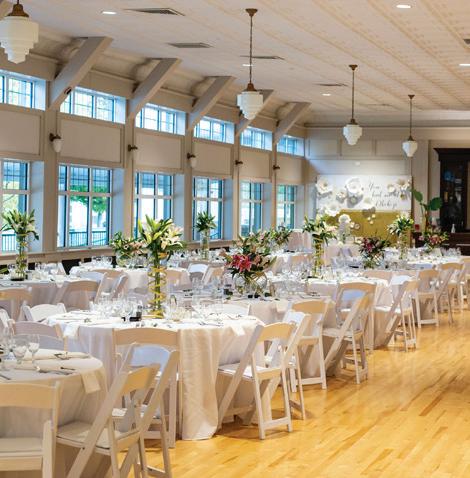
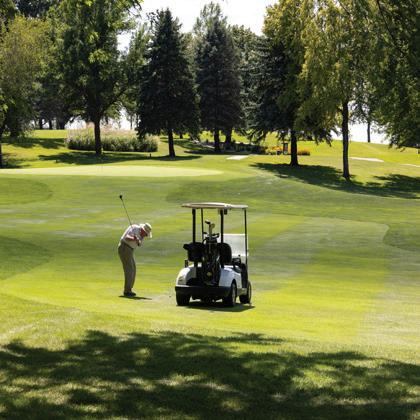


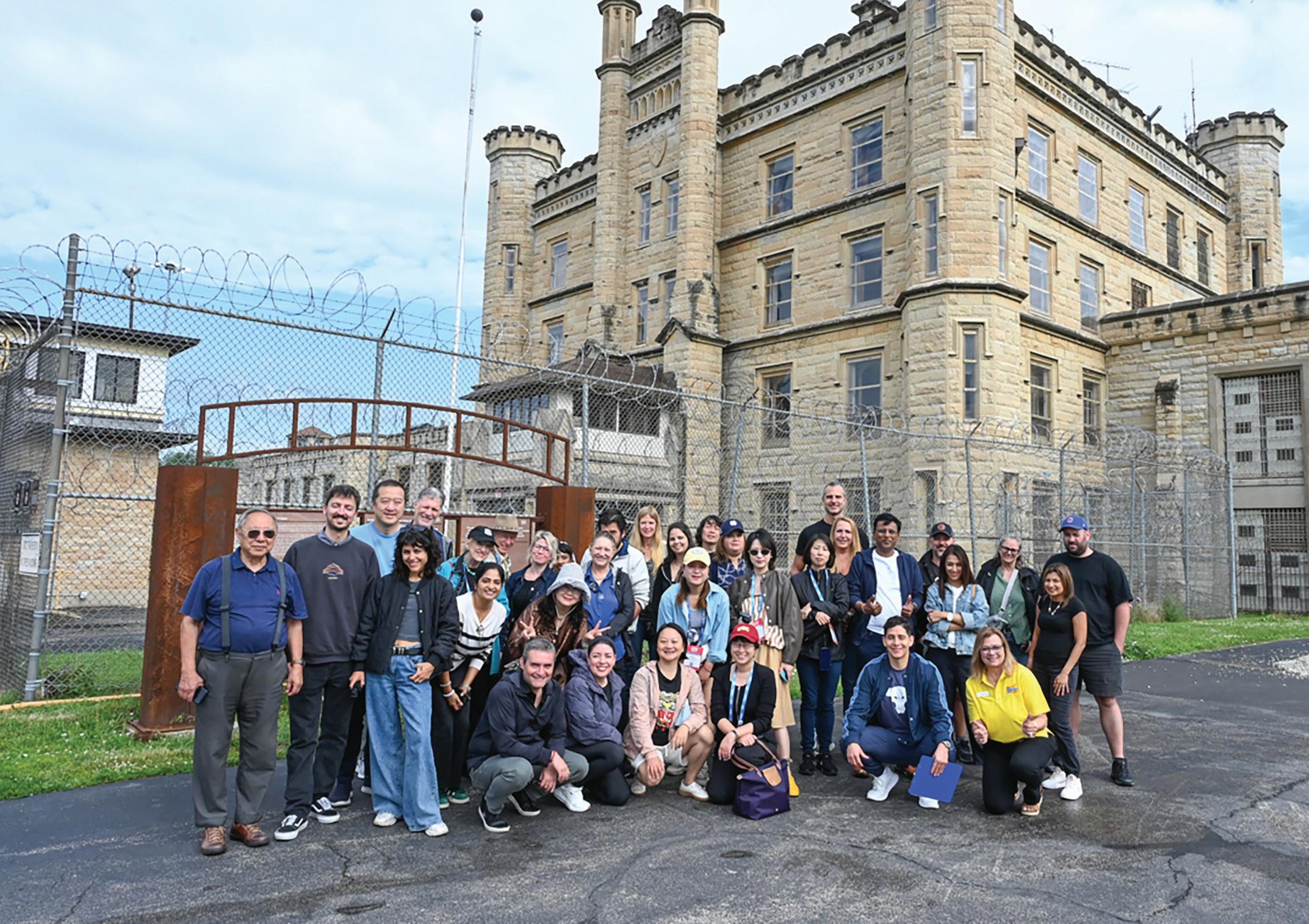
creative solutions you didn’t even know were available.”
A key example of partner collaboration is in Heritage Corridor Destination’s role in supporting and enhancing the Route 66 Centennial Summit held at the Joliet Area Historical Museum. The summit was a complex regional event celebrating the past, present and future of Illinois’s iconic Route 66. It featured a mayor’s panel on centennial celebrations, updates on Route 66 grant projects, state and national initiatives, a keynote and travel expert presentation, plus networking, entertainment and workshops.
“Because of our high level of involvement, the event felt smoother, more polished and more meaningful to attendees,” Navarro says. “The local stakeholders were more invested, the content was richer, and the attendance and satisfaction were higher. For the planner, having Heritage Corridor Destinations act as more than just a logistics vendor — but as a strategic partner — meant less stress, more creative ideas and stronger buy-in
from all levels of the community. That kind of success builds trust, and it’s precisely the kind of experience that leads planners to return and recommend the destination for further future events.”
Another solid relationship-building example is the Miles of Possibility Route 66 Conference, which returned to Joliet October 9 through 11 this year. When the event first came to the region, Heritage Corridor Destinations worked closely with the planners to connect them with local venues, lodging partners and community leaders to create a conference experience that was seamless and deeply tied to the Route 66 story.
“Because of that collaboration — and the strong attendance and positive feedback it generated — the planners chose to bring the conference back to Joliet,” Navarro says. “It’s proof that, when a CVB goes beyond logistics to help create a meaningful event experience, it builds trust and lasting partnerships that benefit both the planner and the destination.”
Meeting and event planners should welcome any additional hands-on assistance a CVB can offer. Be sure to use any marketing support; it could include high-quality photos, videos, destination guides and promotional copy to get attendees even more excited about the location.
“Recognize that your CVB is your partner, and can handle coordinating site visits, gathering proposals, connecting with local suppliers and more,” advises Gustafson.
One of the special events Visit Greater St. Cloud has the privilege to host is the Minnesota Senior Games. This is a rotating event between the greater St. Cloud area and another community. The CVB’s sports director spearheads all the venue selections and forms the local planning committee along with local athletes that run different aspects of the games.
“This event has a lot of different logistics and more than a year is spent on planning. To be successful, our
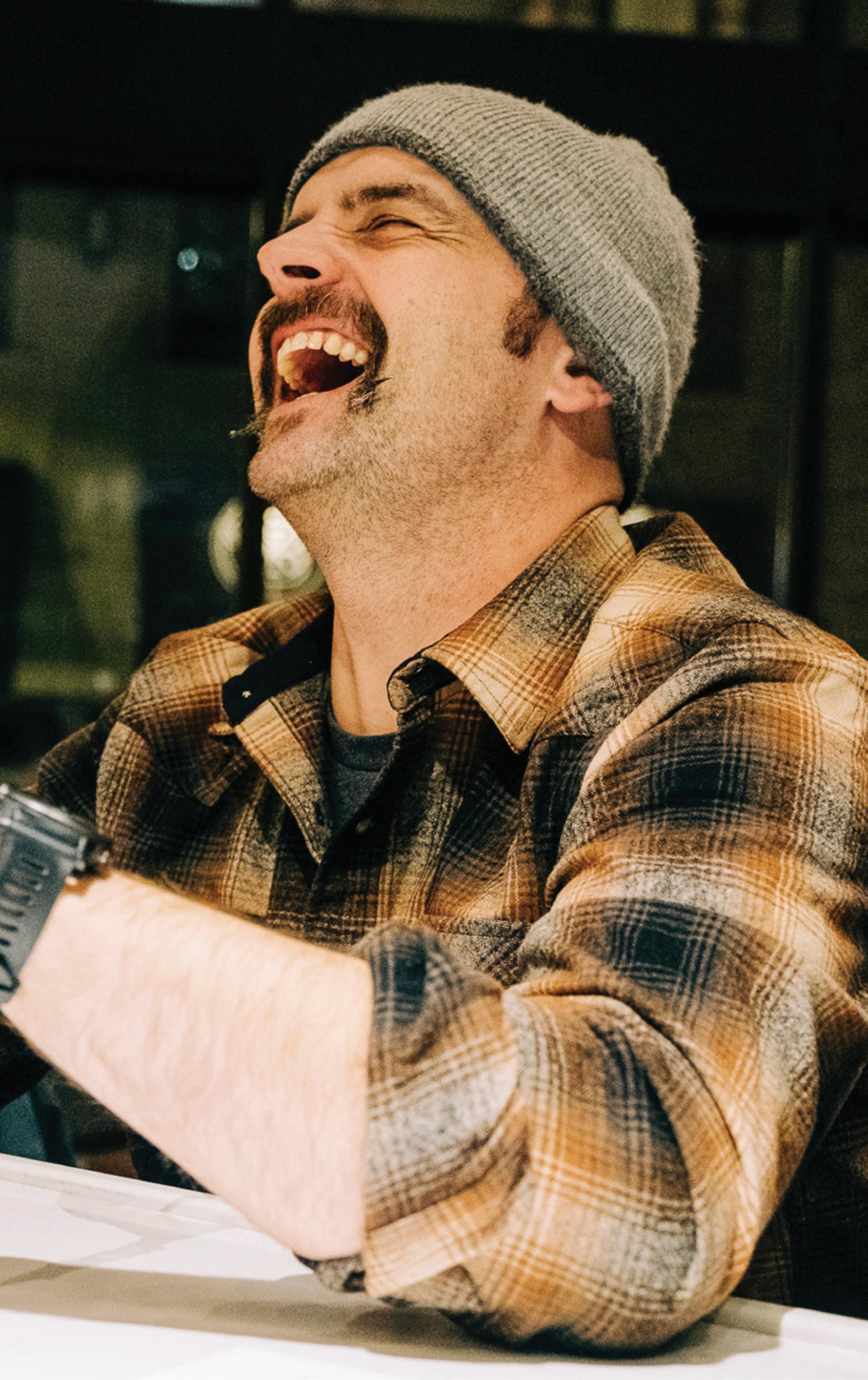
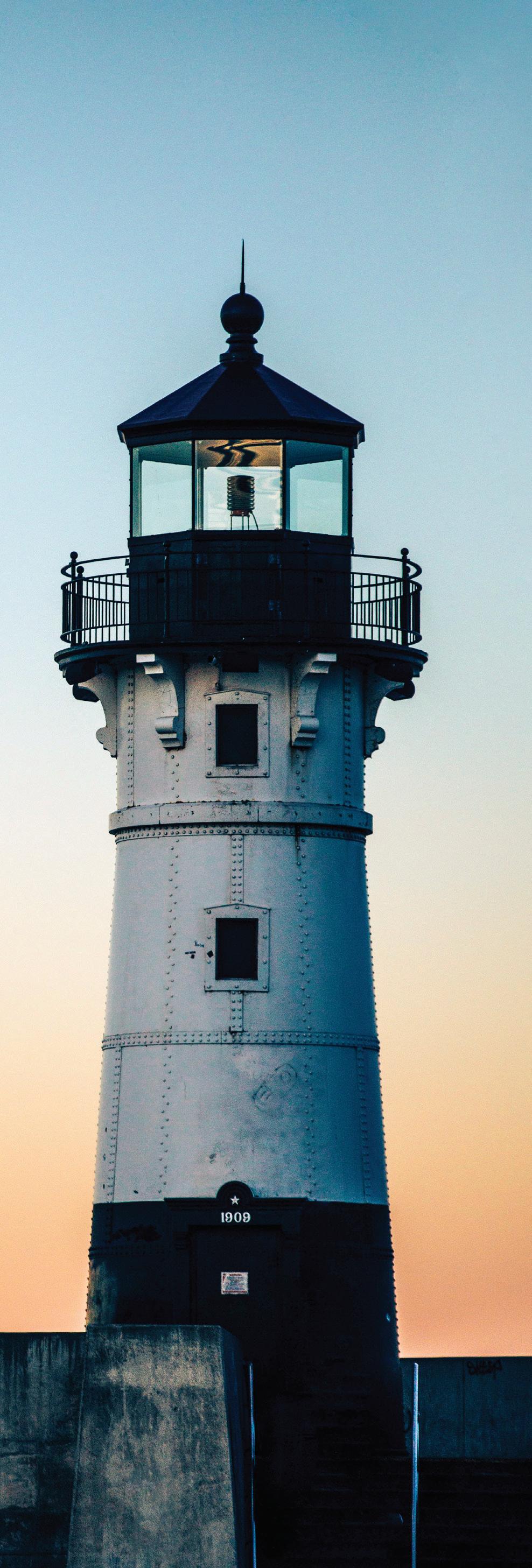
Event planners should view the CVB as an extension of their own team, leveraging their in-depth local knowledge, community connections and resources. Open communication, consistent followthrough and a commitment to creating value for all stakeholders turn a transactional interaction into a longterm partnership that drives successful, repeat events.

staff each plays a role in assisting and working the games,” Gustafson says. “I’ve been a timekeeper, presented medals, taken photos, made athlete announcements on site, marshaled road races and cycling events, and assisted at venues, to name a few. Due to our involvement, we have helped secure several future years.”
When it comes to conventions and conferences, the Minnesota Quilt Show has a huge impact on the St. Cloud area and the marketing of the show is key. The CVB team not only assists at registration, but also works the hospitality area, aids with Granite City Quilt selection, provides lanyards and name badge supplies, and helps coordinate honor quilts for K-9 units in the area.
“While we assist groups of all sizes, larger events need more volunteers and some have difficulties with this,” Gustafson says. “Because this is an area we freely promote and help with, their job has been made a little easier, and we can help showcase our area in a way that is helpful and memorable.”
Most recently, the Akron/Summit CVB hosted an event that had previously remained in the same location for 18 years. As the organization evolved, nevertheless, it wanted to embrace and showcase other destinations within the state.
“Working together, we helped plan engaging Learning Lab Tours for attendees, organized large off-site events that highlighted our community and aligned the experience with the organization’s vision,” Coontz says. “The result was a true communitywide effort — one that not only celebrated the event’s mission, but also demonstrated the strength and spirit of our destination.”
Coontz stresses that success comes from taking a holistic approach, becoming a trusted partner (and even a friend), making a genuine financial commitment and adopting the client’s vision as your own. “By building on that vision year after year, we not only ensure the success of their event, but
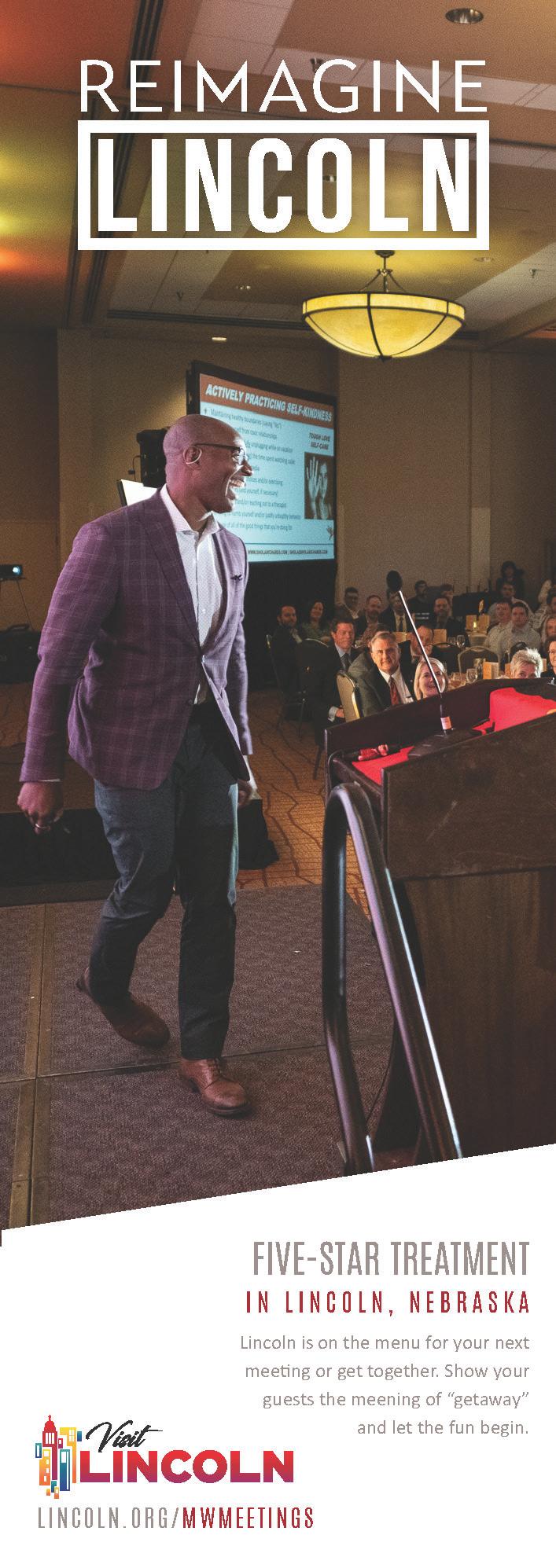
Is your group ready to embark on an exciting adventure in the heart of the Midwest? You are in luck! Lincoln offers a host of exciting and engaging activities that are perfect for groups. Classic elegance, artistic charm and modern amenities await at unique meeting spaces across the city.
After the meeting, your attendees will want to stay entertained and Lincoln is bursting with opportunities to explore. We are positive you will be pleasantly surprised by the wide array of affordable, comfortable and impressive options in our city.
Visit Lincoln
3 Landmark Centre, 1128 Lincoln Mall, No. 100 Lincoln, NE 68508
402.434.5344 dfeyerherm@lincoln.org Lincoln.org
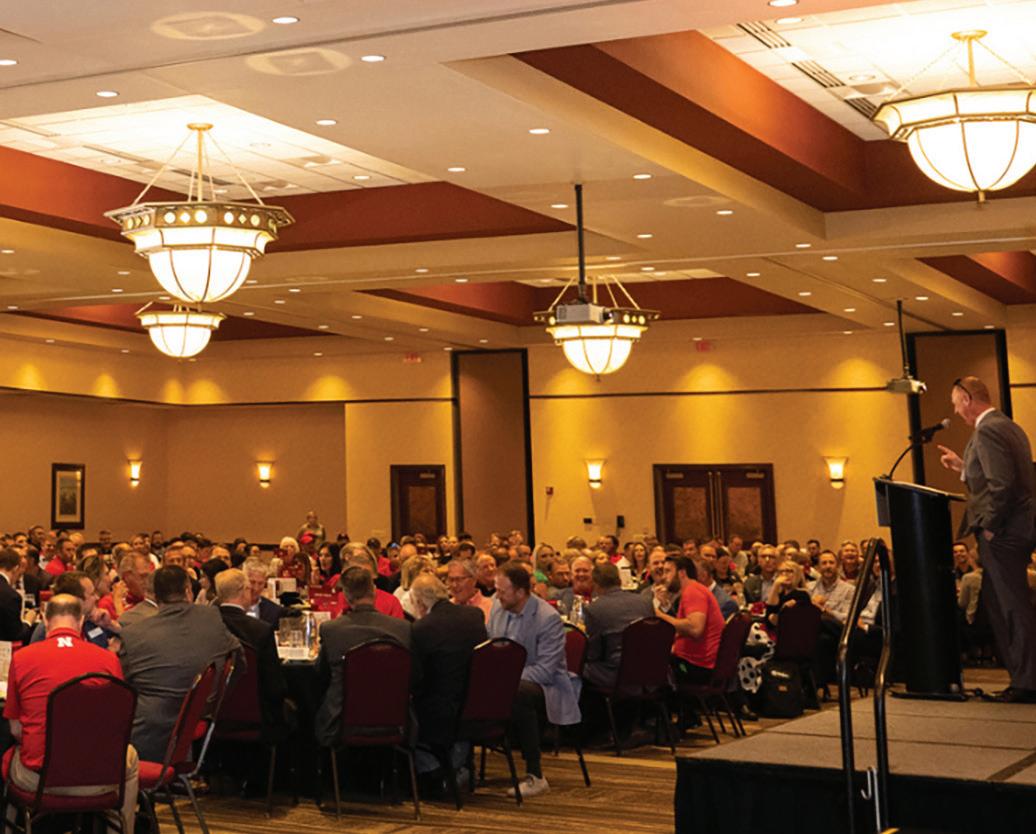
•
•
• Visitor information and guest services
• Publicity assistance and promotional items

also create a lasting partnership that grows stronger over time,” she says.
Of course, CVBs are eager to go above and beyond to make sure all of a planner’s needs are being met. That includes trying to find solutions for some of their most unique requests. While some can be accommodated, others may be too far-reaching for even a professional CVB team to handle.
Recently, Visit Greater St. Cloud was tasked with coordinating and sponsoring a familiarization tour for a prospective out-of-state event planner. “We were asked to also cover the cost of family members to travel along. We weren’t able to deliver or discuss alternative options because the planner discontinued communication when it wasn’t an immediate ‘yes,’” Gustafson says.
For another event, the CVB was tasked with taking photos of different objects in booths or on the trade show floor for a photo scavenger hunt.
“We were told to make the photos tricky so someone couldn’t immediately tell what it was,” Gustafson says. “After completing the task and putting together the questions for the photo scavenger hunt, we were told the photos were ‘too tricky’ … After two more times taking photos, the last photos were ‘too easy,’ so the client decided to just skip the photo hunt altogether.”
In another instance, an event planner needed to run to Target and didn’t have time. The St. Cloud sales team offered to go on her behalf and, when asked what was needed, she requested a new hairbrush, shower gel and a loofah. “We asked if there was any preference on the brush or shower gel, and there wasn’t, so the Visit Greater St. Cloud team did their best picking out what they thought she would like,” Gustafson remembers.
The Akron/Summit CVB also prides itself on its own creativity and exceeding client expectations. “For example, we’ve showcased our local flavor by treating attendees to
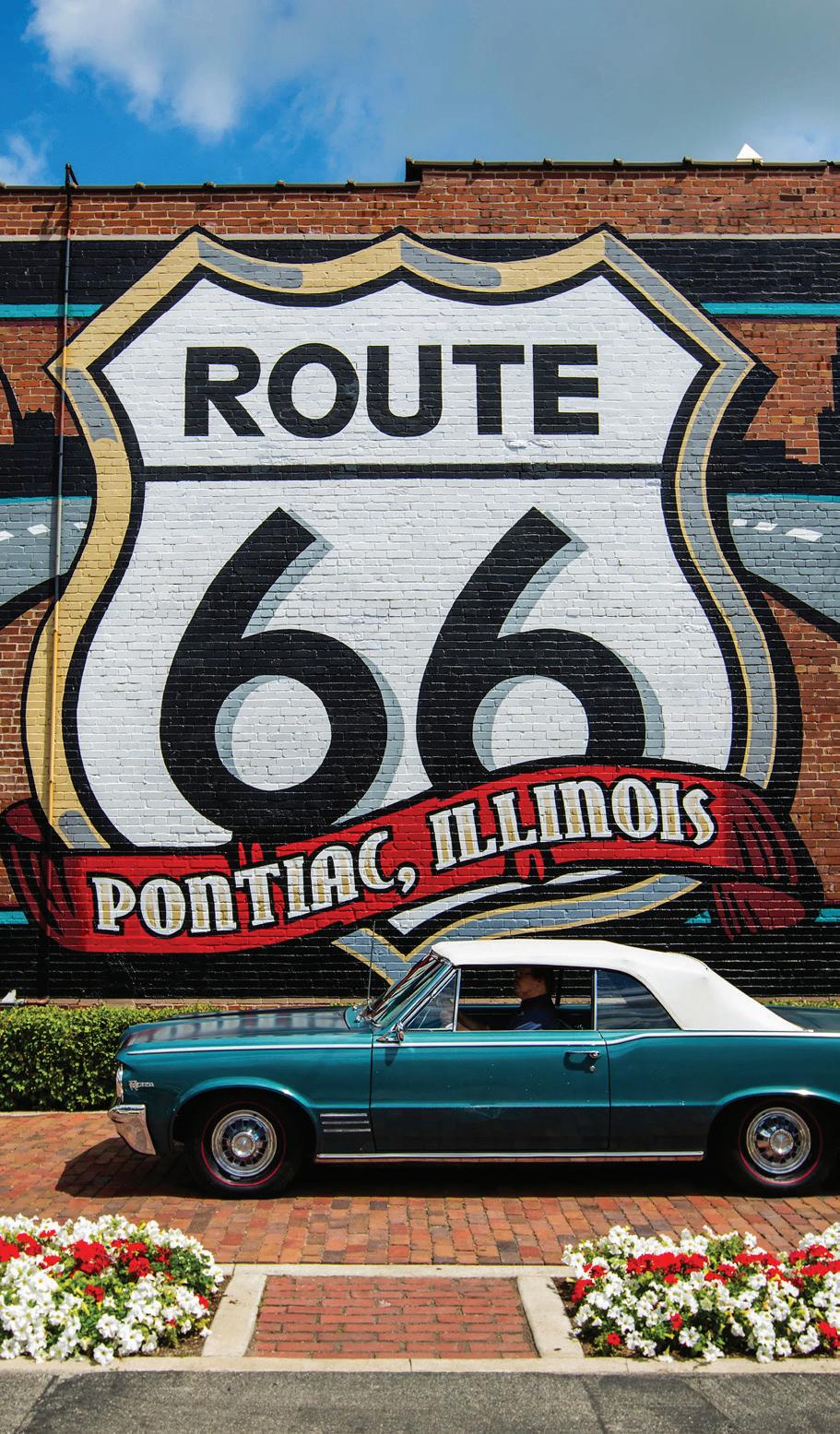
Swensons’ Galley Boys, a hometown favorite, and brought excitement to life with soap box derby experiences that let guests feel the thrill of the hill,” Coontz says. “These unique touches create memorable moments, and we’re always ready to uncover even more creative ways to showcase our destination and surprise our clients.”
Of course, the most successful partnerships are built on a CVB’s willingness to act as a true extension of the planner’s team. Instead of just providing hotel leads and venue information, Visit Greater St. Cloud also provides a human touch.
“The same staff that helped with venue information is also on site to say hello and check in on the event,” Gustafson says. “Offering to help with any last-minute items has always been something planners appreciate.”
The St. Cloud CVB often offers creative solutions when needed. For instance, they can work with planners to organize a unique, off-site networking event that showcases the destination’s

In Salina, we believe every event should be as unique as the people who plan it. Your attendees will have the perfect place to stay, and plenty to do while they’re here, with 2,000+ hotel rooms and 30+ attractions. Take advantage of our complimentary planning services and make us your rst call.
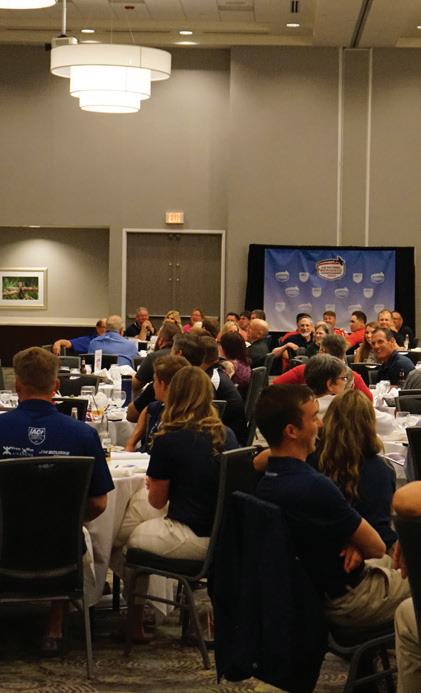
Samantha Uhler • 785.827.9301 • suhler@salinakansas.org

Pella, Iowa, is an ideal location for business events or family gatherings, offering versatile venues and warm hospitality rooted in its rich Dutch heritage. Guests can enjoy the town’s unique architecture, local cuisine, and gardens, while dedicated local businesses provide professional service and customized, memorable itineraries. Pella blends small-town charm with professional amenities for a truly special experience.





Heart of the Heartland: Host your next business conference or family reunion in Pella, Iowa, where warm Dutch hospitality sets the stage for success.
Venue Variety: From sleek modern conference halls to captivating historic venues, find the perfect space to accommodate any group size.
Cultural Immersion: Treat your guests to an itinerary filled with stunning Dutch architecture, delicious treats from local bakeries, and strolls through beautiful gardens. Dutch Hospitality: Pella’s dedicated local businesses deliver exceptional, customized service, blending irresistible small-town charm with top-tier professional amenities for a truly memorable event! visitpella.com | 641.204.0885 | info@visitpella.com
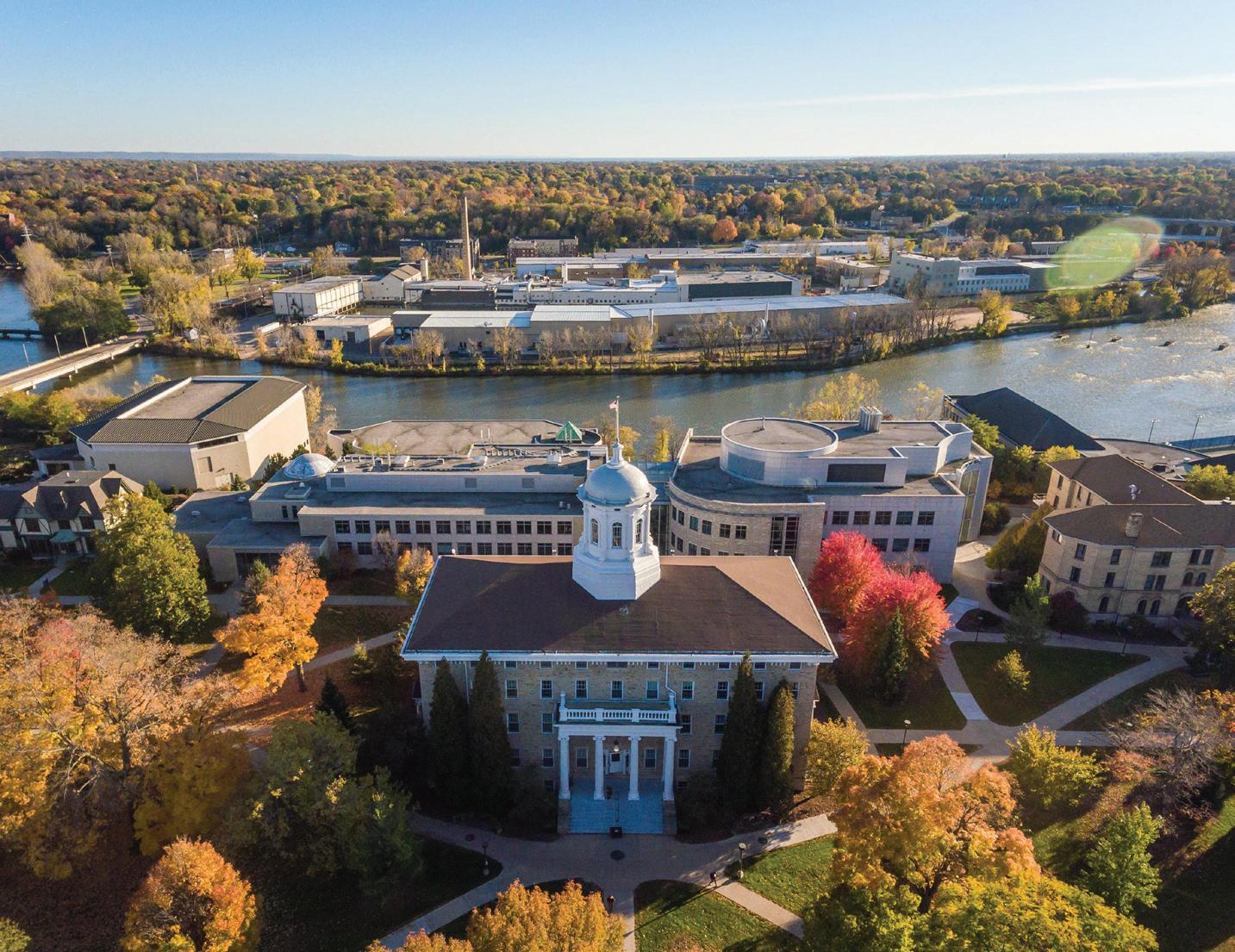
unique culture, like a private dinner at a local museum or a social event at a historic landmark.
“By suggesting and helping to coordinate these distinctive experiences, the CVB makes the event even more memorable, while highlighting their deep local knowledge,” according to Gustafson. “We also address unexpected challenges. When a planner for a large conference had a last-minute on-site challenge, our team used our network to quickly connect the planner with a local expert who could fill in, saving the event from a major setback. It is this kind of rapid problem-solving support in a crisis that can cement a long-term relationship.”
Alison Hutchinson, the senior group sales manager at the Fox Cities CVB in Wisconsin, says her CVB takes several steps to strategically connect with meeting and event planners.
In addition to attending and exhibiting at industry events to build visibility, the Fox Cities CVB hosts a “Lunch and Learn” with engaging speakers to educate and connect, organizes a traveling road show with hotels and attractions in an area with a high concentration of planners, and serves on customer advisory boards or
committees to share knowledge and stay engaged, to name a few.
Staying connected with event planners is key for Hutchinson and the entire team at Fox Cities. Recently, the CVB hosted a group of Harley-Davidson Road Glide owners whose annual event is called Shark Week.
“For the initial site tour, their planners all rode their motorcycles to my destination. I rented an SUV to drive them to the bidding hotels and area attractions,” Hutchinson says. “Due to turnover at the host hotel, I ensured all the initial agreements were still honored. I joined monthly planning meetings and assisted with the event agenda. Together, we developed six motorcycle ride routes.
"The CVB provided a welcome banner at the host hotel as well as personalized parking lot signs, and then hosted the opening night gathering with local cheeses and beer. We even helped them secure a scissor lift to use in an aerial photo shoot. It was a unique request that we were happy to fulfill.”
Just like the relationship between planners and CVBs continues to evolve, so too do the meetings and
events themselves. As such, CVB professionals are taking note.
Today there are shorter booking windows with greater flexibility. Another new trend is planners wanting attendees to not just be passive listeners, but to be fully immersed in an interactive space. “Events have shifted to incorporate AI and several newer technologies, while also embracing hybrid and virtual events, which are here to stay,” Gustafson admits. “Wellness and mental health also have a growing awareness within planning due to the importance of attendee well-being.”
Coontz says that today’s meeting and event planners are increasingly focused on the economic impact their events bring to a city.
“Over the past two years, this trend has grown significantly as planners seek to understand the full value of their events, not only for attendees, but also for the destinations they select,” Coontz says. “Demonstrating measurable community impact strengthens the case for future partnerships and helps planners make more strategic location decisions.”
Gustafson adds, “There is no cost associated with partnering with our team. Planners will receive unbiased recommendations, streamlined sourcing, any incentive program details, curated attendee experiences in the destination and so much more.”
Working with a CVB can be a gamechanger for meeting and event planners. “At the end of the day, the true key to success is simple: Adopt their vision as your own, build on it year after year and, together, create events that last in memory and in legacy,” Coontz concludes.
Based in Minneapolis, Maura Keller is a seasoned writer, editor and author, with more than 24 years of experience. She has written about business, meetings, event planning and design, marketing and healthcare for dozens of publications, as well as Fortune 50 companies.
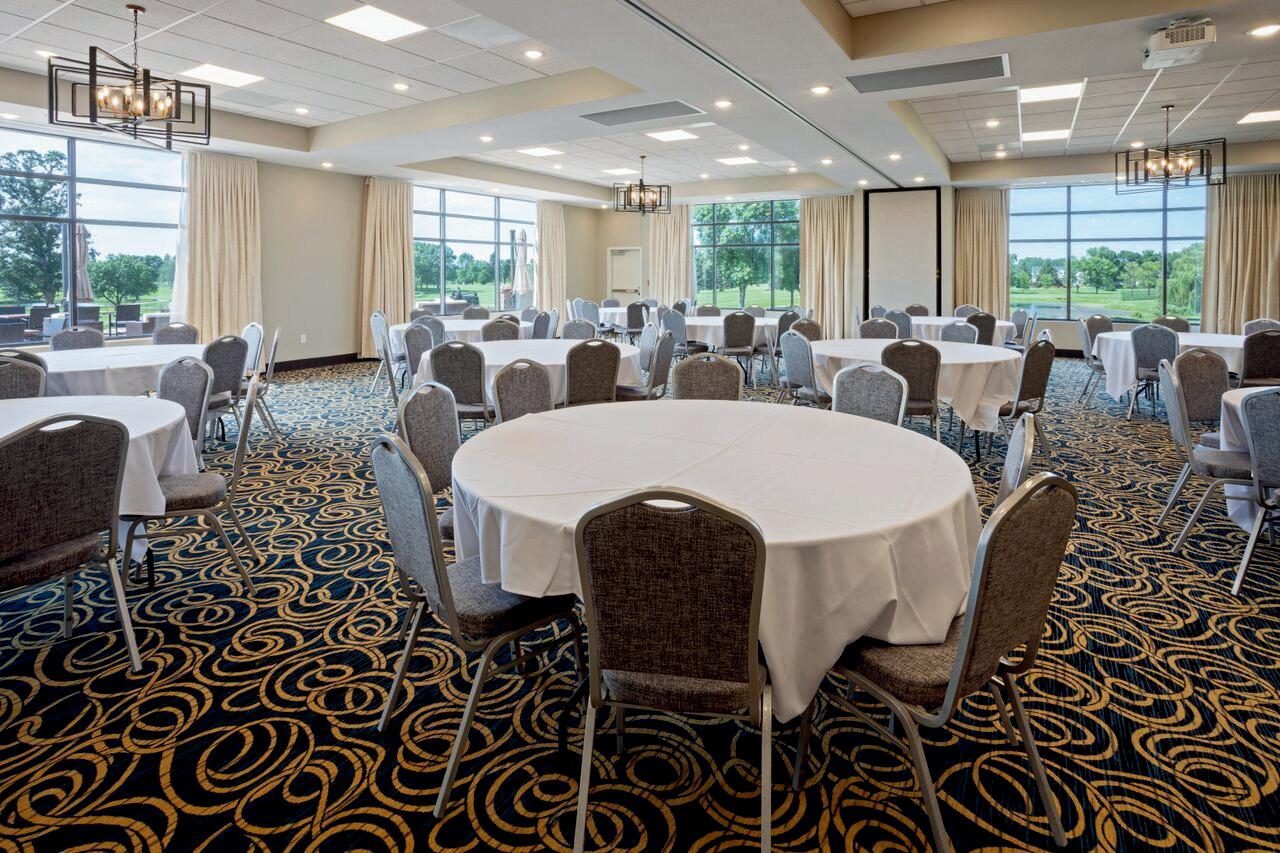
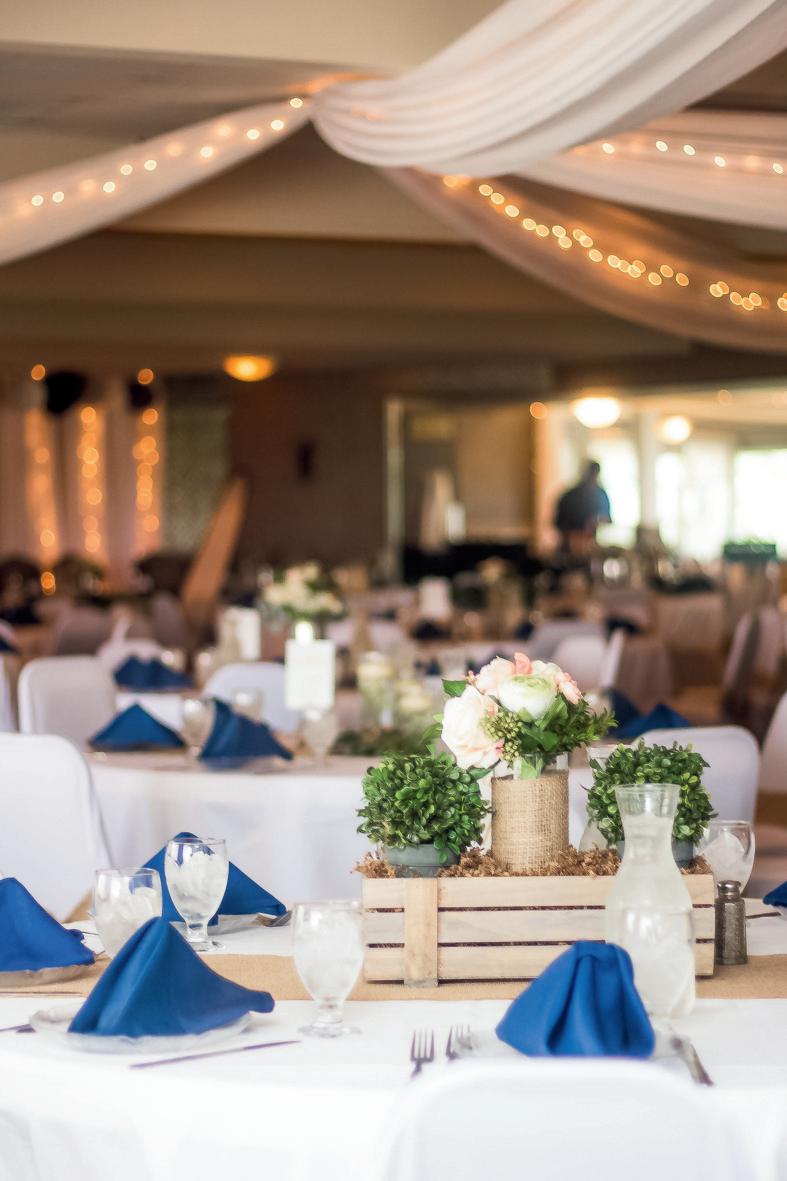
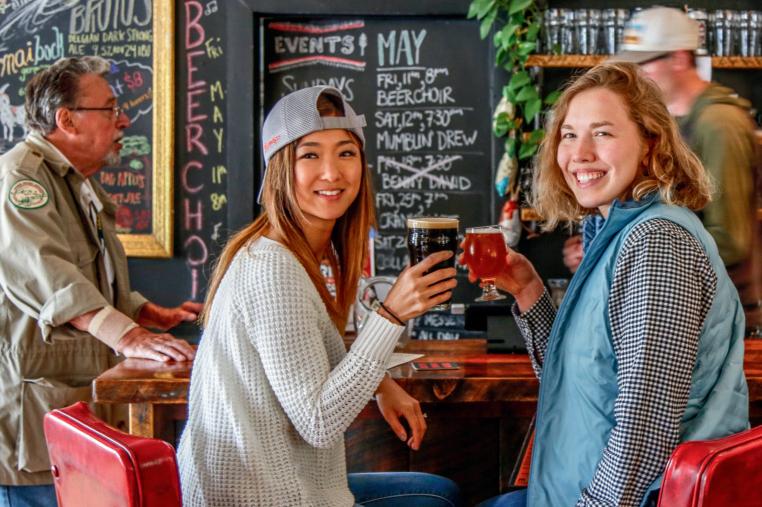
WE ARE THE HEART OF HOSPITALITY.
Compare it to similar venues in neighboring communities and you will soon realize that there is something very different about the Huron Event Center. Unlike the others, it is not the product of a large outside corporation. It is a collaboration, the product of an entire community working together to turn a dream into a reality.
It is because of this, you and your group can expect a level of hospitality that only a humble South Dakota community can provide.
THIS IS OUR HOME. MAKE IT YOURS.
Bridging together the Crossroads Hotel and Event Center with the Huron Arena and Exposition Center, the Huron Event Center connects these two facilities providing over 34,000 total square footage of meeting, banquet, and exposition space, available under one roof.
Whether you're planning a
tournament or exhibition, you'll find the specific accommodations that you need at a price you can afford.

www.willmarlakesarea.com

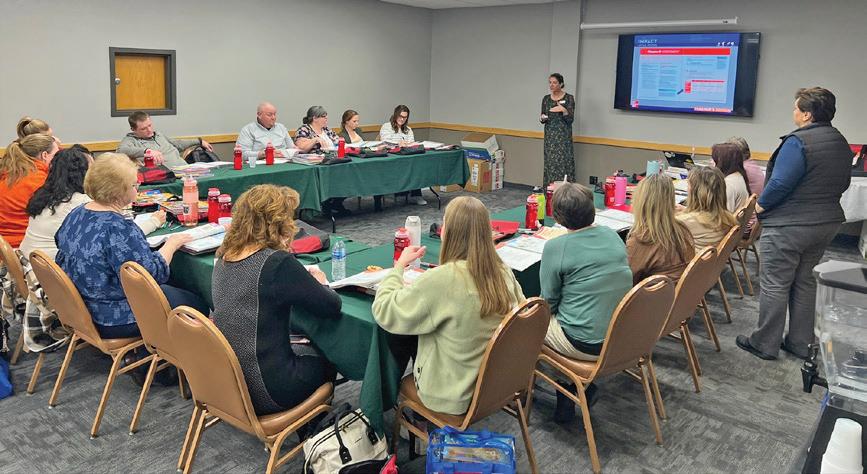
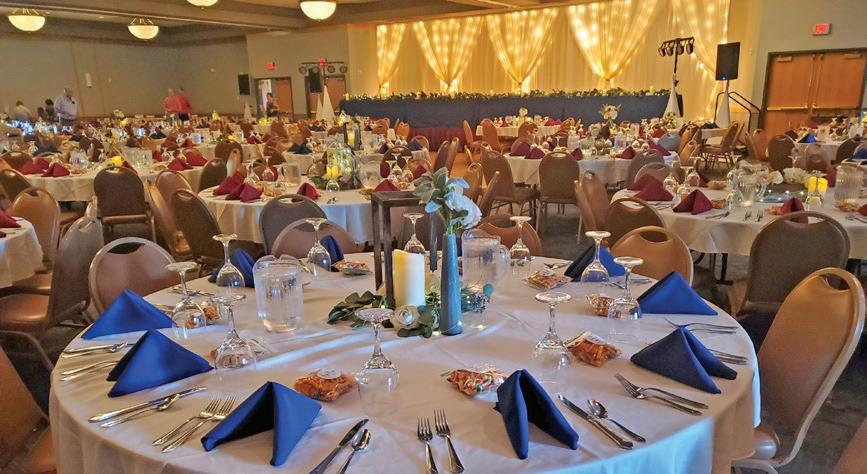
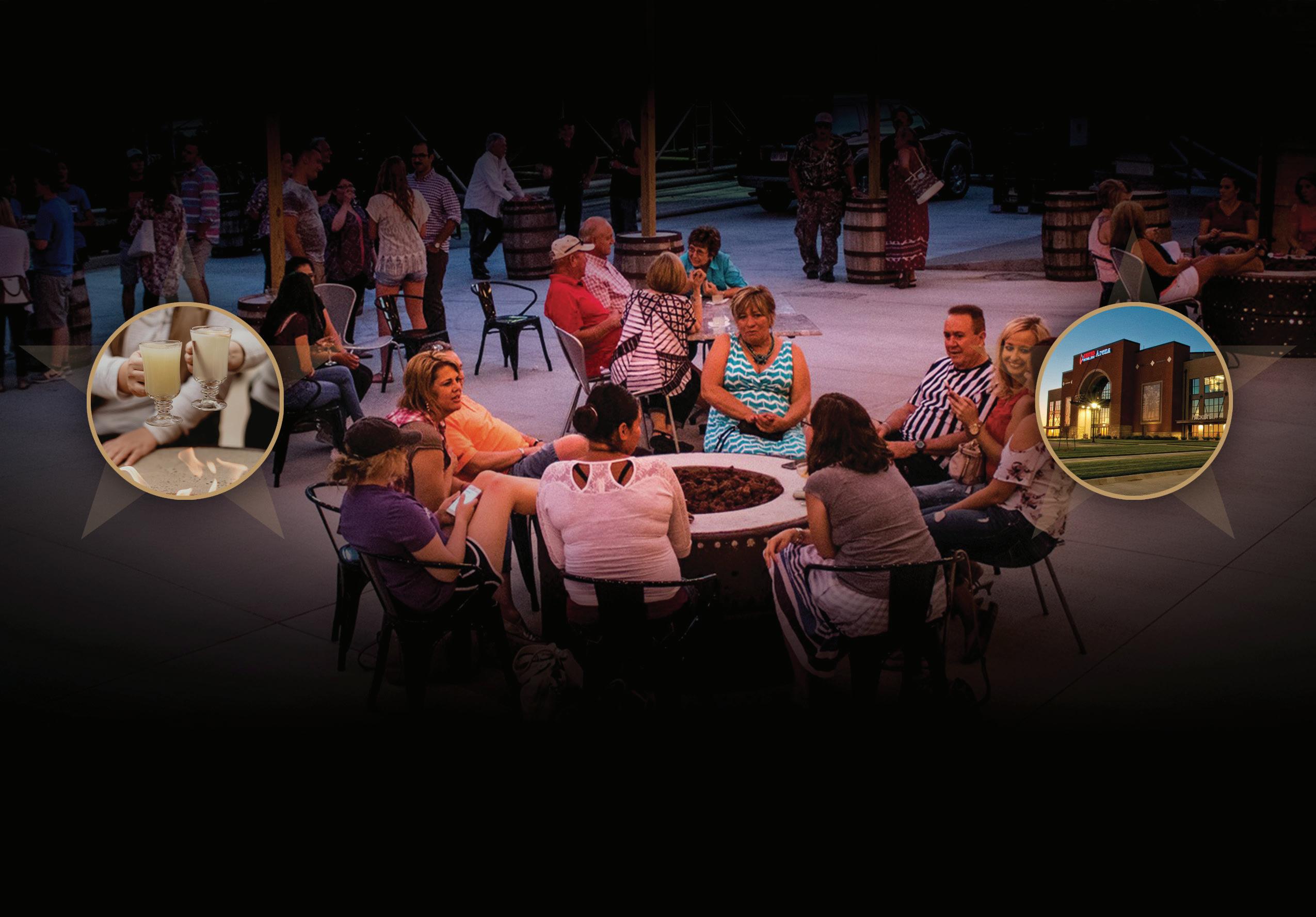
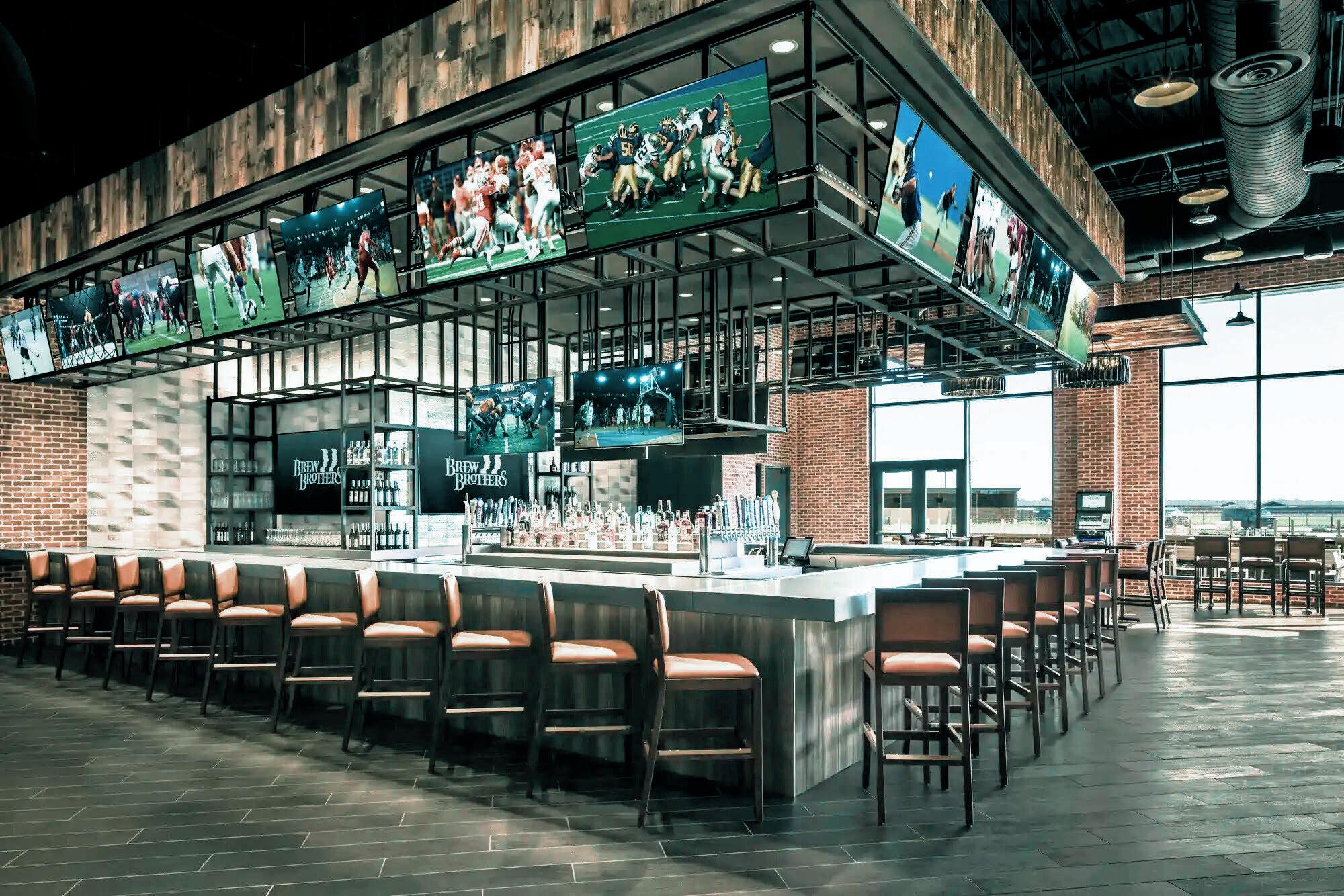
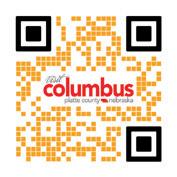

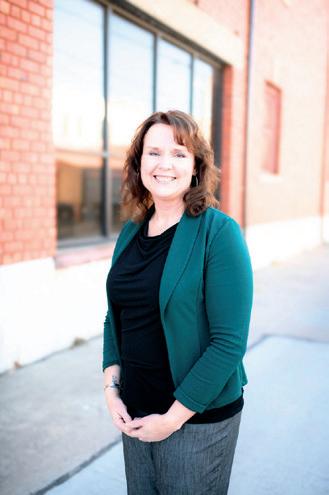
Find out how to assess whether your event requires an interpreter, then how to identify the right one.
By Maura Keller
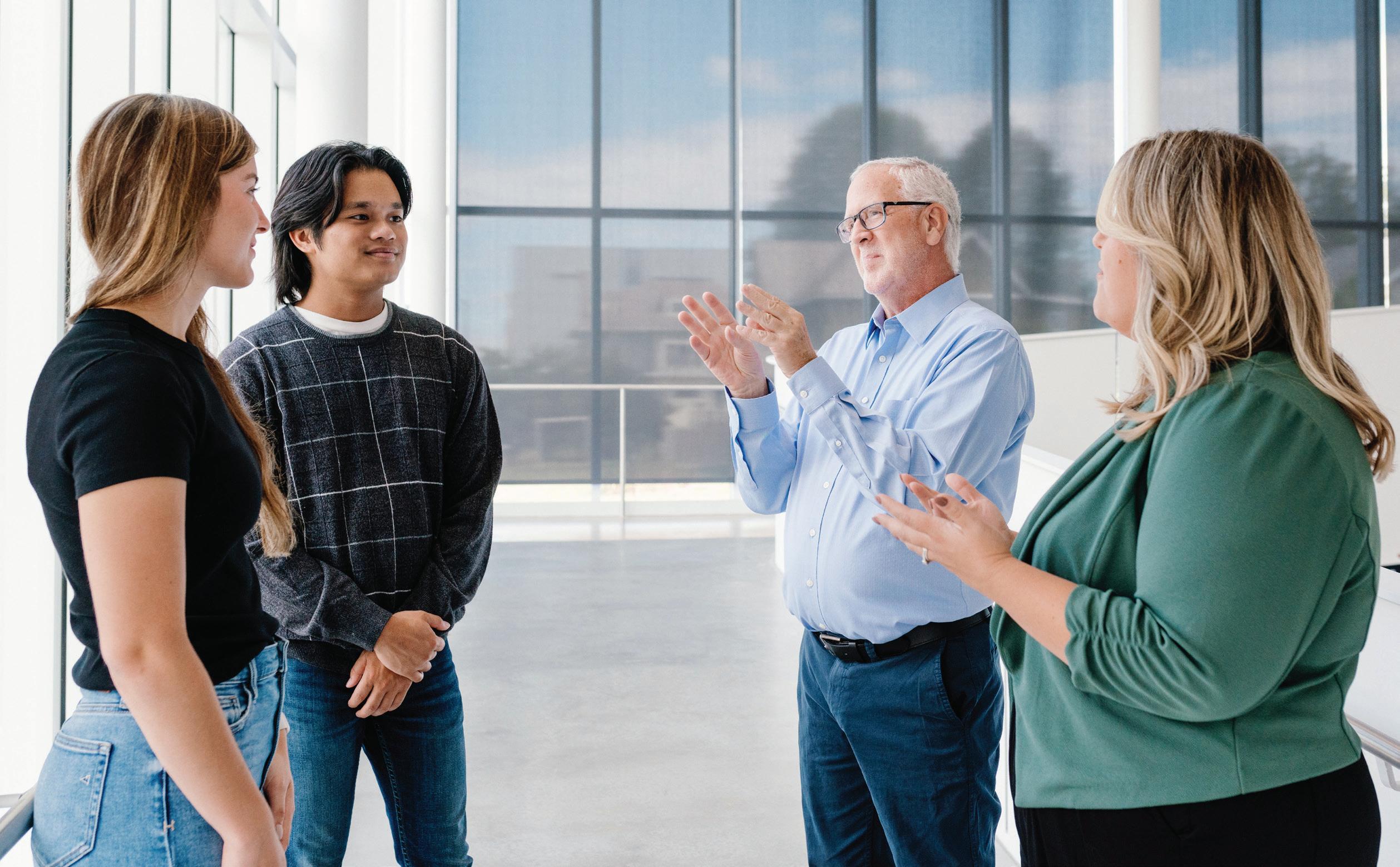
Today’s meeting attendees are diverse, representing an array of cultures, languages, traditions and communication abilities. While some attendees may not understand the language being spoken at the event, others may have hearing impairments that prohibit them from fully understanding the spoken word. That’s where interpreters come in.
Of course, the point of a meeting or an event is to connect people, so if participants can’t communicate or logistically participate, that can be problematic. Mireya Pérez is the creator of Brand the Interpreter, where she uses storytelling and strategy to amplify the voices behind language access. She leads translation and interpreting services in the education sector, specializing in language-access
operations, interpreter training and systems design.
“Communication and meaning go hand in hand,” she says. “When meeting planners work with reliable translators or qualified interpreters, they are not just paying for communication in another language, they are investing in ensuring a true connection between the message and the audience. Skilled interpreters make it their mission to carry over the same meaning, tone and intent for speakers of other languages.”
Having an interpreter on site can be vital as they rely on a variety of verbal and nonverbal cues to convey the speaker’s meaning and intent. If the speaker and audience are in person, the interpreter should be as well. This allows the interpreter to read the room, observe the speaker’s movements and note the audience’s responses (or lack thereof) in order to adjust accordingly.
For meeting and event planners who are looking to hire reliable interpreters, the American Translators
Association offers a free downloadable guide that walks you through the process of selecting interpreters and highlights factors, such as education, specialization, professional experience and modes of interpreting.
“Planners should also verify professional credentials or memberships when possible,” suggests Pérez. “Selecting the right translator or interpreter for an event is just as important as choosing the right speaker for an audience.”
If you want to achieve equitable involvement by all attendees at a meeting or event that includes deaf or hard-of-hearing participants, the use of qualified interpreters is critical. According to Hannah Willoughby, business development specialist at Deaf Services Unlimited, it’s important to note that American Sign Language (ASL) interpretation is not only “for the deaf user,” but is used equally by the hearing party to both understand and be understood.


“Meeting without means to understanding is just a room full of people,” she says. “Using qualified, reliable interpreters guarantees the integrity of the content being interpreted is preserved, whereas unqualified interpreters have little to no accountability for accurate interpretation. Using qualified interpreters and translators provides the best experience for your meeting users while also limiting the liability of missed information.”
Equally important, says Willoughby, is the fact that certified interpreters undergo rigorous training and testing to achieve and maintain their credentials. They are bound by a professional code of conduct, and violations can result in disciplinary action or even loss of licensure. This system not only protects the deaf or hard-of-hearing attendee, but also ensures all parties have clear expectations of confidentiality, impartiality and accuracy.
“Certification provides an added layer of accountability that upholds the quality and trustworthiness of the communication,” she says.
In light of a nationwide ASL interpreter shortage of 50:1, the greatest tool planners can give themselves is time. Requesting services as early in advance as possible provides the event planning team ample time to find the right match with experience and availability. Additionally, Willoughby recommends vetting your ASL agencies for quality with questions such as: What certifications do you require of your interpreters? How many years of experience do you have in my field? What will communication look like throughout coordinating our request?
“Partnering with a professional, responsive ASL agency ensures you have access to the resources and expertise needed to meet your unique needs,” Willoughby says. “You need an agency that provides qualified interpreters, but also delivers reliable coordination, clear communication, and the flexibility to adapt to the specific demands of your event or setting.”
Communication and meaning go hand in hand. When meeting planners work with reliable translators or qualified interpreters, they are not just paying for communication in another language, they are investing in ensuring a true connection between the message and the audience.
— MIREYA PÉREZ, BRAND THE INTERPRETER
Identifying the exact needs of attendees is imperative to ensure all communication needs are being met.
When a planner is identifying the needs of their audience or participants, it is important to include language as part of the planning process, according to Pérez. How many languages will be represented at the meeting or event? What specific interpreting or translation services are needed? Will anyone be hearing impaired?
“When working with translators, it is also important to gather as much information as possible about the event in order to identify the appropriate level of service,” she says. “Factors to consider include the length of the meeting — which helps determine the number of interpreters needed per language — the complexity of the topic, logistics, the quality of audio, available interpreting equipment and technology, among others, depending on the event.”
Planners should also consider accessibility needs, such as sign language interpreting or captioning services, and, when possible, gather input directly from participants in advance to ensure all communication needs are addressed.
Willoughby suggests collecting user preferences at the point of meeting registration can be very helpful for planning. Be sure to offer a way for users to request accessibility services
early to leave yourself time to make requests with your providers. Ensure attendees have the option to request an interpreter or captioner at that time, regardless of if the process takes place over the phone, by email or through a form on your website.
“Providing preparation materials, such as meeting agendas, presentation copies and speech scripts, allow for interpreters to prepare in advance and make for smoother services throughout the meeting or event,” says Willoughby. “Providing these to your coordinator in advance will support a smooth experience for all involved.
"Deaf Services Unlimited is dedicated to finding the right solutions for unique needs," she continues. "Our experienced interpreters will work with your planners directly to cover every aspect of your event, including a test session whenever preferred. This level of detail helps to facilitate confident communication access.”
Ultimately, the preference of the end user, whether deaf, hard-of-hearing or a nonnative English speaker, is the most important thing.
“On-site interpreting is commonly preferred, as it removes technological barriers and limitations video remote interpreting (VRI) might provide,” Willoughby explains. “This live, in-person interpreting has access to the full contextual scape of the environment and conversational nuances, often allowing for greater levels of exchange.”
On-site interpreting is especially critical at large events where reliable technology cannot be guaranteed. In these contexts, having an interpreter physically present minimizes the risk of miscommunication and ensures full communication access.
“That said, VRI does have advantages when speed, flexibility and/or geography are factors,” Willoughby counters. “VRI can be especially ideal for last-minute requests, for rural areas with limited interpreter availability or for short meetings where bringing an interpreter on site is impractical. Used alongside on-site interpreting, it can provide a flexible option that helps ensure access can remain uninterrupted.”
The last few decades have brought incredible technological advances across many sectors, interpreting and translation included. Nowadays, planners have the option of using major technologies to capture realtime interpreting or translating.
“What once was almost entirely headsets has expanded to include VRI, integrated platforms with builtin language channels, real-time captioning and even AI-assisted tools,” Pérez acknowledges.
“This means there are more options available to provide services; however, having many options does not necessarily mean every option is the right fit. Planners should carefully consider a variety of factors when
1. Identify your event’s needs. Evaluate the type of event, whether it’s on site, hybrid or virtual, the number of attendees, the number of languages required and the subject matter.
2. Reach out to language service providers and interpreters to identify the best solutions for your event’s needs.
3. Ensure the qualifications of the interpreter or translator. Make sure they are certified and have the level of experience needed to effectively meet the needs of the attendees at your specific event.
4. Provide detailed information. Make sure to provide the agency and interpreter or translator with all the information they may need to prepare for the event.
5. Identify required equipment and logistics. Make sure all of the necessary equipment, including headsets, microphones, etc., are identified and be sure to test the technology in advance of the event.
“If a situation arises where an on-site interpreter is unavailable or delayed, or additional coverage is suddenly required, VRI ensures there is never a lapse in communication access. By contacting Deaf Services Unlimited, you can be connected with a certified interpreter within minutes, giving planners the confidence that access will always be maintained.”
incorporating technology for providing interpreting services into their meetings or events,” she says.
Determining the level of technology that should be used in addition to having an in-person translator should be evaluated on an independent, case by case basis. Pérez says certain factors, such as participants’ familiarity with technology, the ease of use for the audience, connectivity, backup plans, accessibility needs and the ability to switch between modes all need to be considered before incorporating any technology.
“While having an in-person interpreter may be beneficial, there is no one-sizefits-all answer,” she says. “Ultimately, the decision depends on the event, the participants, the technology in question and the interpreter’s comfort with that technology, among several other things.”
VRI offers the flexibility to communicate wherever internet access is available. By widening the pool of interpreters for every virtual request, it’s providing some relief during the national interpreting
shortage. According to Willoughby, since the COVID-19 pandemic, VRI has progressed significantly and become far more widely accepted, with organizations and individuals recognizing its reliability and convenience. Today, it is as simple as dialing your agency up for connection over the video conferencing tool of your choice, such as Zoom, WebEx, Teams, etc.
“While technology continues to advance and AI-based interpreting options are beginning to be developed, it is critical to remember that these solutions are not Americans with Disabilities Act compliant at this time,” she warns. “Certified human interpreters remain the only way to ensure accurate, accessible and legally compliant communication access.”
And while on-site interpreters are often the preferred option, it is also important to be prepared when things do not go as planned. “Technology provides a vital safety net. At Deaf Services Unlimited, we recommend every customer have VRI as a backup option for last-minute or unexpected needs,” Willoughby says.
Pérez says some common mistakes planners make when considering interpreting or translation services include not taking into account the language demographics of the community they are serving, assuming that requesting an interpreter is enough without providing context or even materials in advance, and not understanding how to work effectively with translators to ensure audiences who speak other languages receive the same quality experience as those who share the speaker’s language.
“Planners can avoid these common mistakes by integrating language services into their planning, securing interpreters and translators early, providing them with the necessary information to prepare and considering what support is needed to ensure a truly exceptional experience for their multilingual [or hearingimpaired] audience,” Pérez says.
“Planning for multilingual events is ultimately a collaborative effort," she continues. "Rather than treating language access as just checking off a task, planners should view it as an ongoing process and work closely with language service providers to ensure the right services are offered and delivered effectively.”
In Deaf Services Unlimited’s experience of communication access, some common mistakes similarly include not providing enough advance notice to secure the right interpreter for your needs and schedule. Advance notice allows your coordination team to match the interpreter’s skills and background to the specific
without means to understanding is just a room full of people.
—HANNAH WILLOUGHBY, DEAF SERVICES UNLIMITED
environment, ensuring the best fit for everyone involved. “When advance notice is impossible, being flexible and prepared to use options such as VRI can help prevent gaps in coverage,” Willoughby suggests.
Another common oversight is forgetting to consider the environment and preparation information. The quality and setup of the meeting or event can play a huge role in the success of communication access services. As Willoughby explains, interpreters should be at the front of the room, adjacent to the presenter or speaker when relevant, and well-lit for proper view by all deaf or hard-ofhearing participants. Additionally, ensure all viewers have a clear line of site to the interpreter and the interpreter has a clear line of site to all participants for context and voicing responses when necessary.
“When using VRI, one must consider additional environmental factors like the reach of microphones and speakers in use, and the display of the interpreter for one or multiple users,” Willoughby says. Finally, preparation information, such as meeting materials and day-of arrival details (like security check-in or parking information), are vital for smooth services.
“Interpreting services can often feel complicated,” Willoughby says. “We believe agencies should be more than just providers, but partners in your communication goals.”


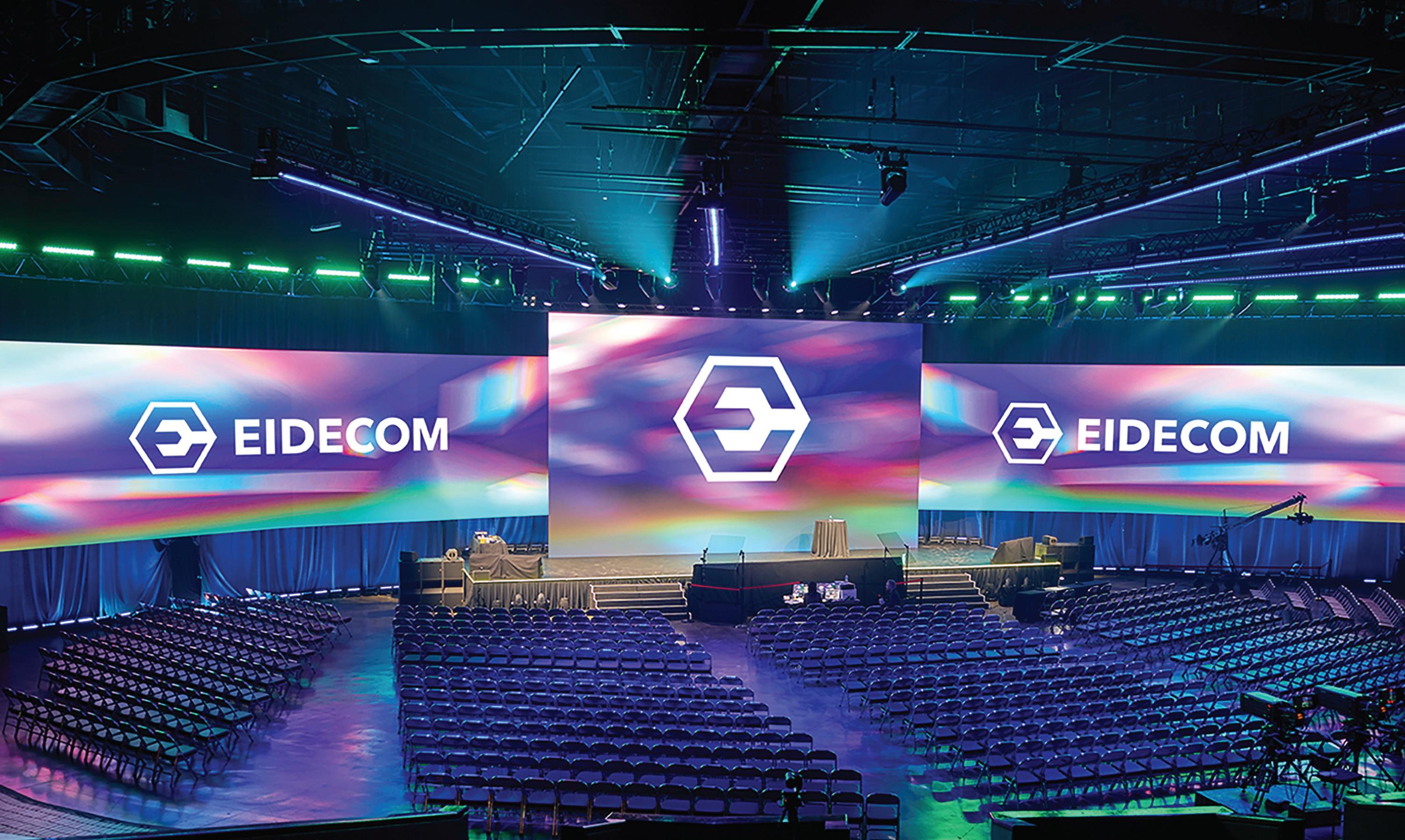
More planners are hosting multi-city events, bringing people together across state lines and time zones.
By Claire Hannum
Corporate events and annual meetings aren’t just back — they’re bigger, bolder, more intricate. As organizations increasingly invest in reconnecting teams and customers, a new breed of event is emerging: the multicity production. When wellexecuted, these expansive events bring guests together across time zones, while making everyone feel like they’re in the same room.
Charles Eide, founder and CEO of Minneapolis-based EideCom, knows a thing or two about gathering groups in more than one city. “At the core of what I’m obsessed with is making sure that people feel connected to one another, even if you’re across the country or even the world,” he says.
And EideCom does exactly that. The company produces high-impact
corporate events with budgets ranging from $200,000 to over $1 million, serving up to 25,000 attendees for some of the country’s biggest brands. EideCom has become a specialist in multi-city productions that synchronize programming, speakers and experiences across the country simultaneously, making participants feel connected regardless of geography.
One of EideCom’s signature multicity projects includes a large Catholic youth conference that evolved over the years from a single Minneapolis venue to a sophisticated multi-location production spanning three time zones. The event now connects thousands of participants with synchronized programming that creates seamless interaction between speakers and audiences separated by thousands of miles — and even oceans.
EideCom isn’t alone in seeing surging demand for ambitious live multi-city events. Major technology brands are gathering guests across the world, many with thriving satellite events or localized gatherings and watch parties; financial services firms are organizing
multi-city town halls to reach distributed workforces; retail brands are hosting product launch events simultaneously in flagship stores across major markets; and healthcare organizations are coordinating continuing education conferences across regional medical centers.
The driving force behind this increase in multi-city productions and events just might be the same need for connection that inspires any singlevenue gathering, from major keynotes to living room parties. Eide notes that, during a recent walk through Times Square after producing an event in New York City, he spotted crowds gathering for no single purpose — some were recording social media videos, a few were spending time with friends and others were simply people watching.
“The reason that people do that is because they really long to be a part of community, even if that community is just other people walking through Times Square,” he explains. “Smart leaders who lead big or small companies out there, they realize that their culture is dependent on how
people feel about each other and how the company facilitates that.”
If a team or organization is spread across cities, multi-venue get-togethers are often the antidote.
The Midwest is a hotspot for both single-venue extravaganzas and multi-city productions. It offers several practical advantages for event planners considering multi-city formats: time zones that bridge East and West Coast audiences, a strong convention infrastructure and accessible venues at multiple price points. Moreover, the Midwest’s transportation hubs make it easier to bring people together and, of course, this region’s hospitality and practical problem-solving rise to the occasion when it comes to the logistical demands of complex productions.
Tackling that first tech-intensive multi-city event as a planner may seem daunting, but according to Eide, it all starts with clarity of purpose. “What is the vision? Who is the audience?” Eide suggests asking. “Don’t use technology for the sake of technology. Use it to serve the people in the audience.”
Before investing in sophisticated production capabilities, planners should consider some foundational questions. For starters, do all guests expect the same experience? If you’re connecting a corporate headquarters with regional offices, do both groups share the same or similar expectations about content and interaction?
Regional differences in company culture might also require adjustments to programming or presentation style. Ask yourself if these audiences would normally gather together if they had the luxury of being in the same location. The most successful multi-city meetings and events connect people who already share an identity or purpose, and are merely separated by geography.
Beyond that, consider whether it’s truly in the project’s best interest to choose a multi-city event over sequential singlecity events. The answer ultimately
In
multi-city events, screens become windows between locations, so video displays warrant special attention. Small screens in awkward positions make remote content feel like an afterthought. Large, well-positioned screens that integrate with stage design make remote participants feel present and essential.

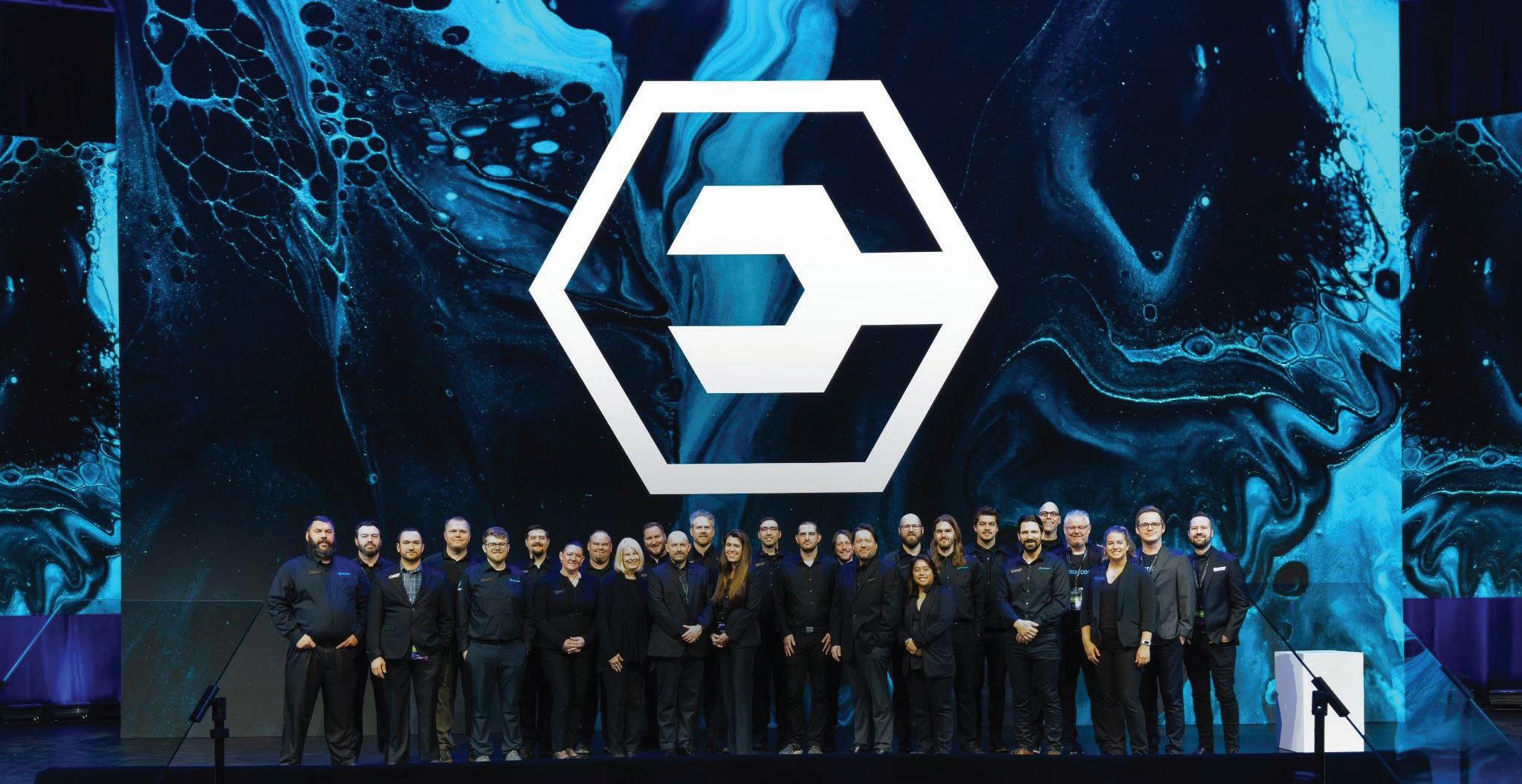
depends on the client’s or ganization’s specific goals and needs. If the goal is creating a unified culture and a realtime shared experience, programming and production requirements change dramatically. Perhaps the most crucial question to ask is how a multi-city event benefits guests. If a multi-location event distinctly makes guests’ experience notably better, it’s often worth pursuing.
One of the biggest risks in multi-city events is creating a hierarchy where one location feels like the “real” event and the others feel like overflow. Eide first confronted this challenge about a decade ago, when a client needed an event to span two ballrooms at a Florida resort. “They said, ‘We don’t want anybody to feel like they’re in an overflow room,’” Eide recalls, so he and the team decided to offer different — but complementary — programming in each room.
This worked thanks to a fiberoptic twoway connection that allowed speakers on different stages to interact as if they were on the same stage. The technology created the magic, but the programming design made it meaningful. Neither room was subordinate, both had unique content and both shared marquee moments.
That principle has since scaled to cross-country productions. “You
have programming that’s originating from both sites on a schedule,” Eide explains. “Both audiences get live speakers and they get remote speakers, and sometimes the speakers talk to each other and sometimes they’re independent, but it makes people feel like they’re all connected.”
This requires careful choreography. Planners must map out precisely when each location will originate content, when they’ll receive content and how the transitions will occur. The schedule needs to account for time zone differences — what works for a 10 a.m. start in Washington, D.C., means a 7 a.m. start in Salt Lake City. Programming rhythms, break times and energy management must work for all audiences as well.
“That schedule has to get fleshed out and rehearsed, and then the team has to understand the schedule very well,” Eide stresses. Unlike a singlevenue event where adjustments can be made on the fly, multi-city productions require precise timing and clear communication protocols.
Creating a seamless and reliable technical connection is where these projects succeed or fail — not for a lack of ambition, but from underestimating the complexity of real-time, long-
distance production. The key phrase is “real time.” Multi-city events require extremely low latency, as even a few seconds of lag destroys the illusion of shared space, and makes interactive programming awkward or impossible.
This demands dedicated, highbandwidth connections at each venue, with quality-of-service guarantees. Many convention centers and major hotels now offer this infrastructure, but never assume — always verify bandwidth capacity, backup systems and technical support in advance.
The internet serves as the backbone of the operation, but specialized equipment converts that bandwidth into usable video, audio and data streams. Professional-grade video codecs compress and decompress highdefinition video with minimal quality loss. Audio systems must account for acoustic differences between venues. Control systems allow technical directors to switch between feeds, manage transitions and troubleshoot problems in real time.
Technical capability is nothing without thoughtful design to go along with it. This includes lighting design that creates similar visual environments, camera work that frames speakers and audiences effectively, and graphics systems that deliver identical branding and information regardless of location. To avoid one location feeling like the
main event over others, each location needs appropriate production attention and resources.
In multi-city events, screens become windows between locations, so video displays warrant special attention. Small screens in awkward positions make remote content feel like an afterthought. Large, well-positioned screens that integrate with stage design make remote participants feel present and essential.
Technology enables multi-city events, but people execute them. For large-scale events like these, the team’s experience level is key. Experience matters across all roles: technical directors who’ve managed synchronized feeds, audio engineers who understand distributed systems, video directors who can seamlessly switch between locations and show callers who can maintain timing across time zones. Planners should seek production partners with documented experience working on similar events and request detailed technical proposals that demonstrate a full understanding of the project’s specific challenges.
During multi-city events, the relationship between the planner and production team shifts. Planners must trust their technical partners to make real-time decisions without constant approval. Production teams must trust planners to communicate clearly about client needs and expectations. Both must rely on each other to problemsolve collaboratively when challenges arise. This requires clear delineation of responsibilities, regular communication before the event and established escalation procedures.
Who makes the call if technical problems affect programming? How do you handle timing conflicts? What’s the protocol for emergency changes? Consider the answers to these questions in advance to avoid paralysis when the unexpected happens.
Each location needs strong on-site leadership who understands the overall
event vision, can make local decisions and communicates effectively with the central production team. This might be a dedicated site producer, a trusted staff member or a local production partner. Regardless of title, this role will serve as the crucial bridge between global coordination and local reality.
Site coordinators play a major role in ensuring that what looks good on the technical planning documents actually works in the physical space.
Multi-city productions and events command premium budgets, but they also deliver premium results.
Video systems, audio equipment, internet connectivity and communications systems represent significant line items. Redundant systems like backup internet connections, spare equipment and contingency plans add cost, but help prevent catastrophic failures. Multi-city events require more personnel than single-venue events because of separate crews at each location, including central coordination teams, technical directors overseeing production and specialized roles, like video engineers and communications coordinators.
Among other costs, multiple locations mean multiple venue contracts, each with their own fees, labor requirements and restrictions. Coordination between venues can uncover cost efficiencies, however, like shared vendor contracts, coordinated load-in schedules and bulk purchasing of consumables.
Despite the expenses, the return on investment can be substantial. The key is ensuring that budget investments align with strategic goals — spending to create genuine connection rather than just impressive spectacle.
Ultimately, multi-city events offer more than logistical achievement or technical prowess — they build connections that last. “Connection is one of the number one drivers of employee satisfaction,” Eide emphasizes. “It’s also the glue that makes somebody feel connected to a brand as a customer.”
As Eide alludes, the phenomenon isn’t limited to internal audiences. Customer and partner events create communities that become self-reinforcing. Attendees want to return, they recruit others to join and they become advocates for the brand beyond the event itself. “We’re tribal in our core,” Eide observes. “I think that’s why people want to gather.”
Multi-city events honor that instinct while adapting to the modern realities of distributed organizations and global markets. They don’t replace digital connection; they complement and enhance it.
Multi-city events offer a new way to think about what’s possible when you combine human connection with the power of technology. If your goal is genuine connection, shared experience and lasting community, multi-city events have a lot to offer. The technology exists. The expertise is available. And the audiences are ready.
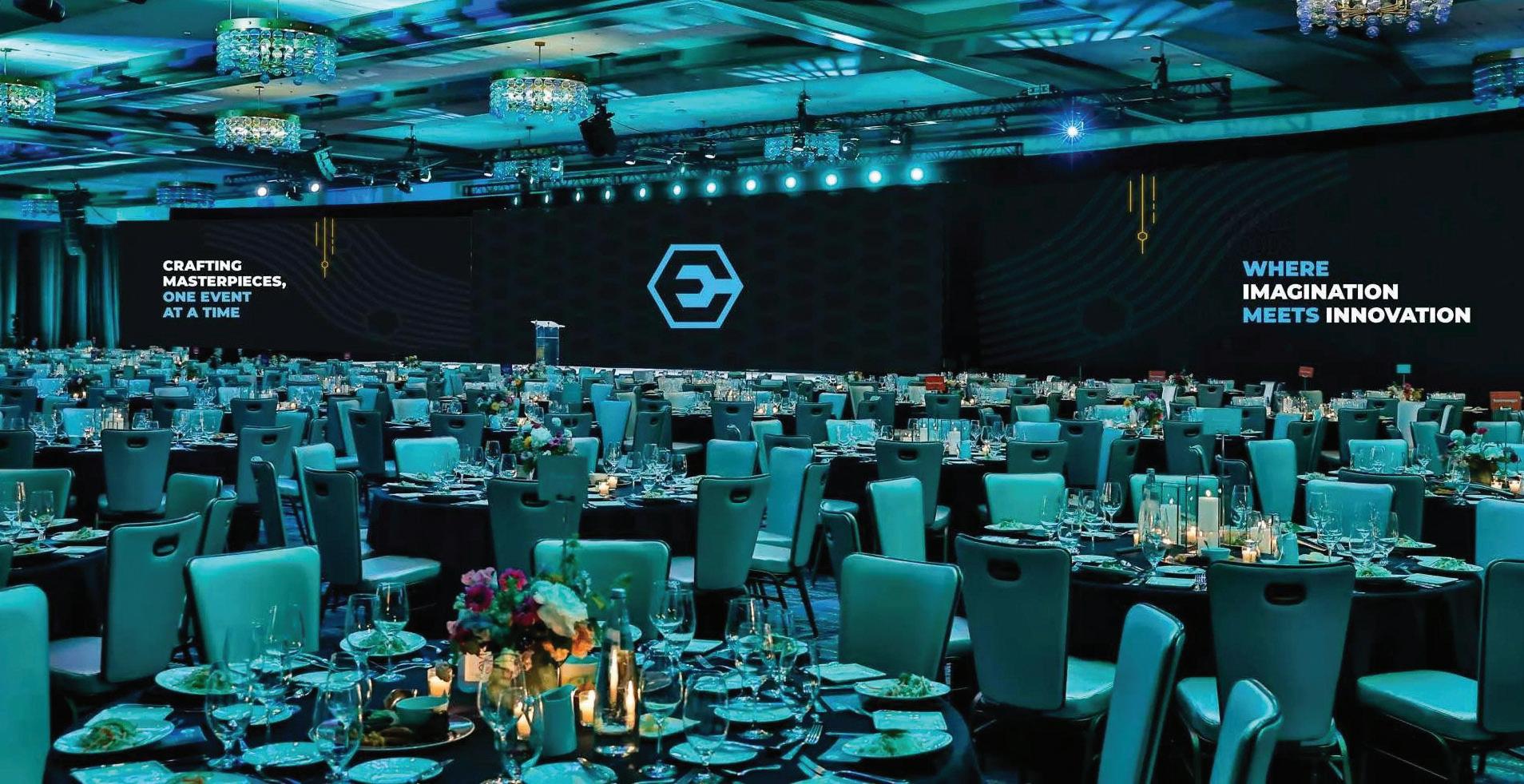

The updated CMP exam equips planners with the skills they need to succeed in today’s evolving event landscape.
By Ronnie Wendt
The ballroom buzzed with excitement, but not in the way you might expect.
Attendees were spread across several continents, joining virtually from home offices, coffee shops and conference centers. AI-powered networking tools suggested connections based on shared interests, while interactive polls and breakout sessions kept engagement high. Meanwhile, the on-site team ensured captioning, translation and accessible seating made the event inclusive for everyone.
This is not a scene from the future. It is the new reality of event planning. From hybrid conferences and AI-driven analytics to sustainable design and socially responsible programming, today’s planners are expected to juggle an ever-expanding toolkit of skills.
And as the event landscape evolves, the benchmark for professional expertise is evolving as well.
Enter the Certified Meeting Professional (CMP) credential, held by over 13,000 planners across 55 countries. For
decades, it has validated expertise in strategic planning, operations, stakeholder engagement and risk management. But in August 2025, the Events Industry Council (EIC) launched an updated CMP exam, reflecting 2025 CMP International Standards. The goal of this exam is to ensure CMP-certified professionals are prepared to meet the demands of a rapidly changing industry.
“There are emerging trends in continuing education and professional development as it relates to the global events industry that are reshaping the skill sets event planners need to stay competitive and future ready,” says Carolyn Patterson-Kemper, director of the CMP Certification Program. “A few emerging trends on the horizon include skills-based micro training and microcredentials in specific areas, including sustainability; diversity, equity and inclusion (DEI); and technology.”
It is these emerging trends that the new CMP International Standards and exam address. “This update to the CMP International Standards reflects how far our industry has come and where we are headed,” according to Heather
Seasholtz, CMP fellow and chair of the CMP Governance Commission.
“Over 1,000 professionals from diverse markets and disciplines helped shape this framework to ensure it is relevant, practical and globally formed for the future of events.”
Let’s say a major tech company hosts an in-person event that is limited to 200 attendees due to space constraints, but wants to reach more people. A virtual platform would allow thousands to participate worldwide. Planners could use AI to recommend breakout sessions based on attendee profiles, track engagement in real time and generate post-event reports that quantify the return on investment in ways traditional metrics cannot.
But first planners must be equipped to think strategically about accessibility, engagement and data security in a digital environment.
Expanding exam content to include technology integration can equip planners to design more effective virtual and hybrid events using AI-driven tools
and advanced data analytics, while prioritizing inclusivity, engagement and data security. By preparing planners to leverage these innovations thoughtfully, they can harness new platforms and formats more effectively to enhance the event experience.
Patterson-Kemper believes this approach will help planners navigate new tools, technology and formats with strategic foresight and practical agility. “Planners will be equipped to adapt confidently to virtual and hybrid events, leverage AI and interpret data analytics meaningfully,” she explains.
It will drive success by focusing on key strategies, including:
• Accessibility: Features like captioning, language translation and assistive technology ensure every attendee can participate fully.
• Engagement: Interactive elements such as live polls, gamified activities and AI-driven networking foster meaningful connections.
• Data Responsibility: Planners are taught to manage sensitive information securely, especially when they are using AI platforms.
• Impactful Metrics: Planners learn to focus on understanding which data points truly inform decision-making to show measurable success and refine future events.
The updated CMP exam also puts greater emphasis on sustainability and social responsibility, a reflection of the broader expectations facing the industry. From corporate retreats to nonprofit galas, planners are increasingly called upon to manage carbon footprints, reduce waste and design experiences that prioritize attendee well-being.
The newly added domain in the CMP framework reinforces the event sector’s growing responsibility to advance environmental and societal outcomes.
It encompasses carbon footprint management, materials and waste reduction, and inclusive event design. CMP-certified event professionals will be
able to design experiences that benefit business goals, the environment and society by considering sustainability and social impact from the beginning of the planning process.
They will be equipped to do things like collaborate with local suppliers to eliminate single-use plastics, implement zero-waste catering programs, offset travel emissions through verified carbon credit initiatives and more.
The updated CMP exam additionally tackles one of the industry’s most pressing challenges: measuring return on investment. Traditional metrics like attendance numbers or survey scores capture only part of the story. Today’s planners are expected to show tangible outcomes that directly tie back to business goals.
“Planners are recognizing the importance of return on investment measurement and data analytics to track meaningful metrics and tell the financial story of the event process,” PattersonKemper explains.
CMP-certified planners will know how to use data analytics to track session participation, engagement with sponsors and speakers, and social media interactions, then analyze the information to present a compelling narrative to stakeholders.
The new exam emphasizes proactive risk assessment and resilient event design, preparing planners to anticipate challenges and respond with flexibility. Whether it’s weather disruptions at an outdoor festival or sudden platform outages during a global summit, certified meeting and event planners will be trained to think ahead and make decisive, informed decisions under pressure to mimic the real world.
Earning or renewing a CMP certification today requires an understanding of both the latest industry trends and emerging best practices. To help planners navigate the exam’s expanded content and set
themselves up for success, PattersonKemper advises planners to:
• Study the CMP-International Standards domains thoroughly. “Use the latest CMP-International Standards and study materials as your roadmap,” she suggests.
• Invest in updated study materials available via the EIC website.
• Join a CMP study group so you can exchange insights with others.
• Purchase practice exams to test comprehension and build confidence.
• Schedule manageable study periods during your peak concentration times.
The updated CMP exam maintains its multiple-choice format, but features more scenario-based questions that assess applied knowledge and realworld decision-making. Interim study materials are available to support candidates until new study resources, including a new edition of the EIC Manual, become available in early 2026.
Since 1985, the CMP certification has represented excellence, credibility and commitment to professional growth in the meeting and event industry. The 2025 update ensures the credential continues to align with the competencies, ethics and leadership qualities needed in today’s fast-paced world.
“The CMP is more than a certification; it represents a commitment to doing the work well and doing it right,” Seasholtz stresses. “This update ensures our credential keeps pace with the industry and continues to reflect the skills and leadership we need to move forward.”
As the meeting and event industry continues to embrace innovative technologies, sustainability practices and global collaboration, one thing is clear: Professional development isn’t optional. It’s integral to success.
“The best planners aren’t just keeping up with change; they’re leading it,” Patterson-Kemper concludes.
To learn more about the CMP program or to schedule your exam, visit eventscouncil.org/CMP.
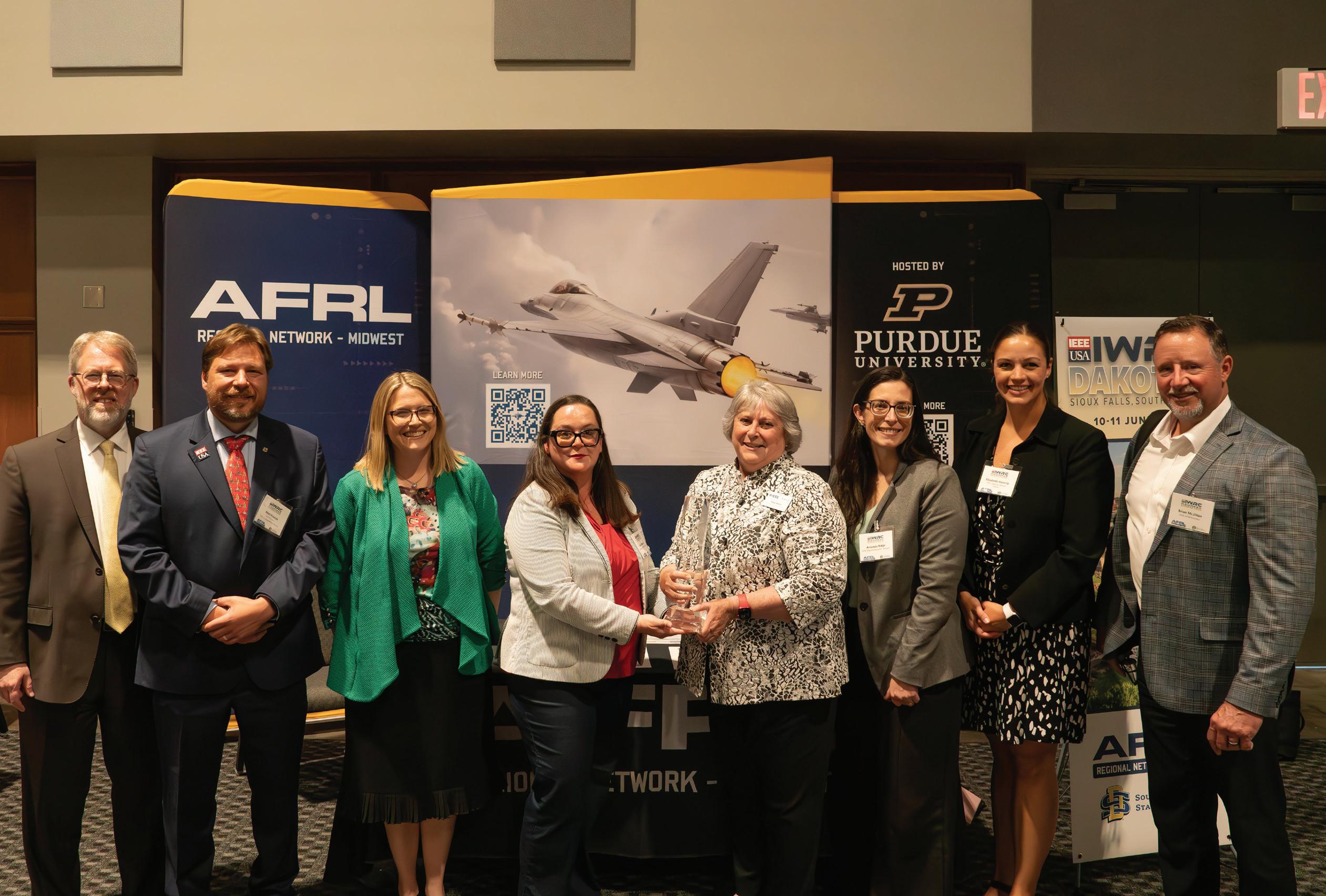
The South Dakota destination rolled out the red carpet for chips manufacturers, AI researchers, business owners, students and business leaders.
By Sara Karnish
With 500,000 members around the world — 150,000 in the U.S. alone — the Institute of Electrical and Electronics Engineers (IEEE) is the world’s largest professional association for technology. The IEEE holds more than 2,000 conferences around the world annually. Strengthening connections and visibility in the Dakotas was a major goal for the Innovation, Workforce and Research Conference (IWRC) Dakotas 2024, held at the Denny Sanford PREMIER Center in Sioux Falls from June 10 to 11, 2024.
Although the IEEE has held events in the Dakotas before, this was a first-ofits kind thought leader event, drawing 100 attendees. (Another similar event in Grand Forks, North Dakota, in 2025 drew 120.) The IWRC Dakotas brought national leaders to Sioux Falls with the intention of bridging the gap between research and commercially viable products. Attendees discussed research grants, technology transfer programs, start-up funding, intellectual property and a host of other hot topics related to innovation before, during and after the event.
The primary audience included chips manufacturers, AI researchers, small business owners, college students and local business leaders. Melissa Carl, the IEEE-USA director of business development, career and member services, was the planning lead, although she credits several key partners who helped bring the event to life, such as South Dakota State University, the Air Force Research
the program director. APEX Accelerators also helped identify key audience members. The IEEE tapped its own local connections and expertise to identify speakers and refine the right audience for the event, which consisted of a reception and one-day program.
The Creating Helpful Incentives to Produce Semiconductors (CHIPS) and Science Act was a major focus; one goal was to share information about the CHIPS Act and tap into the local workforce pipeline. “We wanted to talk about what was going on with the act at the federal, state and local levels, and ask, ‘How can we help our partner institutions?’” Carl says.
“For the IEEE, any federal technology initiative like the CHIPS Act is important, as there are federal resources working in the tech space, so we wanted to get that information
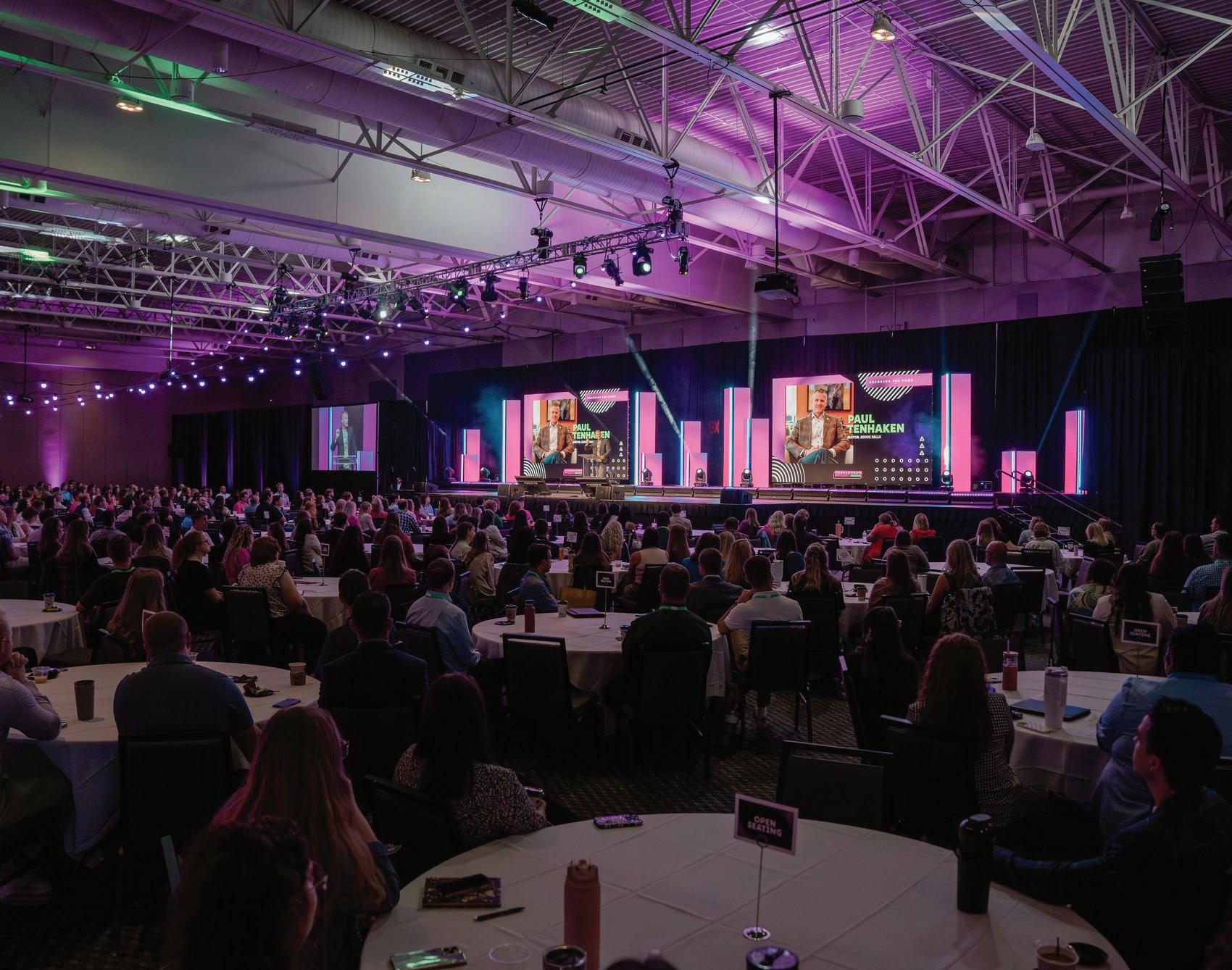
out. The CHIPS Act had provisions that information should come from all over the country. The IEEE could really help shine a spotlight on the cool things going on.”
The PREMIER Center’s location in Sioux Falls made it a great choice of venue. “We wanted to have it at a neutral site rather than at one of the universities and the Denny Sanford PREMIER Center has a hotel next to it. We had people coming from three to five hours away, so we needed a hotel that was close to the venue,” Carl says. “The facilities were newer — they just did a remodel during the pandemic, so it’s a really nice facility with an all-new audiovisual system.”
The opening reception was held at The District, a smaller venue near the PREMIER Center. The District normally works with groups of up to 400, but frequently hosts smaller gatherings of 80 to 100 attendees. “In
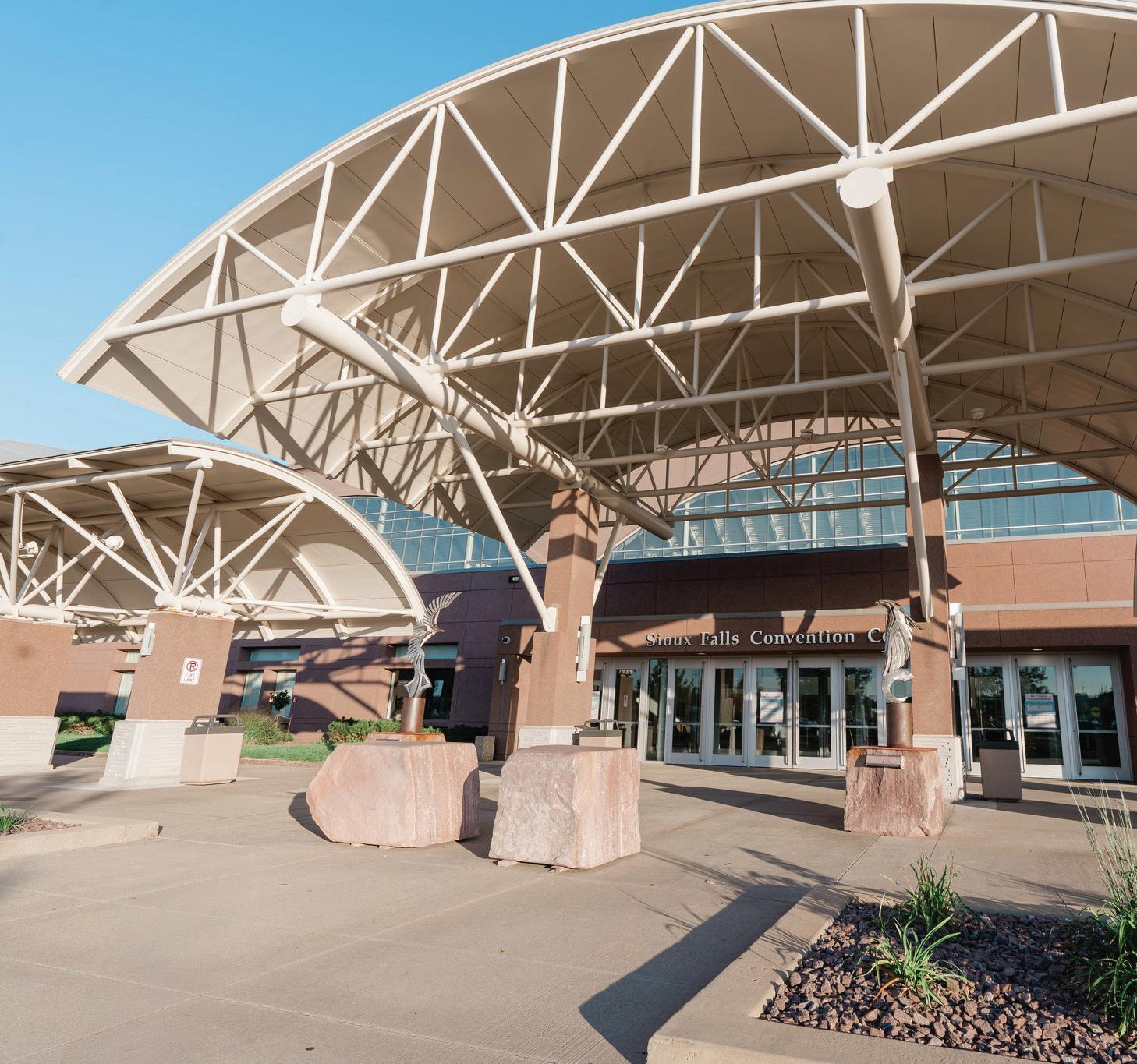
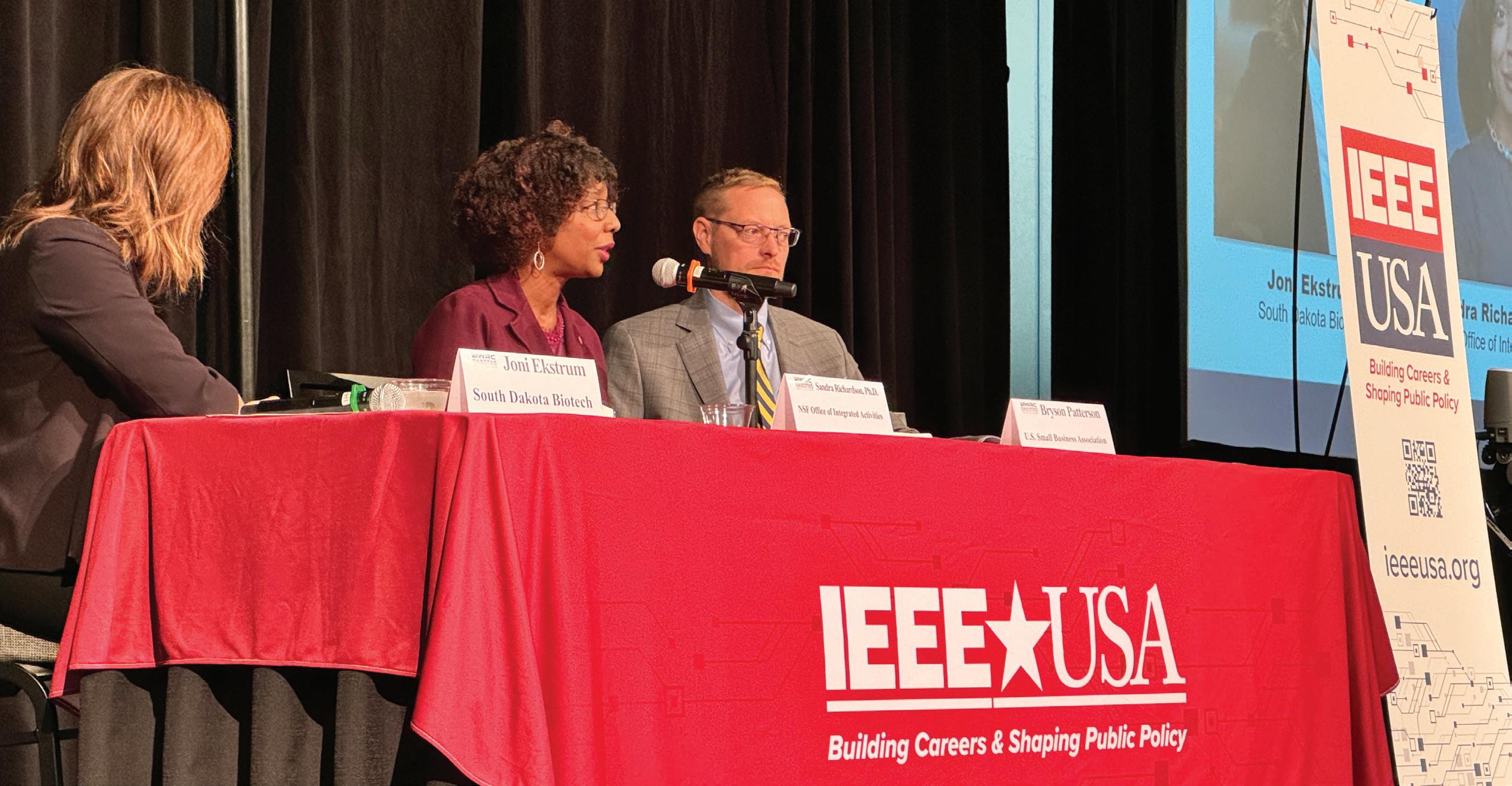
this case, the IEEE had a guest count of 125, so we customized the room in a way that was intimate and inviting,” Shawn Larson, The District’s general manager, says. “We decided to design a social setting with cocktail tables near our bar so that conversations could ebb and flow, while nicely groomed tables sat before them ready to be used for dinner service.”
ROAM Kitchen + Bar, The District’s exclusive caterer, prepared a dinner consisting of an array of hors d’oeuvres. “The IEEE trusted us with our décor options, from centerpieces to lighting packages, so when they arrived, all the details were in place. This made it stress-free for them, so they could focus on their guests,” Larson explains. Molten Audio provided audiovisual, and were set up and ready to work with the speakers for the night.
The daylong program at the PREMIER Center featured speakers representing industry, academia and government. South Dakota Rep. Tyler Tordsen kicked off the day with his keynote address. Other breakout sessions included “The Established Program to Stimulate Competitive Research, Small Business Administration and
Federal Partnerships,” “The South Dakota Workforce of the Future” and “Partnering Tactics.” The afternoon breakout sessions took a closer look at more specific topics, such as “Engaging with the Federal Government: From Gaining Specialized Designations to the Award;” “Utilizing Federal, State and Local Resources,” a panel discussion moderated by Mollman and “How South Dakota Can Contribute to the CHIPS Workforce.”
“We tend to have a conversation,” Carl says of the content delivery. “Our event is really about thought leadership. We had some great keynotes from the Air Force Research Lab — what they’re funding research-wise, what the lab is looking for and how to navigate through the channels of government funding for a tech idea.”
The venue handled catering on site, and Carl had high praise for the food and beverages. “We had a full breakfast, then sandwiches for lunch,” she explains. “The catering folks were able to handle the two to three special request meals and they were appropriately labeled.”
Speaking about some of the planning strategy, Carl notes, “We used the reception as a time to gather. [For the
program,] we try to do preparation calls with the organizers and speakers ahead of time. We draft questions the moderator can use and the moderator tends to hone those questions. With our small business panel, I just can’t say enough about Stoen [Mollman]. He really helped tell a story about Dakota business to show attendees how to navigate federal resources.”
Carl says the logistics went smoothly, although an occasional hiccup is to be expected. “There are always audiovisual challenges, no matter how much you plan, and as a tech organization, it’s always frustrating when your audiovisual goes wonky,” she acknowledges.
But getting from place to place was easy, as The District and PREMIER Center are so close together, and out-of-town attendees had rooms at the hotel next to the venues. “With out-of-towners, you always want to make sure they know where they’re going and everyone was really helpful,” Carl points out.
Marketing any event can be challenging when attendees have so many other commitments on their calendars. New events like the IWRC Dakotas have an advantage, however — curiosity
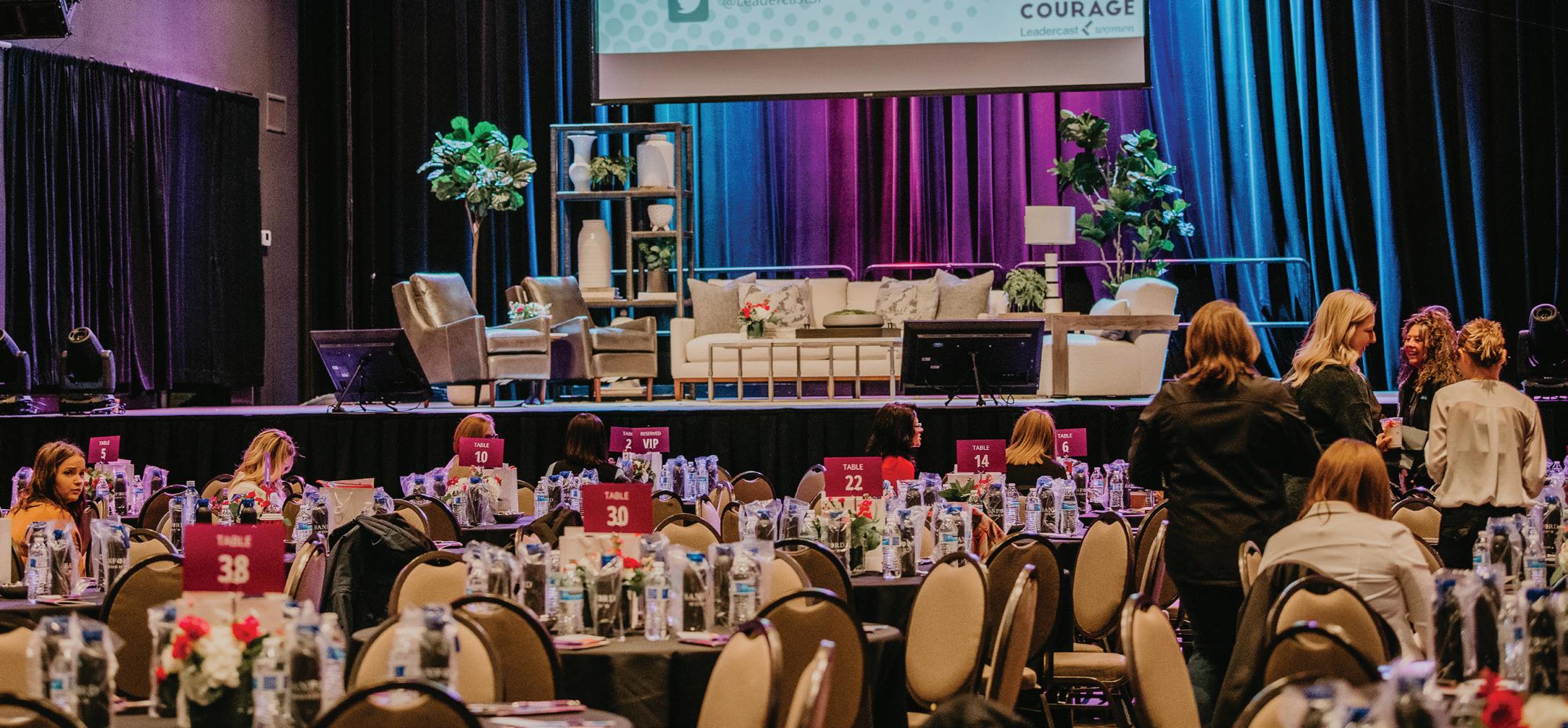
The amenities of this town are what make Sioux Falls so great. You get so many transportation services, hotels, venues and entertainment options, and with all of those mentioned, it’s still a small town at heart, so the people in this community are ready to welcome you with open arms.
—SHAWN LARSON, THE DISTRICT
will drive attendees to register simply because it’s a first-time function, or a longtime event touching on a new industry or initiative will draw registrations out of sheer interest.
Once again, the IEEE’s team of local partners were invaluable when it came to marketing and promoting the event.
“We were blessed to be connected to a lot of local partners who helped get the word out. We connected with Jodi Schwan, [founder and distributor of] Sioux Falls Business, a resource used by the local business community; we utilized South Dakota State for sure; as well as South Dakota Small Business Innovation Research; and the South Dakota Small Business
Administration.” The speakers helped promote the event, too.
Sioux Falls was chosen as the host city because of its proximity to the market the IEEE wanted to reach — namely, the upper Midwest region. “June was a great time in Sioux Falls,” Carl says, adding that the IEEE is looking to have a second event in the fall.
Sioux Falls is a great destination any time of year, according to Larson. “The amenities of this town are what make Sioux Falls so great. You get so many transportation services, hotels, venues and entertainment options, and with all of those mentioned, it’s still a small town at heart, so the people in this community are ready to welcome you
with open arms. With that said, we do love to have crossover events with the PREMIER Center. It’s nice to go off site for a dinner, or enjoy entertainment and loosen up the tie, so to speak.”
With the IWRC Dakotas successfully wrapped, Carl is focusing on future events in the area, but notes that first-time events are always important learning experiences. “We learn from each event how to make it better and worth people’s time,” she concludes.
Sara Karnish is a freelance writer with bylines in over 50 consumer, trade and custom publications, primarily covering small business, meeting and event planning, and lifestyle topics.




















With its picturesque cityscapes to its awe-inspiring landscapes, from the expansive plains of Nebraska to the valleys and rivers of Minnesota, the Midwest offers ample destinations for unique meeting options. Teeming with historic sites, quaint towns and mighty metropolis experiences, the Midwest appeals to many planners because of its unique venues, distinct Midwest charm and natural beauty. And thanks to the cultural offerings throughout cities such as Dubuque, Omaha, St. Cloud and Manhattan, the Midwest truly has something for everyone.

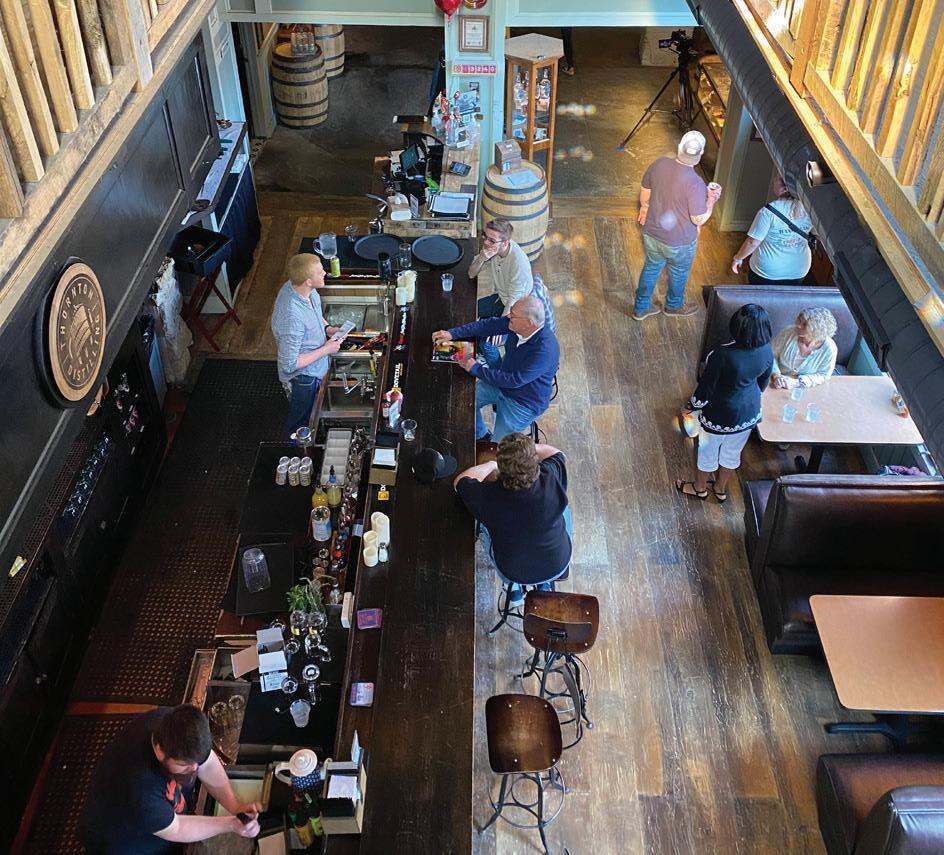
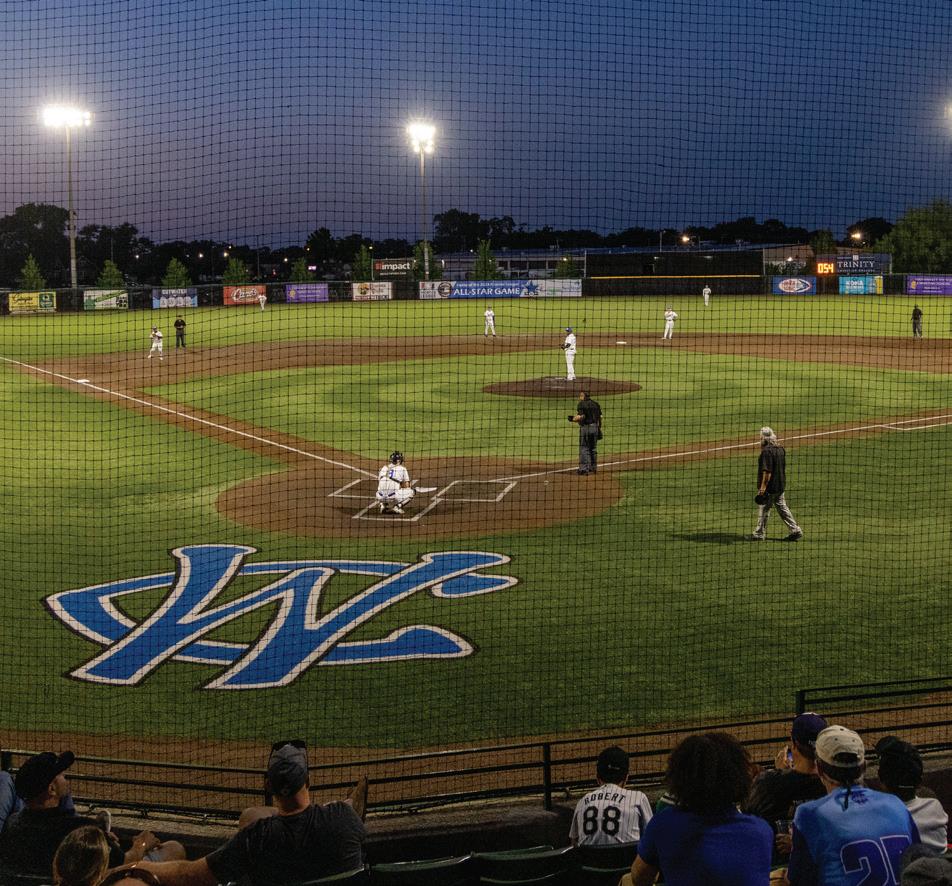
Illinois always has something to offer. From the skyscrapers of Chicago to the vineyards of Galena to the diverse landscape of Shawnee National Forest, visitors are sure to experience something new. Hosting events in Illinois is no different, with varied options and exciting experiences, you can plan a program that attendees will not soon forget.
Chicago is known for its sports teams and their dedicated fans, which makes it the perfect new location for a hotel by Sports Illustrated. This new brand, Sports Illustrated Resorts, is designed for sport enthusiasts, making any trip for a sport-related event that more special. Opening in late 2026, this new hotel will highlight sports in a modern way, while honoring the original building. Complete with a fitness center, lounge, coffee shop and restaurant, visitors will have everything they need while working, along with celebrating their favorite team.
Not to be out done by downtown, Chicago Southland is a fantastic way to visit the city without the big-city price. With hotels that feature free parking, easy access to all major highways and a 25-minute drive to downtown, Southland is another ideal place to meet. Planners can find unique hotels, such as the French-themed La Banque Hotel, as well as oneof-a-kind experiences.
Members of the National Women’s Soccer League, the Chicago Stars have a home in Southland, alongside Chicago’s own rugby team, the Hounds, and the Windy City ThunderBolts, a Frontier League baseball team who plays on Ozinga Field in Southland. When relaxing, grab a bite to eat and a drink to enjoy at one of the many breweries, wineries and distilleries. Pizza lovers can get a pie at Illinois’ biggest pizza restaurant, Aurelio’s Pizza of Homewood, in Southland, too.
While McCormick Place is a go-to for large conferences, there are many choices for organizations and gatherings of all sizes. If you are looking for an unexpected historic venue, be sure to check out the Historic Ford Hangar, an airplane hangar built in 1926. Whether you have your event downtown or in Southland, all of your options are easily accessible from O’Hare International Airport or Chicago Midway International Airport. With hundreds of flights a day, getting your attendees to Chicago is a snap. No matter what brings you to Illinois, a plethora of options await you in the heart of the Midwest.


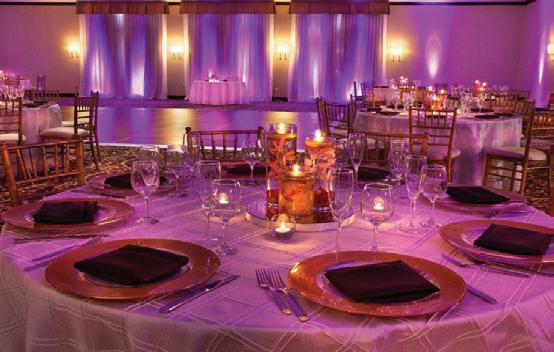

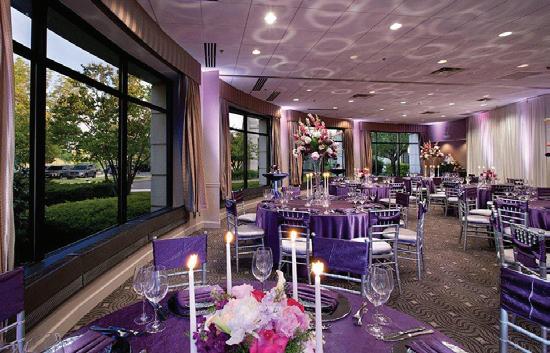
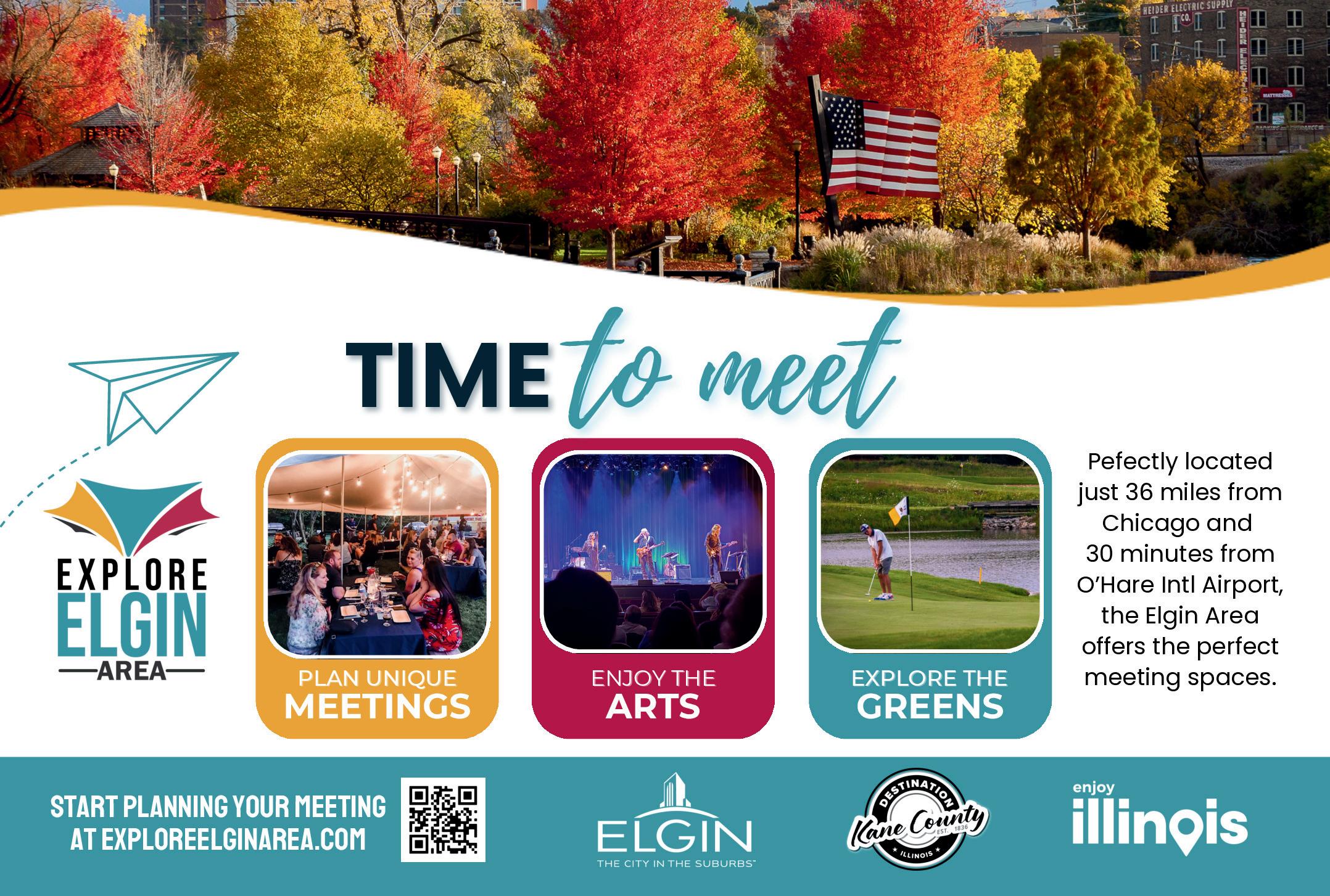
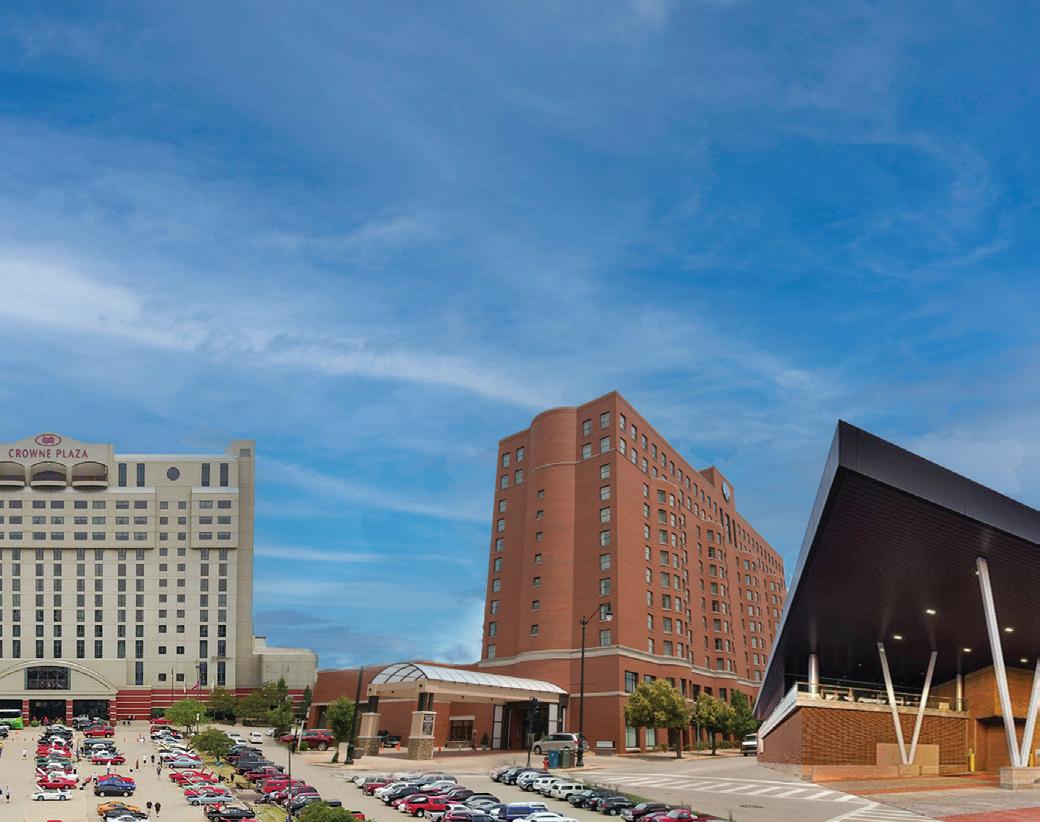
• A convention center with 50,000 square feet of expo space, 30 meeting rooms and a 13,500-square-foot ballroom
• 80,000 square feet of flexible meeting space
• A total of more than 3,500 hotel rooms
Always Legendary Springfield, located on iconic, historic Route 66, is the history-filled capital of Illinois! Your attendees are in for an experience that’s one for the history books. With charming and walkable streets, plenty of Abraham Lincoln legend and lore, and exciting special events, this is a destination that will help you fully maximize your convention attendance and have guests asking for more.
Imagine Abraham Lincoln himself stopping by your convention or special event to welcome your group to his hometown, and provide photo opportunities for your guests to enjoy.
Groups meeting in Springfield will find world-class sites such as the Abraham Lincoln Presidential Library and Museum and an abundance of fun and nostalgia along Route 66!
Visit Springfield
109 N. Seventh St., Springfield, IL 62701
800.545.7300
VisitSpringfieldIllinois.com
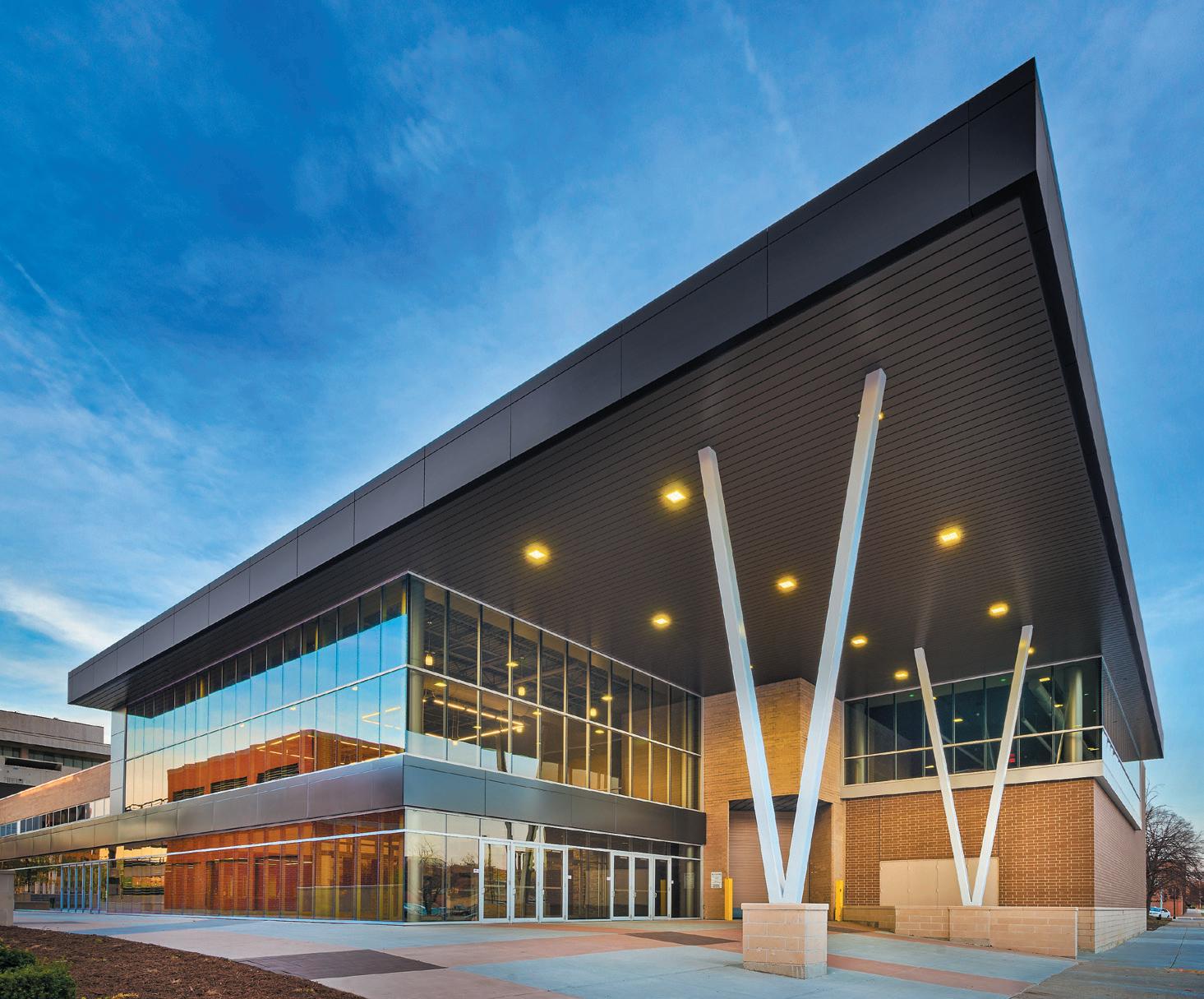
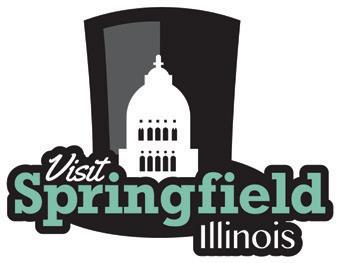

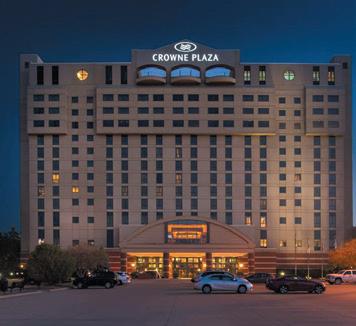
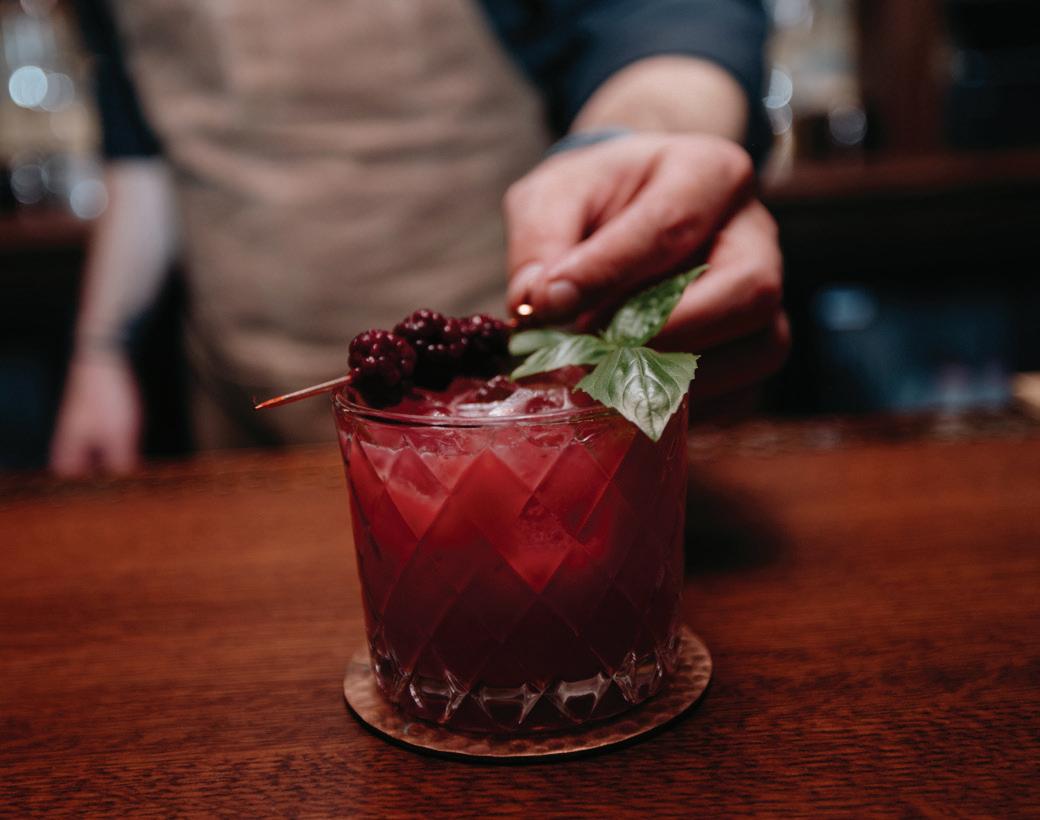
• 17 hotels from which to choose
• More than 65 restaurants
• 20,000 square feet of space at the Thelma Keller Convention Center
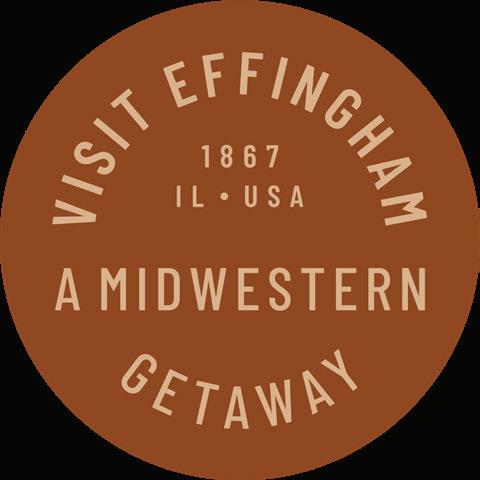

Meet in Effingham and discover what makes our vibrant, Midwestern community so irresistible to travelers, near and far.
Located in central Illinois, where Interstates 57 and 70 meet, Effingham offers the perfect centralized location to connect with others. We invite you to come see for yourself …
If space is what you’re craving, check out the sprawling conference rooms at the Thelma Keller Convention Center. With its convenient connection to the Holiday Inn and its in-house restaurant, TK Grille, this space is ideal for meetings and conventions.
If your definition of happy hour involves a historic downtown location and handcrafted cocktails, enjoy the elevated vibes at Wheat Penny Cocktail Bar. This speakeasy-inspired space is warm and inviting, and sits beneath a co-working space and Airbnb rentals. Make plans to escape without ever having to leave the building …
Effingham Convention & Visitors Bureau
201 E. Jefferson Ave., Effingham, IL 62401 800.772.0750 VisitEffinghamIl.com
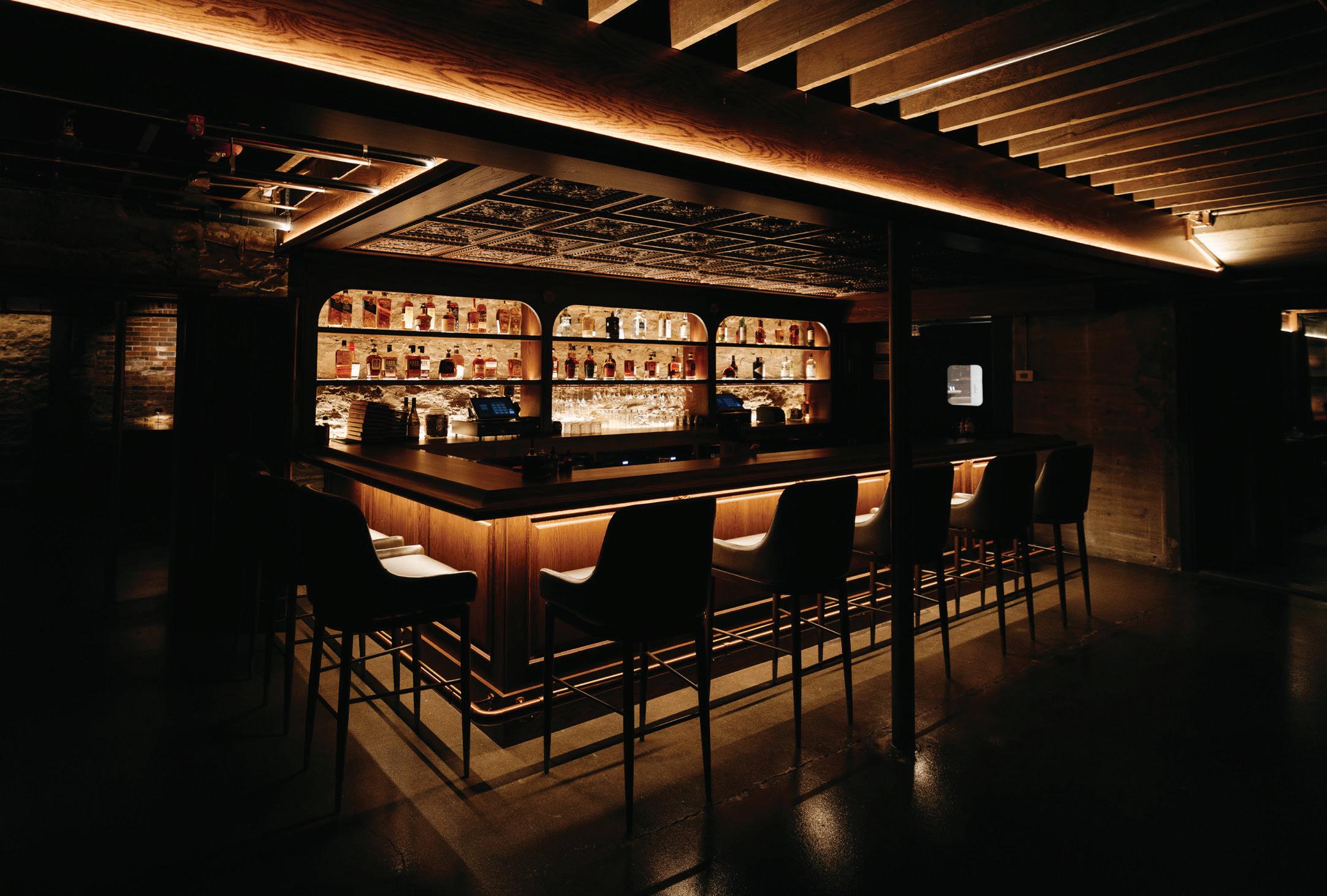
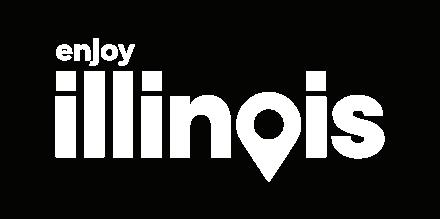
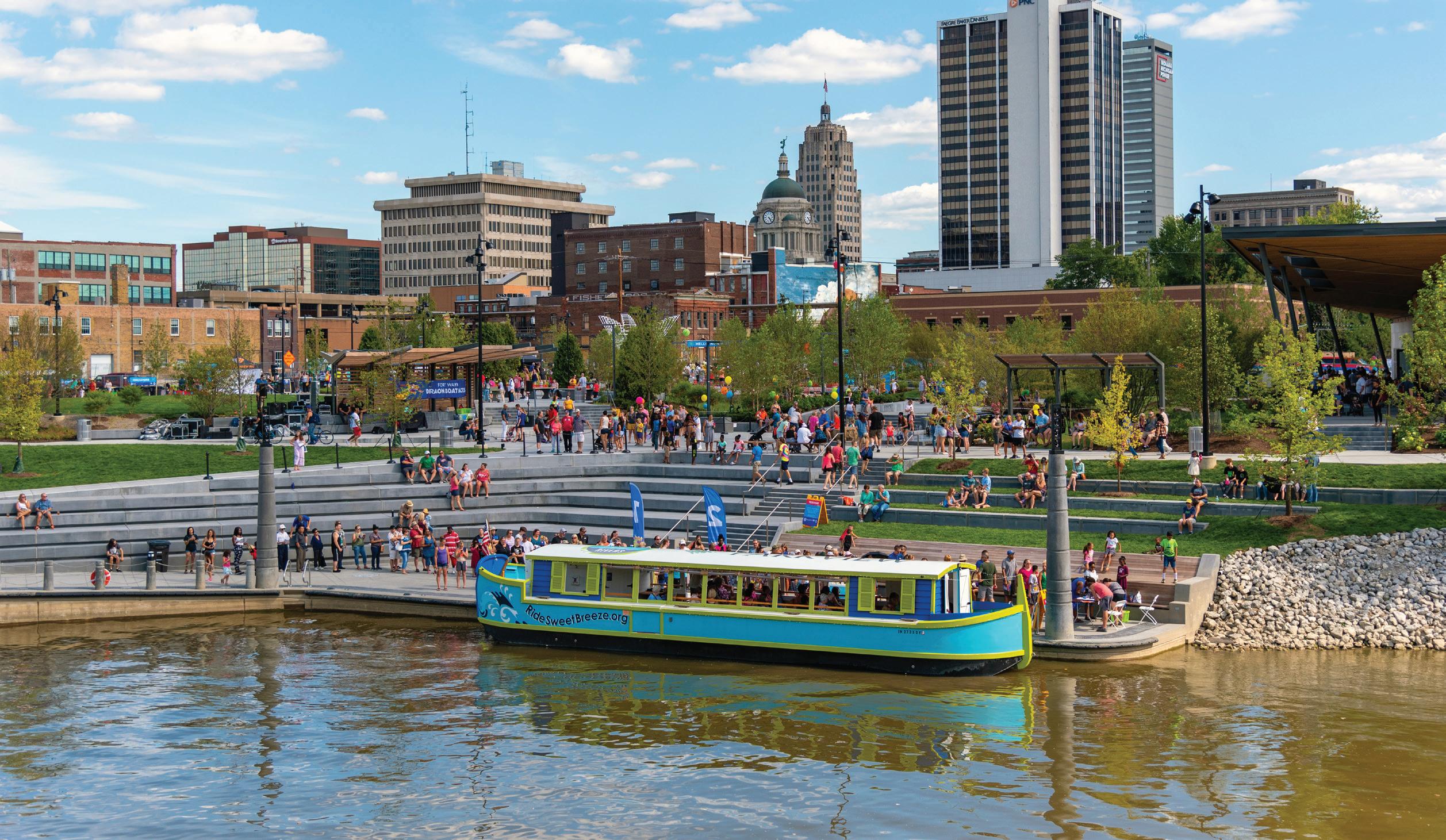

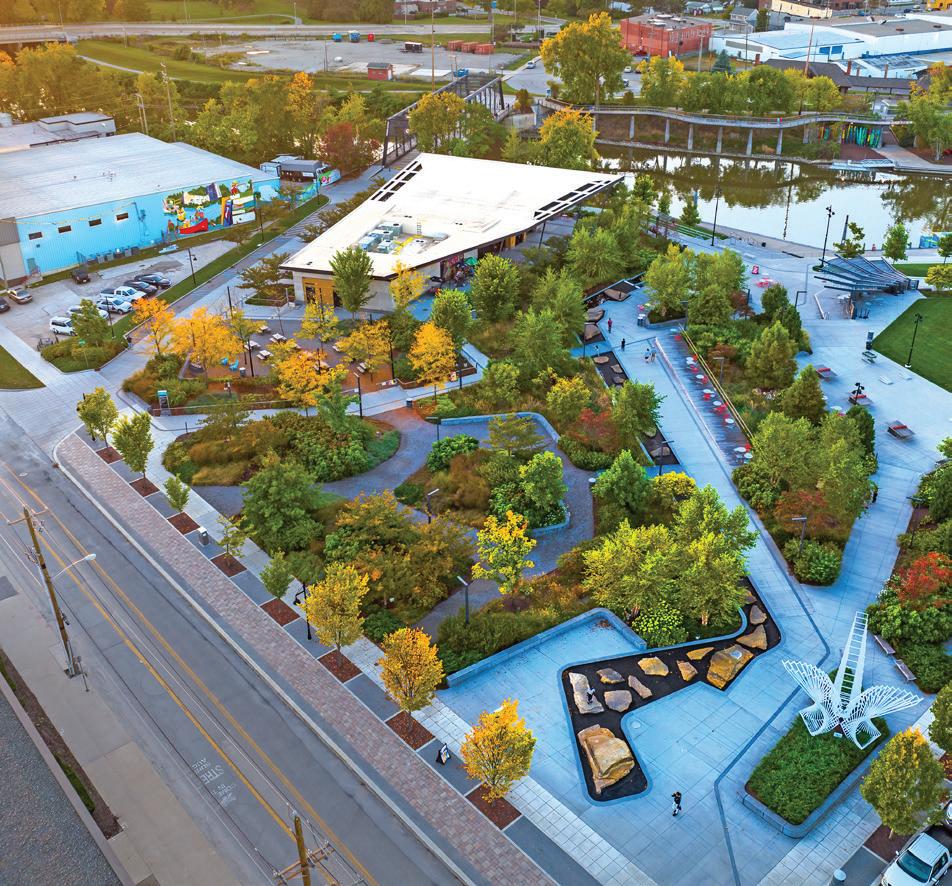
Indiana is the link between the eastern and western regions of the Midwest. With easy access to the East Coast, as well as the central and western United States, it is a great central location for any meeting or event.
First built in 1972, Indianapolis’ premier convention center, the Indiana Convention Center, is undergoing its sixth expansion. Once the construction is completed, the center will boast 1.1 million square feet of space for your next event, complete with ballrooms, exhibit floors and meeting rooms. An 800-room Signia Hilton is being built and attached via a skywalk, allowing attendees to easily access the center, and stay warm or cool in even the most extreme temperatures. The center and hotel anticipate opening in early 2026.
Fort Wayne hosts a variety of events at the Grand Wayne Convention Center. This location allows for guests to not only attend the event, but also easily access downtown, where they can dine, shop and participate in local events and culture. The convention center has many complimentary services, including room setup, Wi-Fi and even sensory kits, making for an inclusive experience. Four hotels are located within driving distance of the center and there are a variety of parking options available. Fort Wayne has its own international airport, making travel to the area a breeze.
Terre Haute Convention Center is another full-service convention center that provides everything you need, from in-house catering and free Wi-Fi to staff setup and teardown. No matter the size of your event, the convention center, featuring a 12,000-square-foot ballroom and six breakout rooms, can accommodate it. Its garage gives attendees a convenient place to park, while others can easily fly via Indianapolis International Airport.
Are you thinking something elegant, yet outdoorsy? Try The Inn at Irwin Gardens in Columbus. With its stunning historic property built in 1864, you’re sure to create a memorable experience. The venue offers both indoor and outdoor areas that can be tailored to suit any event, from corporate meetings to VIP retreats.
But, if you have a large group, the full garden package is for you for a maximum of 200 guests. With multiple lawns, you can set up as many seating areas and stations as you need.
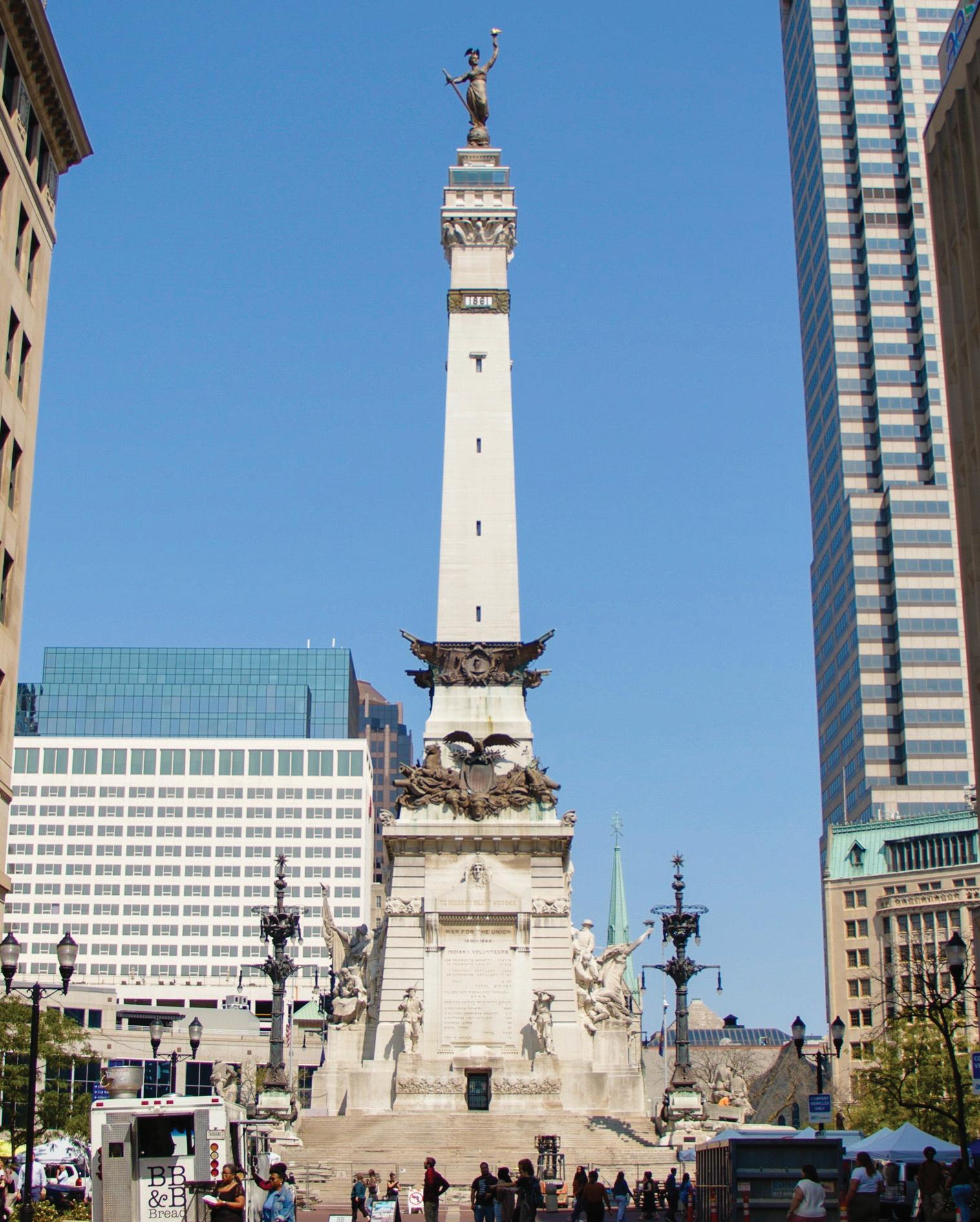
Looking for an eccentric event space in northern Indiana? The Northern Indiana Event Center at the Recreation Vehicle/Mobile Home Hall of Fame in Elkhart is perfect.
The event center itself has a convention hall, while the Hall of Fame offers spaces for events as well. Multiple local hotels allow guests to have a convenient place to stay near the conference center and attraction. Guests can fly into South Bend International Airport and make their way to Elkhart within 40 minutes.
Indiana has a multitude of colleges and universities, which additionally offer convenient spaces for your next meeting or event. Indiana University Bloomington has nearly 30 large and small event spaces available, while also providing your guests with a variety of dining options and accommodations.
In West Lafayette, Purdue University has several unique locations for your next meeting, including the historic Purdue Memorial Union, as well as a variety of theaters. Attendees can take in the city and college campus while visiting.
Indiana boasts a variety of event destinations, venues and options, and with a central location, multiple cities and several international airports, logistics and transportation are simplified.




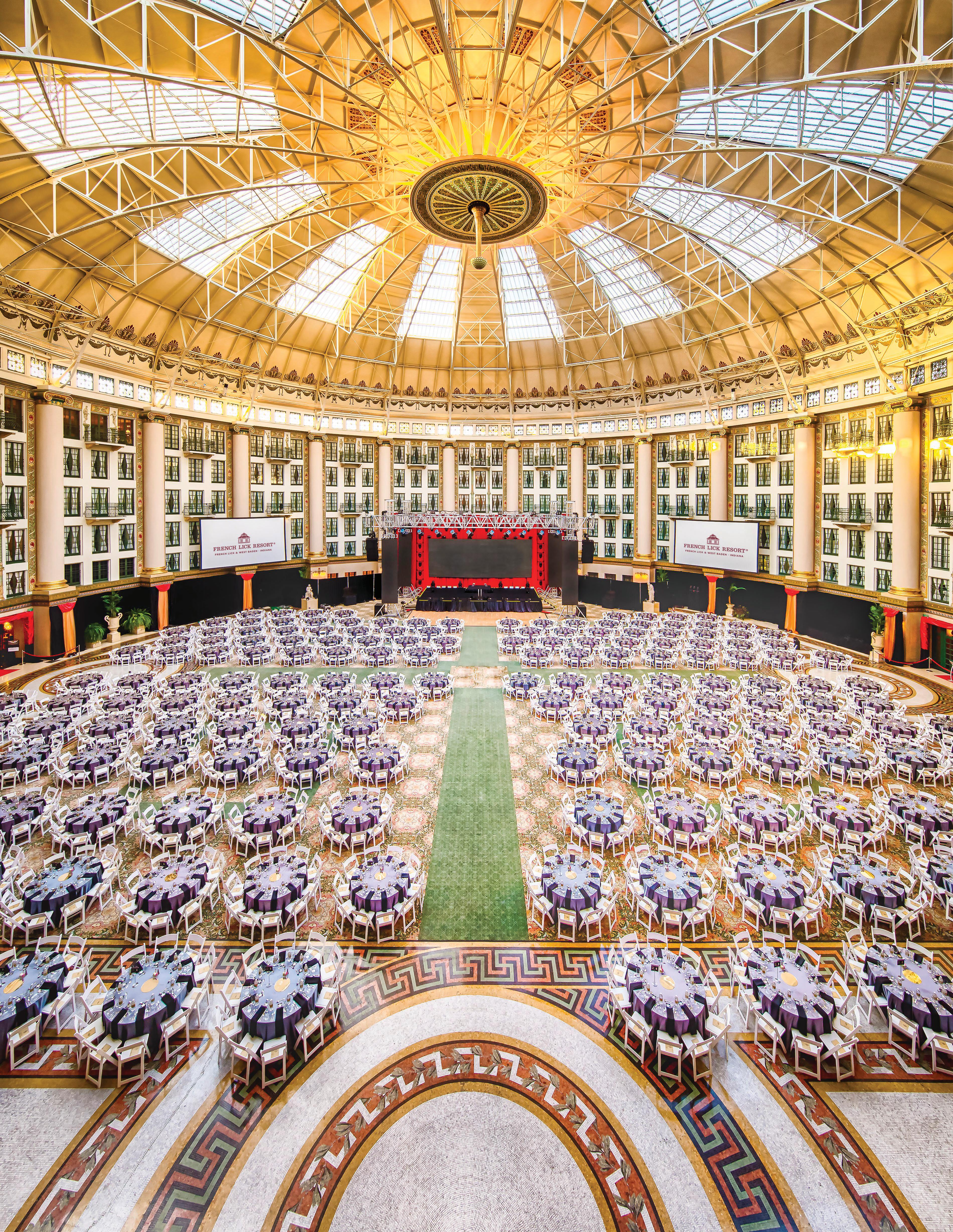

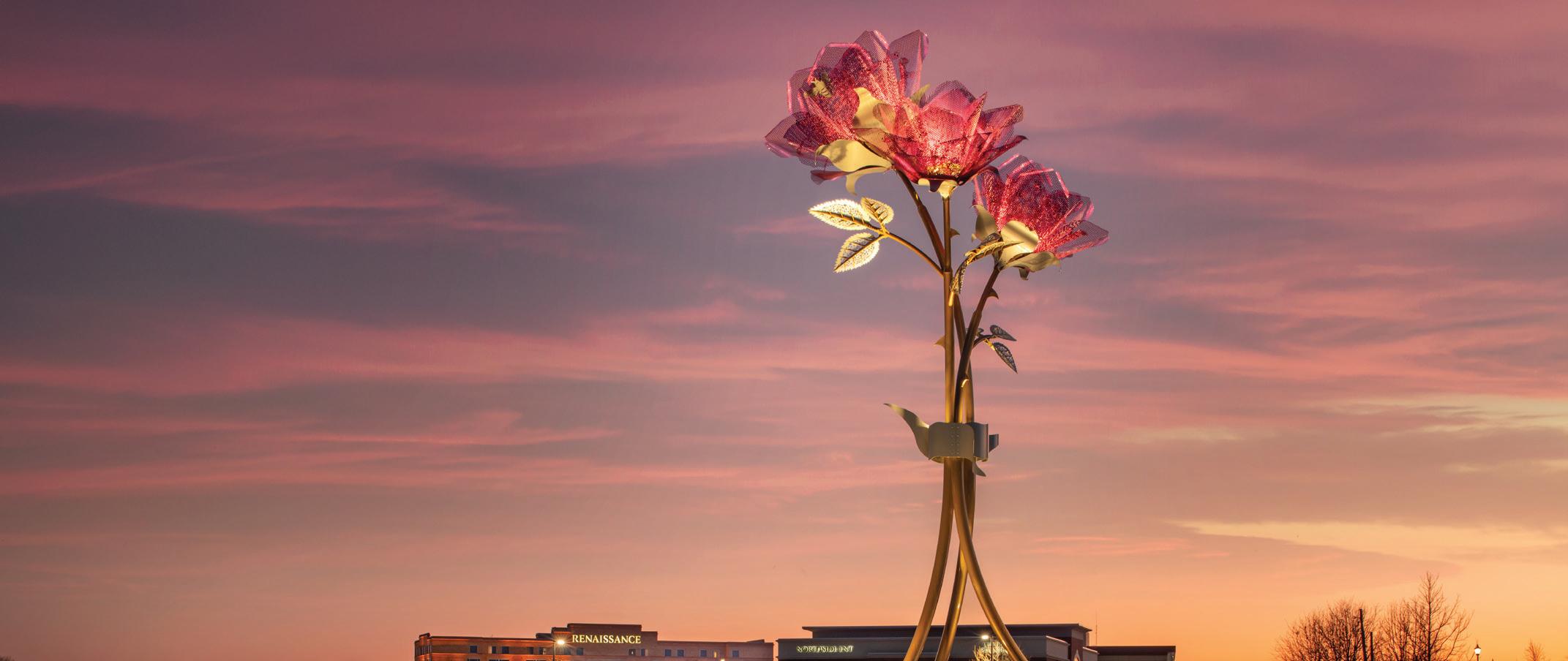
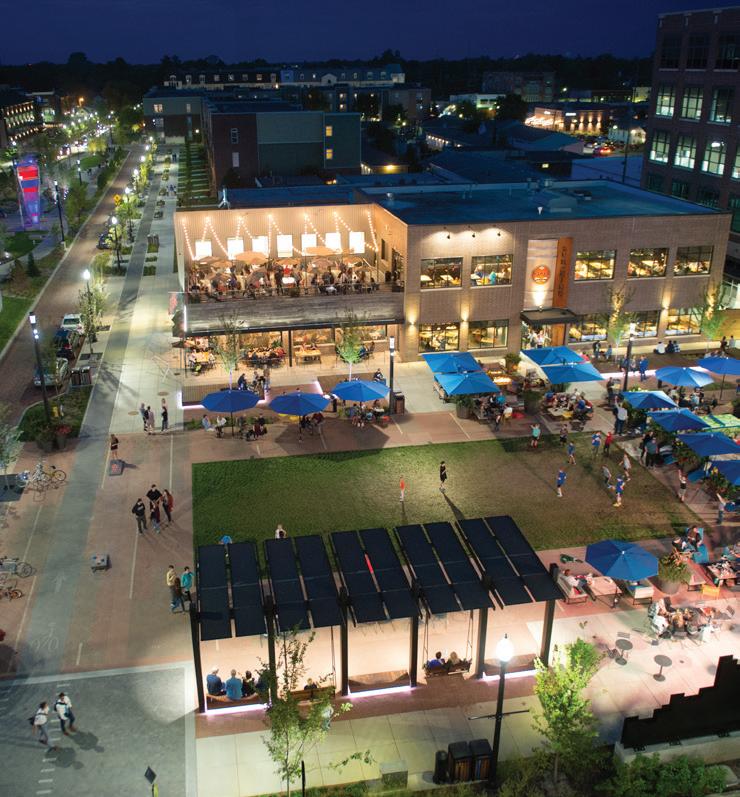
• 5,000+ hotel rooms
• 30,000 square feet of hotel meeting space and 198 hotel rooms under one roof with 400 additional rooms within walking distance
• 30 minutes from Indianapolis International Airport
• Less than a one-day drive for half of the U.S. population
• Customized and complimentary convention services to greet your guests and make them feel welcome
In Hamilton County, Indiana, we know small meetings need big outcomes. Whether it’s a board meeting, conference or trade show, we can accommodate all of your organization’s needs with unsurpassed quality and attention to detail.
With a diverse array of gathering places — from barns to boardrooms to ballrooms — more than 5,000 hotel rooms and 30,000 square feet of contiguous event space, your meeting is set up for success.
Located just north of Indianapolis, the cities of Carmel, Fishers, Noblesville and Westfield offer unique venues, vibrant arts districts, elevated dining and shopping, and personalized visitor services. Meeting in one of our cities also comes with added advantages: low hotel tax rates, free parking and easy access.
Special Incentives: Book a meeting with overnight rooms between now and December 31 and receive amazing incentives:
1. Financial support for meeting room rental and audiovisual needs
2. Elevated culinary experiences hosted by Hamilton County Tourism
3. A transportation allowance for off-site activities
4. Exclusive hotel rate deals available for select dates
Start planning your next meeting at VisitHamiltonCounty.com/Meetings.
Visit Hamilton County Indiana
Laura Kelner, DOS
37 E. Main St., Carmel, IN 46032
317.445.4988
lkelner@hamiltoncountytourism.com
MeetInHamiltonCounty.com
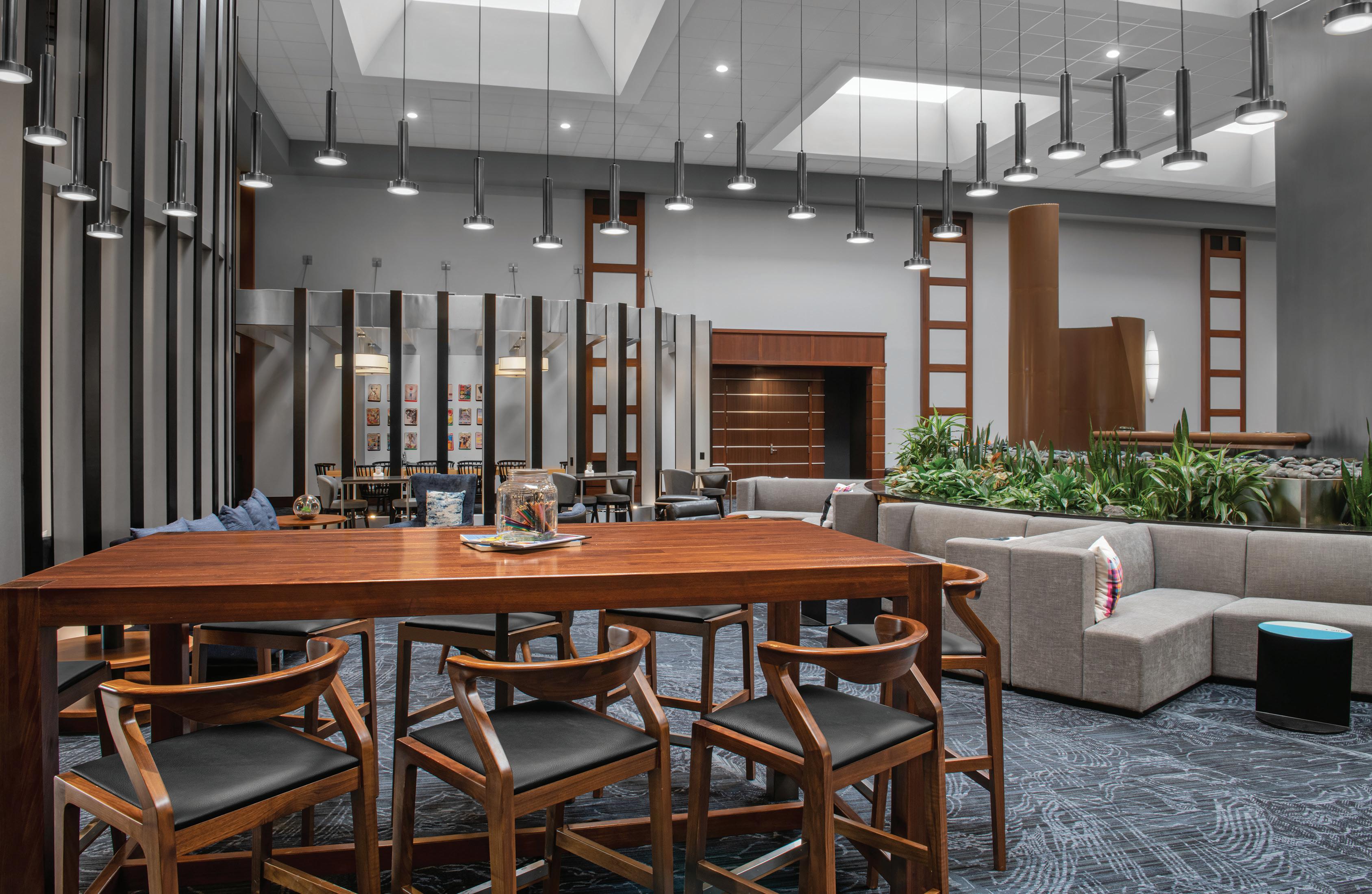
30,000
25 MINUTES FROM DOWNTOWN INDIANAPOLIS
5,500+
30 MINUTES FROM THE INDIANAPOLIS INTERNATIONAL AIRPORT
$ AFFORDABLE MEETING DESTINATION

Located in Kokomo’s walkable city center and featuring an automotive gallery celebrating the city’s heritage, our venue offers a one-of-a-kind backdrop for conferences, trade shows, and special occasions.
•55,000 sq.ft. facility with flexible space
•Capacity for up to 1,000 guests
•Elevated catering options
•On-site AV and exhibitor support


Kokomo is becoming the new destination for gatherings with 55,000 sq. ft. conference center
Opening in summer 2026, the Kokomo Conference Center is set to become one of the Midwest’s premier destinations for meetings, conferences, and special events.
Located in central Indiana and easily accessible from across the Midwest, the 55,000-square-foot conference center is designed with flexibility in mind.
Its three levels encompass approximately 55,000 square feet of event space, including a main ballroom that can host more than 1,000 guests, six breakout rooms, pre-function areas, a commercial kitchen, and more.
Adding to its uniqueness, the lower level will showcase Kokomo’s automotive heritage through a gallery of automobiles built in the community. You can even reserve this dynamic space for an informal gathering.
Perfectly positioned in the heart of the city, the center offers a walkable connection to all that downtown Kokomo has to offer — restaurants, shops, nightlife, and attractions — all just steps away.
The conference center is seamlessly connected to a new Hilton Garden Inn, providing 108 well-appointed guest rooms, a restaurant and lounge, indoor pool, and fitness center, ensuring that event guests enjoy convenience and comfort from start to finish.
With booking now open, organizations from the Midwest and beyond can begin planning their events in a setting that combines modern amenities with the energy of a vibrant downtown community.
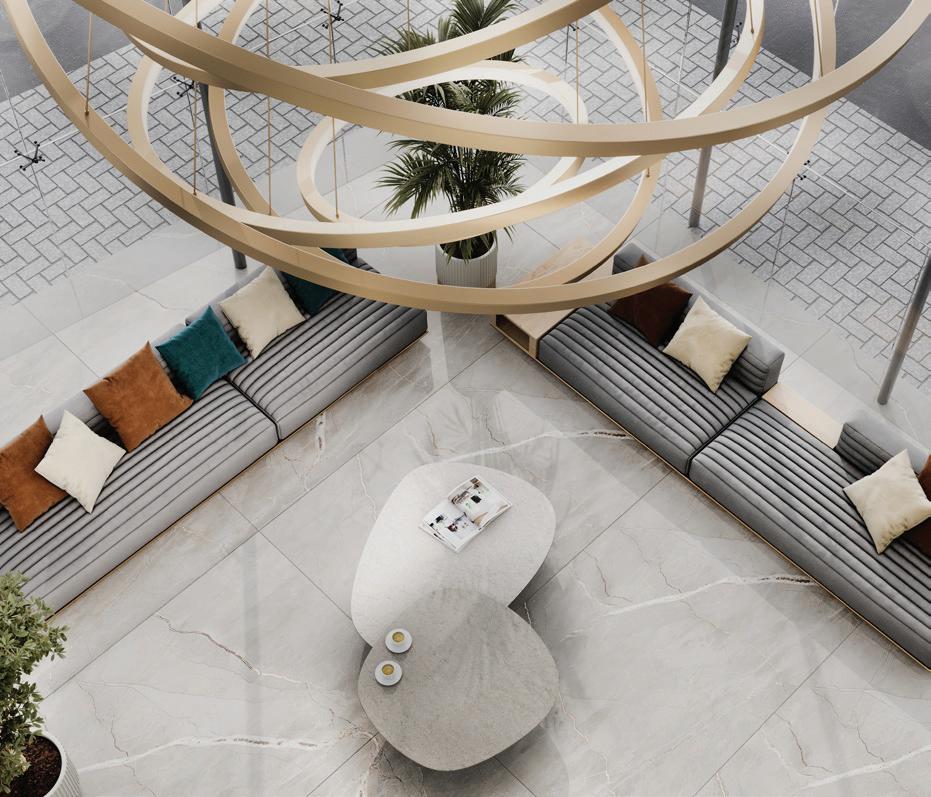
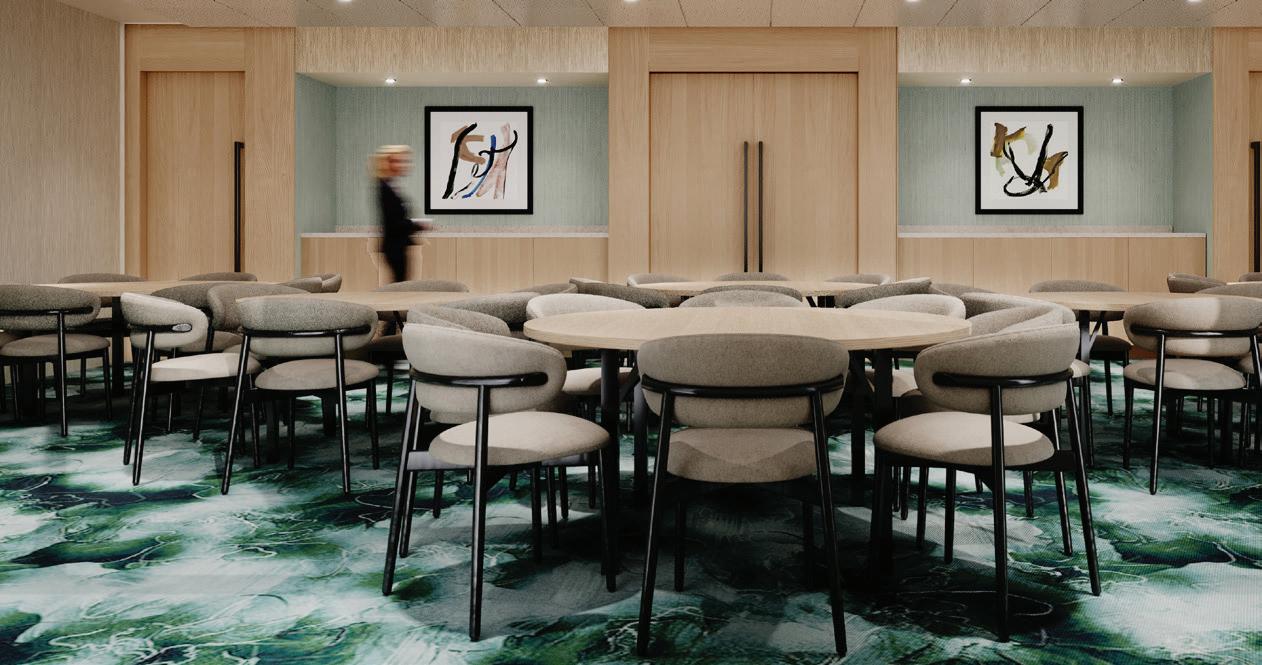

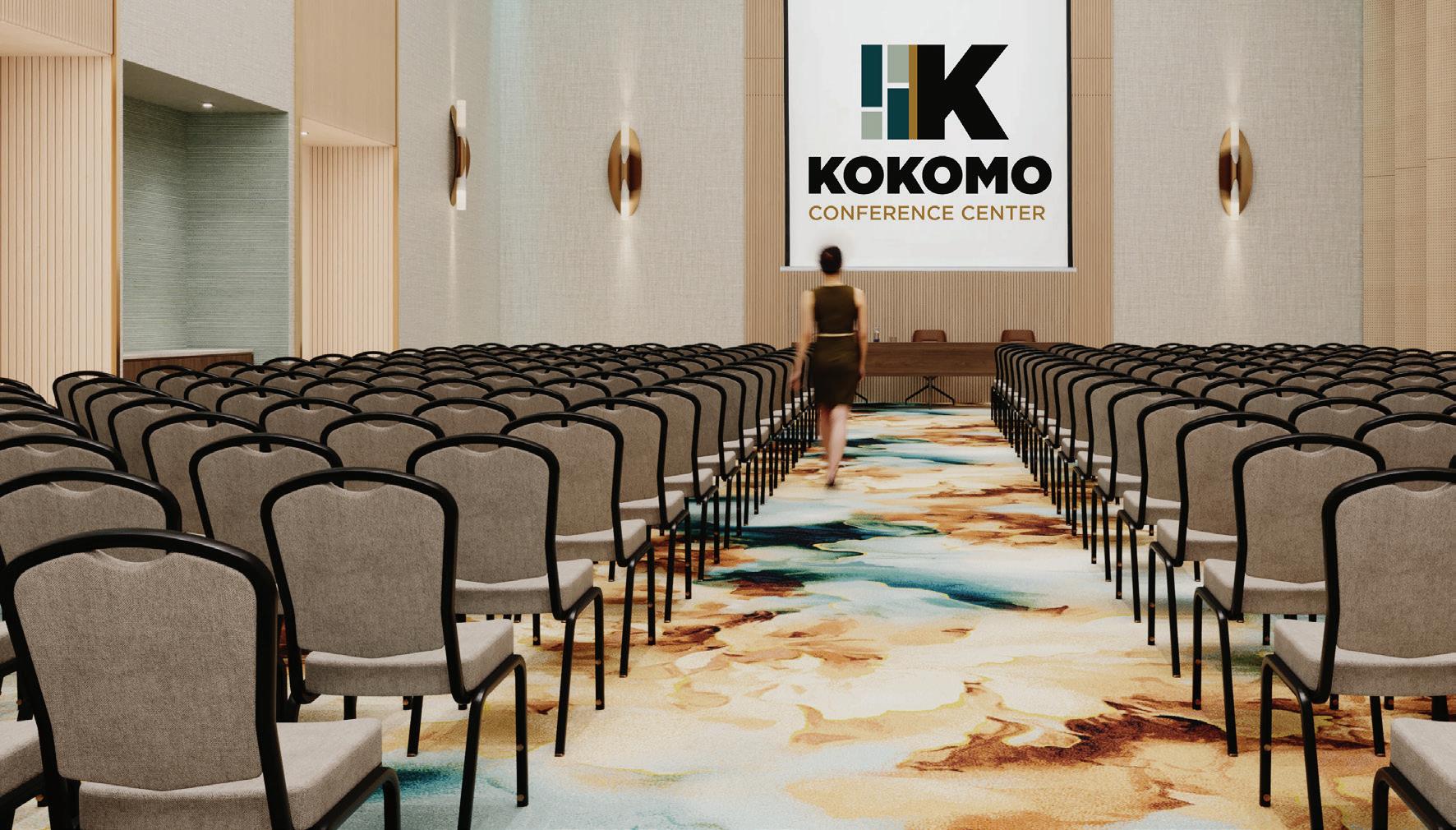
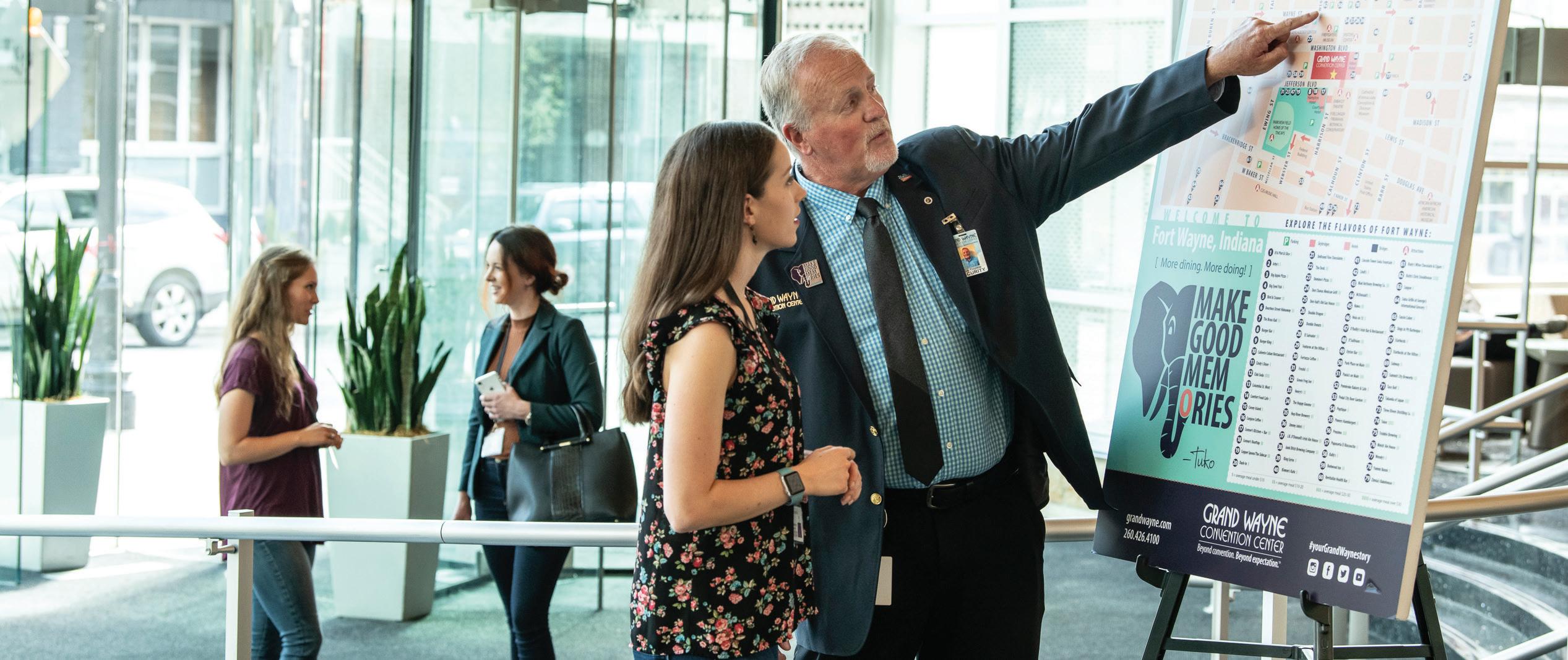
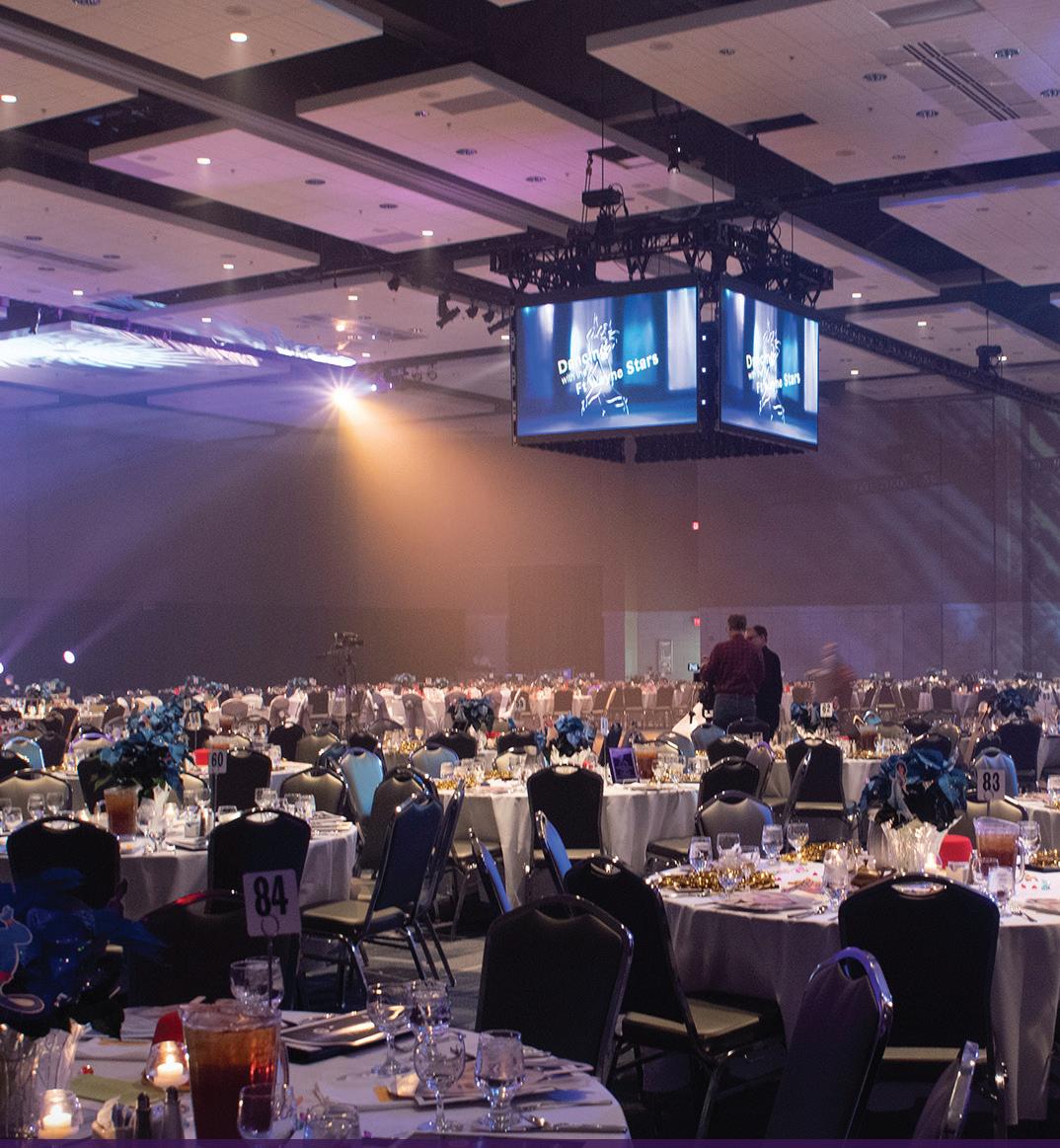
• 225,000 square feet of sleek, versatile, creative spaces with intuitive floor plans
• 18 fully carpeted and technologically equipped conference and event rooms
• Service for 4,500 theater, 3,100 banquet and 2,900 classroom
• Two loading docks with eight easyaccess bays and no drayage fees
• Advanced in-house audiovisual technology in all areas
• Free high-performance Wi-Fi for 5,000 simultaneous users
• Three adjacent hotels with garage parking and skywalk connectivity
Downtown Fort Wayne, Indiana, is frequently an unexpectedly happy surprise for most visitors. With its flourishing creative arts scene, expanding business base, and emerging culinary and wellness vibe, this welcoming city is earning broad recognition as one of the most desirable destinations in the U.S. There’s an energy here that blends work and play, old and new, fun and function into a singular good-memory experience.
Beyond the amazing architectural design is the acclaimed Grand Wayne Convention Center service that planners and guests notice most:
•A full team of in-house sales and event managers
•Acclaimed in-house audiovisual professionals
•A fully staffed in-house food and beverage service
•24/7 in-house engineering, housekeeping and room-set teams
•On-site security, event ushers and complimentary guest experiences
The most pleasant surprise for many guests is discovering downtown Fort Wayne’s welcoming, walkable hospitality. More than 60 restaurants, pubs, coffee and dessert houses; delightful boutique shopping and entertainment options; lighted pedestrian walkways and parks; and an amazing outdoor gallery of public art beckons visitors to explore and enjoy. Live music, pop-ups and festivals fill the calendar, and foodies are welcome at every table.
Grand Wayne Convention Center
120 W. Jefferson Blvd., Fort Wayne, IN 46802
260.426.4100 GrandWayne.com

FOR PLANNERS:
» Full in-house Sales, Event Management, AV Technology, F&B, and Host services
» 225,000 sf of beautifully appointed space
» 18 versatile, fully appointed event spaces and intuitive floor plans
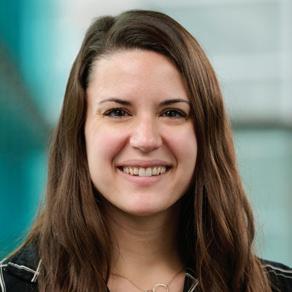
» 4 downtown full service comfortable hotels with garage parking
» Award winning service with a nearly 80% rebooking rate
» SAVE UP TO 15% vs. comparable cities!
FOR ATTENDEES:
» Walkable, safe, enjoyable downtown
» 60+ walk-to restaurants, pubs, cafes, coffee & dessert houses
» Boutique shopping; live entertainment; vibrant arts & attractions
» Riverfront parks, trails, and activities for all ages and abilities
» Easy Midwest drive-to destination; Easy by air via FWA





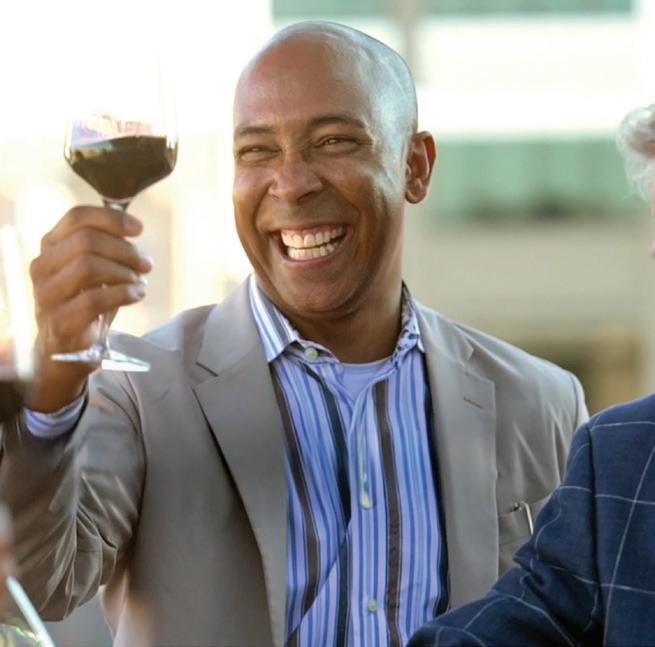




CAESARS SOUTHERN INDIANAis perfect for any size business meeting, corporate event, banquet and more. Make everyone attending your meeting feel like high rollers in Corydon and Harrison County, Indiana.
To learn more visit –thisisindiana.org/group-travel




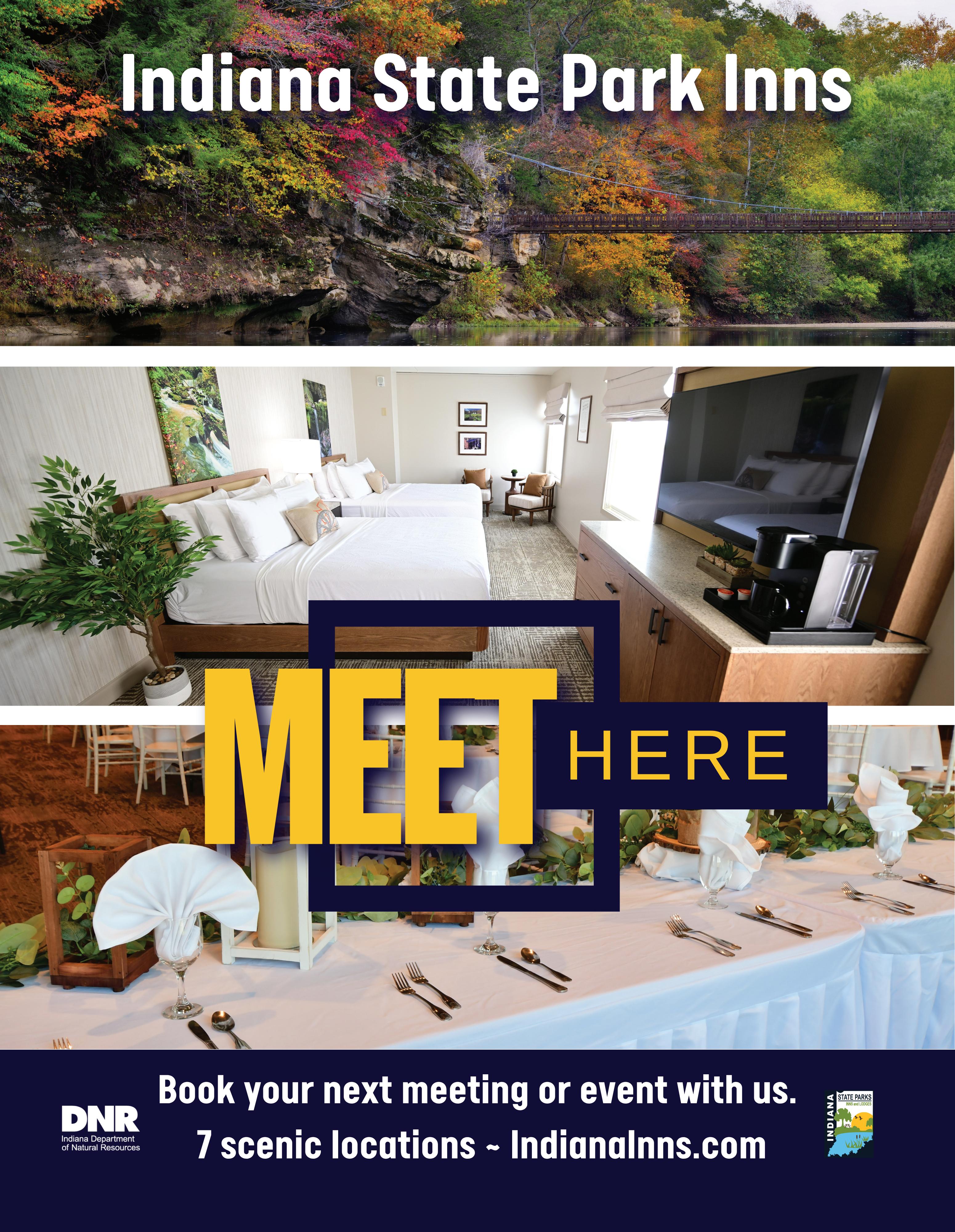





Michigan is truly a unique Midwest experience, as you can find dunes on the beaches of Lake Michigan or heavily wooded forests in the Upper Peninsula. You can find lots of history in downtown Detroit or experience the state’s growth in Kalamazoo. But no matter where you hold your meeting or event, Michigan is happy to welcome you.
Kalamazoo just broke ground on a brand-new event center that will help revitalize downtown, bringing in new businesses and new life to the city. The Kalamazoo Event Center is a state-of-the-art venue designed to host collegiate and professional sports, concerts and community events. An exciting new option in an ever-growing city, the center boasts proximity to Kalamazoo-Battle Creek International Airport, as well as to Detroit Metro Airport, so the destination is a quick flight away for your attendees.
Anticipated to open in 2027, this dynamic center will redefine the region’s event experience and become a must-visit hub for entertainment, competition and connection.
Make any occasion a landmark event in Marquette. Since hosting its own meetings as the Northland Hotel in 1930, the Landmark Inn has remained one of downtown’s premier destinations for conferences and corporate functions. However, following a comprehensive refurbishment, the Landmark has infused its old-world architecture and ambiance with sophisticated conference technology to meet today’s event requirements.
There are four elegant spaces to choose from, including the Harbor Room at 2,208 square feet and a capacity of 100, the Parlour at 930 square feet and a capacity of 50, the Sky Room at 660 square feet and a capacity of 32, and the Board Room at 495 square feet and a capacity of 24.
Looking for something more unexpected for your next event? Try Big Rapids! Located in west central Michigan, Big Rapids can provide you with all you need for your meeting or event. Home to Ferris State University, there are options on and off campus to host. The university is within walking distance of downtown Big Rapids, allowing your attendees to easily find food, lodging and more. Travelers can fly into Gerald R. Ford International Airport, located an hour south in Grand Rapids, making it easy to access.
Detroit is a staple for Michigan-based conferences. This historic city is constantly evolving and growing, including a massive renovation of Huntington Place. Located conveniently downtown, the convention center offers over 700,000 feet of exhibit hall space, a total of five exhibit halls, 80 meeting rooms and eight banquet rooms to accommodate your event.
Detroit is also lucky enough to boast a second event center, the Suburban Collection Showplace. Attached to the Hyatt Place Detroit/Novi and a restaurant, your guests will have everything they need in one place, while also being conveniently located downtown.
If you want something that is less big-city feeling, Treetops Resort in Gaylord is an event center unlike any other. Here, you can host your event, as well as partake in team-building activities, all while taking in spectacular views of the woods in northern Michigan.
Designed with functionality and modernity, Treetops offers many flexible spaces, from intimate boardrooms to an expansive convention center, with advanced audiovisual technology to accommodate gatherings of all styles and purposes. The property provides catering, as well as lots of fun for the day’s end, including a ski hill, hot tubs and more.
A stunning location between the Lower and Upper Peninsulas, Mackinac Island offers fantastic conference options. Mission Point Resort, for instance, includes a conference center, 38,000 square feet of flexible venue space, 243 lakefront guest rooms and suites, and unique amenities such as farm-to-ferry dining, team-building opportunities and a travel logistics support team. Without cars and the distraction of a big city, conference attendees can focus on the event, as well as truly enjoy themselves in their downtime at the day’s end. While there are no cars, guests can access the island via direct flight, ferry or cruise.
No matter where you look in Michigan, there are a multitude of options for your next meeting or event. Whether you want a big-city panorama, a view of the treetops or an island scene, you can find it all here.
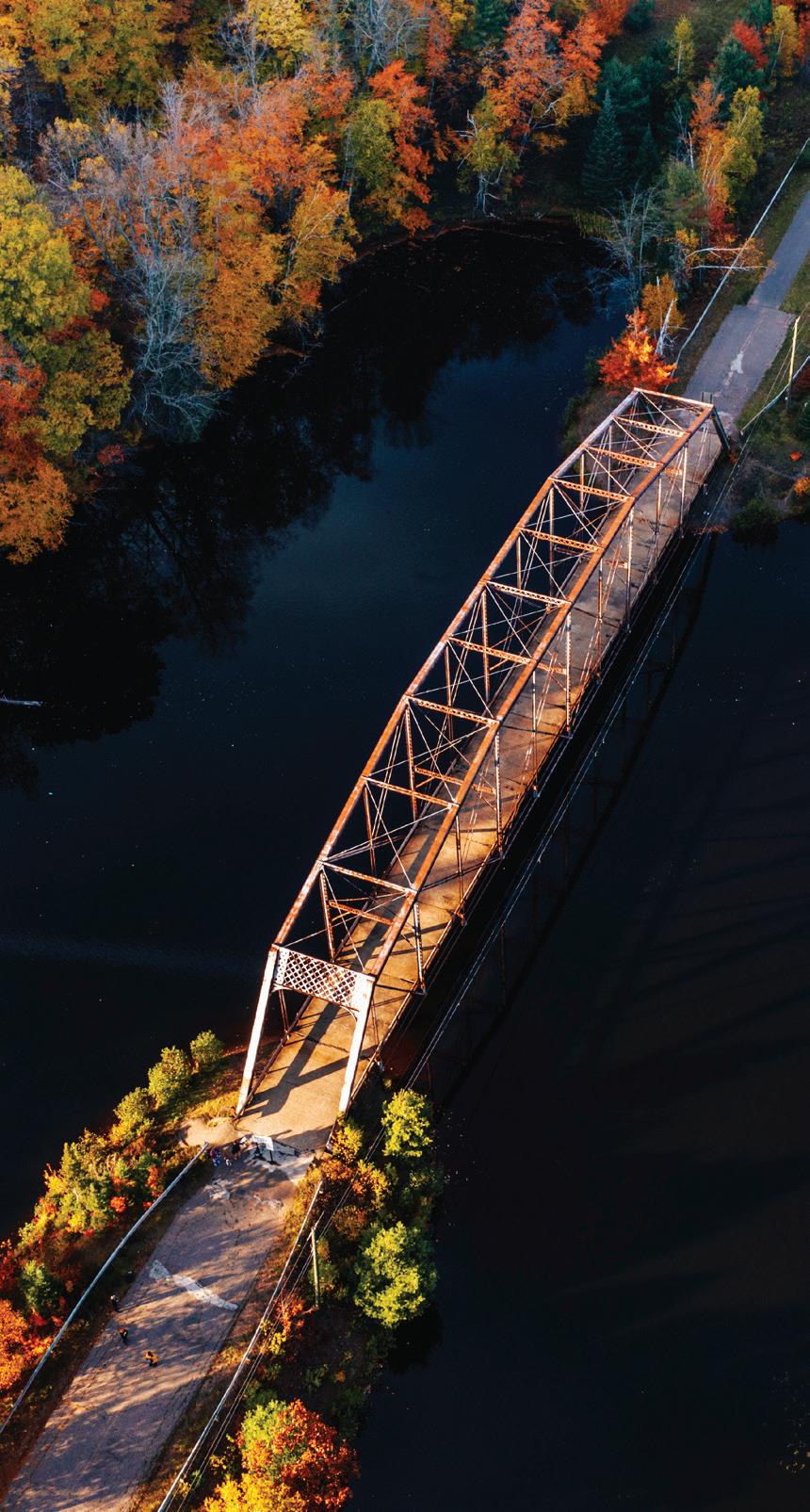
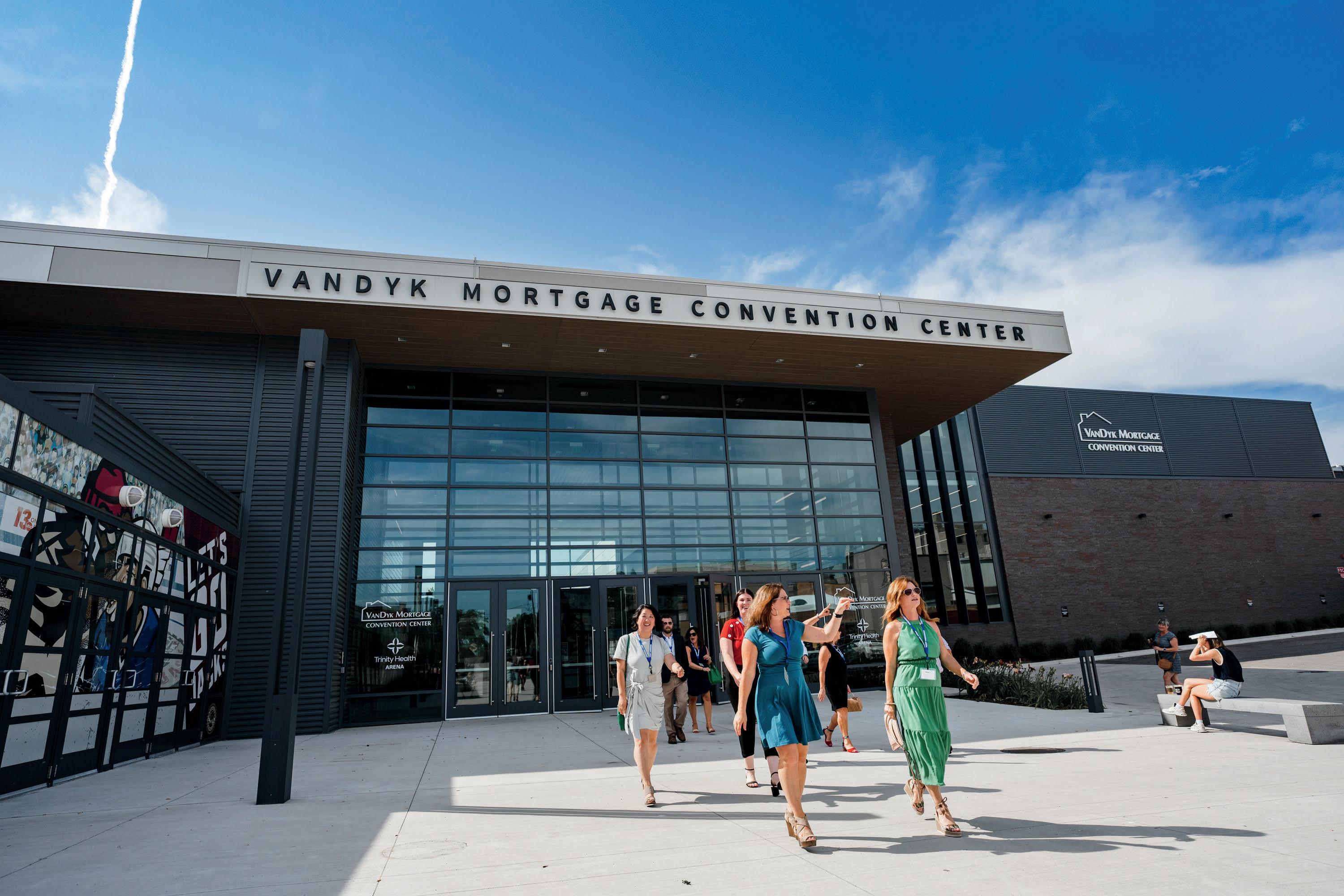
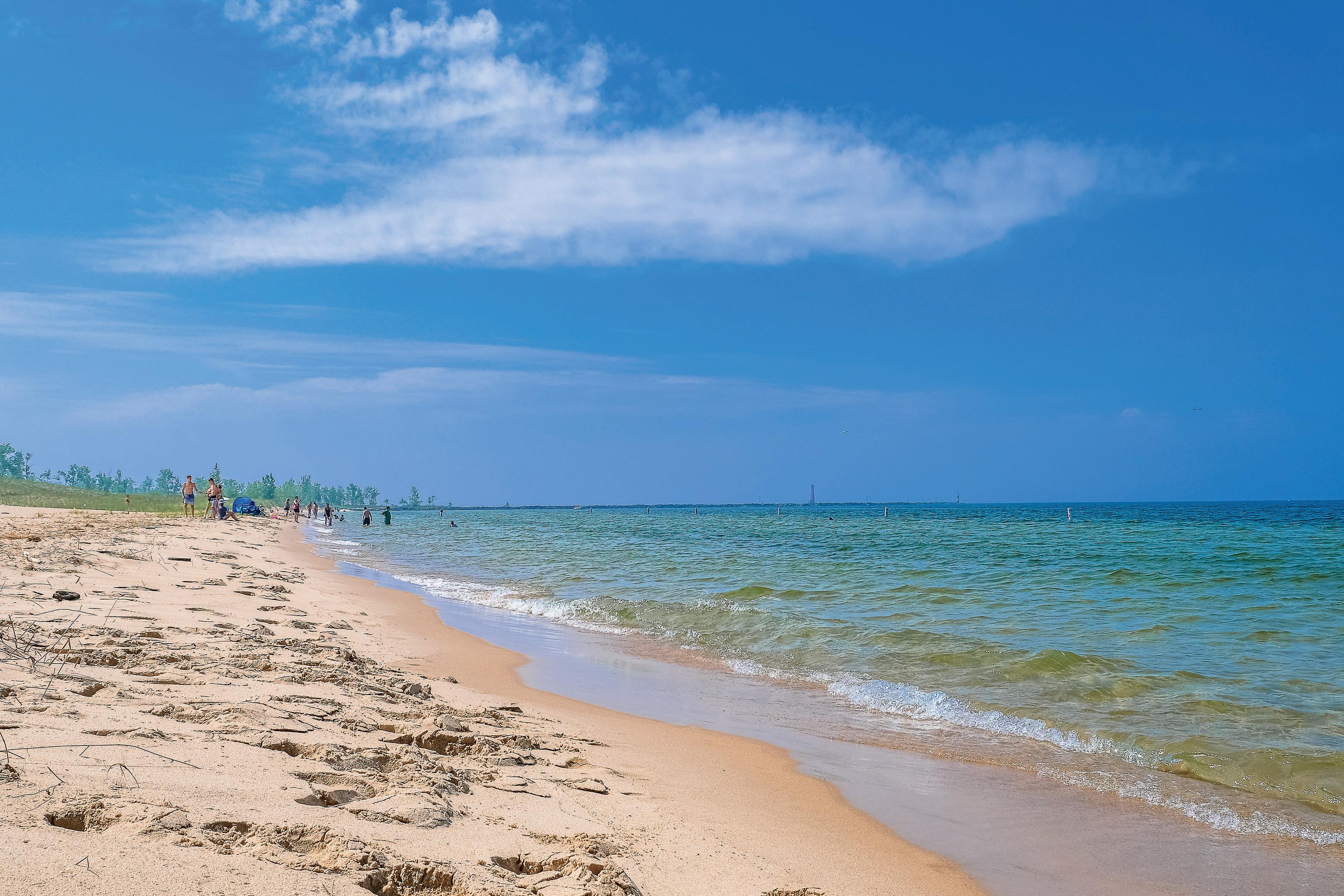

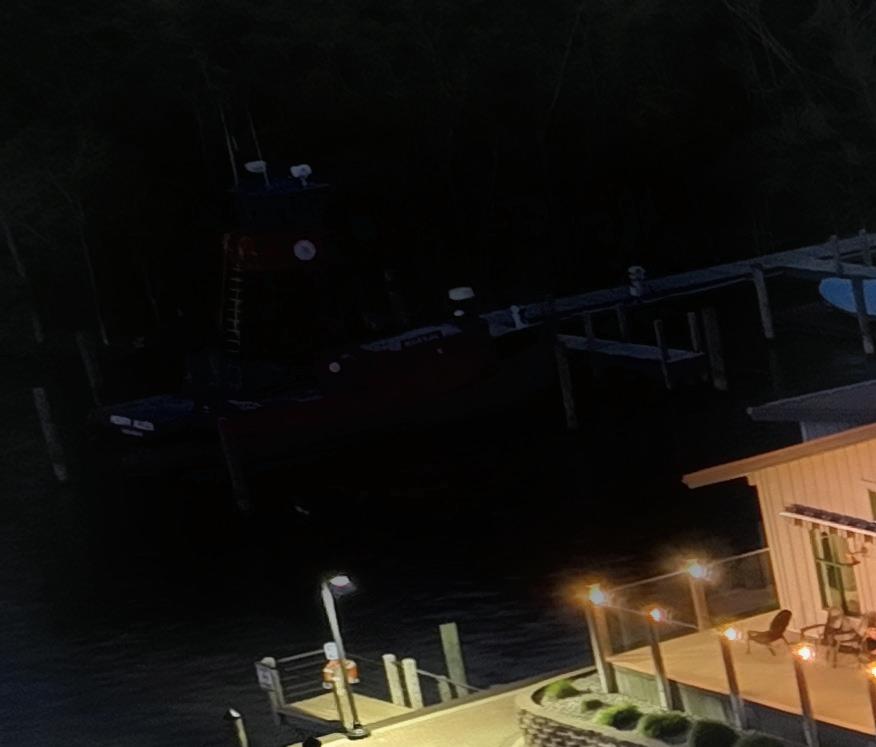



Holland, Michigan, is where small meetings make a big impact. Perfect for groups of 100 or fewer, our lakeshore community blends productivity with relaxation, offering a welcoming backdrop for gatherings year round. Just three hours from Chicago or Detroit, and only 30 minutes from the Grand Rapids airport, Holland is both convenient and memorable.
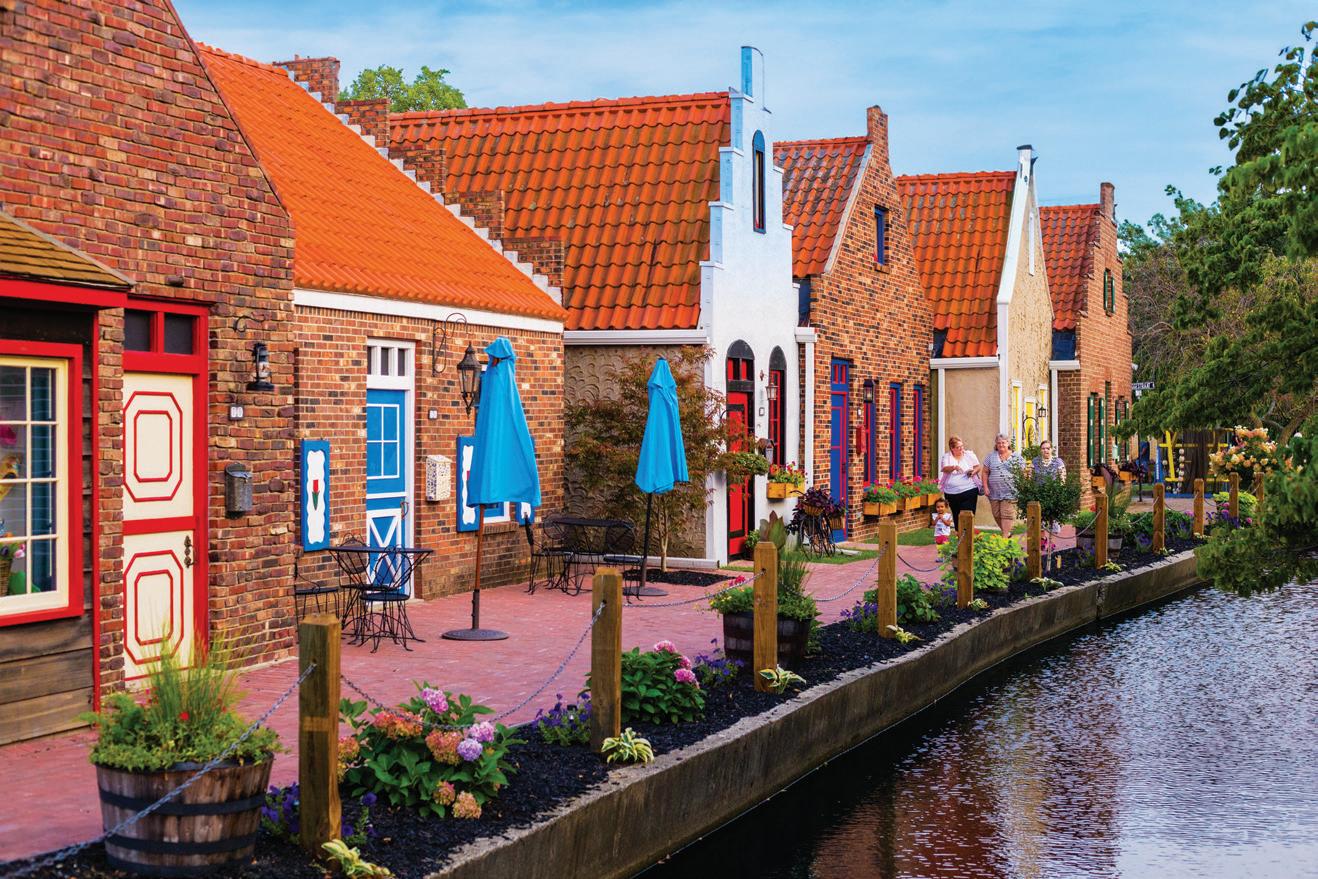
The Holland Visitors Bureau goes beyond booking spaces— we help craft custom itineraries and tours designed around your group’s interests. Imagine your horticulture team learning insider tips from Holland’s “tulip guru.” Or your attendees hearing from a city engineer, or even the mayor, about the country’s largest municipal snowmelt system and Holland’s new Ice Park.
For memorable experiences that fit seamlessly after morning sessions, there’s something for everyone. Embark on a historic downtown walking tour, enjoy candle making at Garsnett Beacon, or relax on a dinner cruise aboard the Holland Princess. Choose a tasting at Culture Cheese Shop or Cherry Republic’s wine bar. For a Dutch twist, make stroopwafels and learn traditional dances at Nelis’ Dutch Village. Each experience is flexible, interactive, and engaging—ideal for winding down the business day.



From modern boardrooms to a former speakeasy, Holland has venues sized right for smaller groups. Options include the Tulyp Hotel’s flexible conference rooms, Haworth Hotel’s on-campus meeting spaces, the lakeside charm of Boatwerks Waterfront Restaurant, and Macatawa Legends with its country club setting. Each offers a distinct atmosphere for memorable connections.
Many travelers come early, stay late, and choose to bring their families along when the event is in Holland. With award-winning beaches, 150 miles of bike trails, Dutch attractions, and a walkable downtown filled with shops, cafés, and breweries, Holland offers something for every age and season.
Our meetings expert, Milly Hudgins, offers personalized guidance at no cost—helping with venue selection, itineraries, family add-ons, and more. Let Holland’s blend of lakeshore beauty, cultural richness, and warm hospitality set the stage for your next unforgettable meeting.
616.394.0000
meetings@holland.org holland.org

Work, fun, and relaxation don’t always go together, but we’ve made finding that balance a priority. Our team is committed to your success with 15,756 square-feet of private meeting rooms, on-site catering, and highquality audiovisual resources. Then, end your day with our world-class restaurant and guest rooms that ensure a restorative night’s sleep.


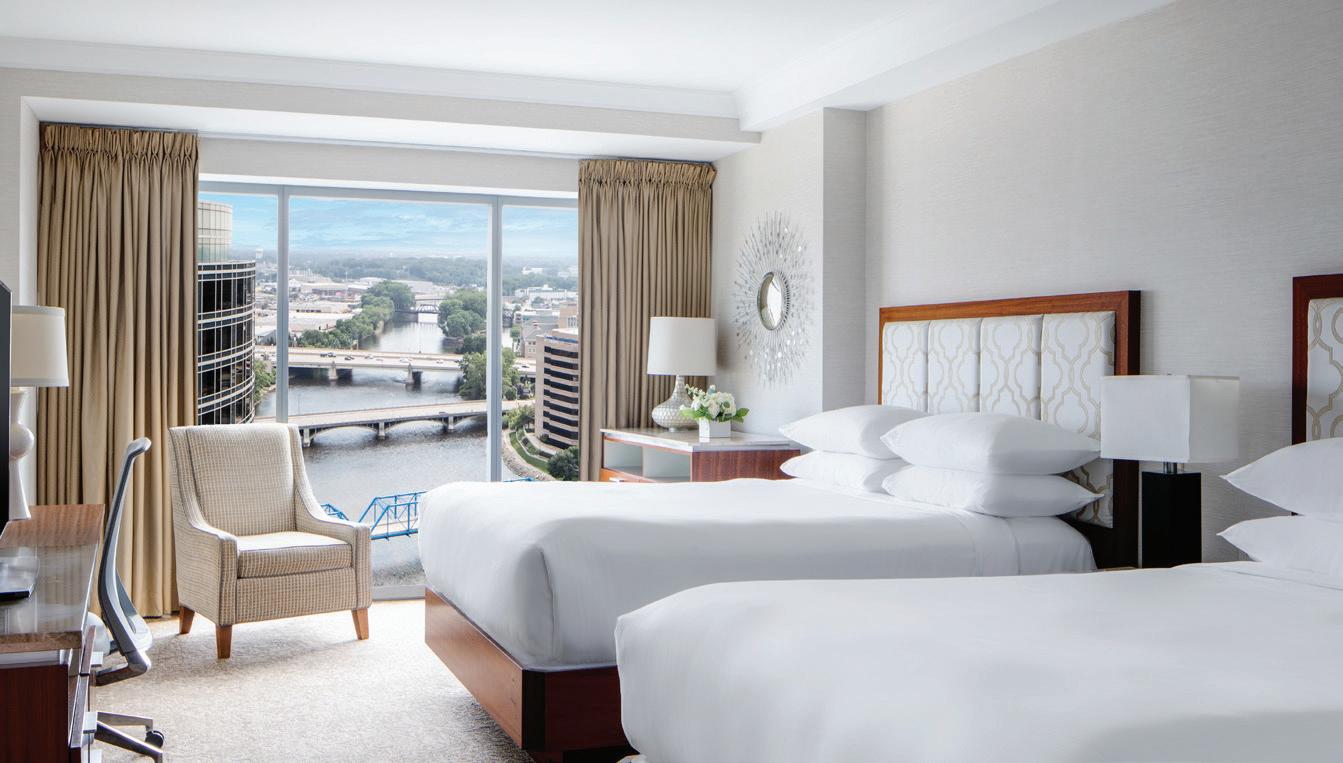
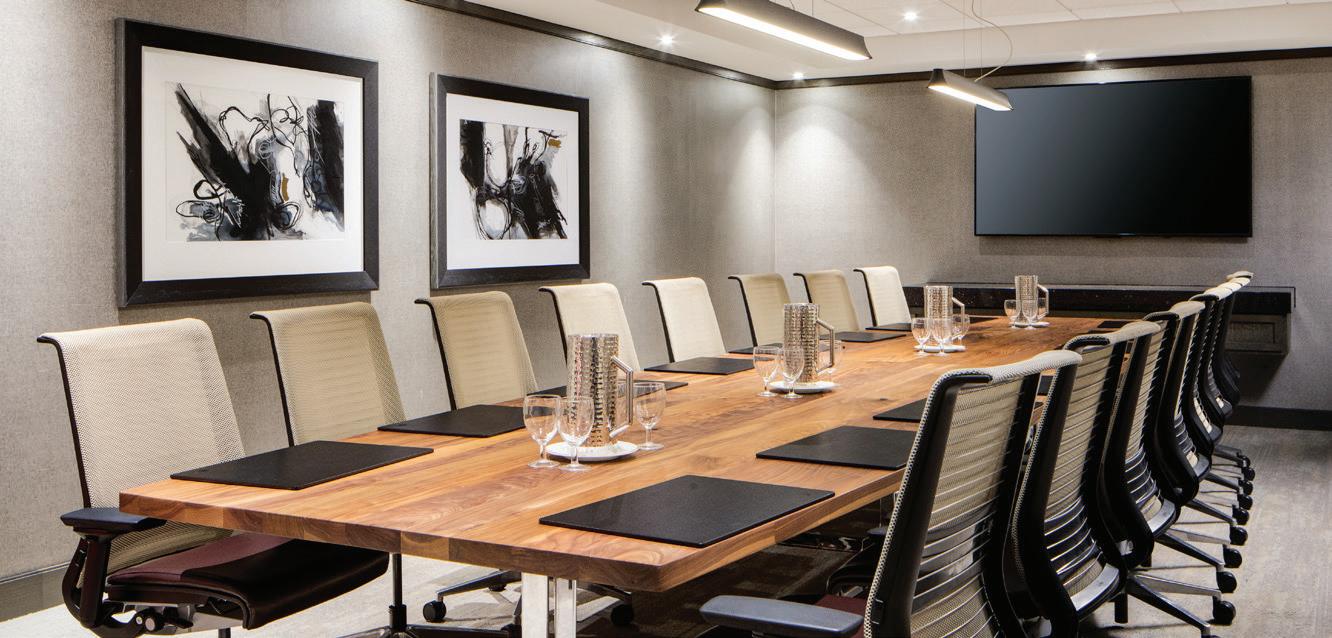
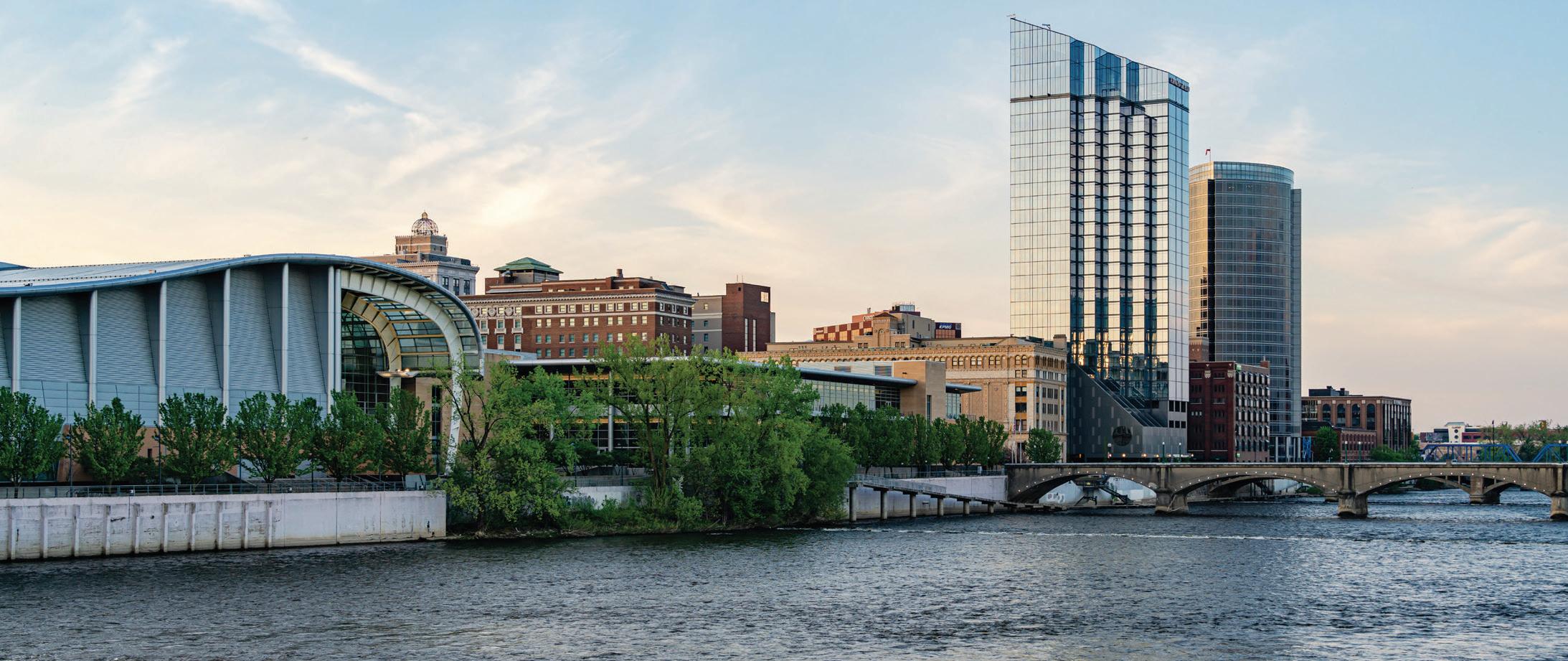
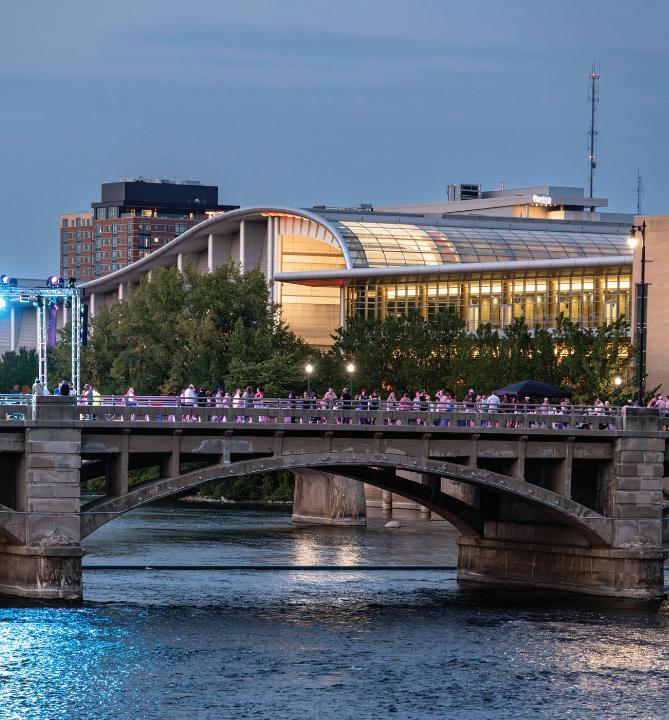
• A convention center with 162,000 square feet of exhibit space
• A 40,000-square-foot ballroom and 26 meeting rooms
• Three hotels (1,200+ rooms) connected to the convention center by a skywalk
• 10 additional hotels (1,300+ rooms) within a 10-minute walk
• 300+ restaurants, shops and entertainment venues within a 10-minute walk
• 140 daily nonstop flights to 35+ markets
Conveniently located halfway between Chicago and Detroit, Grand Rapids combines big-city meeting amenities with small-town service. Its downtown convention neighborhood is anchored by a state-of-the-art convention center featuring a 162,000-square-foot exhibit hall, a 40,000-square-foot ballroom and 26 breakout rooms that can be customized for any event size and setup. The center’s climate-controlled skywalk connects to three first-class hotels (1,200+ guest rooms), while 10 additional hotels (1,300+ rooms) are within a 10-minute walk. Downtown also offers great off-site meeting venues, including five museums, 10 craft breweries, 30+ entertainment venues and 140+ restaurants. Downtown is just 16 minutes from Gerald R. Ford International Airport, which offers 140 daily nonstop flights to 35+ markets. Grand Rapids is also within a day’s drive of half the U.S. population and is served by Amtrak.
Experience Grand Rapids provides personal assistance at every step of the process. A Grand Response™ team connects planners with local resources and more, while the GR Attendee Exclusives program offers special deals at restaurants and attractions. CNN named Grand Rapids 1 of America’s 10 Best Towns to Visit in 2024. There are endless opportunities for attendees to relax and have fun, from excellent dining and lively nightlife to four-season outdoor activities to Frederik Meijer Gardens & Sculpture Park.
A riverfront amphitheater is opening downtown in 2026, to be followed by a professional soccer stadium in 2027. The airport is in the midst of a $600 million enhancement to accommodate growth. These and other ongoing investments are making an already-great place to meet even better!
Experience Grand Rapids
616.258.7388
sales@experiencegr.com
ExperienceGR.com/Meetings


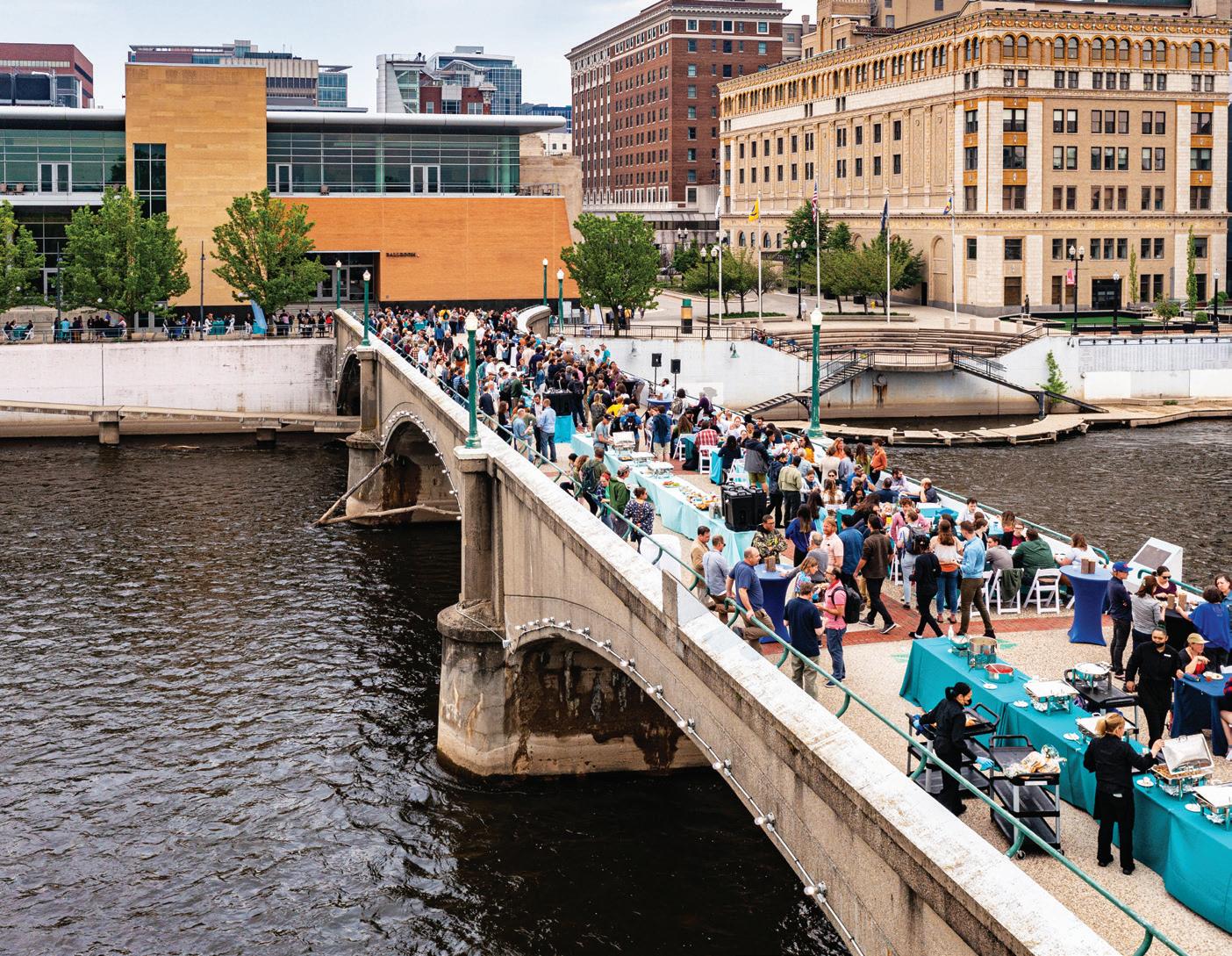
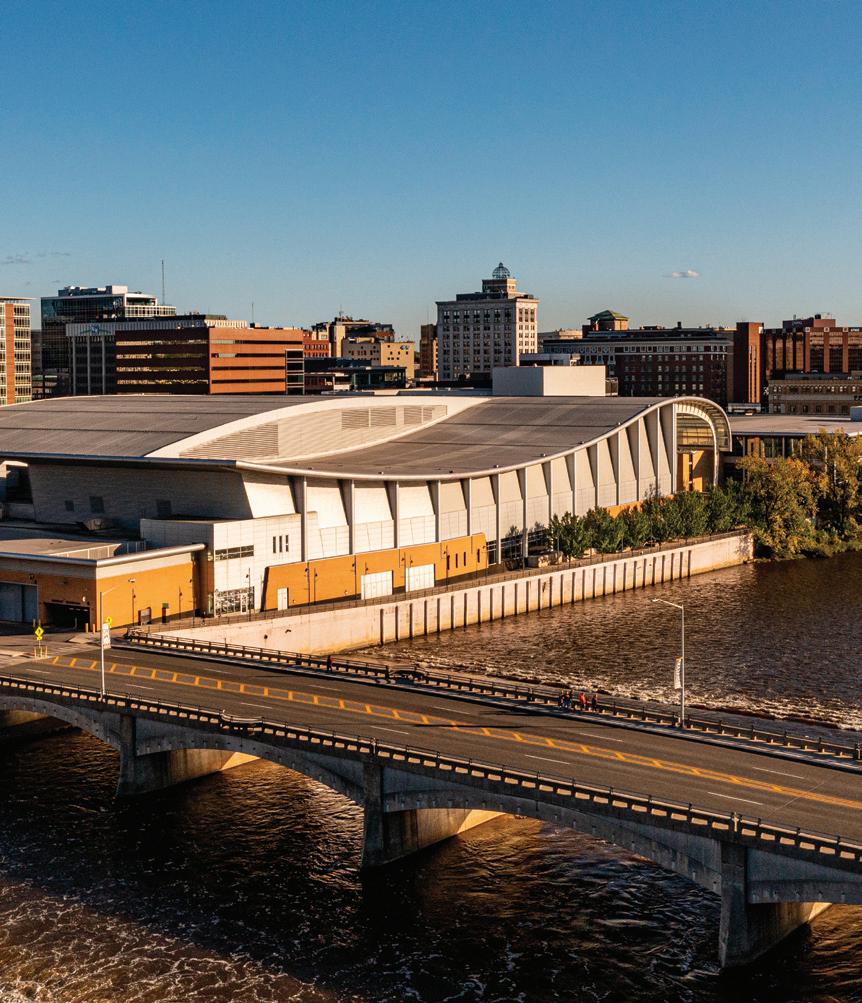
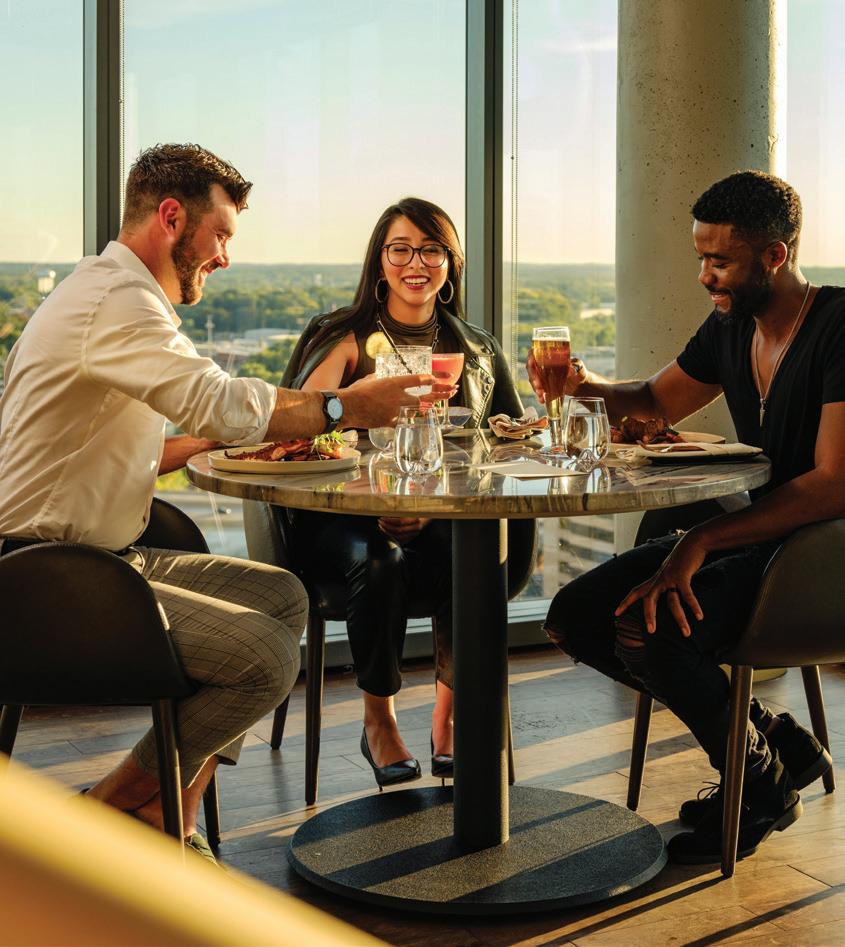
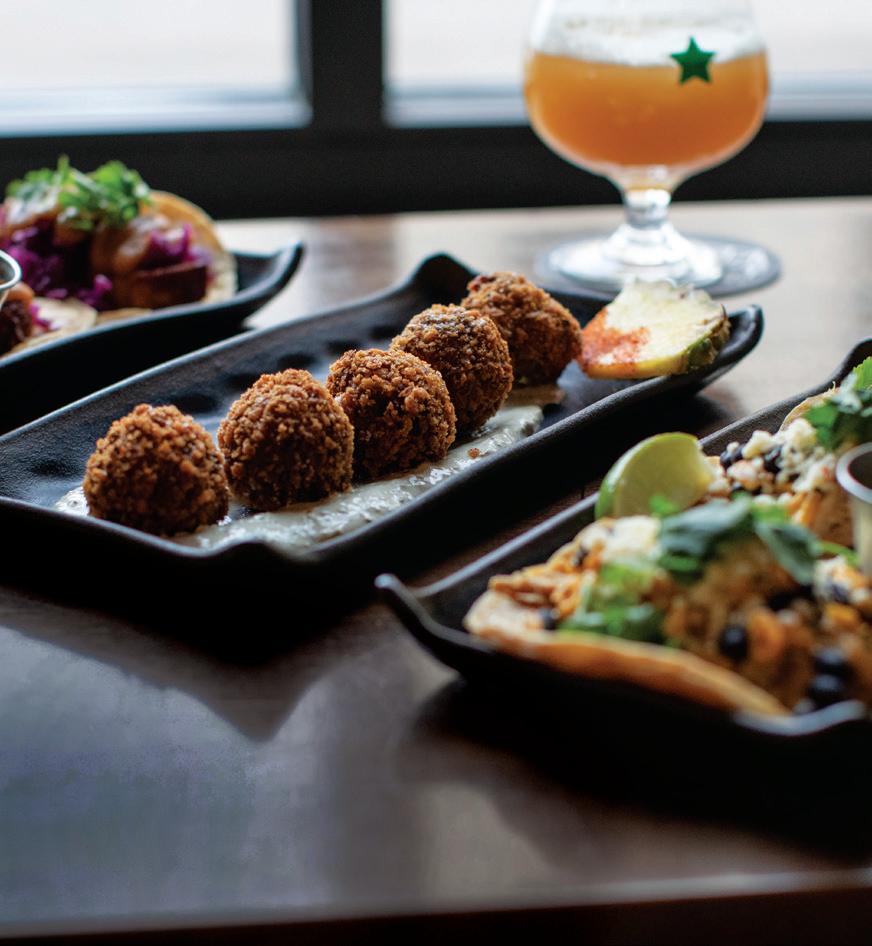
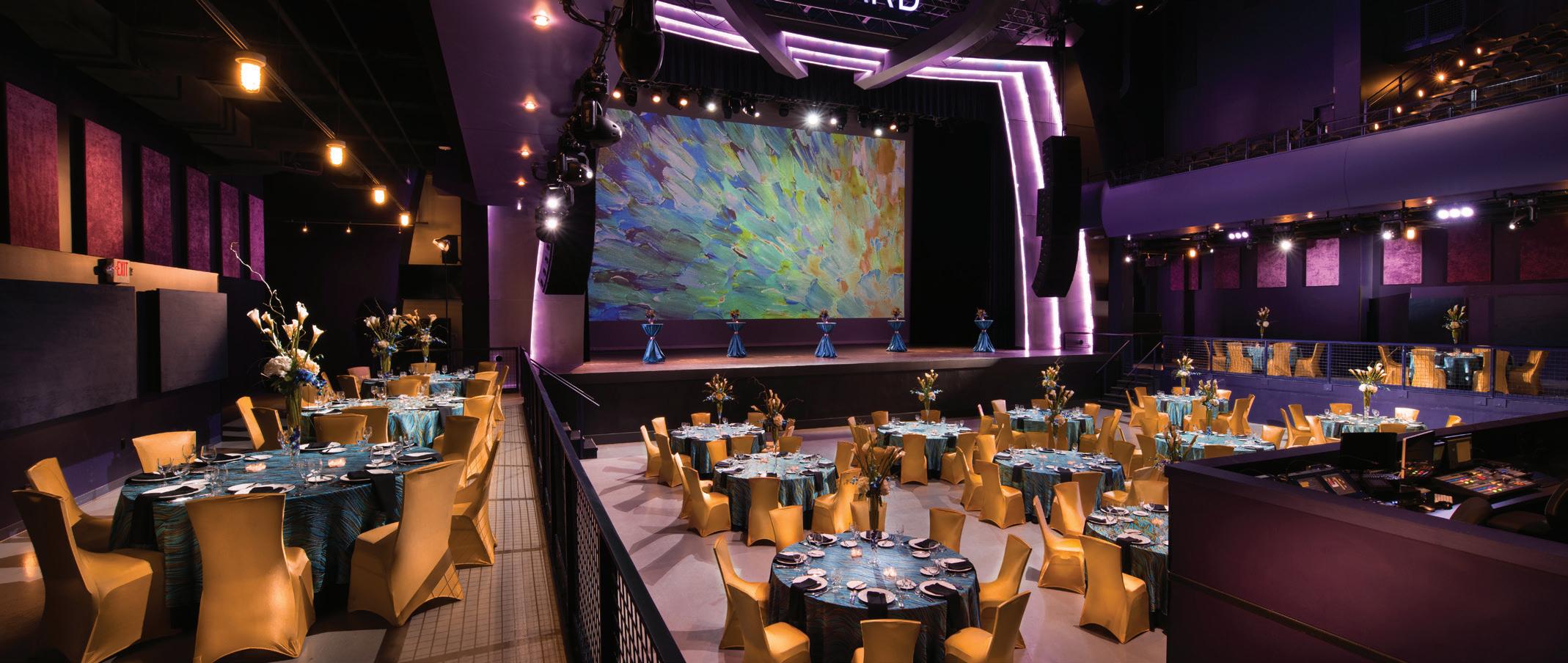
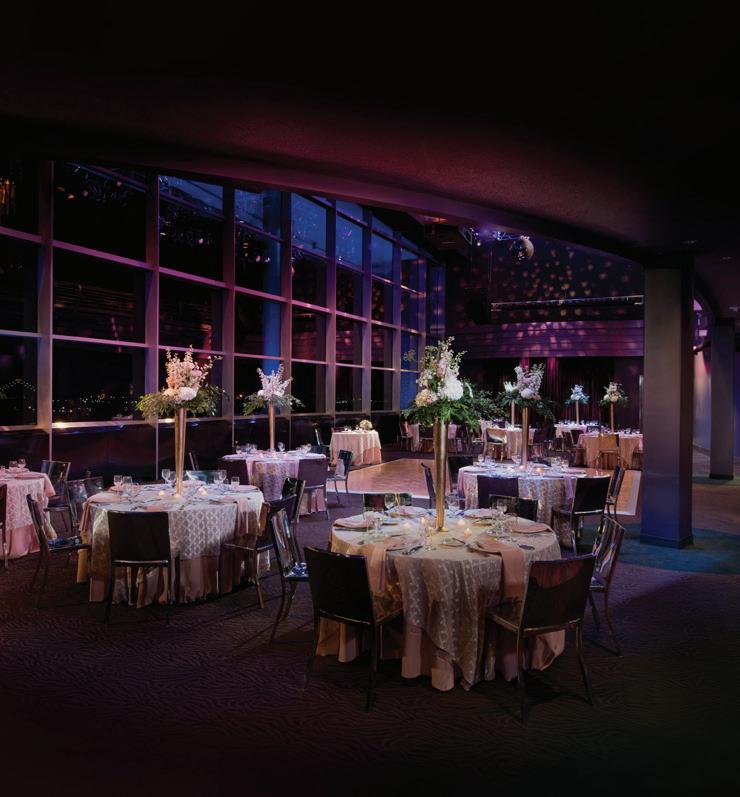
With ballrooms, boardrooms, a large theatre, and spaces with soaring skyline views, it’s no surprise that MotorCity Casino Hotel is Detroit’s leading meeting destination. Our dedicated meeting coordinators will help you find the ideal space to make your event unforgettable. This is where meetings go to the next level and become memories that will last far beyond your agenda.
Each space is fully equipped with state-of-the-art audiovisual equipment, including video and teleconferencing capabilities. From the simplest needs to the most extensive, our team will keep you connected and your audience engaged.
Customize your experience with help from our expert team and skilled culinary staff, offering service that will exceed your expectations. Then treat your guests to complimentary Wi-Fi, parking, and 24-hour business and fitness center access.
GET MEETING!
• Three unique venues: Sound Board, Amnesia and Iridescence
• No resort fee
• Free hotel valet parking
• A non-smoking venue
• 400 large hotel rooms and suites
• Award-winning culinary experiences
Once the closing speech has been delivered, it’s time to play and there’s no better place to let loose than MotorCity Casino. Play the latest slots and experience the excitement of a myriad of different games. Of course, the sports fans in your crew will flock to the twostory FanDuel Sportsbook.
Give us a call to start planning an unforgettable event in an unparalleled setting.
MotorCity Casino Hotel
2901 Grand River Ave., Detroit, MI 48201
Michelle Duffy, Director of Sales 313.237.7711
MotorCityCasino.com


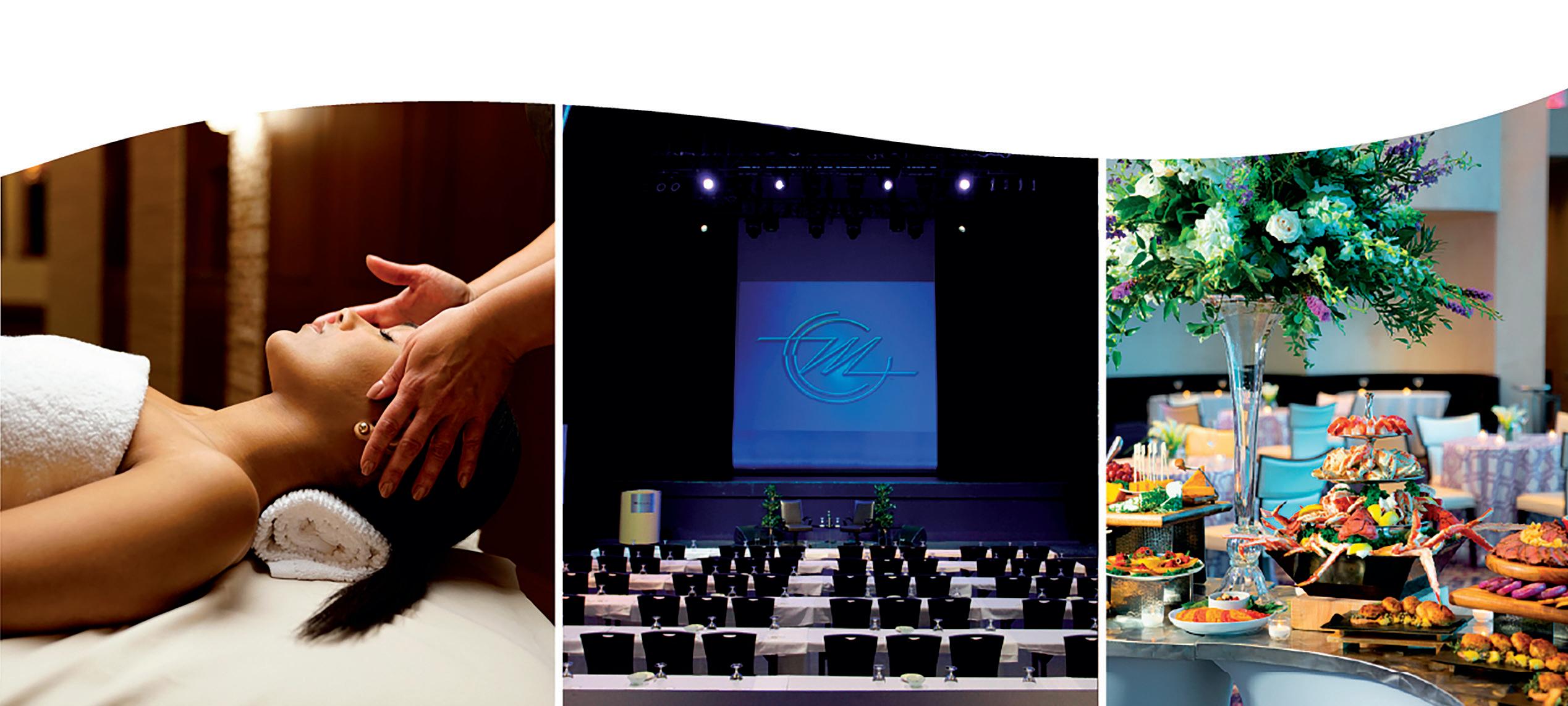

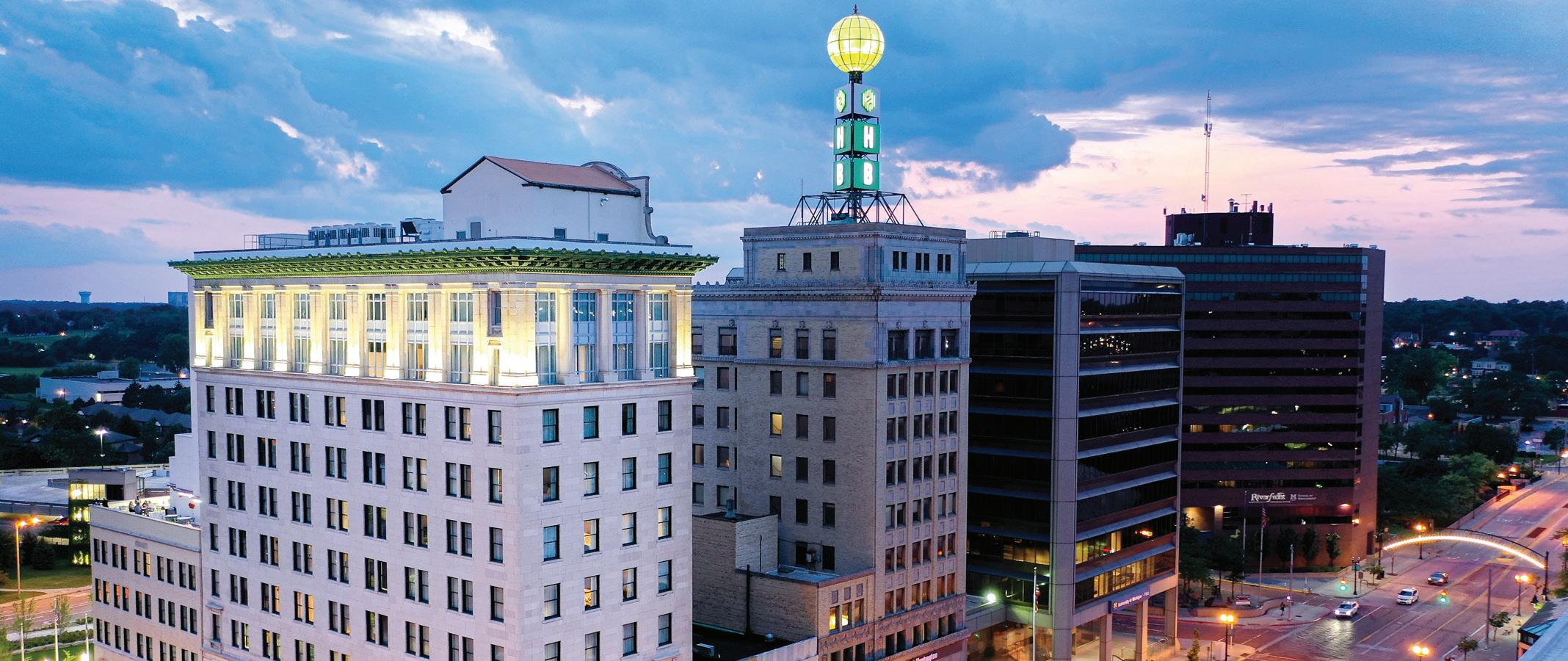
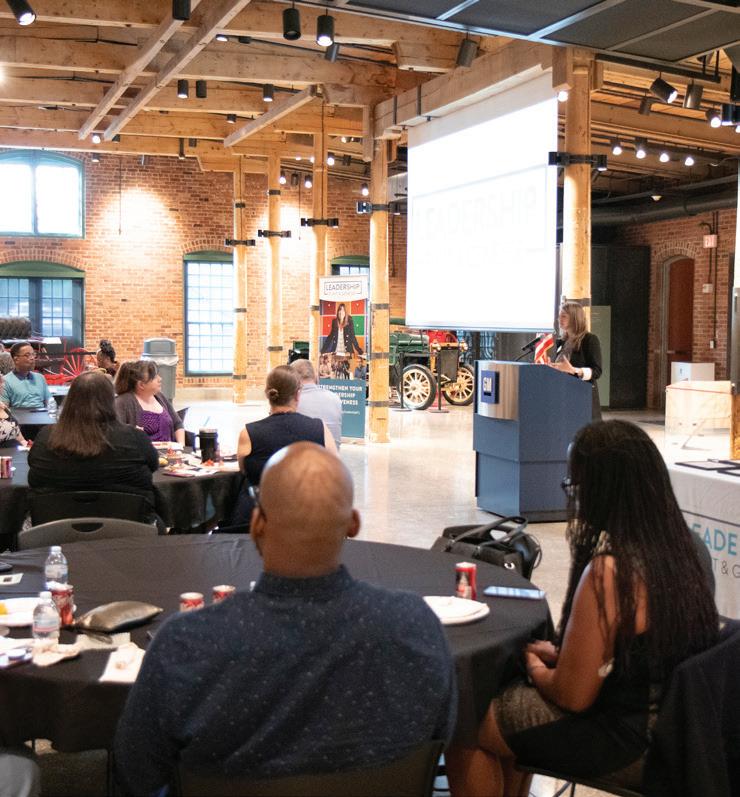
• 17 unique meeting venues
• 15 hotels with meeting space
• 2,600 area hotel rooms
• A rich food scene with many farm-to-table, trendy, traditional and fusion options
• Outdoor recreation, museums and history, shopping, arts and entertainment, golf and nightlife to enjoy
• Learn more at ExploreFlintAndGenessee. org/Meeting
Flint and Genesee, Michigan, launched a legacy with four wheels. The birthplace of General Motors, this Midwest county is a fantastic place to host meetings, conferences and events, because it offers more than just meeting space with excellent dining options, a fun craft beverage scene, and traditional and unique meeting venues.
Start your journey by choosing a top-notch venue. Smaller meetings can be held at the Laundry Room, a 70-person event space next door to one of the oldest restaurants in Fenton, or Sequoia Lounge Wine Bar and Martini Lounge, a private dining room located at Redwood Steakhouse & Brewery. For larger meetings, the Durant-Dort Factory One, where the well-known brand General Motors got its start, accommodates up to 300 people, or the Fenton Winery & Brewery/Dream Machine Distillery features a 300-person banquet facility.
Make it more than a meeting by adding an experience exclusive to Genesee County. Explore the Sloan Museum of Discovery and uncover the region’s history. Host a cocktail-making class at Drinks of Essence Bartending School. Book a mural tour through What’s Up Downtown and see over 100 murals.
There is so much to do and see in Flint and Genesee. Whether it’s a group outing or convention, let Flint and Genesee surprise and entertain. Learn more at ExploreFlintAndGenesee.org/Meeting.
519 S. Saginaw St., Ste. 200, Flint, MI 48502 810.600.1404
info@flintandgenesee.org ExploreFlintAndGenesee.org
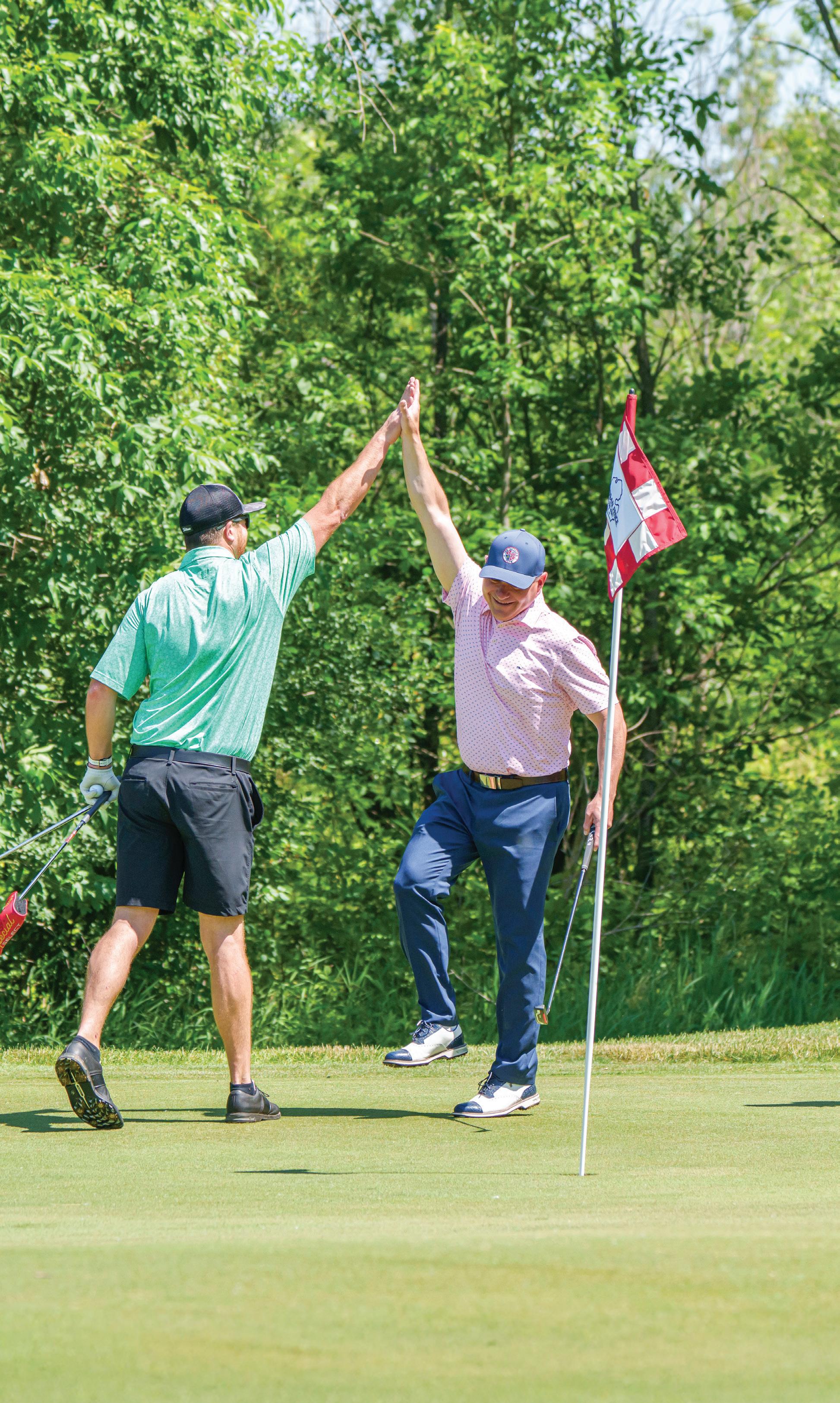



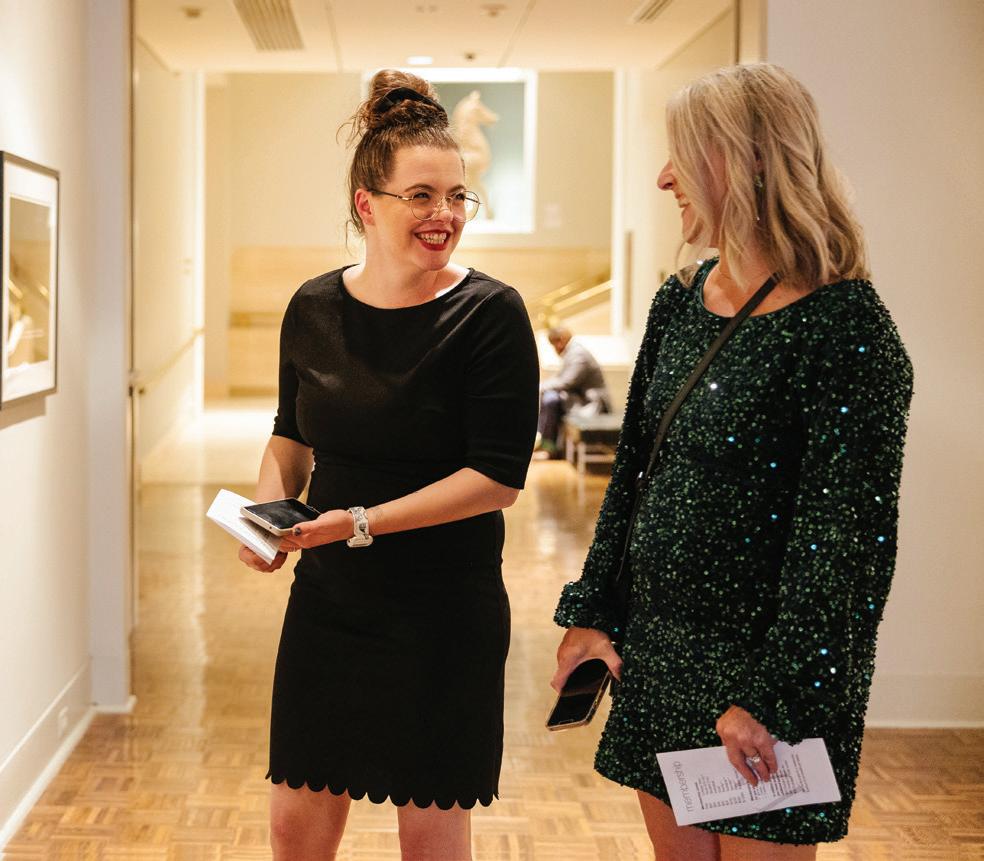

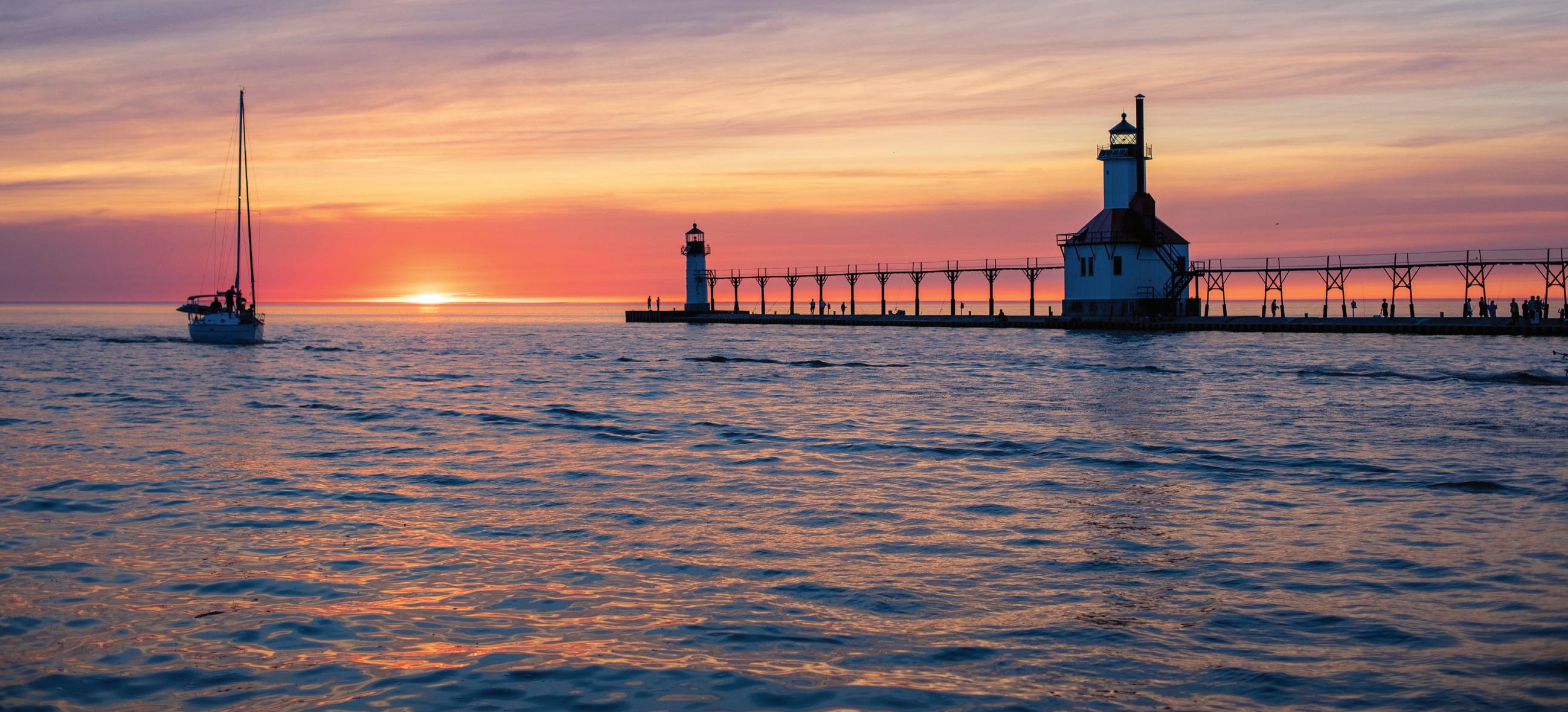
Ignite their enthusiasm. Whether it’s a dynamic executive team, a cohort of a mbitious trainees or a group seeking fresh inspiration, Southwest Michigan recharges and reconnects. Meet where daylight streams in and meals are infused with locally harvested flavors.
Then paddle Lake Michigan-bound rivers, shop in resort towns or tour the Napa Valley of the Midwest. Feel energized and refreshed in Southwest Michigan.

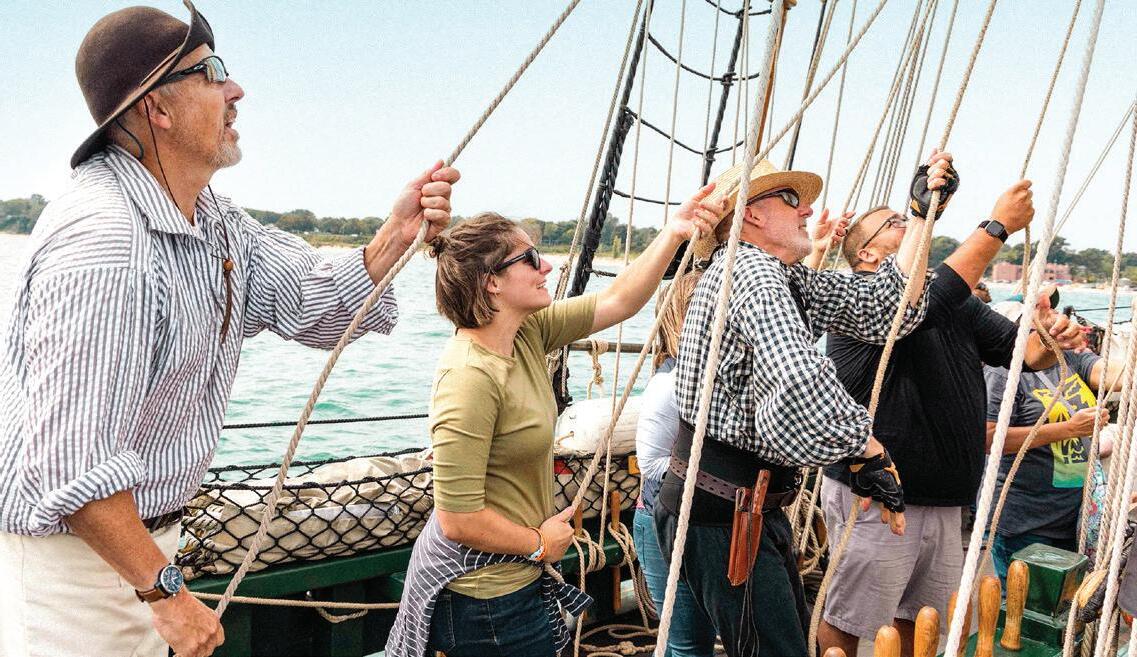
When planning a business meeting, training, small convention or family reunion, exceed your group’s expectations in Southwest Michigan.
Choose from rooms with water views, private breakout spaces, historic theaters, banquet facilities and beach pavilions. Pair them with unique team-building experiences from sailing and kayaking, to wine tasting and playing championship golf courses.
As a vacation destination, we specialize in hospitality. Give us the details of your event and we will connect you with top-rated hotels, restaurants and attractions to ensure a seamless experience that will enhance your plans and fit your budget.
For more information, visit:
swmichigan.org/meetings
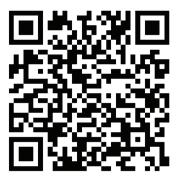
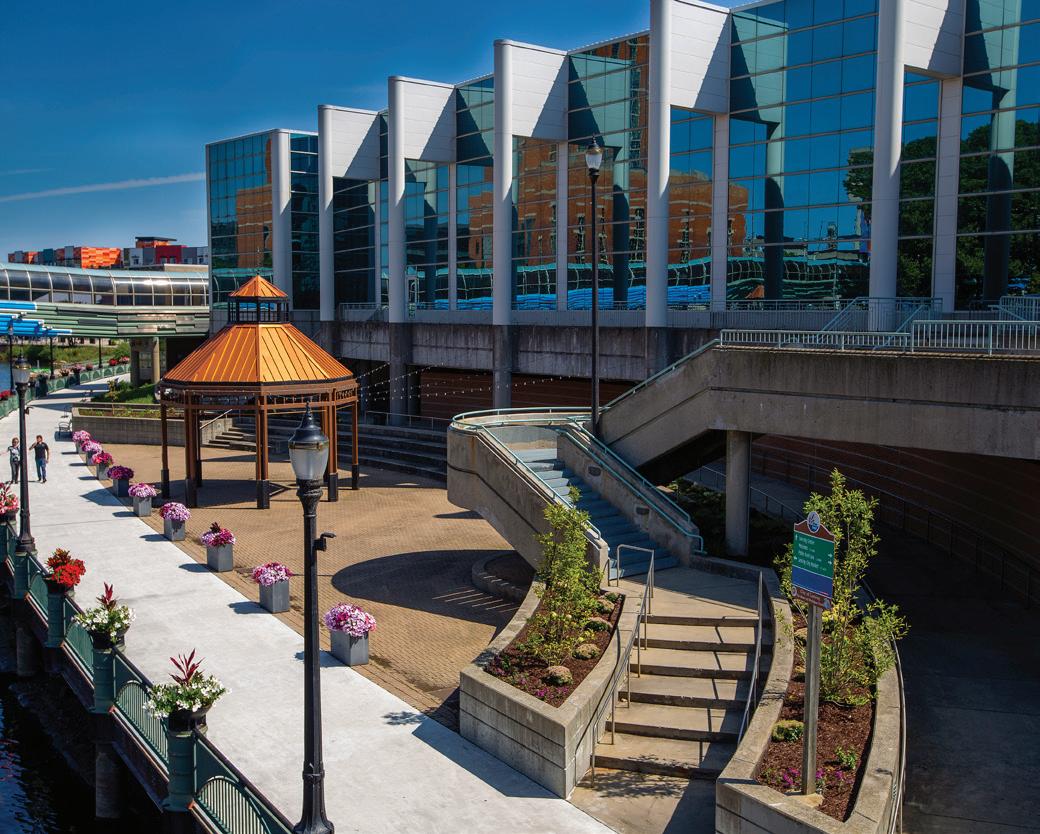
• More than 5,100 hotel rooms and venues
• Over 20 properties that are located within a five-mile radius of the airport
• A walkable downtown
We know it’s challenging being a professional meeting planner. Expectations are high. You need to find the best choice of venues, dates, engaging and relevant speakers, a convenient location and all the other items on your long and comprehensive checklist — all while keeping things within your budget.
Choose Lansing can help to ensure that you put on a successful and memorable meeting or conference.
Last and certainly not the least, our expert team of Certified Meeting Professionals will support you with complimentary services and ensure you have everything you need for a memorable event.
The choice is easy. We’ll help you shine, make your job easier and help you host your best event yet. Choose Greater Lansing and plan on something greater.
Choose Lansing
500 E. Michigan Ave., Ste. 180 Lansing, MI 48912
800.648.6630 Lansing.org

Need to coordinate your organization’s next meeting or conference? Work with the experts at Choose Lansing. They will help you find the perfect venue, book hotel room blocks and increase attendance. Choose Lansing and plan on something Greater.

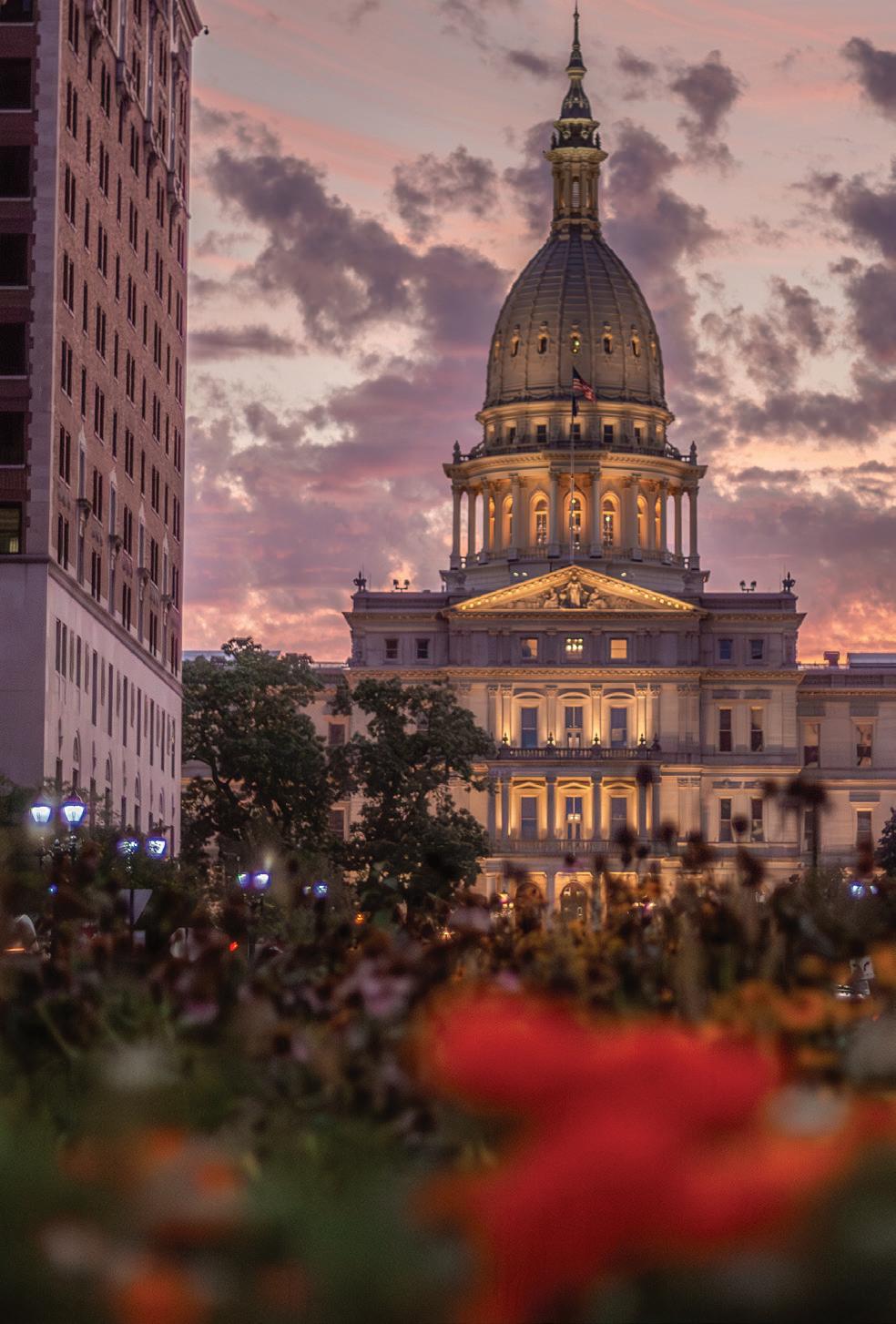

Scan this QR Code to unlock the keys to your meeting’s success!
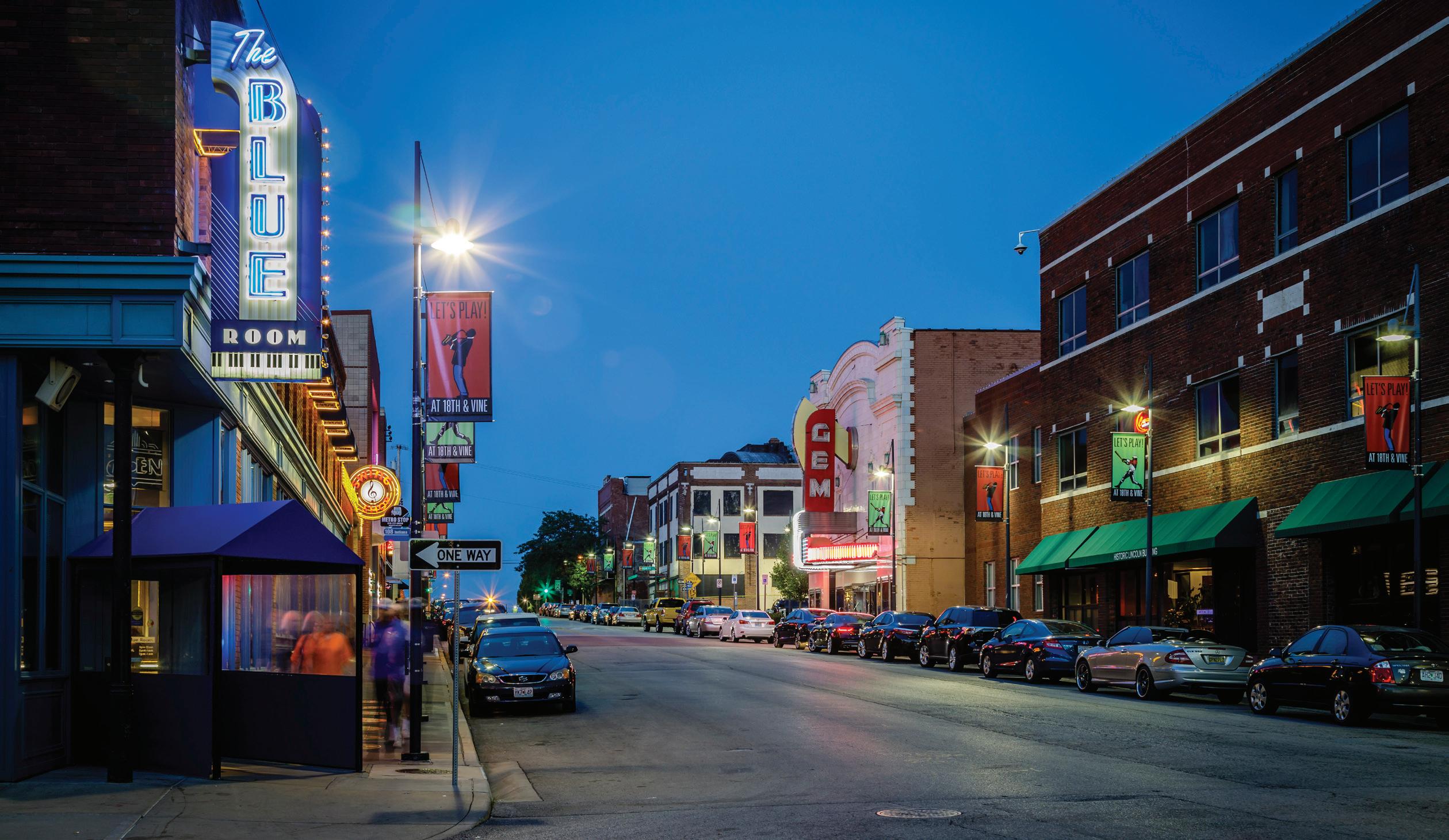

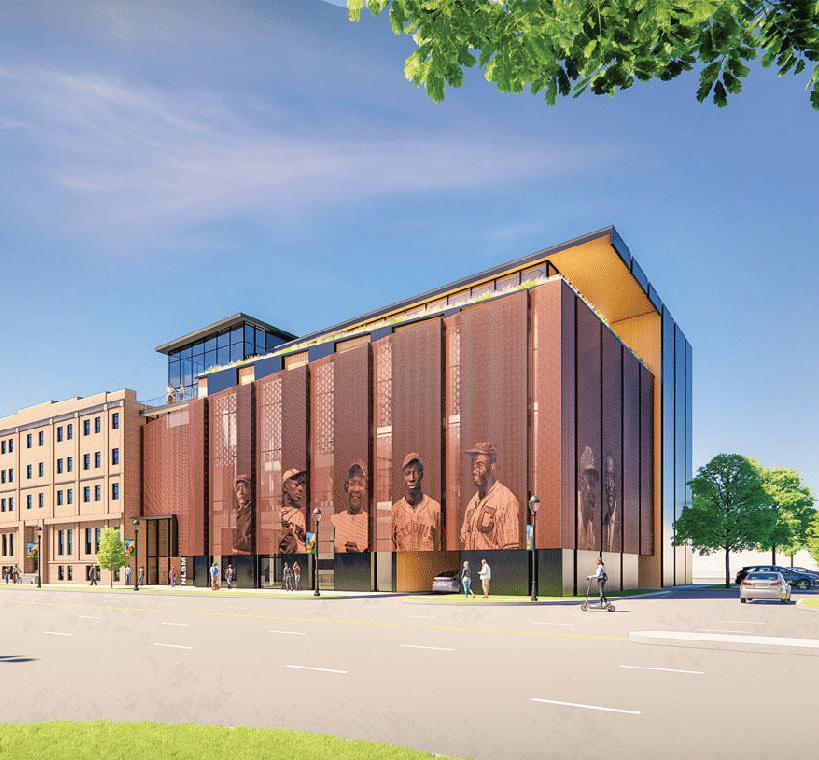
Where the Midwest meets the South, Missouri stands as a natural crossroads, a place where convenience, creativity and charm come together to make meetings and events memorable. Whether you’re drawn to the bright lights of St. Louis and Kansas City or the relaxed beauty of the Ozarks, Missouri has the perfect setting for every gathering.
St. Louis shines with big-city sophistication and small-town hospitality. The America’s Center Convention Complex offers four facilities in one dynamic location, so it’s ideal for events of all sizes. Recent renovations have expanded the space and introduced fresh touches, like a culinary garden that supplies ingredients for on-site catering. Plus, with its Global Biorisk Advisory Council (GBAC) STAR Facility Accreditation, America’s Center ensures a clean, safe and welcoming environment for every guest.
Over in Kansas City, the energy is infectious. The Kansas City Convention Center exhibition hall spans an impressive eight football fields and the property offers underground parking, making it a great choice no matter the season. With Kansas City International Airport just a short drive away, travel is easy. And when the workday ends, attendees can dive into downtown’s thriving food scene, vibrant nightlife and endless entertainment options.
For those who love a collegiate vibe, the University of Missouri in Columbia and Missouri State University in Springfield both offer multiple flexible meeting spaces alongside campus charm.
Picture gatherings surrounded by historic architecture, modern amenities and plenty of on-site dining options. Attendees can unwind with recreational activities like swimming, climbing or exploring local dining and shopping just steps away.
Missouri also makes getting there easy, with international airports in Kansas City and St. Louis, plus the Springfield–Branson National Airport serving the southern part of the state. Down the road in Branson, the Branson Convention Center
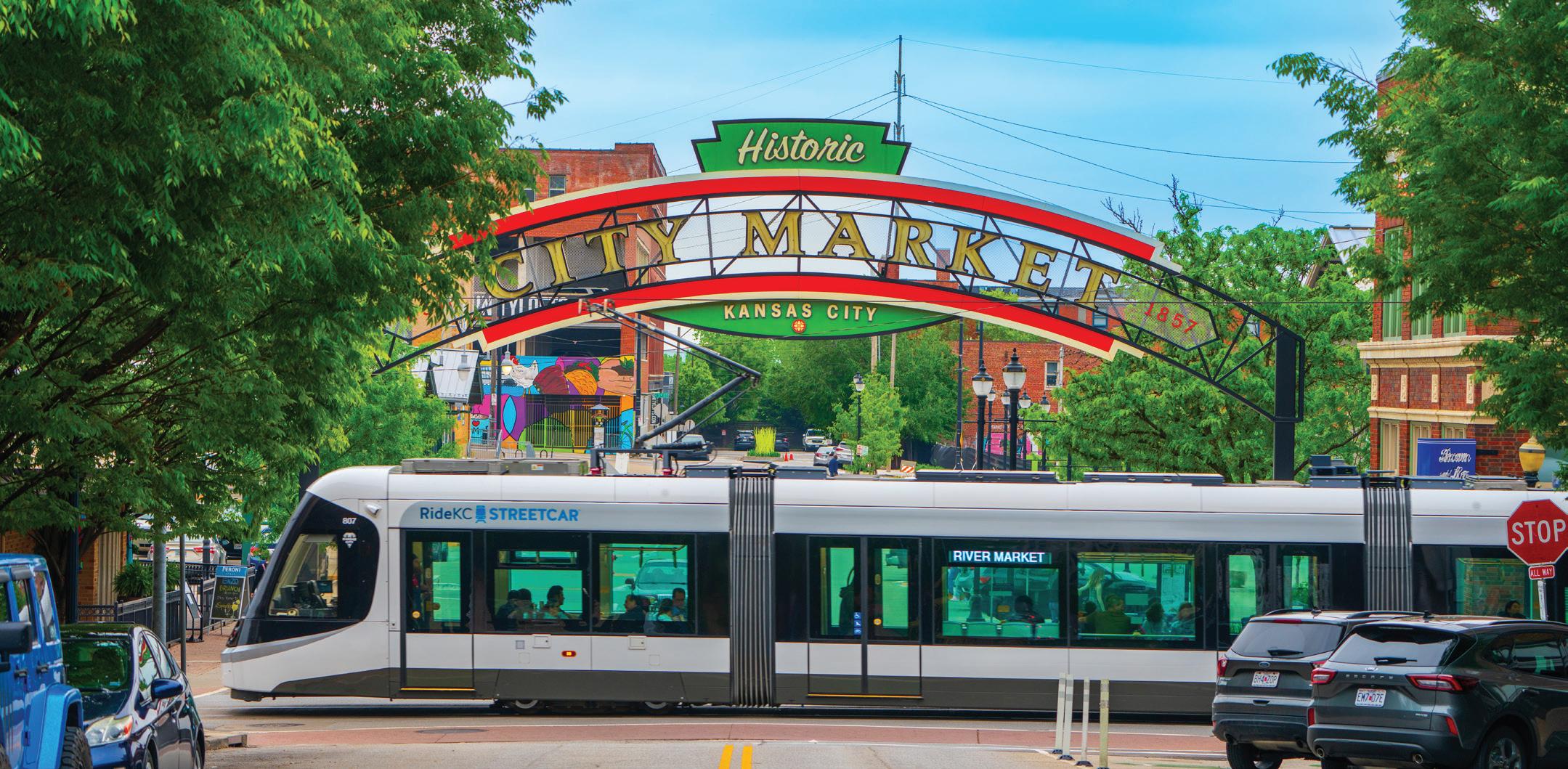
combines 48,000 square feet of adaptable space with gorgeous Ozark views and walkable access to hotels, restaurants and shops. It's the perfect mix of convenience and inspiration.
And for those looking for something off the beaten path, Missouri delivers plenty of hidden gems, too. In Joplin, The Emerald Event Centers offer three unique venues — The Silver Spoon Barn, The Sterling Event Center and The Platinum Pavilion — ideal for events big or small.
Or your group can head to New Haven, where Cedar Creek Hotel & Event Center invites groups to gather, stay and play. With an event barn, on-site catering, cozy guest rooms and planning support for group activities, it’s a true retreat experience.
From skyline to shoreline, Missouri offers a remarkable variety of meeting destinations — each one infused with Midwestern warmth and accessibility. This state is ready to show you why it’s the perfect place to meet, connect and create something unforgettable.
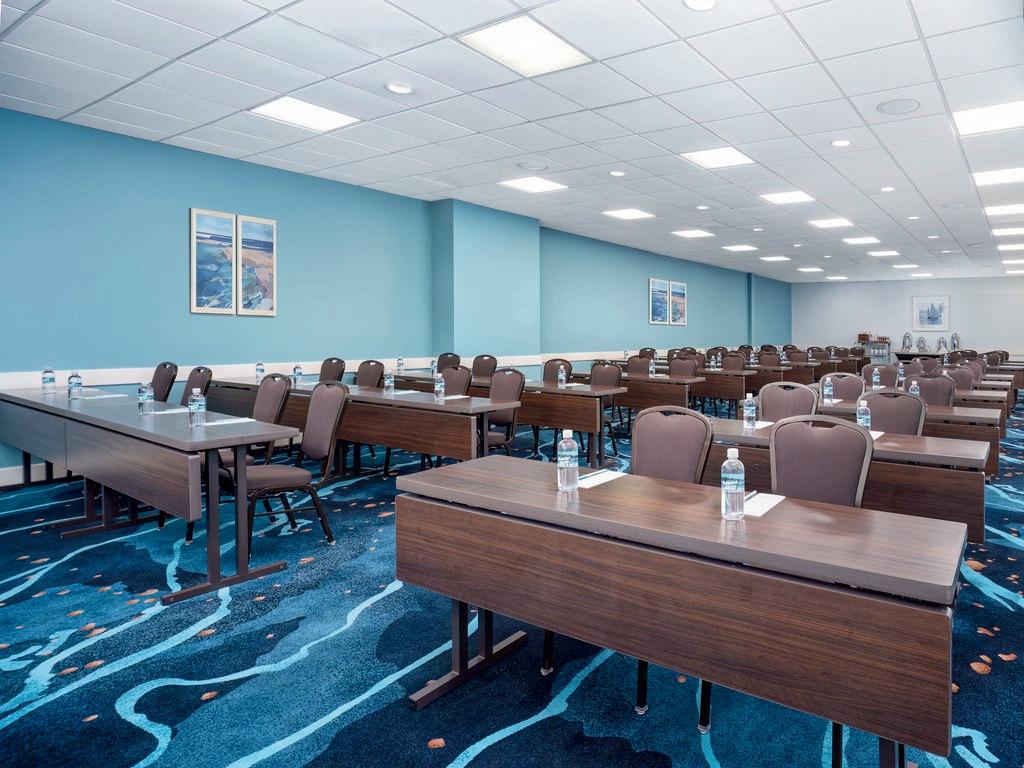
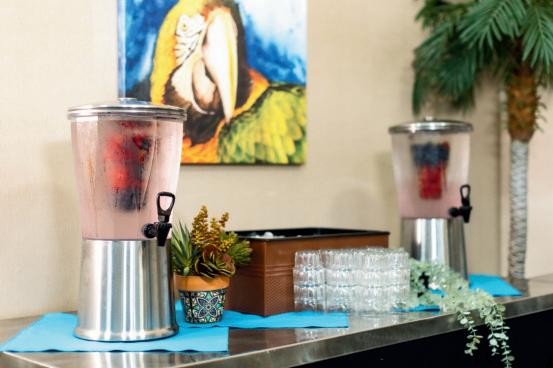
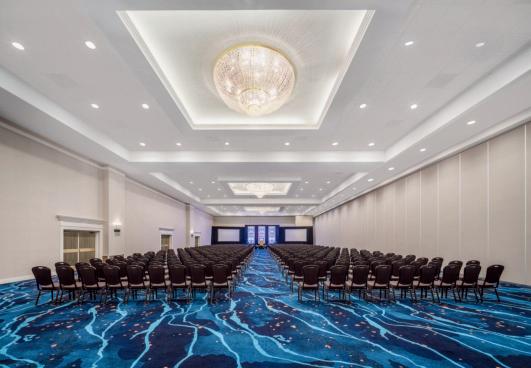


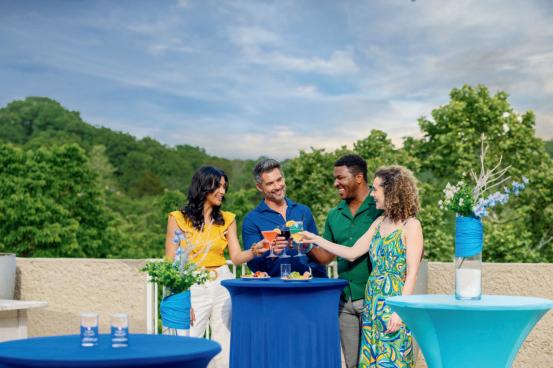
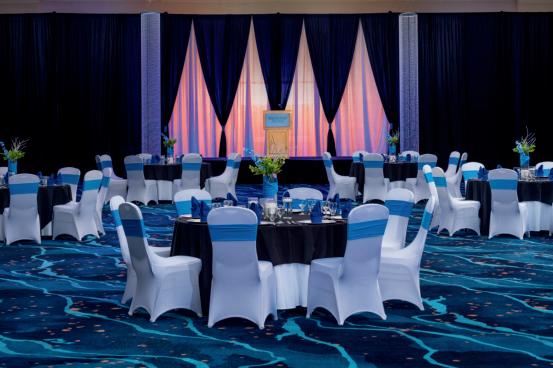
In the heart of the Midwest, just north of Kansas City, lies a city with a history of innovation and a future brimming with opportunity—St. Joseph, Missouri. Once the launchpad of the Pony Express and a vital outfitting post for pioneers heading west, St. Jo has always been a place where big journeys begin. That legendary spirit makes this small town a big hit for meeting planners and their attendees.
“St. Joseph is full of nontraditional possibilities,” says Jolene Dempster, Convention & Meeting Sales Manager at the St. Joseph Visitors Bureau. “We work closely with planners to find unique venues that align with their vision—whether that’s a historic mansion, a vibrant theater, or an innovative conference campus.”
St. Joseph offers meeting spaces that are anything but ordinary. From heritage sites that tell the city’s story to modern venues designed with today’s planners in mind, every setting brings its own character to the table— and to the delight of meeting attendees.
Bring history to life by hosting a reception in the very stable where the Pony Express once operated. Groups can tour the Hall of Riders, participate in a spelling bee in a replica 1860s schoolhouse, or enjoy a themed reception complete with a sarsaparilla.
A century-old movie palace with gold trim, red velvet curtains, and sky-filled murals, the Missouri Theater provides an unforgettable stage for conferences, performances, or galas and is the pride and joy of St. Jo. While it continues to host entertainment throughout the year, professional planners can also reserve this elegant setting.
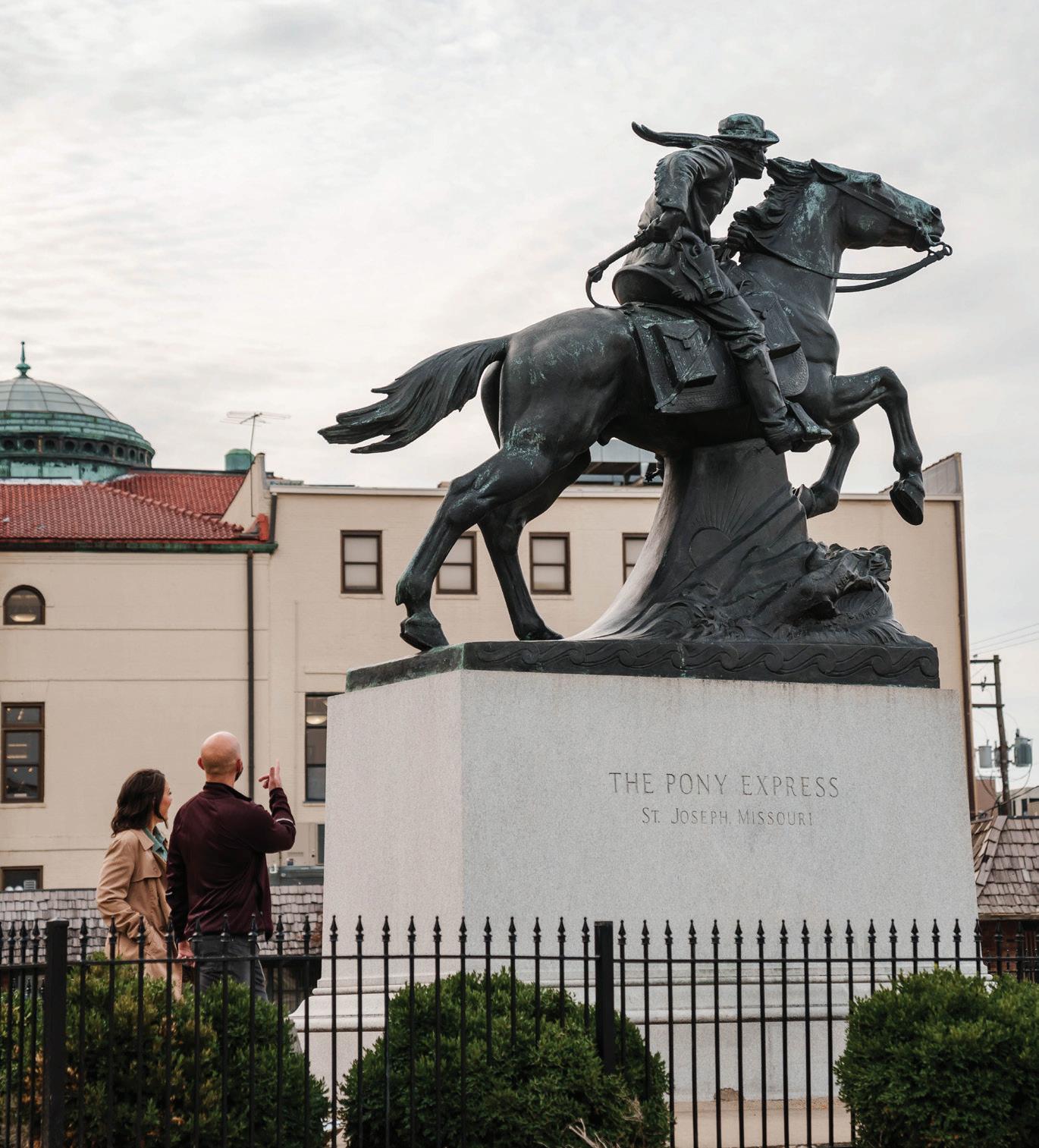
This elegant red-brick mansion-turned-museum offers inspired backdrops for events, from intimate gatherings in its speakeasy to grand dinners in its café dining room. Guests can dine among works by Mary Cassatt and Thomas Hart Benton, or explore the mansion’s storied architecture on guided tours.
Shake up your itinerary with a private tasting at Parkway Distillery, complete with cozy lounges and outdoor patios, or book a dinner at one of St. Jo’s iconic steakhouses. From the Fredrick Inn’s classic Midwestern fare to Cajun-inspired cuisine at Boudreaux’s, local dining elevates the experience.
Housed in a stylish renovated warehouse, this venue features an auditorium for 164, a 2,200-square-foot meeting room, and multiple breakout spaces—perfect for contemporary meetings with flexibility.
With 129 guest rooms and 9,282 square feet of event space, Stoney Creek blends convenience with charm. Pony Expressthemed décor, fireside lounges, and breezy patios create a welcoming setting for groups.
This 700-acre campus offers versatility for large events, featuring meeting rooms that accommodate up to 500 guests and unique attractions, including the Walter Cronkite Memorial (a St. Jo. native) and the home of the Kansas City Chiefs Training Camp.
“What surprises most meeting planners is just how much variety we have in one place. You can hold a morning session in a historic theater and a networking dinner in a warehouse, all within minutes of each other,” says Dempster. “These venues have character. Every space has a sense of place, which makes meetings feel more special and less routine.”
Located just 55 miles north of downtown Kansas City and 38 miles from Kansas City International Airport, St. Joseph offers easy accessibility without the high price tag of a big city. Attendees can experience the charm of a smaller city while enjoying today’s amenities, robust cultural offerings, and unmatched hospitality.
“Being so close to Kansas City makes travel simple, but once you’re here, you feel like you’ve truly escaped the big-city rush,” adds Dempster.
You can strike the perfect balance between convenience, creativity, and character when you host your next meeting or event in St. Joseph, Missouri.
St. Joseph Visitors Bureau
Jolene Dempster, Convention/Meeting Sales Manager
816-233-6688 | 800-785-0360
jdempster@stjomo.com stjomo.com
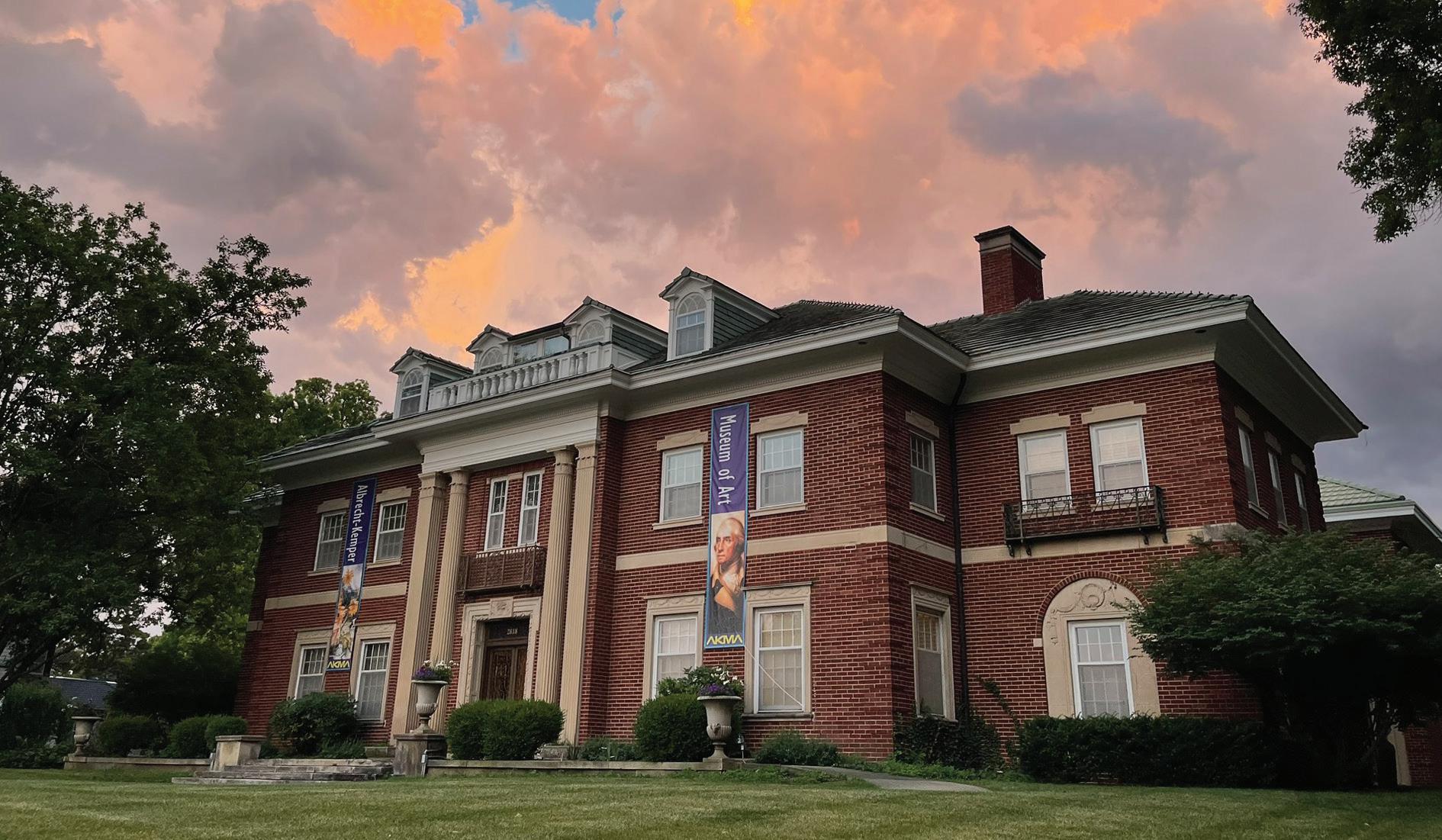
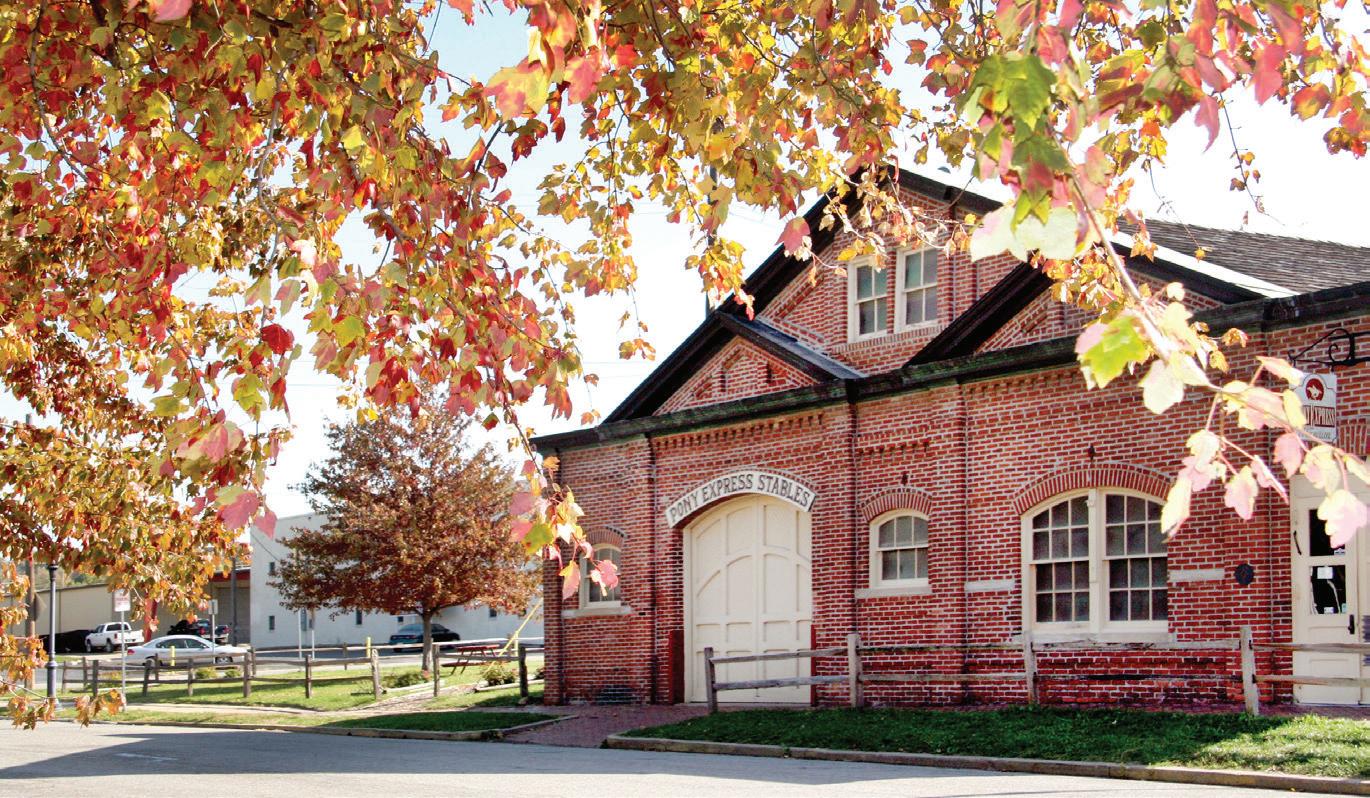
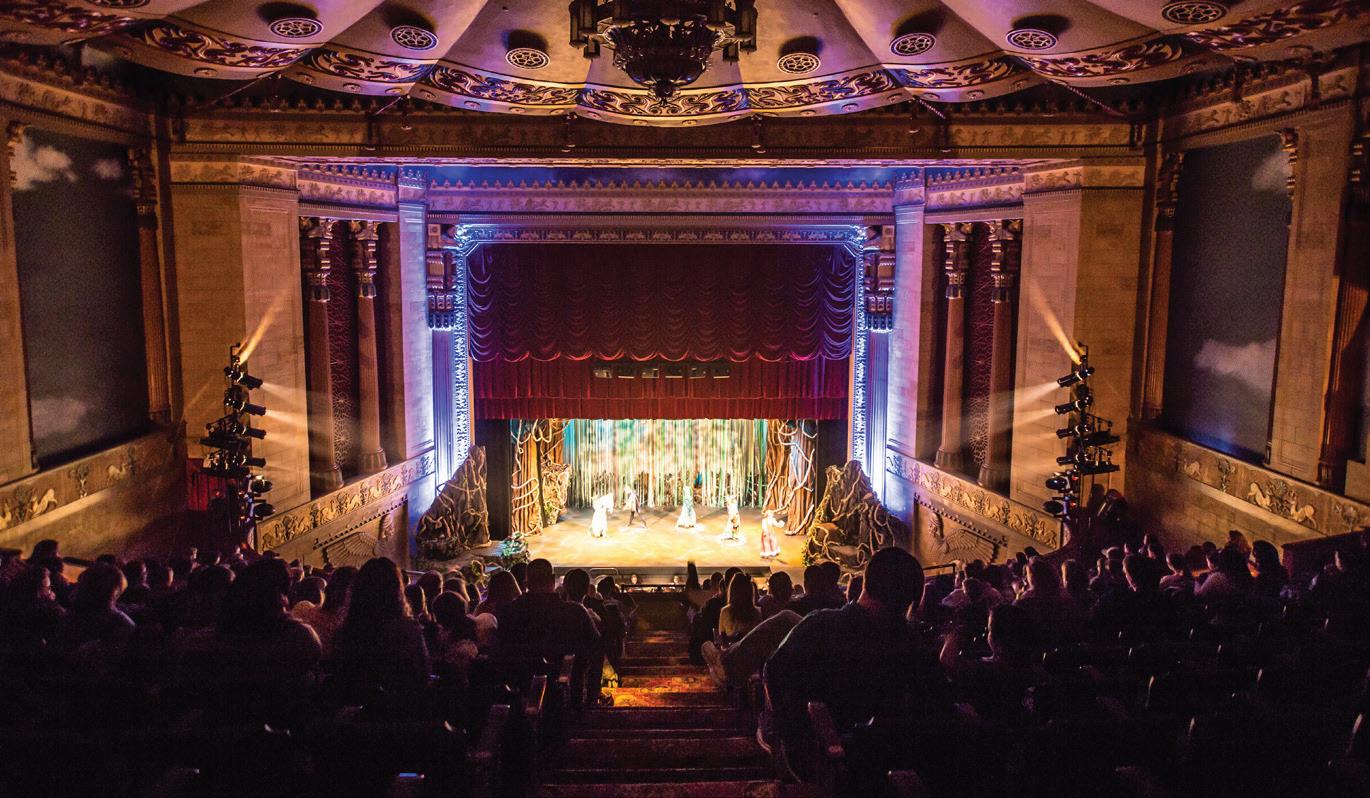
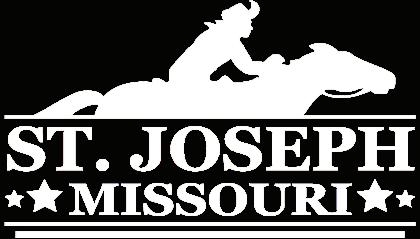


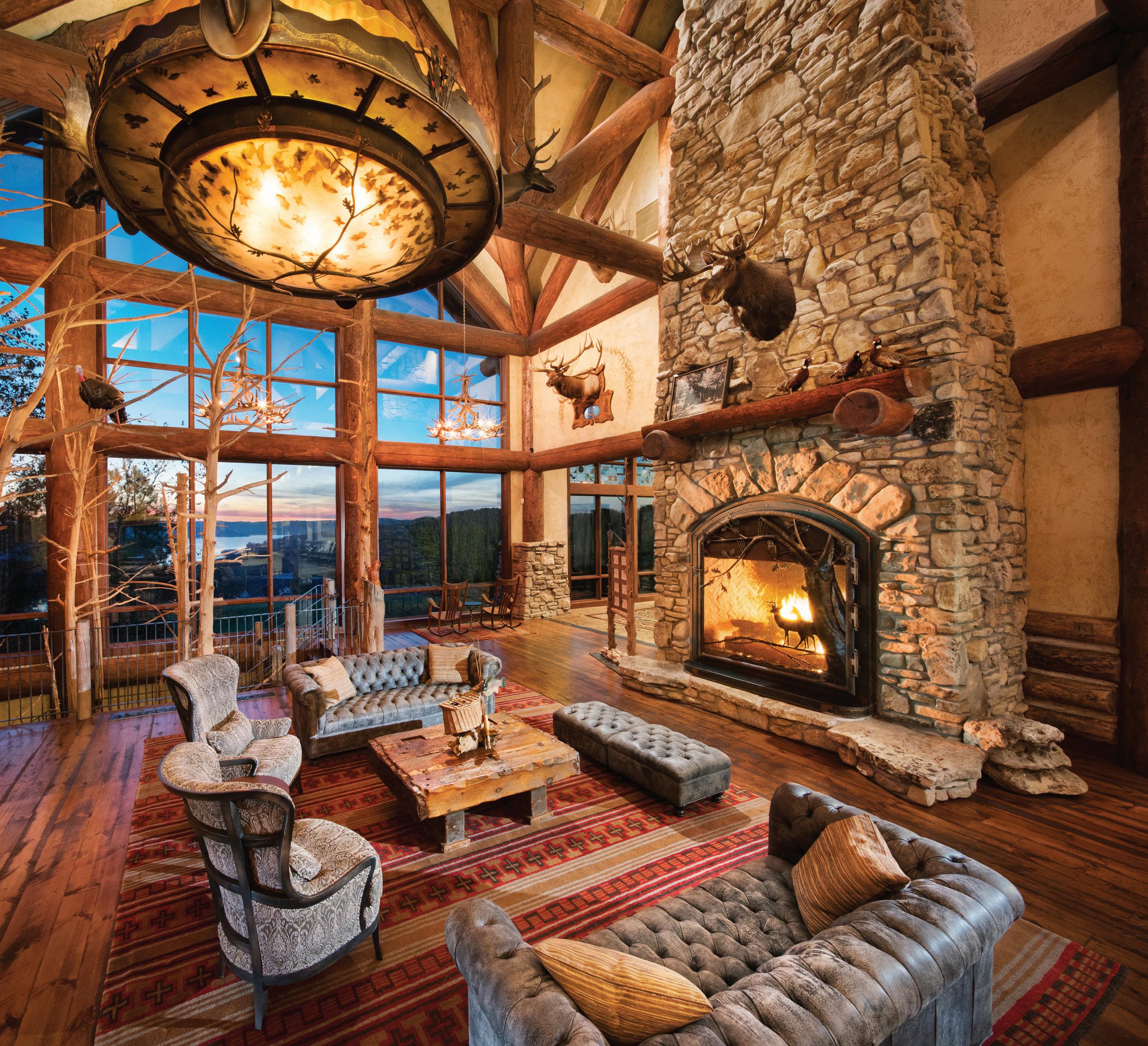

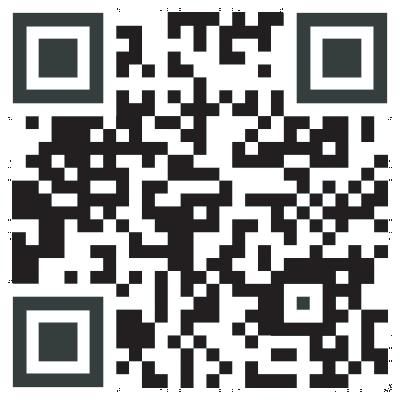

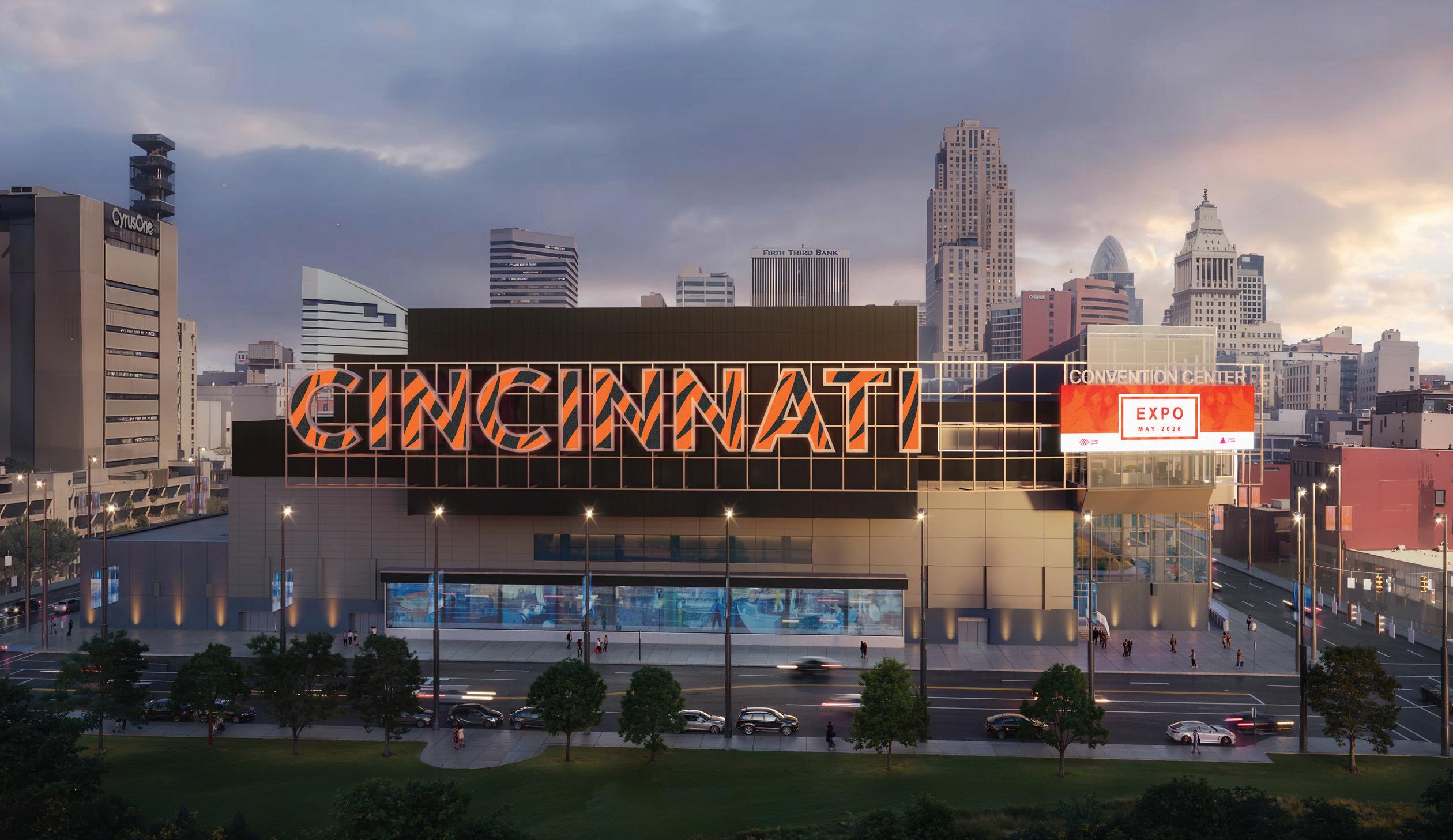

Ohio is a prime Midwest location for meetings and events as there are major cities located throughout the state. Northeastern Ohio offers Cleveland and Youngstown, which is currently being revitalized; central Ohio has Columbus, making a convenient midpoint meeting place; northwestern Ohio boasts Toledo, a great connection to the fellow Midwest state of Michigan; and southeastern Ohio has Cincinnati and Dayton, offering even more options for hosting.
With a multitude of airports, including international service through Cleveland and Dayton, attendees will be able to find transportation to their meeting and event anywhere in the state. No matter where you look in Ohio, options abound.
Cincinnati has an exciting up-and-coming renovation of the Duke Energy Convention Center. Not only will the center be getting a makeover, but the name will be changing as well. An anticipated completion of January 2026 means that this location will soon be available for your next meeting or event. A new key feature of the renovation is the exhibit hall opening onto Elm Street Plaza, allowing for attendees to seamlessly enter and exit the building, all while enjoying the charm the city has to offer.
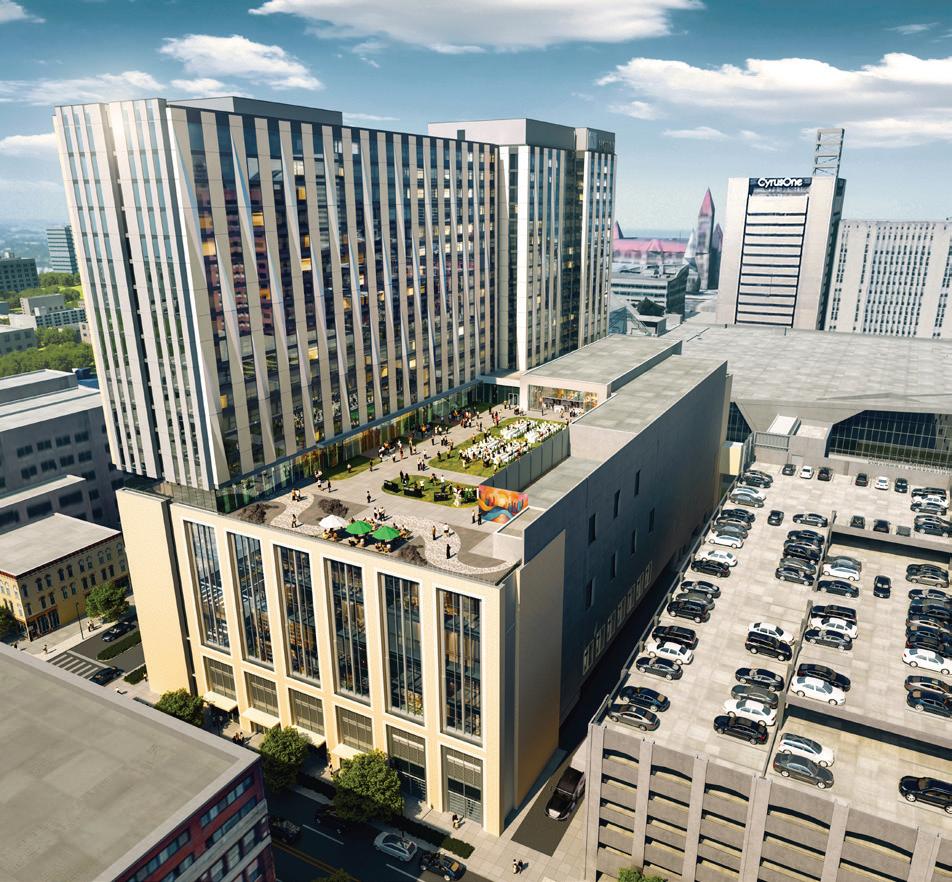

If you are looking for something out of the hustle and bustle, look no further than Youngstown in Mahoning County. Hotels with space for smaller conventions are located in the city, as well as in the surrounding suburbs of Austintown, Boardman and Canfield.
Youngstown is conveniently located between Cleveland and Pittsburgh, allowing for various travel options. Home of Youngstown State University, the city boasts options for groups on campus, including the DeBartolo Stadium Club, museum spaces, smaller meeting rooms and the Ward Beecher Planetarium, where you can also take in a show. For a unique experience, solo visitors or groups can visit Mill Creek Park, established in the late 1800s, complete with a rose garden and 45 miles of trails.
Ohio is a treasure for meetings and events, with not only its large cities, but the revitalization of its old steel towns, and its many colleges and universities as well. When looking for your next gathering destination, be sure to explore all Ohio has to offer.
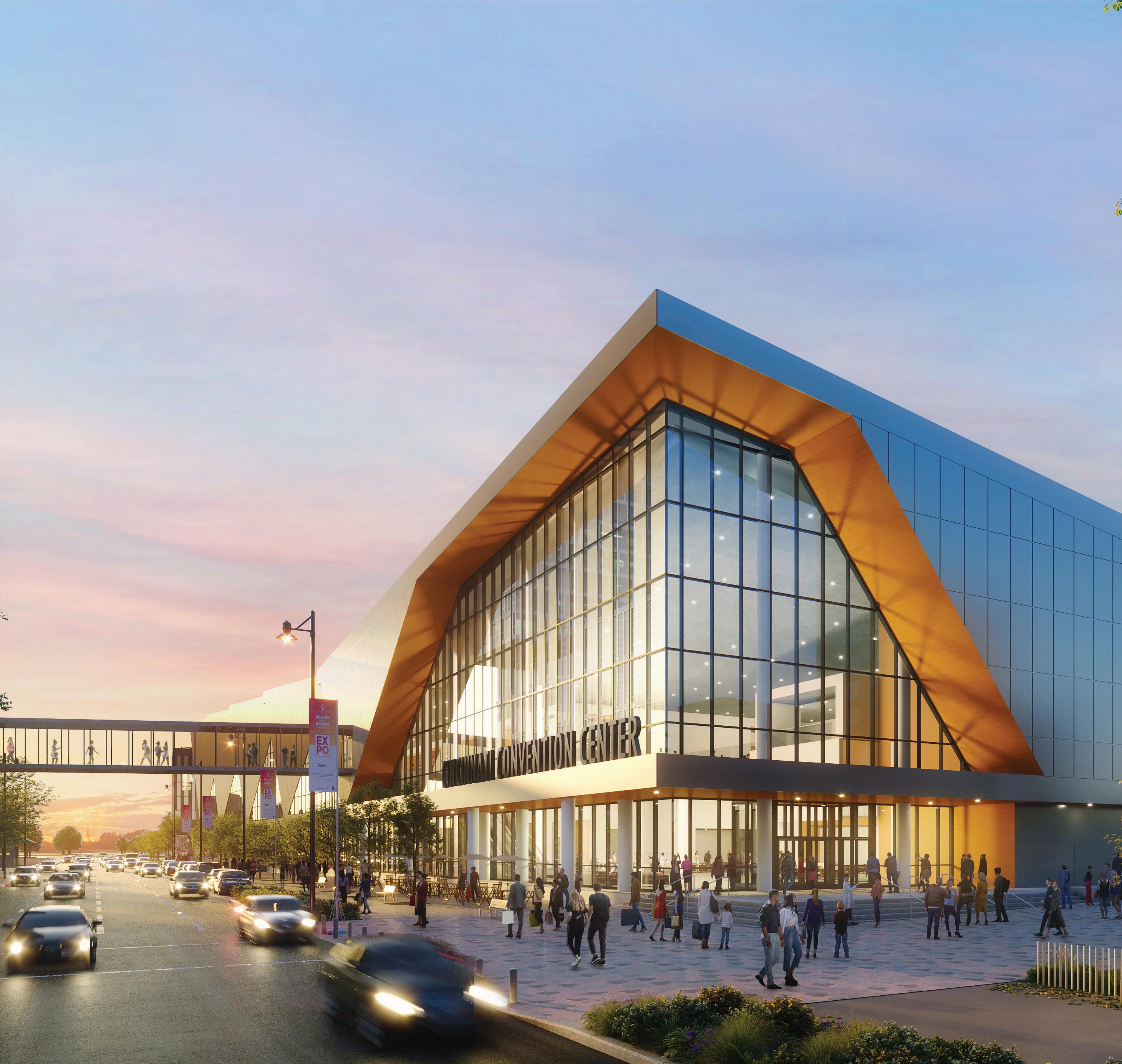
Change is in the air—and on the ground—in Cincinnati. The $800M reinvention of the Downtown Convention District will include a $264M Convention Center transformation (coming January 2026!), plus a customizable, two-acre activation space at Elm Street Plaza, and a new Marriott HQ Hotel. Tech-forward. Eco-smart. Surrounded by 3,200 hotel rooms, tasty eats, and vibrant nightlife, our walkable, accessible downtown will elevate your attendees’ experience. Can’t wait to get here? Located just north of downtown, Sharonville Convention Center is revamped, relaunched, and ready to host your event.
LET’S MAKE YOUR EVENT FUTURE-FAMOUS. NOW ACCEPTING RFPS.

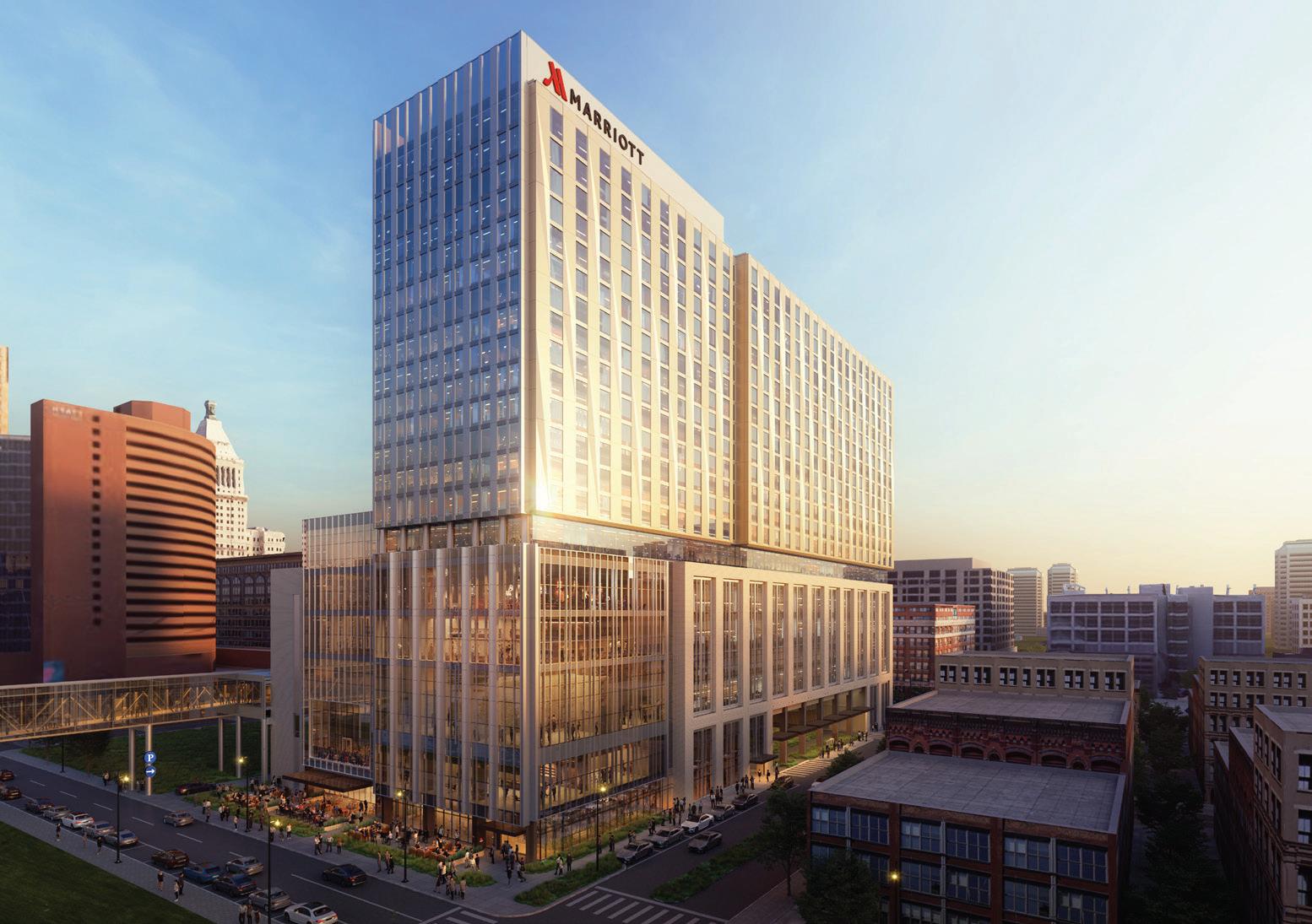
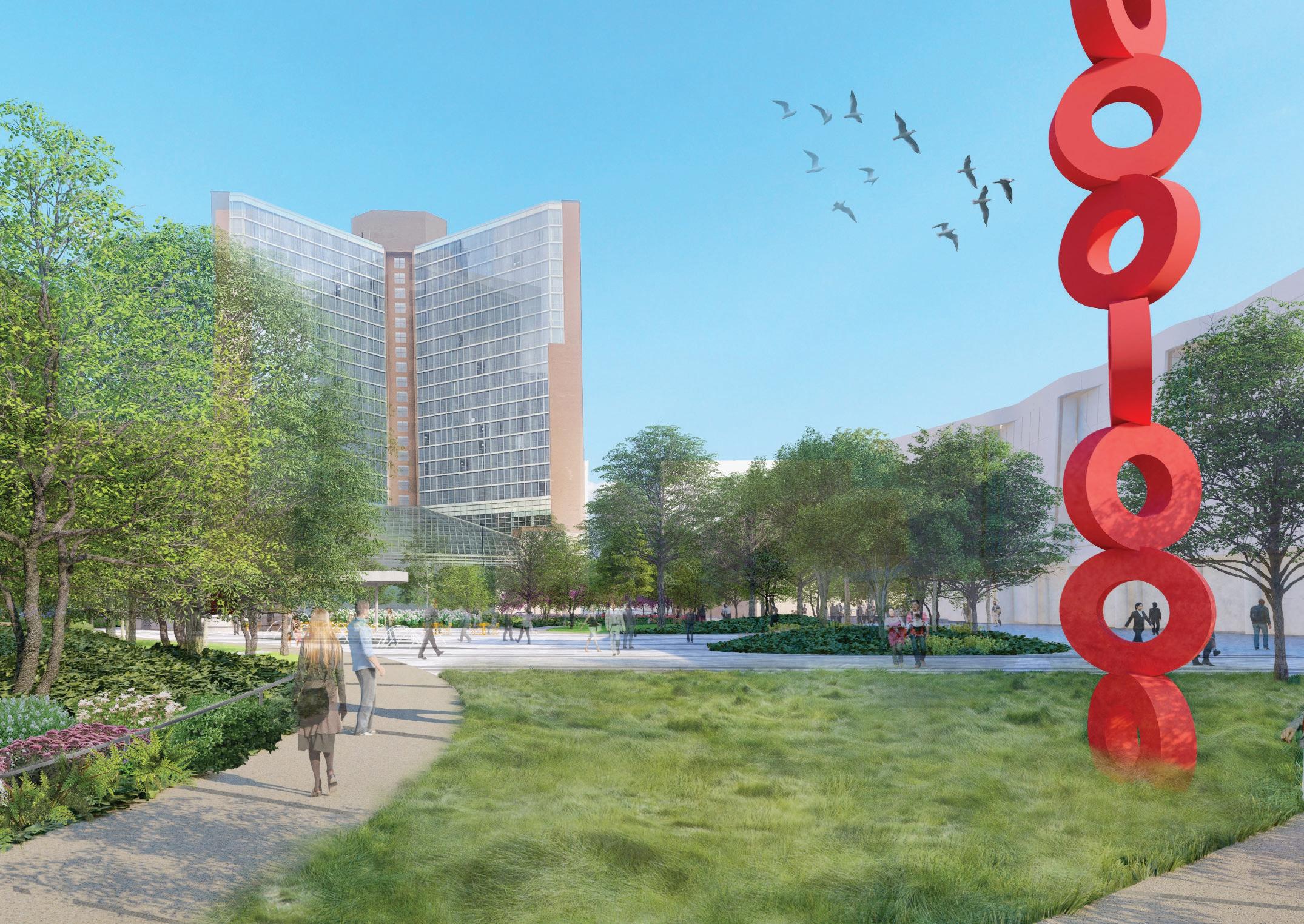
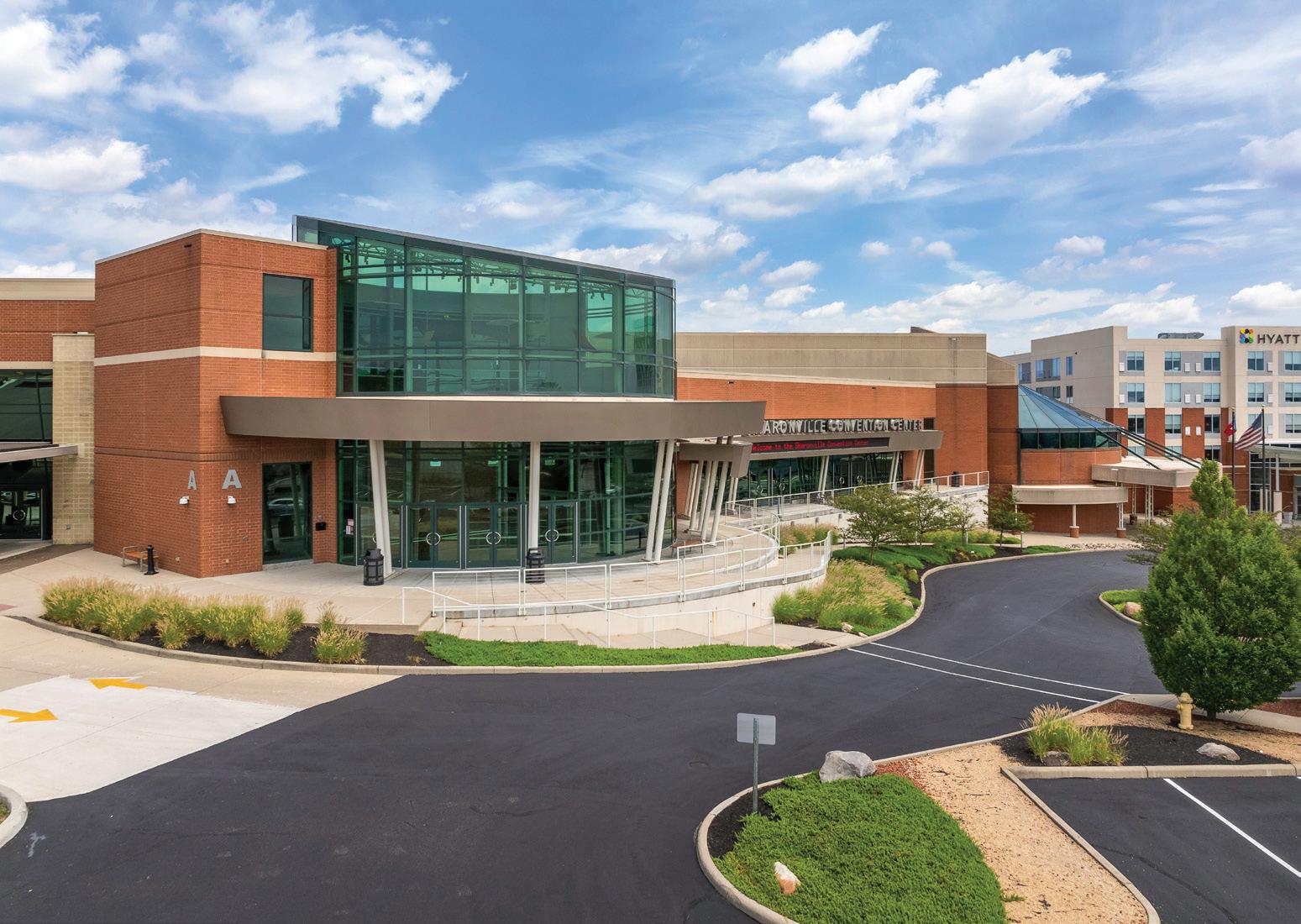
Located halfway between Toledo and Cleveland, Shores & Islands Ohio is a year-round destination featuring more than 8,000+ rooms, over 615,000 sq. ft. of convention and meeting space, plus acres of outdoor event venues. Enjoy island-hopping cruises, breweries and wineries, historical attractions, amusements, water parks, beaches, golf, sailing, and many other outdoor leisure options. Ask about our Conference Support Grant - up to $5000! Find your Lake Erie Love at Meetings.SHORESandISLANDS.com. Contact Emma Melter at emma@shoresandislands.com or 419-624-6924 to plan your adventure today!
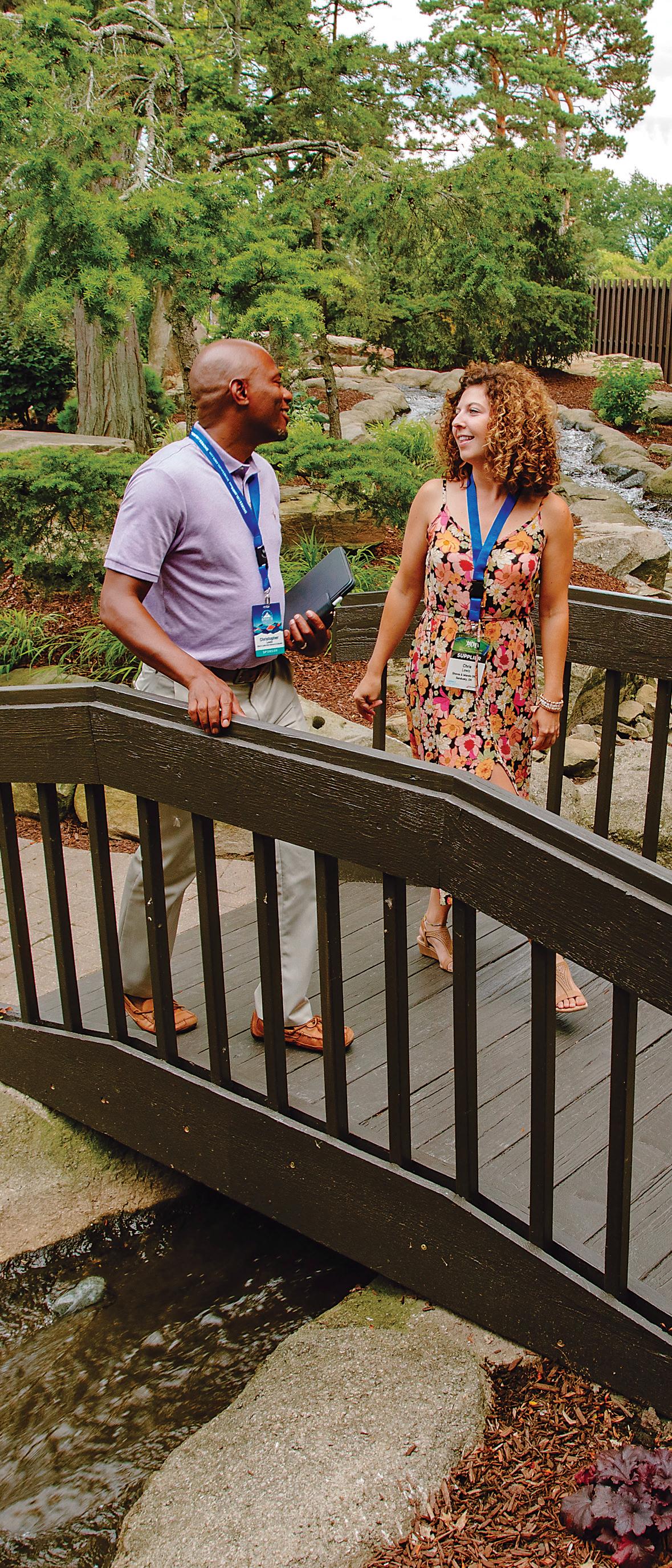
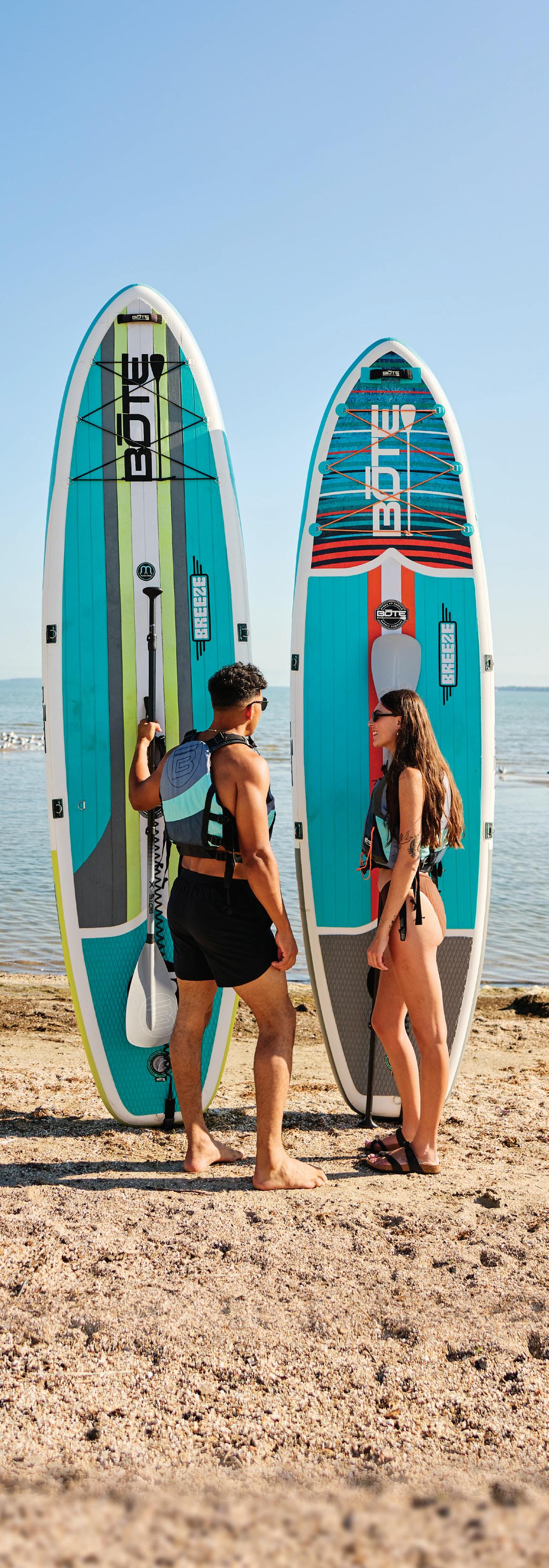
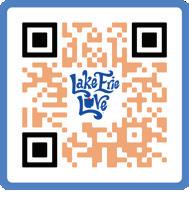
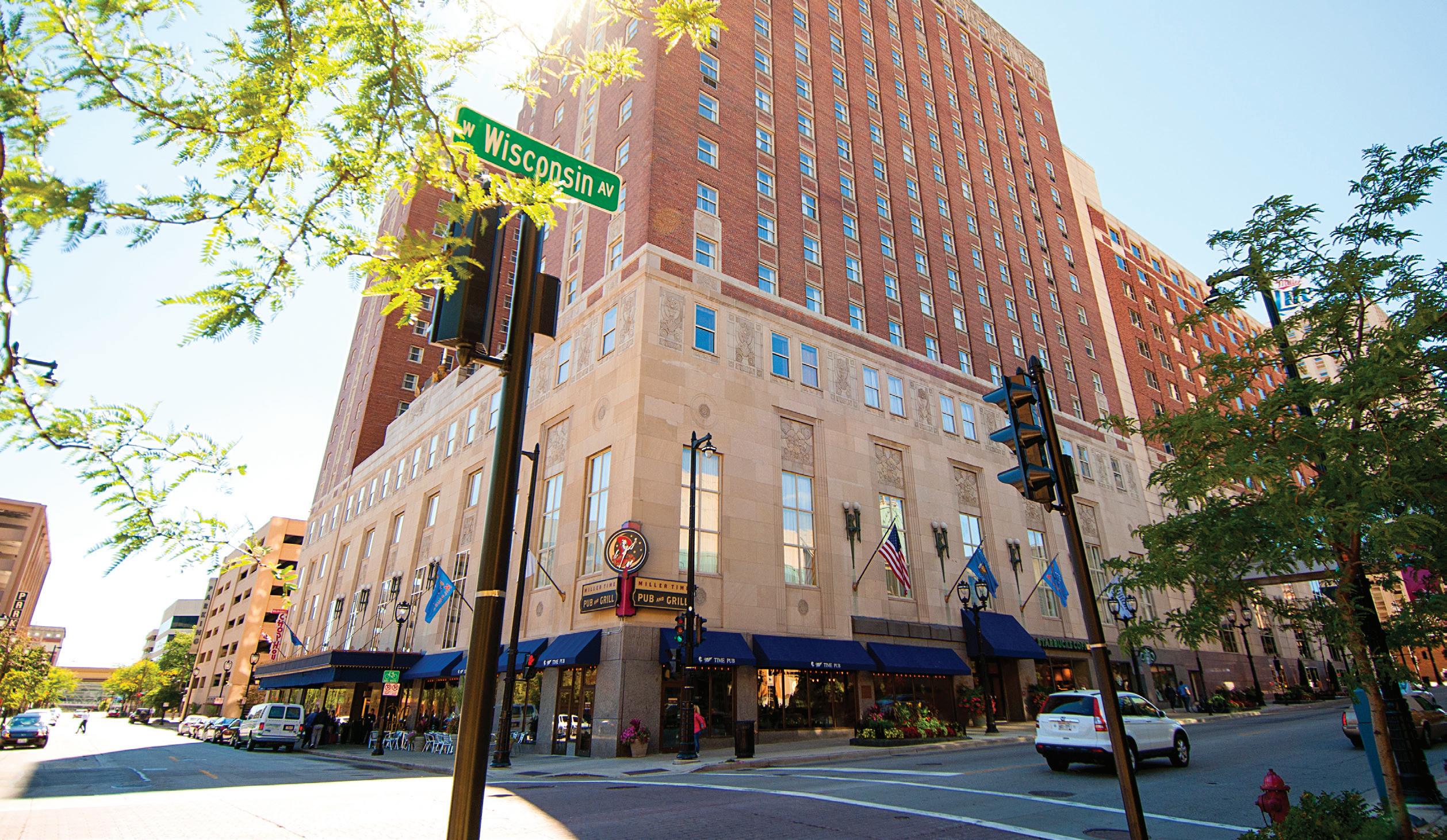
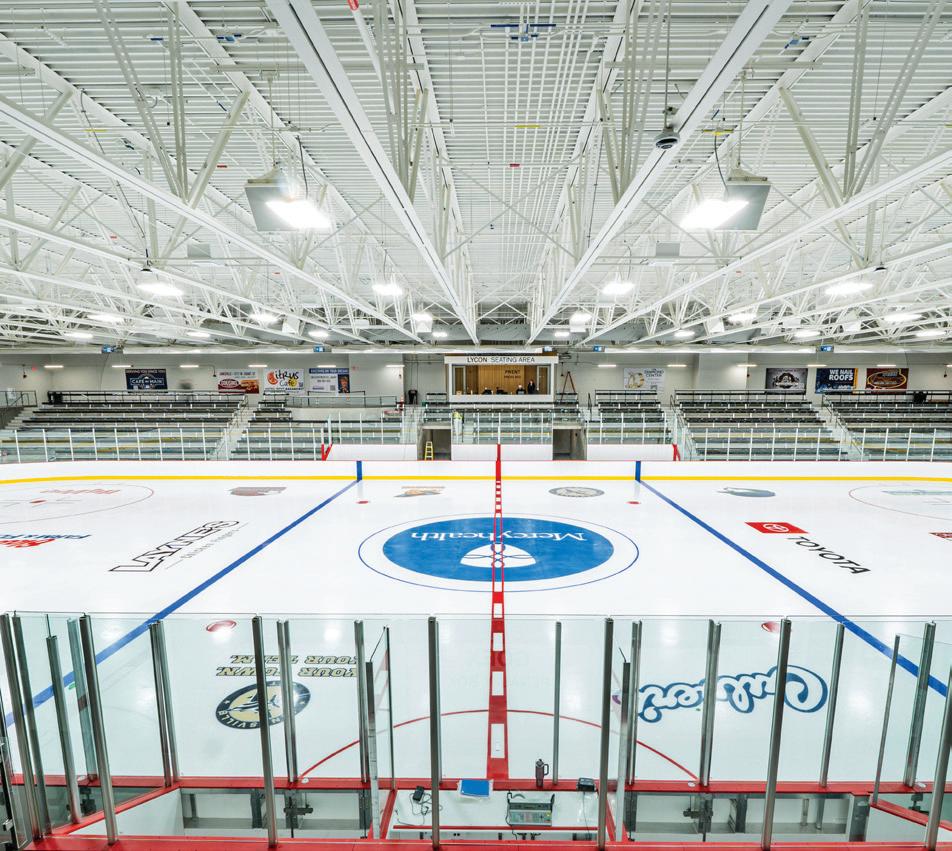
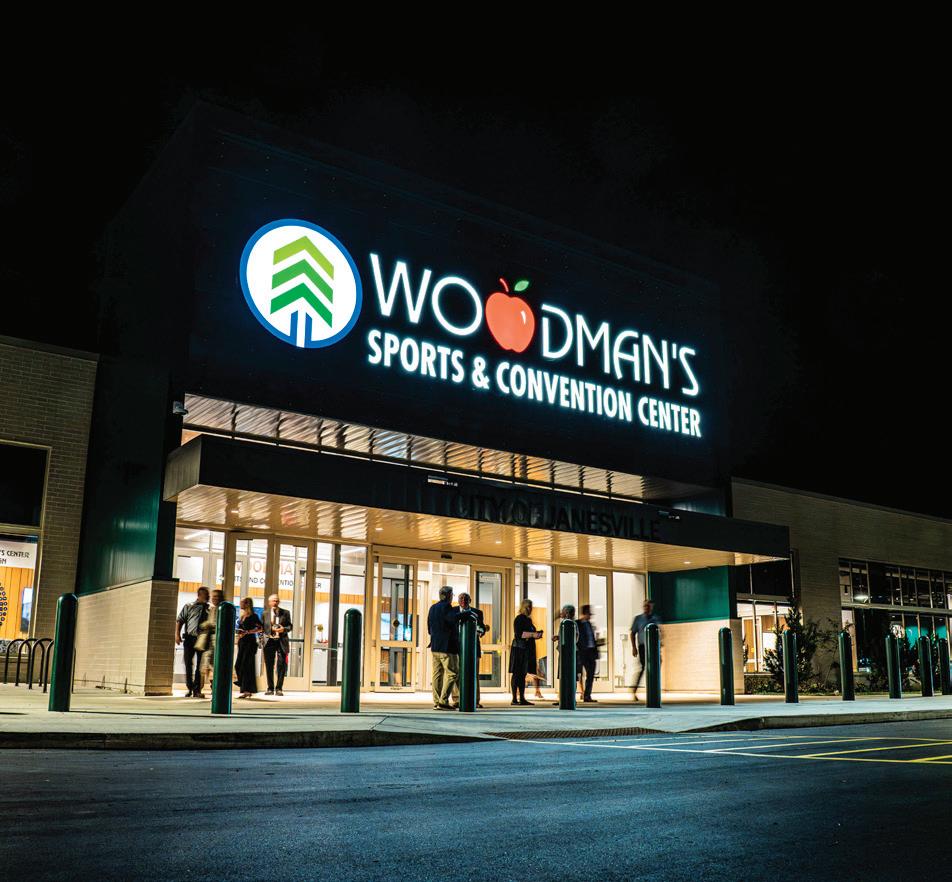

Wisconsin is a state with eclectic cities, scenery and opportunities for your next meeting or event. Southern Wisconsin has bigger cities like Milwaukee, Madison and Janesville, allowing for large conferences; eastern Wisconsin has Door County, where smaller events can take advantage of a unique location; northern Wisconsin features many outdoorsy options, ideal for those who are looking to take in nature while working. Bordered by Illinois and Minnesota and buoyed by several of its own airports, the state is easy to find — and navigate — for all attendees.
Milwaukee’s largest hotel, the Hilton Milwaukee, is about to undergo a major renovation. Originally, only its Art Deco Tower was to be upgraded, but now its more than 100-room west wing will also be updated instead of removed. The new west wing will become its own entity, The Marc Hotel. Both hotels will be getting modern makeovers with new carpet, paint, furniture and artwork. Milwaukee is a prime spot for meetings and events, with its own international airport, as well as hundreds of restaurants, bars and shops. Your guests will have an array of options for everything they need during their stay in this metro.
Woodman’s Sports & Convention Center in Janesville is now open and operational. This 140,000-square-foot complex is designed to host everything from trade shows to corporate conferences. At the heart of the complex is the Robert & Delores Kennedy Convention Center, a versatile hall offering 25,800 square feet of space. The facility also includes a multipurpose arena with 23,000 square feet for exhibits, keynote sessions or receptions.
Designed with both planners and guests in mind, the facility provides free parking, Wi-Fi connectivity and handicap accessibility to ensure a smooth experience, while on-site staff support helps make events of any scale run seamlessly. There are plans to add a family activity center, additional restaurants, outdoor gathering zones and a hotel on site, but 10 hotels are already located within a five-mile radius, making lodging options flexible.
Northern Wisconsin is known for its stunning forests and landscapes, which can make for a truly special experience. Located in Rhinelander, The Pines Event Center offers space for larger meetings, while also providing small-town experiences. Whether you are hosting a luxurious gala or intimate workshop, Wisconsin has the place for you.
In picturesque Elkhart Lake, you’ll find the perfect destination for events and conferences. From a variety of spaces ranging from 448-10,164 square feet to suite accommodations and all the amenities of a AAA Four Diamond resort hotel, we’ll help you ensure attendance, wow your guests, and exceed your expectations.
To learn more, visit osthoff.com/meetings or call 800.876.3399.
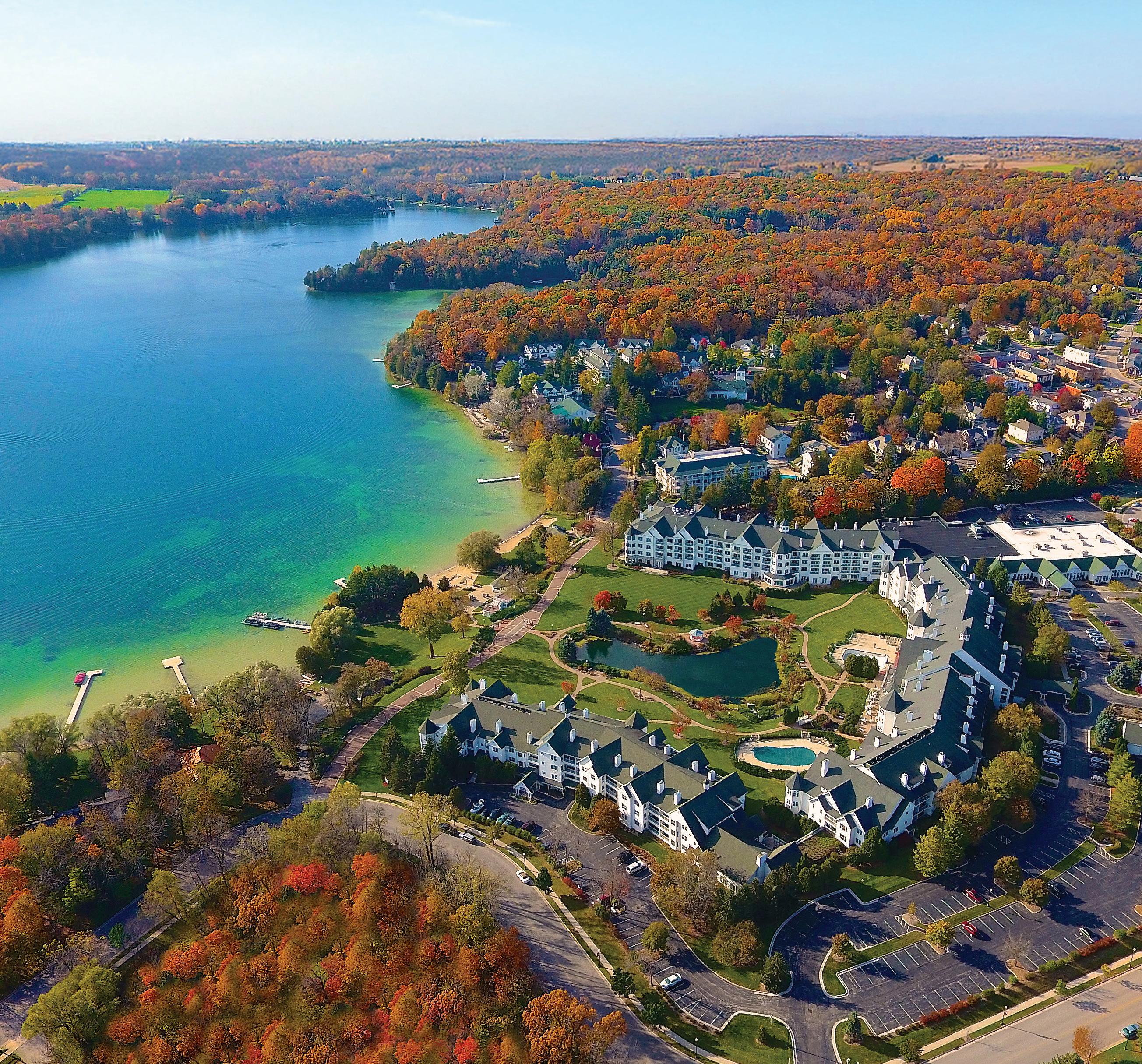


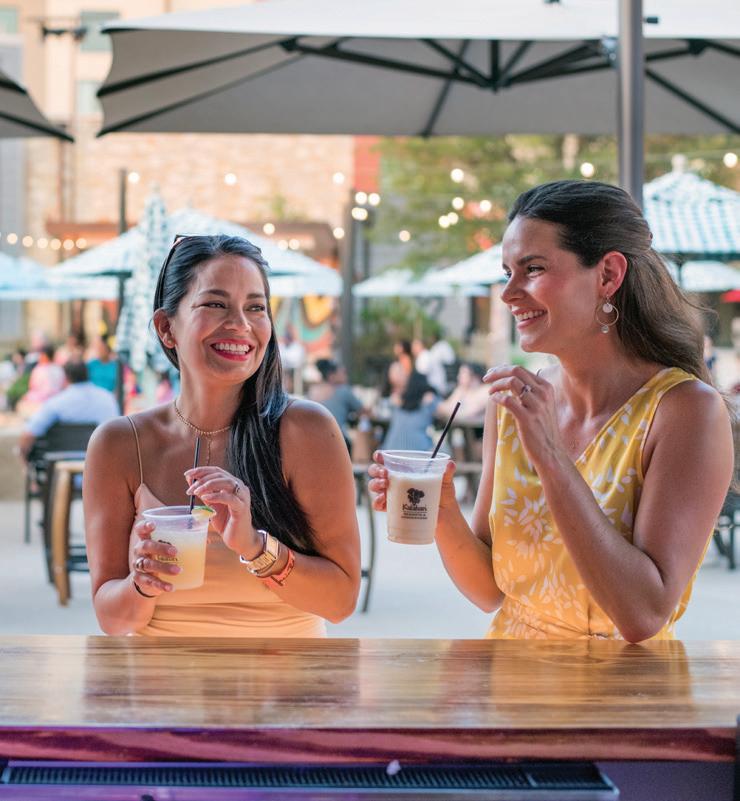
• Events that prioritize health and wellness encourage social interaction among employees, strengthening relationships, communication and overall team bonding.
• Integrating wellness into events should include a holistic experience that nourishes and revitalizes each attendee.
• Wellness benefits are long-lasting, leading to stronger connections, increased performance and greater overall satisfaction, both at your next event and beyond.
As businesses navigate the complexities of a fast-paced, always-on work environment, the significance of employee wellness is being recognized now more than ever. Kalahari Resorts & Conventions recognizes the pivotal role wellness plays in elevating event experiences. Being intentional about incorporating wellness into an event can lead to benefits for employees and the organization. At Kalahari, your dedicated convention services manager is ready to help plan activities and menu selections that will work best for your group’s goals. You can add yoga sessions, guided meditation, extended breaks with healthy food options, nutritional workshops and even relaxing spa services.
Kalahari recognizes the power of a wellness-focused environment to inspire selfreflection, positivity and personal growth, and can help you bring that experience to your team. We believe wellness is essential in both events and the workplace, which is why we offer our associates the Kalahari Be Well program. This includes weekly wellness activities and extra time off to recharge. As a result, our staff collaborates more effectively and, since incorporating the program, we’ve seen enhanced performance across the board. Integrating wellness into events can be as easy as moving your meeting to an outdoor space or building in a walk around the property. Our on-site, full-service Spa Kalahari features a variety of treatments and experiences for relaxation and destressing.
At Kalahari, we believe that prioritizing wellness not only elevates the event experience, but also increases productivity. By creating environments that support both physical and mental well-being, we help teams thrive every day.
Kalahari Resorts & Conventions
1305 Kalahari Dr., Wisconsin Dells, WI 53965 wigroups@kalahariresorts.com 7000 Kalahari Dr., Sandusky, OH 44870 ohgroups@kalahariresorts.com 855.411.4605 KalahariMeetings.com



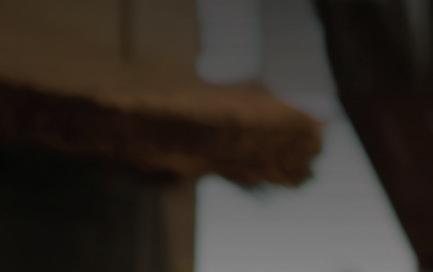
















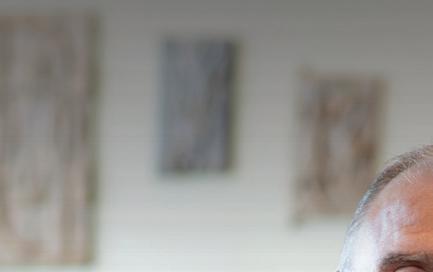






NATIONAL SALES DIRECTOR
19 YEARS WITH KALAHARI

DIRECTOR OF SALES
22 YEARS WITH KALAHARI

Bots can’t coordinate catering. Algorithms won’t adjust based on curveballs. And no technology on earth can pull off an event like Kalahari. Here, you’ll find real-life experts in every field who provide first-class service and support throughout the planning process. Because going beyond expectations can’t be automated.




SENIOR CATERING SALES MANAGER
19 YEARS WITH KALAHARI


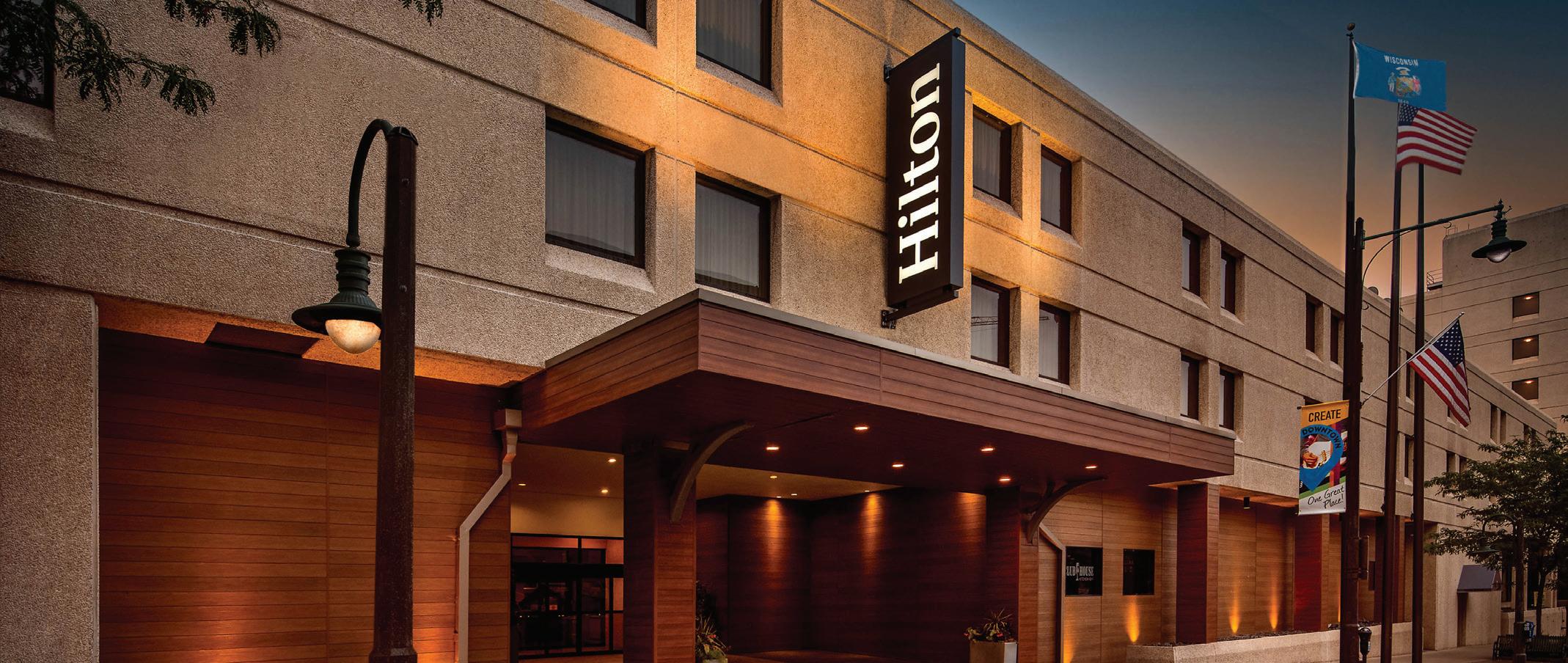
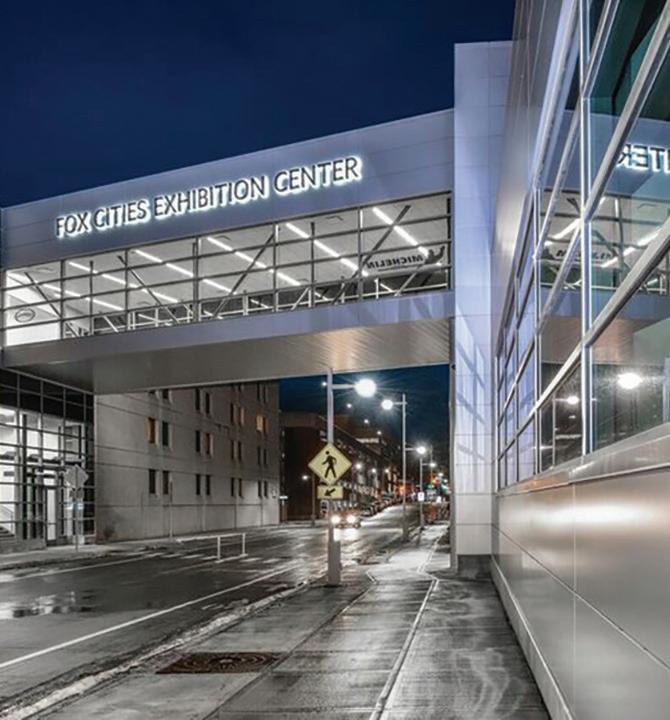
• The Fox Cities Exhibition Center is designed to host conventions, trade shows, banquets, meetings and entertainment. It offers over 38,000 square feet of flexible indoor space, a 17,000-squarefoot outdoor plaza and a skywalk that directly connects to the Hilton Appleton Paper Valley.
• The Hilton Appleton Paper Valley features 38,000 square feet of versatile event space — perfect for conferences, meetings and social gatherings. Choose from 27 unique and flexible spaces that can accommodate anywhere from five to 1,000 guests.
Experience the best of downtown Appleton at Hilton Appleton Paper Valley. Located in the heart of the city, our pet-friendly hotel puts you steps away from 40+ restaurants, the Fox Cities Performing Arts Center and Lawrence University. The hotel features 388 guest rooms and is connected to the Fox Cities Exhibition Center.
Enjoy four on-site restaurants that welcome both hotel guests and locals. Harvest Kitchen & Pantry serves upscale American-style dishes and a fresh soup and salad bar. Clubhouse Kitchen & Bar offers a lively sports bar-style atmosphere with a golf simulator and a distinctive menu designed to impress.
Vince Lombardi’s Steakhouse is an award-winning fine-dining experience showcasing over 400 pieces of Lombardi memorabilia, an extraordinary menu and an extensive wine list. Starbucks offers your favorite coffee and refreshments, perfect for starting your day or grabbing a quick treat.
Experience hospitality like no other at the Hilton Appleton Paper Valley — from our welcoming staff and exceptional dining options to our customized catering menus tailored to your needs.
With our purpose-driven culture, we’re recognized for making your memories worth the tell. Let us be a part of your journey.
Hilton Appleton Paper Valley
333 W. College Ave., Appleton, WI 54915 920.733.8000
AppletonPaperValley.Hilton.com


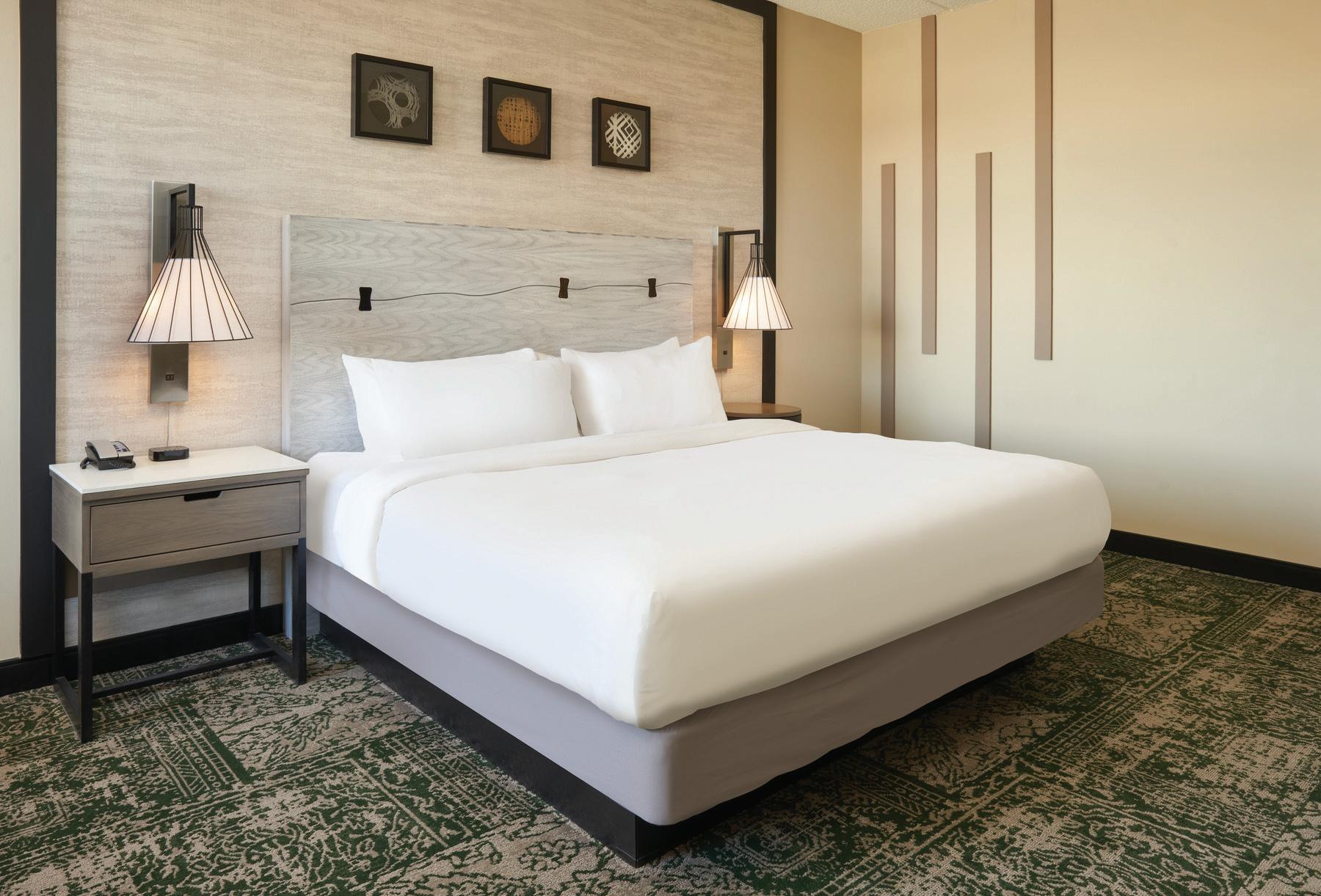

Y O U R E V E N T , O U R E X P E R T I S E
Located in the heart of vibrant downtown Appleton, the Hilton Appleton Paper Valley is a fully connected event campus designed for both business and leisure. Enjoy three exceptional onsite restaurants Harvest Kitchen & Pantry, Clubhouse Kitchen & Bar, and the renowned Vince Lombardi’s Steakhouse along with 388 guest rooms and expansive, versatile event spaces, all in one location.
With a combined 80,000 square feet of event space, Hilton Appleton Paper Valley and the Fox Cities Exhibition Center offer a seamless setting for meetings, conferences, trade shows, and special events Together, our 30+ unique spaces provide the ideal backdrop for gatherings of any size—from intimate meetings of five to exhibitions for several thousand.
At Hilton Appleton Paper Valley, everything is connected, everything is in one place, and everything is designed to deliver an effortless experience.



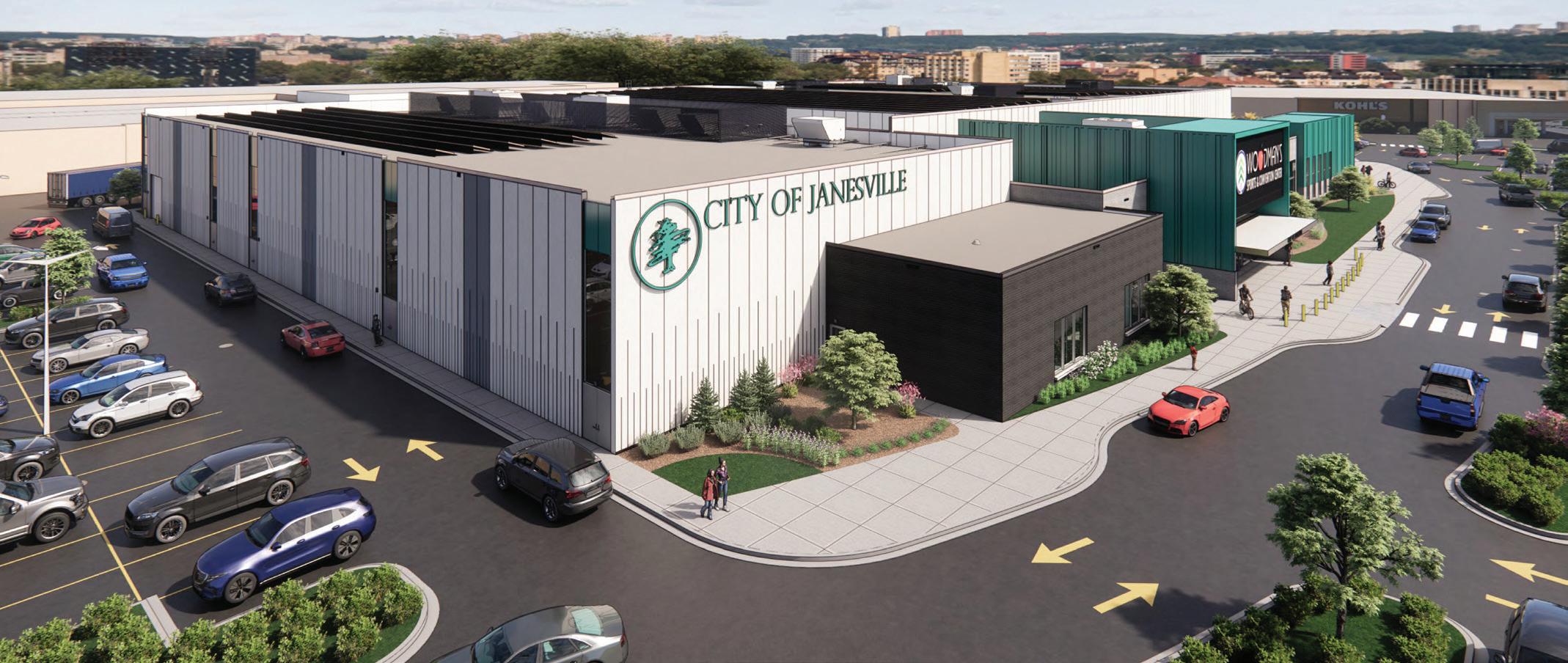
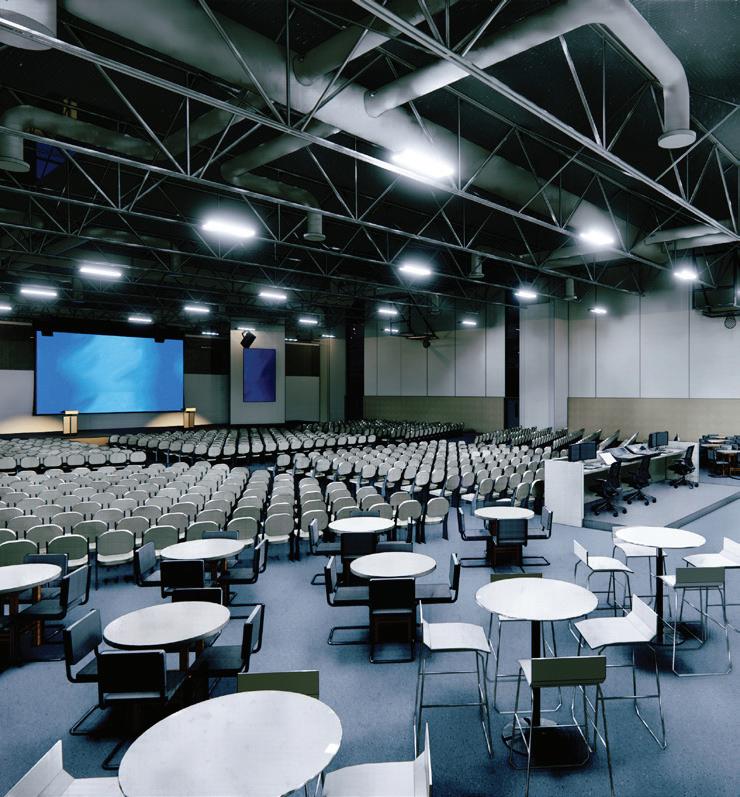
• We’re less than an hour from Madison or Milwaukee and less than two hours from Chicago
• Direct interstate access to I-39/90 makes Janesville accessible from anywhere in the Midwest
• Our variet y of meeting options include unconventional, oneof-a-kind locations that are sure to make your meeting distinctive and unforgettable
• Our larger venues can accommodate meetings with 200 or more attendees and offer great flexibility
In the heart of south-central Wisconsin, Janesville offers a blend of accessibility, affordability and amenities that makes hosting meetings simple.
Conveniently located right off I-39/90 and other major highways, and with free parking throughout the city, Janesville is easy to reach while additionally providing a refreshing change of pace from big-city venues.
At the center of it all is the brand-new Woodman’s Sports & Convention Center, a 140,000-square-foot facility designed with flexibility in mind. Inside you’ll find a 25,800-square-foot convention center, 23,300-square-foot adjoining multi-purpose space, two additional breakout rooms, and nearby dining, retail and hotels within one to five miles.
Beyond the venue, Janesville offers a variety of activities. Attendees can enjoy miles of trails, public art, various breweries, dining experiences, golf courses, boutique shopping and a vibrant downtown before or after your sessions, making every meeting more than just business.
Our team at the Janesville Area Convention & Visitors Bureau is here to support you, from coordinating accommodations and local services to providing welcome materials and on-site hospitality — all at no cost.
Janesville Area Convention & Visitors Bureau
20 S. Main St., Ste. 11, Janesville, WI 53545 608.757.3171
JanesvilleCVB.com

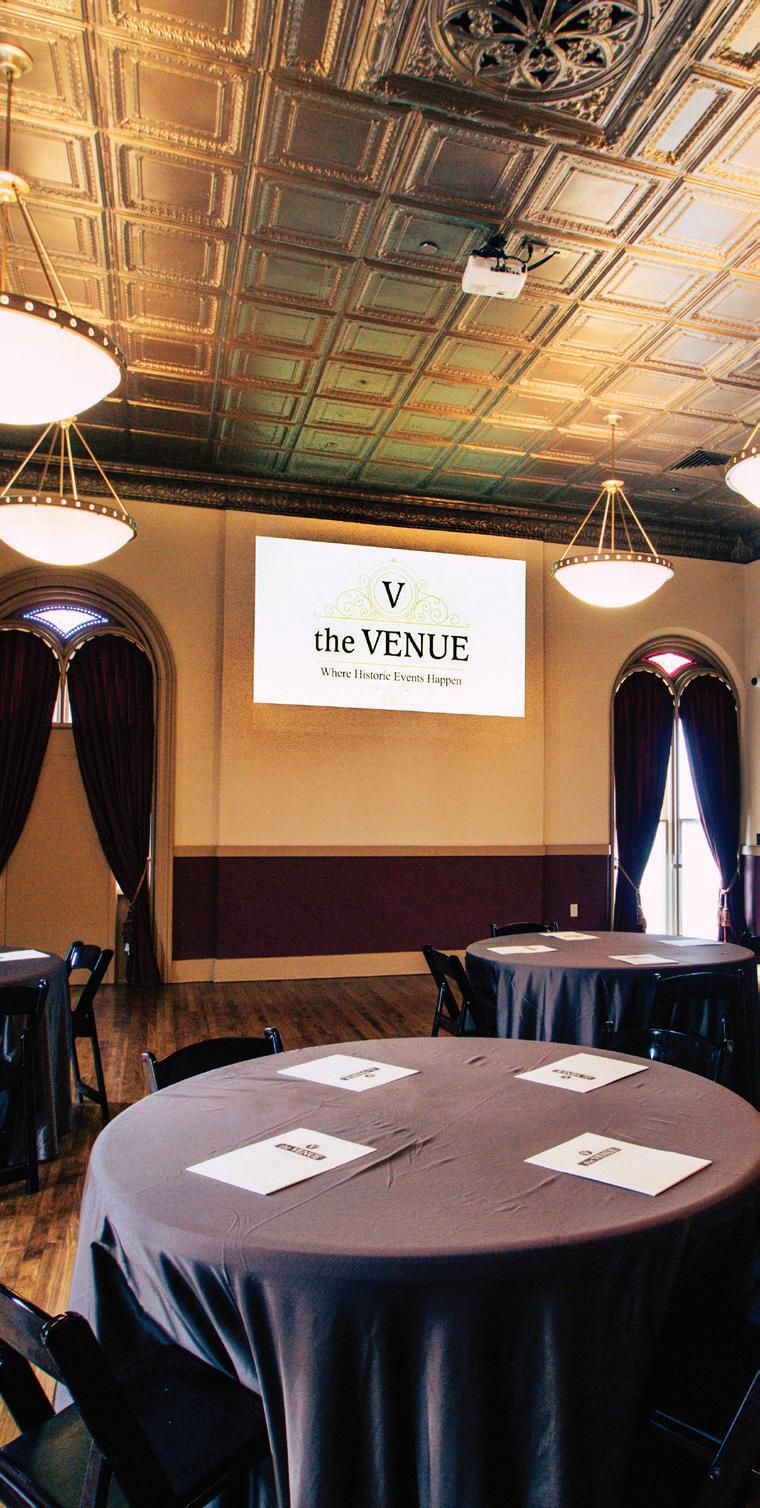
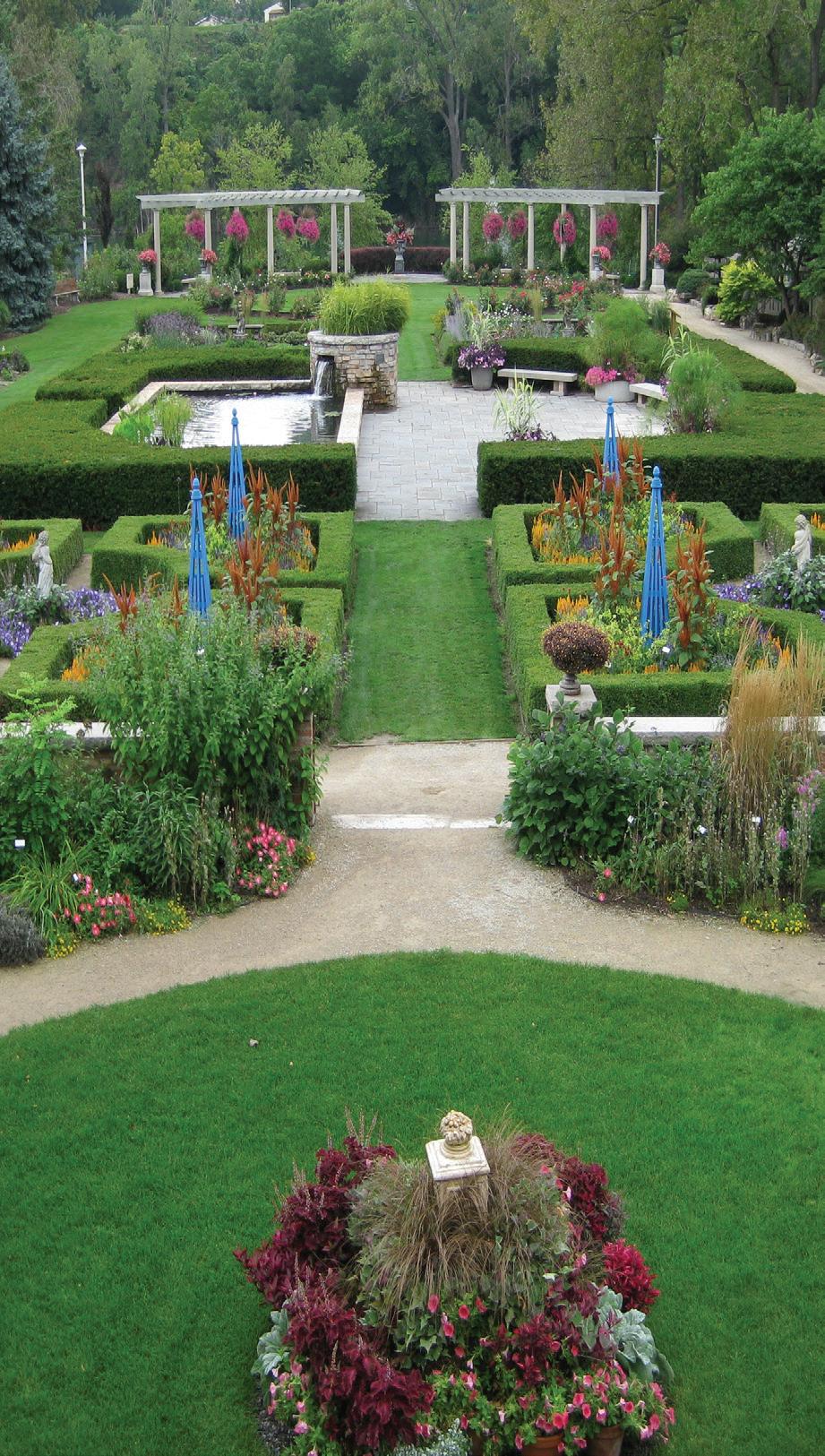
Bring your event to life with a variety of venues, from one-of-a-kind historic spaces to modern facilities like the brandnew Woodman’s Sports & Convention Center — 140,000-square-feet of flexible meeting space. Pair that with free parking and affordable accommodations, including 12 hotels, and your guests will feel right at home.
Getting here is simple: Janesville sits along I-39/90 and other major highways, making it easy to access from every direction. Once the work is done, your group can unwind and explore — whether it’s scenic trails, public art, championship golf, a world-class botanical garden, or the vibrant downtown scene.
Best of all, our experienced team is ready to support you with hospitality and personalized event coordination, ensuring everything goes seamlessly from start to finish.
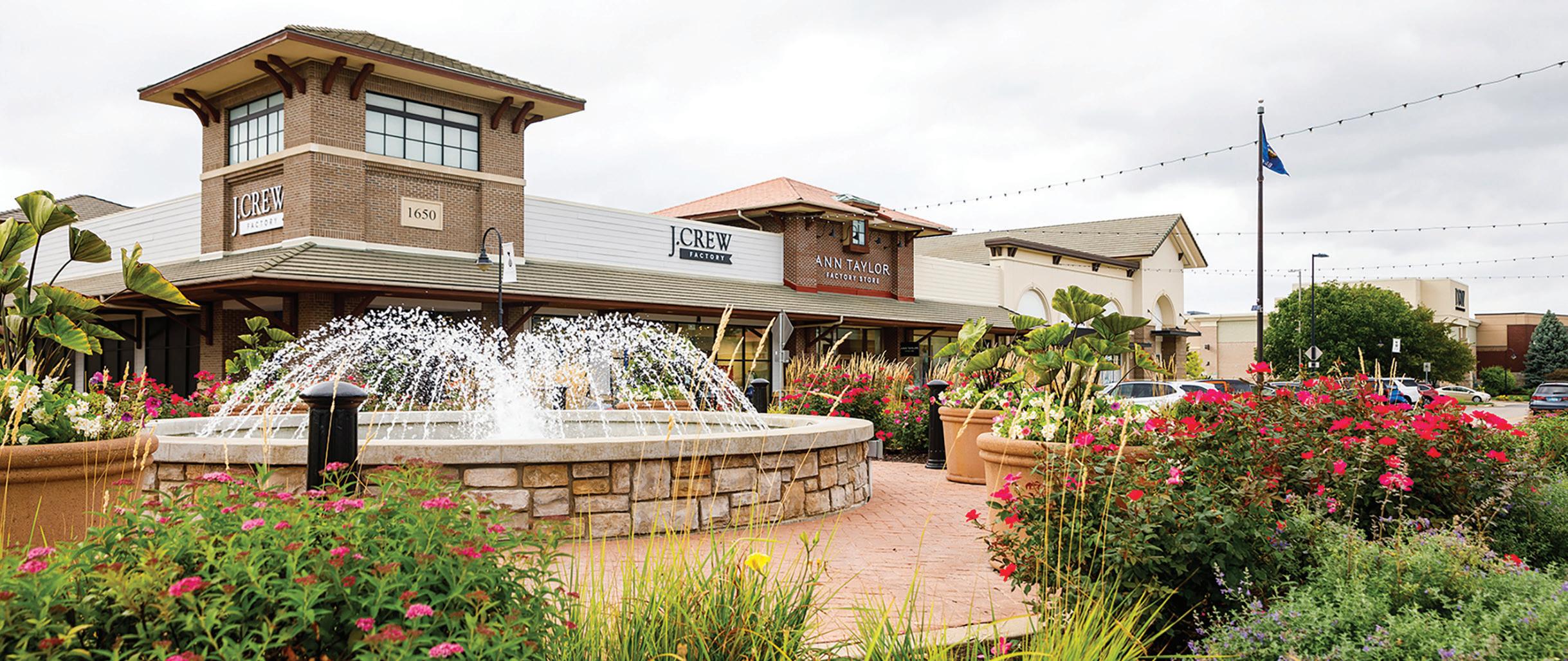

• Nine hotels and more than 1,150 rooms
• Home to the largest convention hotel in Dane County — the Madison Marriot West-Middleton, with 60,000 square feet of conference space and 19 conference rooms
• Hilton Garden Inn, the city’s second-largest conference space hotel, with 3,600 square feet of meeting space
• Courtyard by Marriott with 1,860 square feet of meeting space
• Six additional hotels with unique offerings and within minutes of each other and about 20 minutes from the Dane County Regional Airport
Middleton, Wisconsin, with a mix of historic charm and new development, is the perfect meeting place for everything from corporate retreats to conventions.
The city also boasts more than 80 restaurants and cafes, two shopping districts, a beautiful golf course, on-the-lake boat rentals, gorgeous trails and conservancy land, and easy access to downtown Madison.
Plan off-site tours to area attractions like The House on the Rock, Taliesin, Circus World Museum and more, all within an hour or less of Middleton. Board meetings and corporate events can rent off-site spaces at one of our many restaurants, or at locations with a bit more character, like The National Mustard Museum, X-Golf, Capital Brewery & Bier Garten and Hidden Cave Cidery. The Middleton Nordic Center is scheduled to open in summer 2026 and will include a beautiful rentable community space with on-site catering, as well.
Visit Middleton, the city’s tourism department, offers meeting planner tools, assistance, grants/sponsorships and more to help ensure that planners, as well as attendees, have a positive experience.
Our convention and events services manager, who is also a CMP, is on hand to answer questions, assist with vendor recommendations and provide customized materials for individual events, including itineraries.
Visit Middleton 1811 Parmenter St., Middleton, WI 53562
800.688.5694 MeetInMiddleton.com
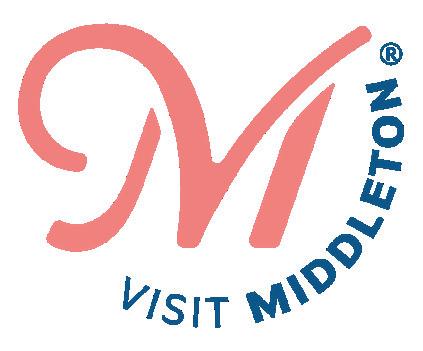
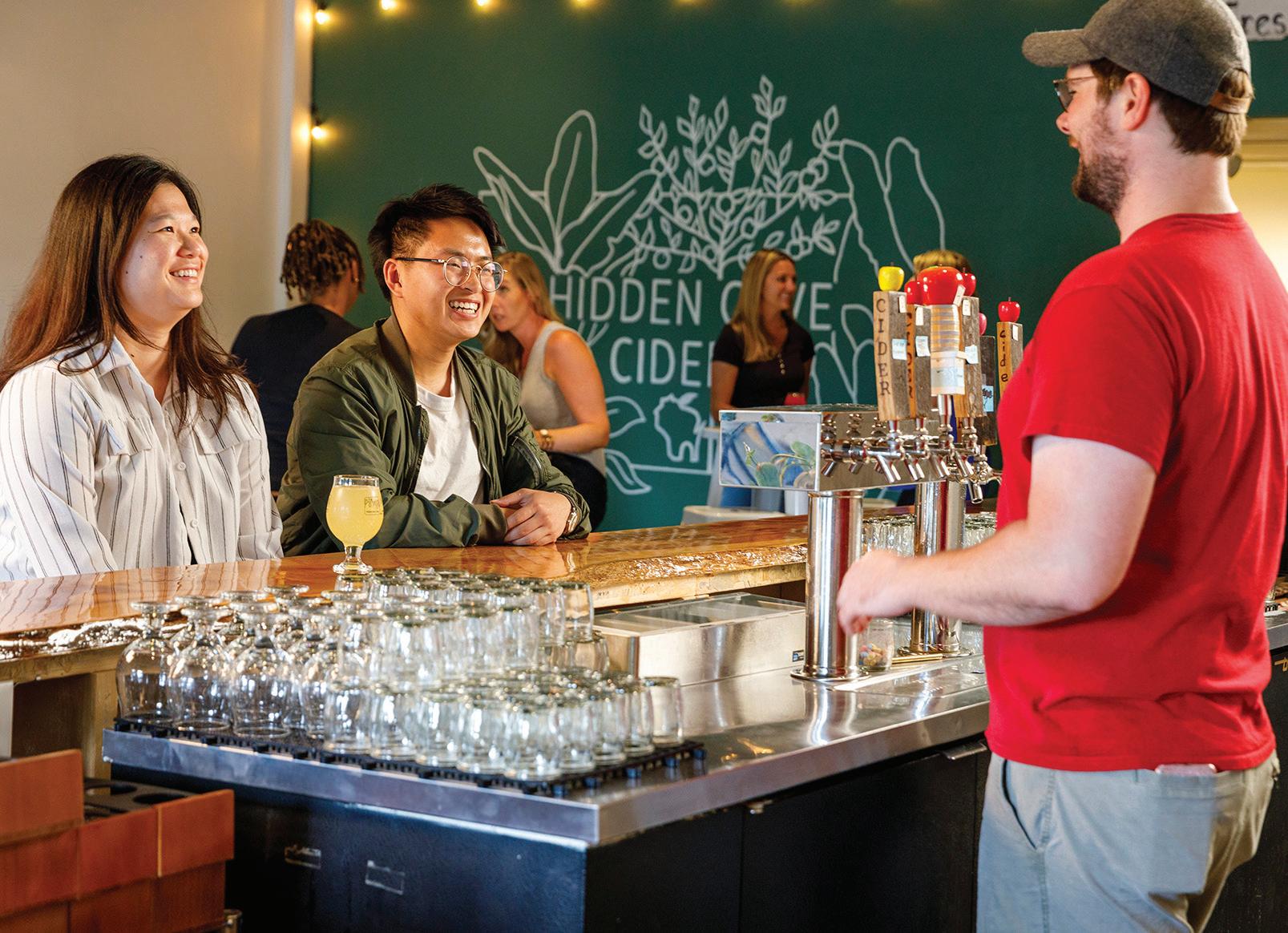
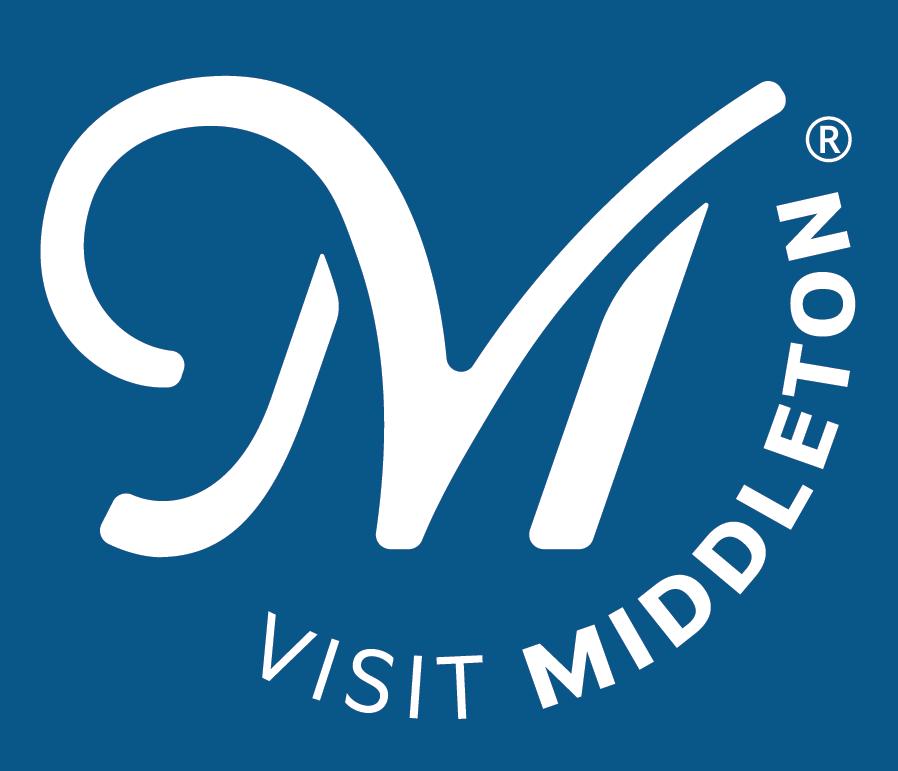
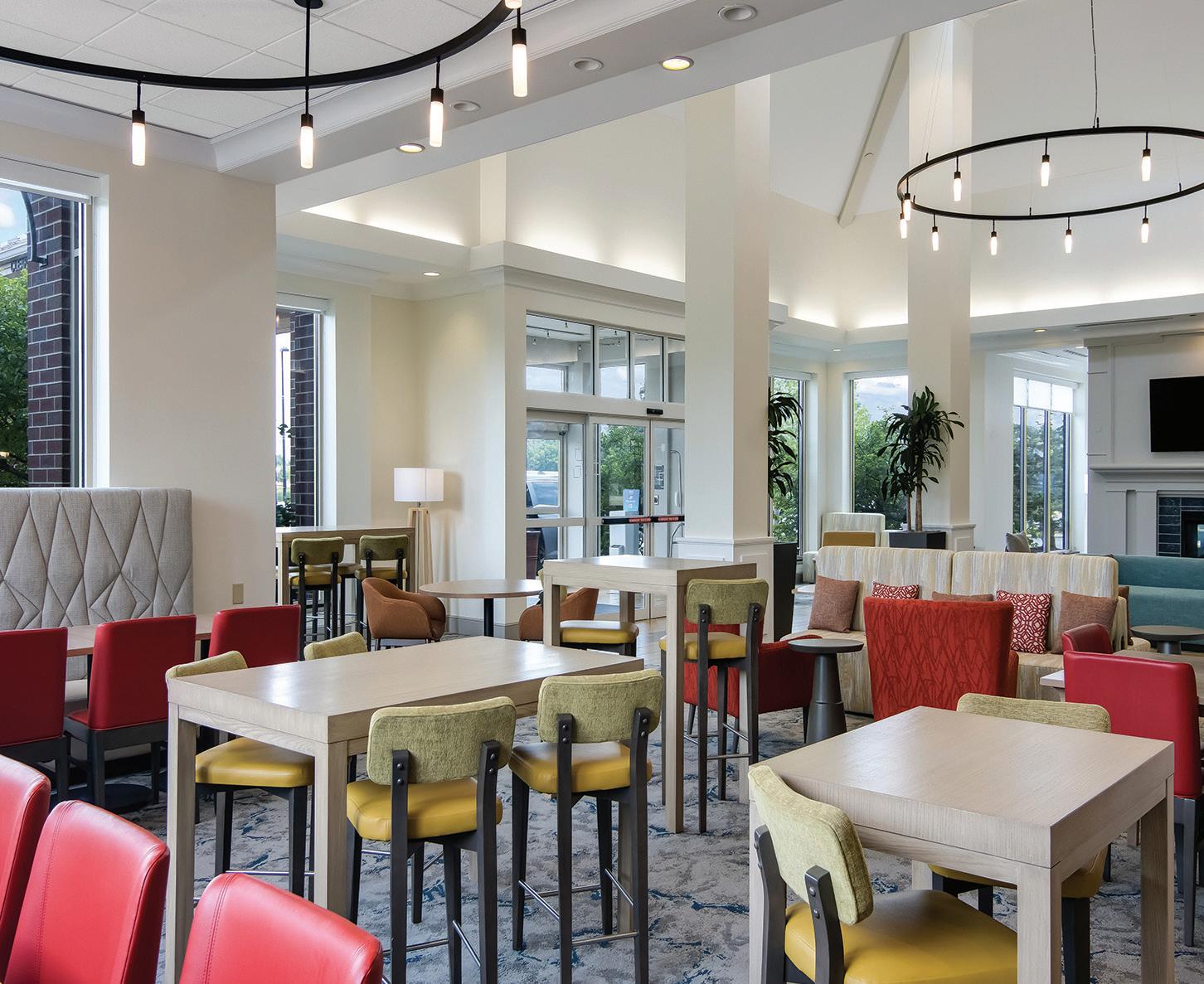


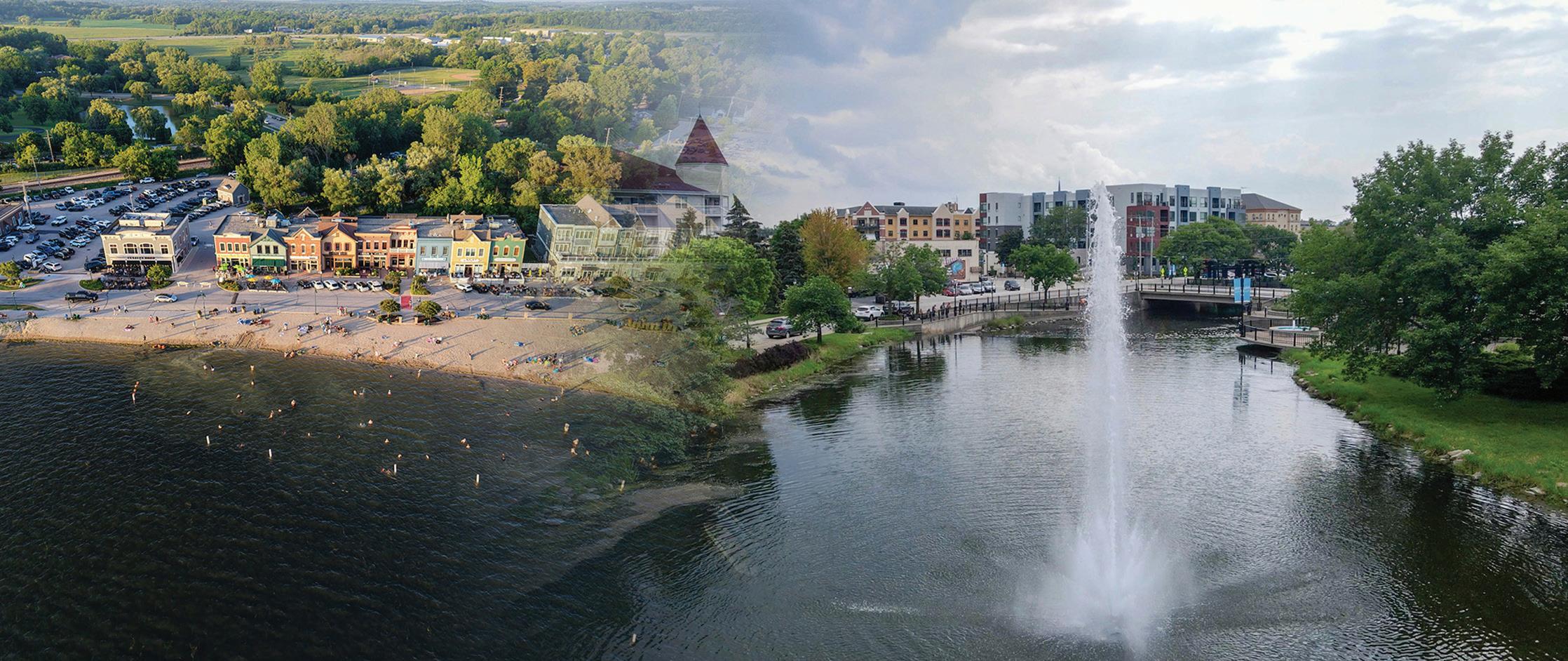

• A convenient location directly off I-94, within 30 minutes of Milwaukee Mitchell International Airport
• 100,000 square feet of flexible meeting space, 1,300 guest rooms and complimentary surface parking
• 30+ group experiences to elevate your event, including complimentary games during breaks and culinary and art classes
• Charming downtown areas, Pewaukee Lake and proximity to all southeast Wisconsin offers!
Directly off I-94 between Milwaukee and Madison, Waukesha and Pewaukee welcome visitors with a blend of charm and convenience. From a historic downtown where the Fox River winds to the scenic Pewaukee lakefront, our communities offer a mix of natural beauty, rich history and eclectic experiences.
With venues designed to accommodate everything from small gatherings to 500-person conferences, Waukesha and Pewaukee are ready to host your next event.
We can help make your event planning easier, enjoyable and more memorable. From early planning to on-site support, we offer complimentary services that add real value for planners and an authentic local touch for attendees. We can also help promote public events and connect your group with memorable local experiences.
Enhance your event with experiences that go beyond the meeting room. We can help you find many ways to engage and inspire your attendees.
We offer everything from free-to-use games for receptions and breaks to more than 30 group activities to choose from — ranging from golf and lake adventures to cooking classes, art workshops and custom gifts.
Waukesha Pewaukee Convention and Visitor Bureau
N14 W23755 Stone Ridge Dr., Ste. 225 Waukesha, WI 53188
262.542.0330
VisitWaukesha.org


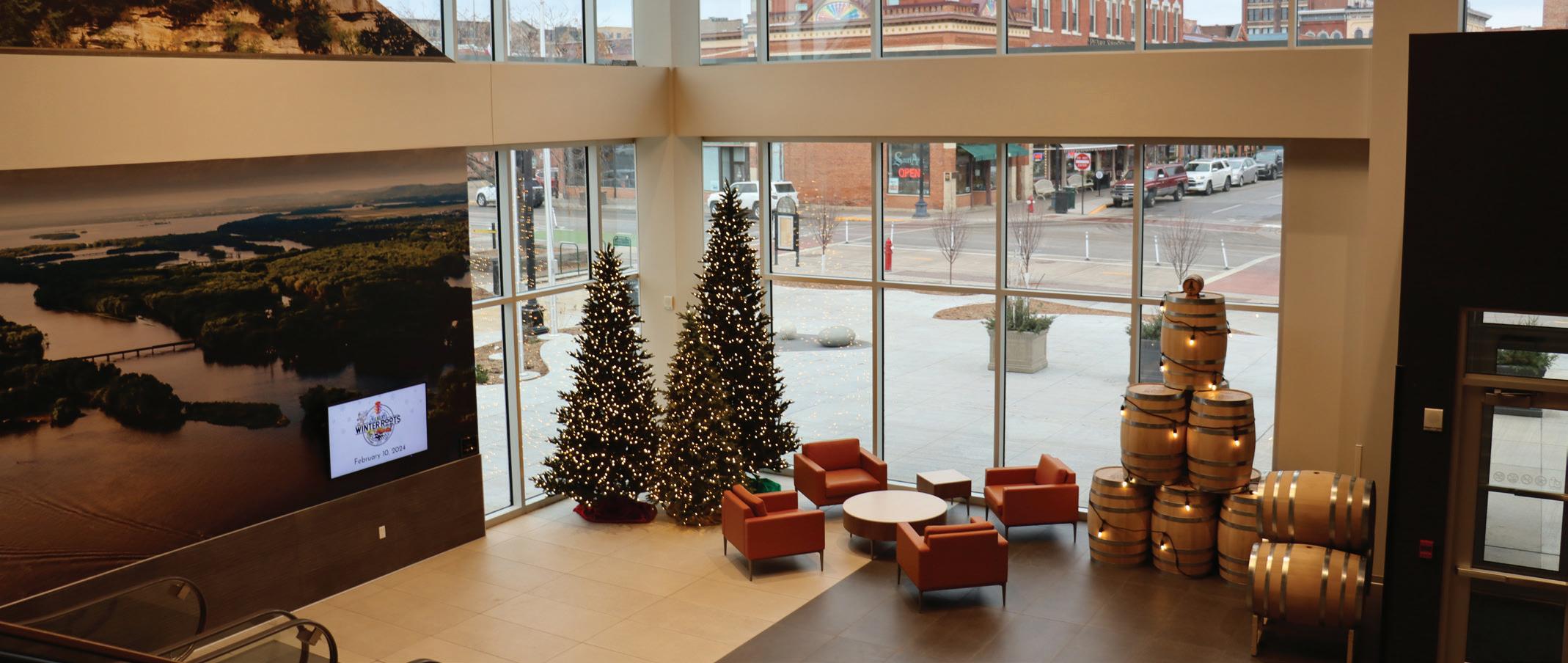

• Located in historic downtown La Crosse, just steps from local shops, dining and entertainment
• 165,000 square feet of flexible meeting and event space, including 78,000 square feet of dedicated expo space, two elegant ballrooms (the largest is 12,000 square feet) and over 10 versatile meeting rooms
• 800 hotel rooms within walking distance of the La Crosse Center, with 2,397 total hotel rooms available throughout the greater La Crosse area
• Scenic surroundings with miles of trails, parks and breathtaking views of the Mississippi River and surrounding bluffs
Discover your next unforgettable event destination at the La Crosse Center, located in the heart of downtown La Crosse, Wisconsin.
Recently renovated and expanded, this versatile venue offers over 165,000 square feet of flexible meeting, convention and event space — perfect for conferences, trade shows and special events of all sizes.
Surrounded by scenic beauty, the La Crosse Center is just steps away from the mighty Mississippi River, boutique hotels, local restaurants and unique shops.
Partner with Explore La Crosse to elevate your event planning experience with expert local support, customized group activities and hotel assistance.
Whether you’re hosting a large convention or an intimate gathering, you’ll find state-ofthe-art amenities, stunning views and genuine Midwest hospitality.
Make your next meeting or event memorable — choose La Crosse for its charm, convenience and capability.
La Crosse Center
300 Harborview Plaza, La Crosse, WI 54601 608.789.7400 office@lacrossecenter.com LaCrosseCenter.com



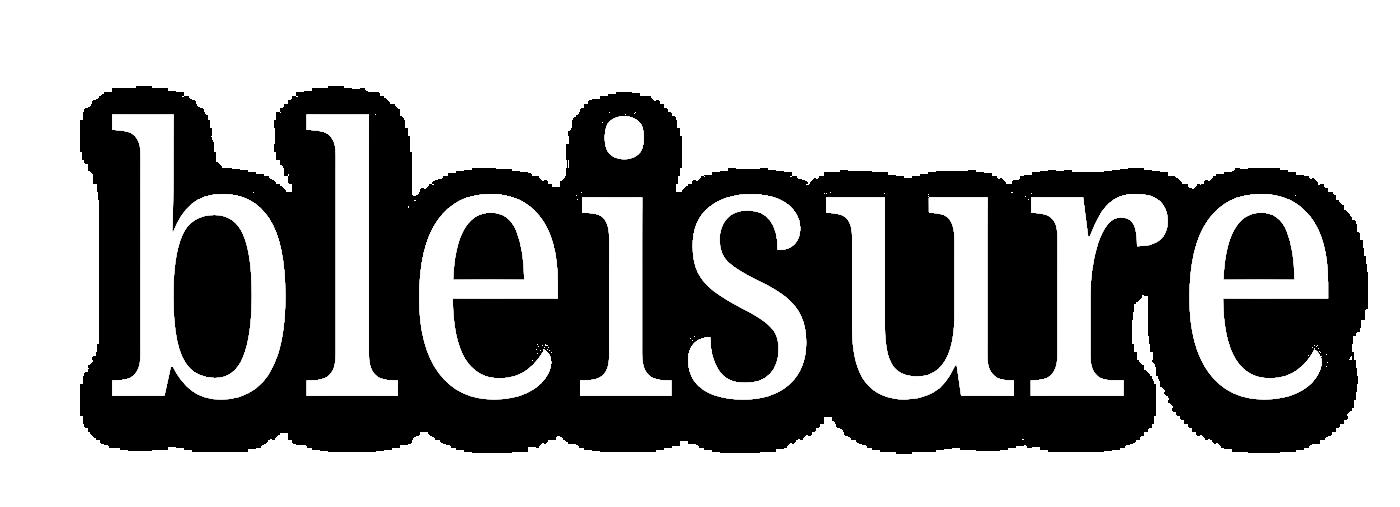

IT’S IN OUR NATURE



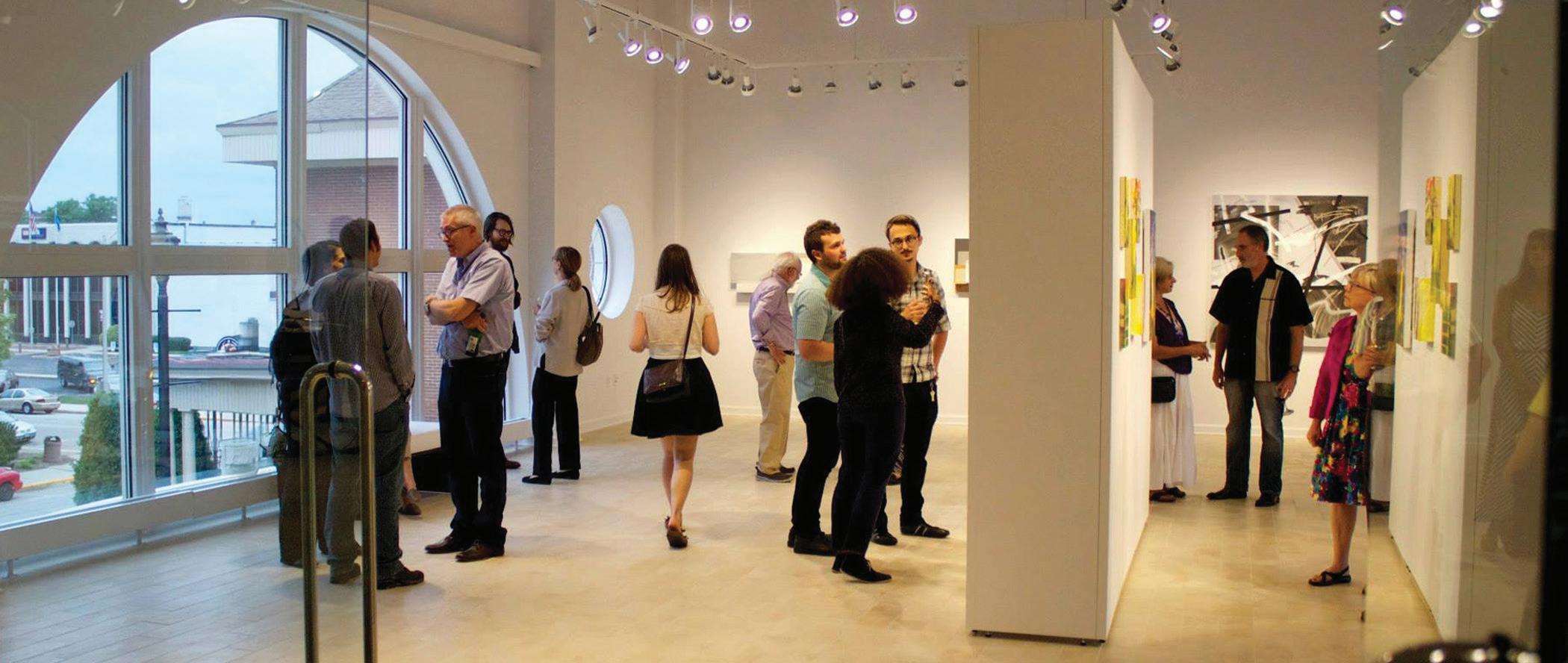
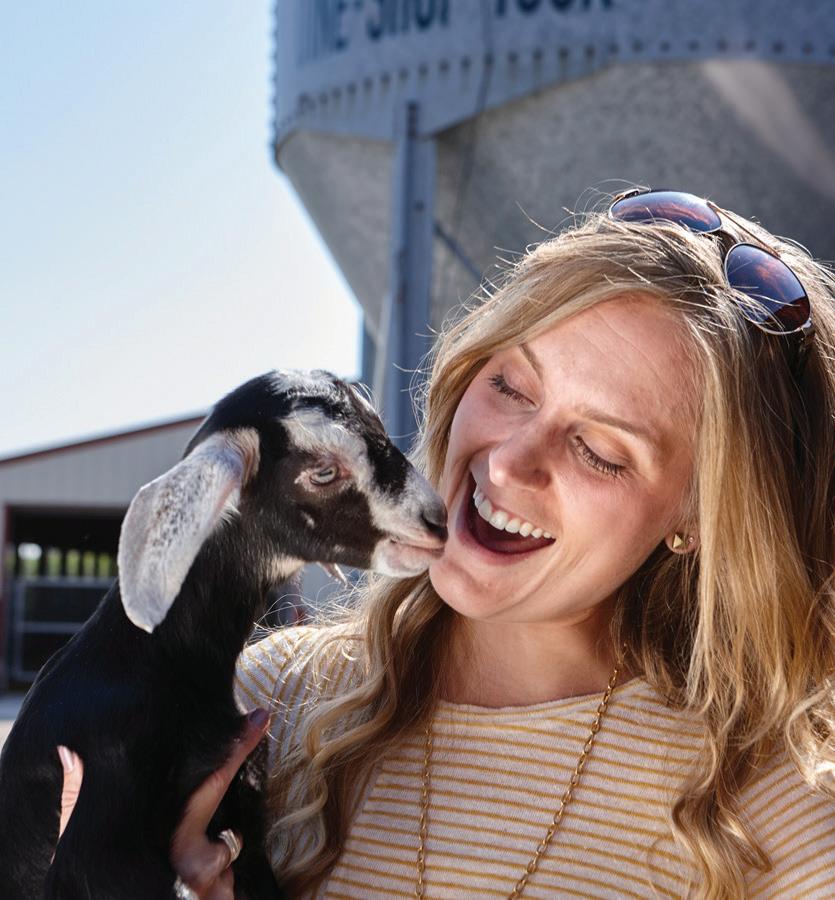
• The Radisson Hotel and Conference Center has 24,000 square feet of total event space, including a 14,000square-foot conference center, breakout rooms and a buzzing pre-function area that practically begs for conversation over coffee.
• The Midwest’s affordable chic downtown boutique hotel, Hotel Retlaw, features elegant guest rooms and 10,000 square feet of dedicated event space.
• Destination Lake Winnebago Region offers meeting planners a variety of creative and memorable event venues, affordability, customized incentives and pre-event planning. You will say to yourself — they just made my job so much easier!
We are your perfect meeting destination! Whether you’re hosting a black-tie event, conference or corporate awards banquet, we provide plenty of ways to make lasting memories.
That’s the thing about Fond du Lac and the Lake Winnebago Region — it has a way of surprising you. At the world-class Thelma Sadoff Center for the Arts, you can have a reception in the gallery and feel the creativity seep into your conversations.
Enjoy wine and cheese pairing during a farm-to-table banquet at the award-winning, LaClare Creamery, where they specialize in distinctly delicious goat cheese. Then get your baby goat snuggles in — yes, it’s as adorable as it sounds.
Fond du Lac sits right in the heart of Wisconsin — less than an hour from Green Bay, Madison and Milwaukee, and only two hours from Chicago — helping boost your attendance.
Best of all, there’s us … humbly waiting to provide you with resources and advice for getting the most out of our region. C’mon in!
Destination Lake Winnebago Region
23 S. Main St., Ste. 201, Fond du Lac, WI 54935 920.923.3010 FDL.com
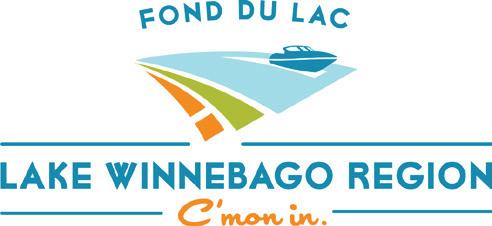
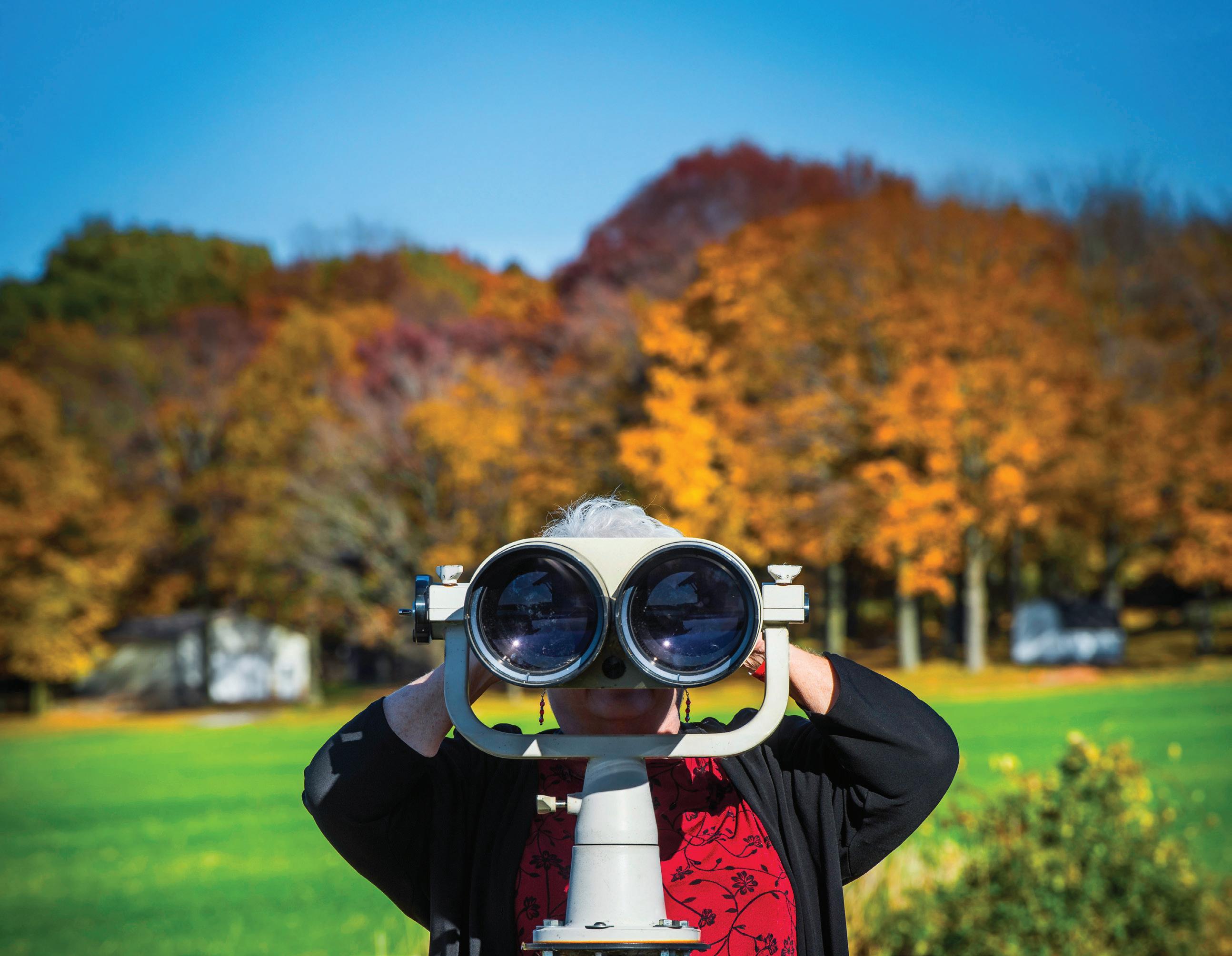

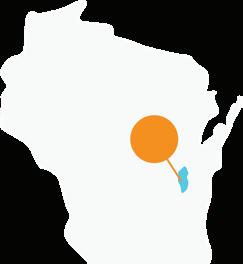
•
•
• Inspired Venues – Goat farm, distillery, art museum, lakefront pavilion

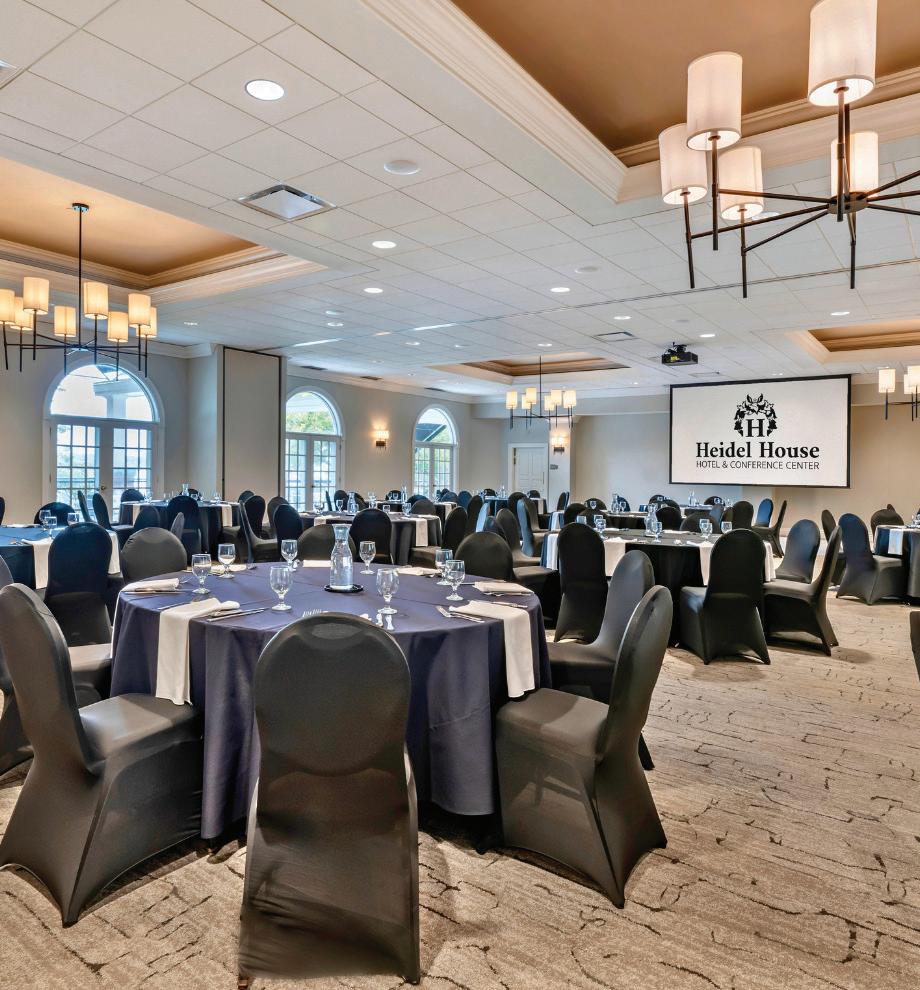
• Over 11,000 square feet of flexible meeting and expo space
• 13+ meeting rooms for groups of all sizes
• Numerous on- and off-site lakeside dining options
• A walkable historic downtown full of charm
• Miles of trails, parks and lakefront scenery
• Unique attractions for year-round gatherings
In a world of bustling cities and crowded convention centers, sometimes the best ideas spark in the most unexpected places. Nestled in the heart of Wisconsin, Green Lake offers a refreshing alternative for meetings and retreats — one where the pace slows, the views inspire and the experience feels personal.
What sets Green Lake apart? It starts with our size. We’re not a metropolis — and we don’t try to be. Instead, we offer an intimate setting where your team won’t just gather; they’ll genuinely connect. With fewer distractions and more natural beauty, Green Lake provides the perfect backdrop for strategic thinking, team bonding and recharging.
At the center of it all is our namesake — Green Lake, Wisconsin’s deepest natural inland lake. Its calm waters and scenic shoreline create an atmosphere of tranquility that fuels creativity. Whether you’re hosting a lakeside brainstorming session, a team-building activity on the golf course or a networking reception in one of our unique venues, the views alone inspire a fresh perspective.
Our meeting spaces are as versatile as they are welcoming. From historic downtown venues full of character to modern lakeside spaces, each offers the amenities and atmosphere you need for a successful gathering. Whether your group thrives in a charming, historic setting or prefers a more contemporary aesthetic, Green Lake ensures your event feels both professional and memorable.
Green Lake Chamber of Commerce
550 Mill St., Green Lake, WI 54941
920.294.3231
info@visitgreenlake.com VisitGreenLake.com
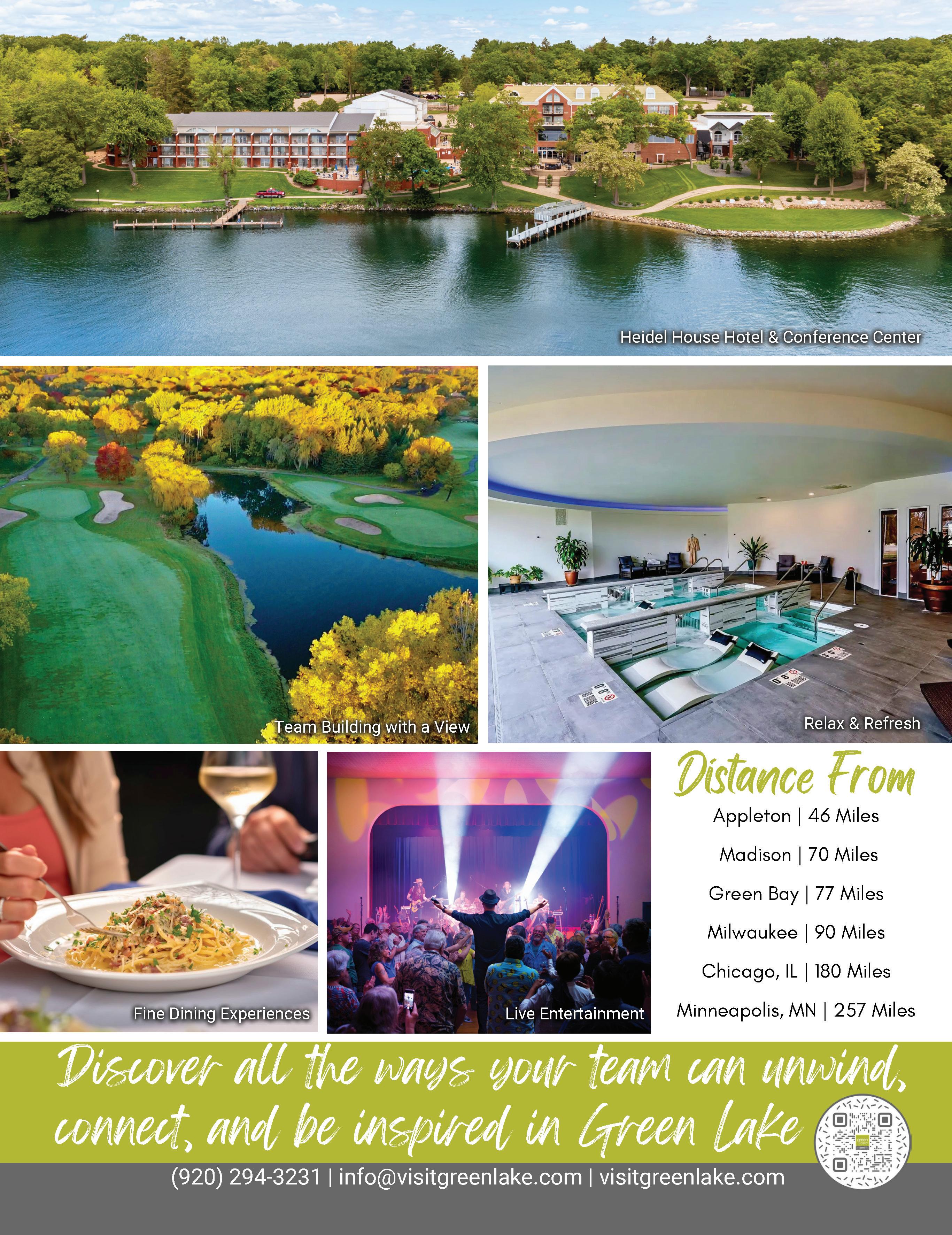

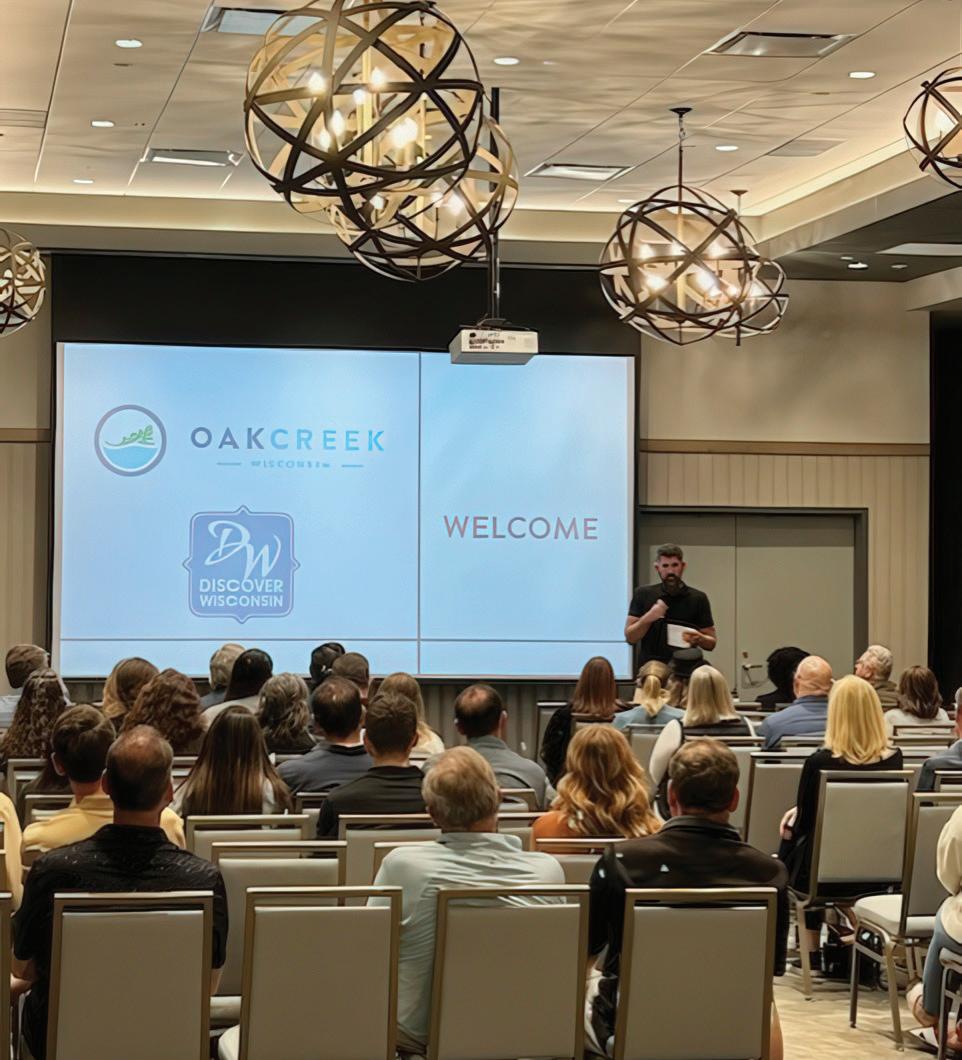
• A convenient location along I-94, minutes from Milwaukee and Milwaukee Mitchell International Airport
• Diverse meeting venues and flexible accommodations that allow groups to tailor their event experience
• A wide variety of team-building and group outing options, from outdoor parks to nearby sports and entertainment
• A community that combines small-city hospitality with big-city convenience
Just south of Milwaukee and minutes from Milwaukee Mitchell International Airport, Oak Creek is perfectly positioned for your next meeting or event. Here, you can settle in comfortably and step out easily to explore something new.
Our city offers a smart mix of flexible meeting venues, welcoming hotels, scenic parks and local gathering spots that can be uniquely tailored to your group.
Oak Creek’s location along I-94 makes travel simple, while its walkable squares and nearby recreation create a natural flow between business and downtime.
From intimate board meetings to team retreats, Oak Creek combines small-city hospitality with big-city access. Enjoy nearby Milwaukee attractions, like a Bucks or Brewers game, then return to a community known for its diverse dining, comfortable accommodations and group-friendly experiences.
Whether you’re planning a multi-day conference or a quick off-site, Oak Creek gives you everything you need without everything you don’t.
“Oak Creek is an emerging, dynamic regional leader driving the future of the south shore. We look forward to helping you plan a meeting experience that’s both unique and memorable;” says Marcia Wayer, the director of marketing and public relations at the City of Oak Creek.
City of Oak Creek
8040 S. Sixth St., Oak Creek, WI 53154
414.766.7000
VisitOakCreek.com/Meetings

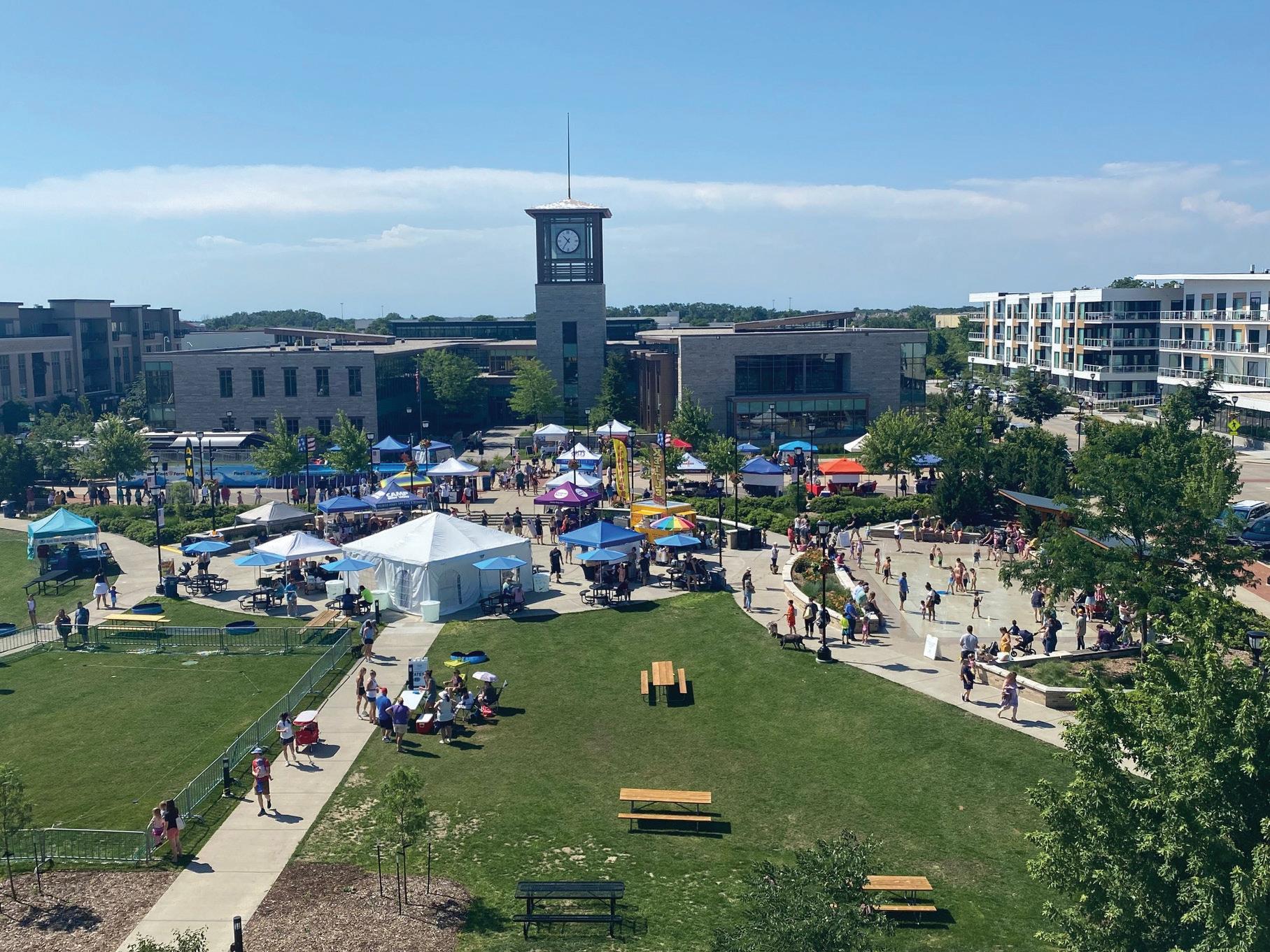
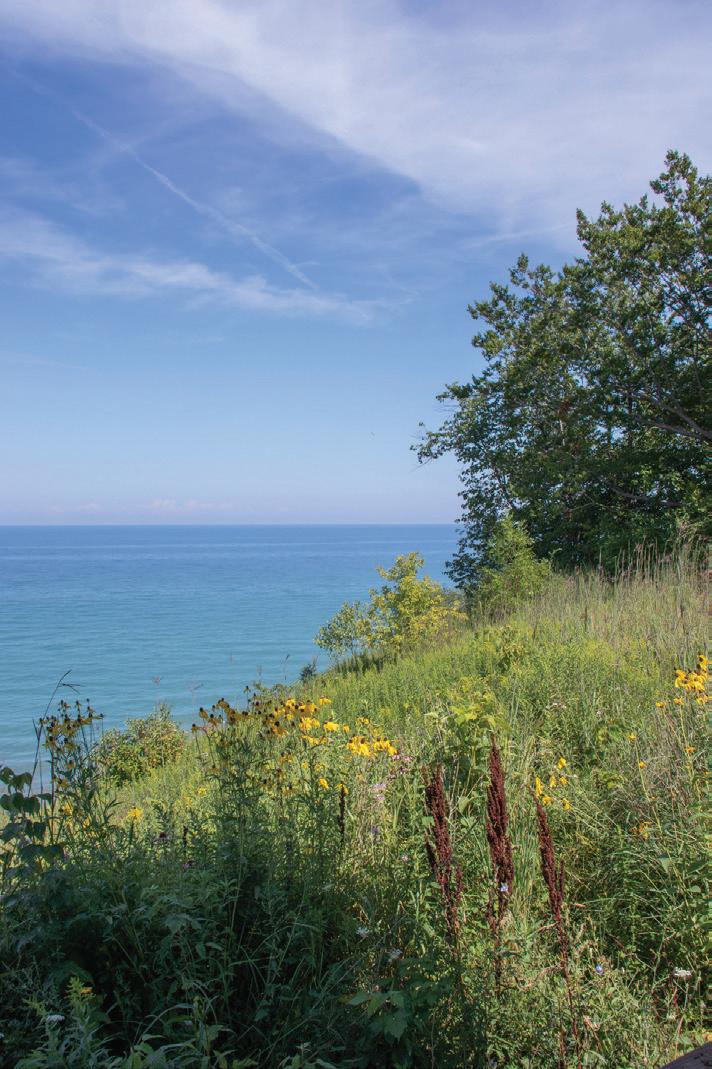
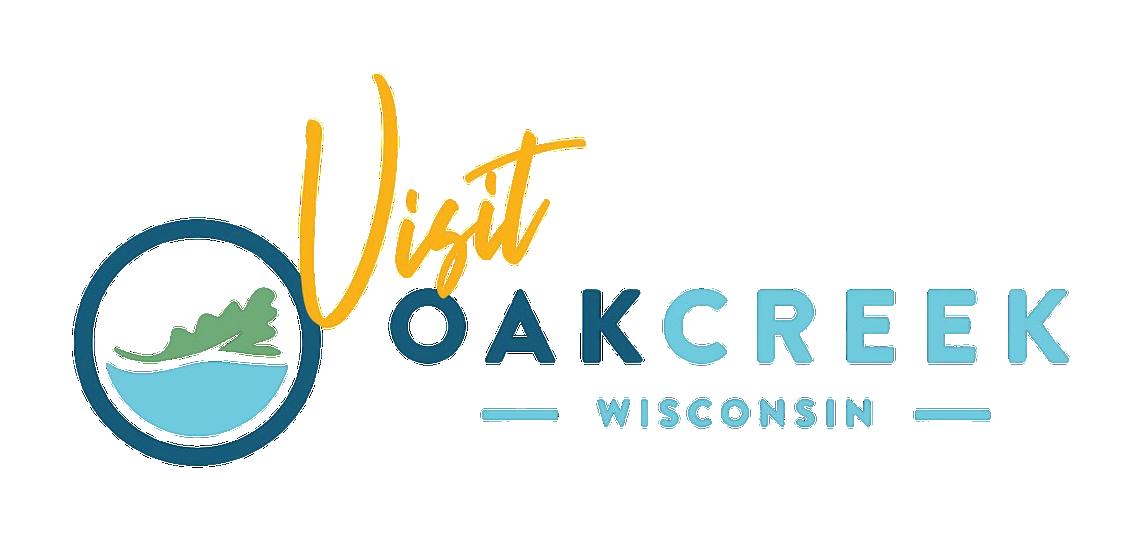
Our spaces of fer unique experiences – including in the stunning Peck Welcome Center or overlook the elephant herd in the Elephant Lof t .
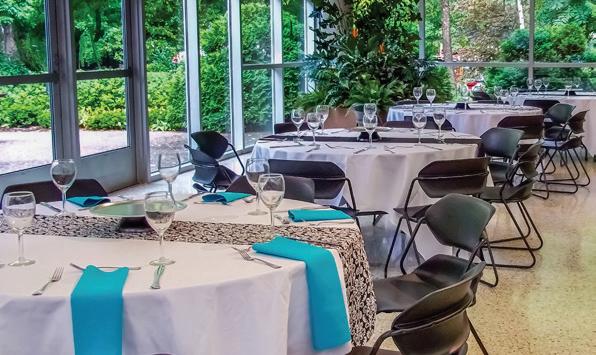
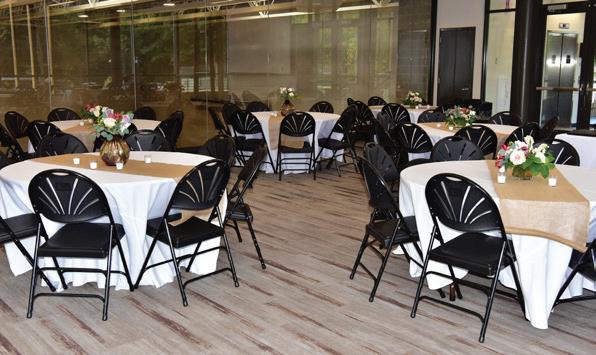
Meetings | Holiday Parties | Corporate Picnics | Groups
Venues for 20 to 10,000 guests
Convenient location
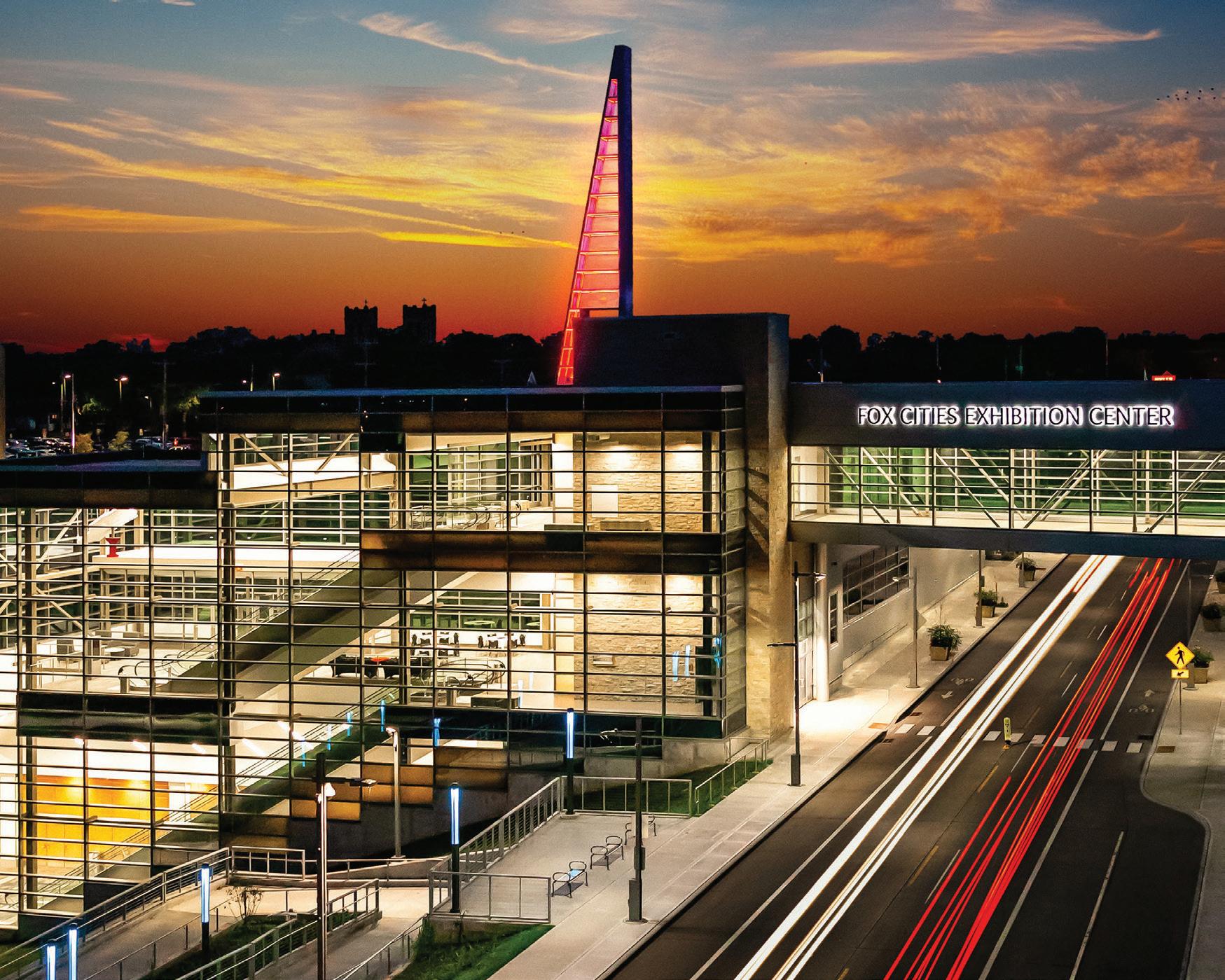
Start planning for your next meeting or event in the Fox Cities. With a wide variety of spaces and places, we have the perfect venue to inspire any group to get down to business.
Looking for a modern, state-of-the-art option with room for a crowd? Check out the Fox Cities Exhibition Center38,000 square feet of thoughtfully designed space built right into the hillside of Downtown Appleton.
Ask about our incentives starting at $1,000 for events booked and held in the Fox Cities.
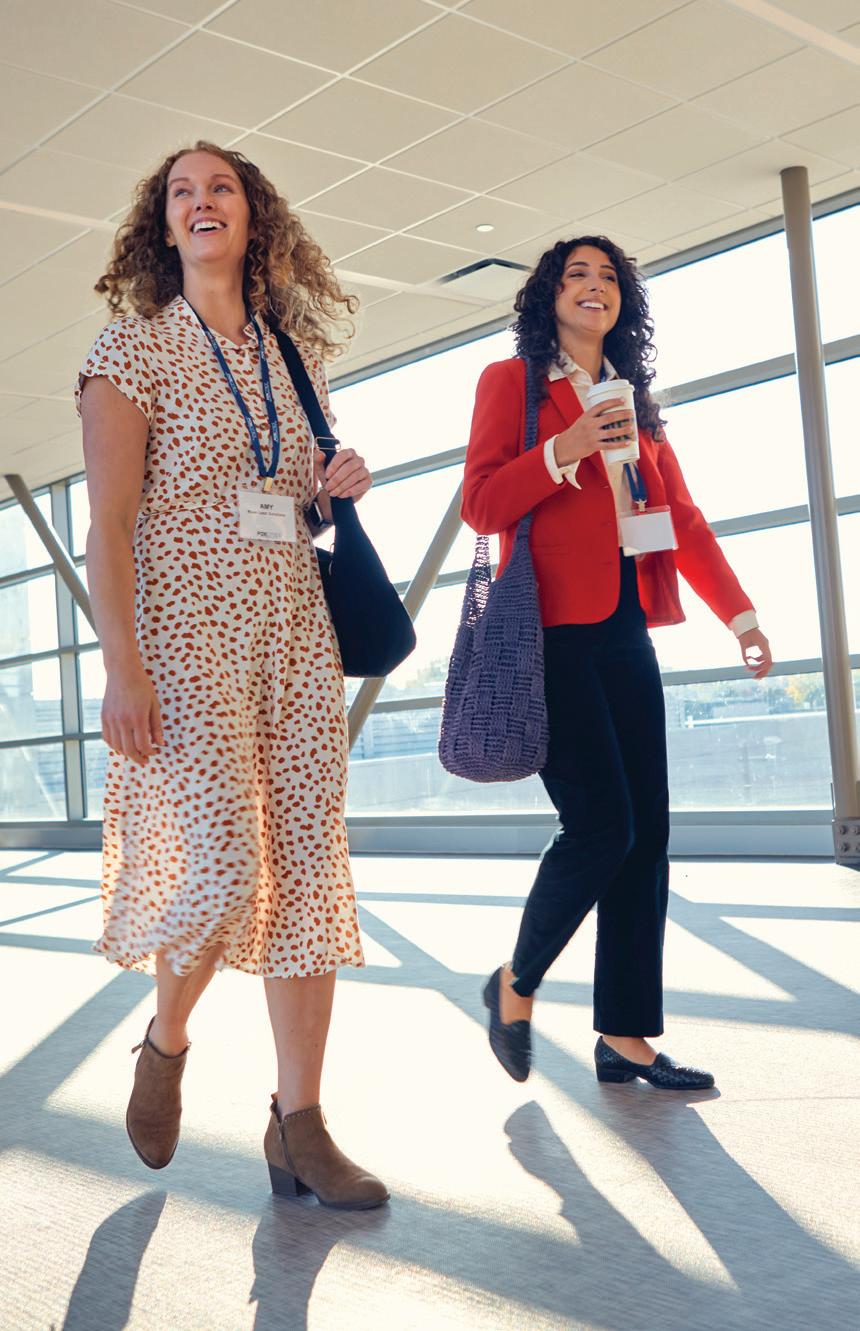

Contact Alison Hutchinson at ahutchinson@foxcities.org to plan your original event.

















